Bologna - From Tall Towers and Statues with Secrets
On a recent roadtrip to San Marino we passed Bologna, one of Italy’s largest cities and home to one of its most peculiar architectural features.
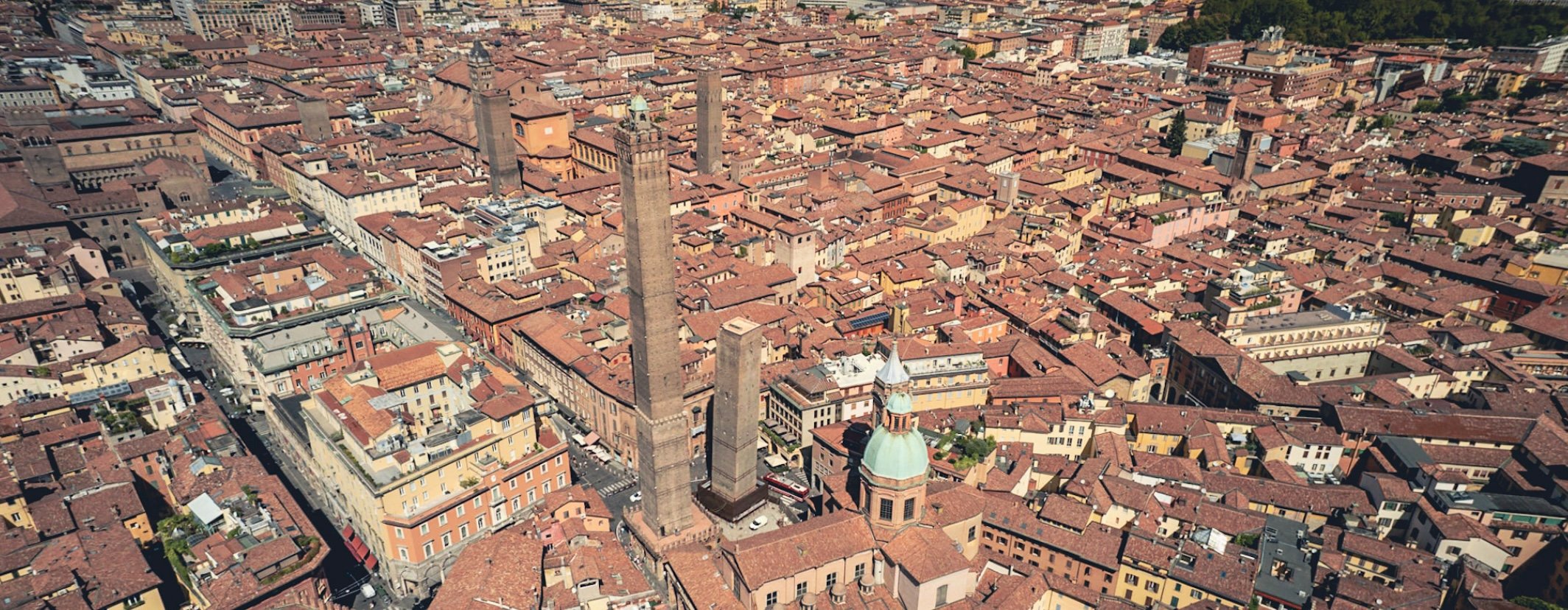
On a recent roadtrip to San Marino we passed Bologna, one of Italy’s largest cities and home to one of its most peculiar architectural features. Of course that was reason enough to take a small detour and spend a few hours in the city to document this special sight - in the process, we found another rather questionable historic remnant, read on to find out…
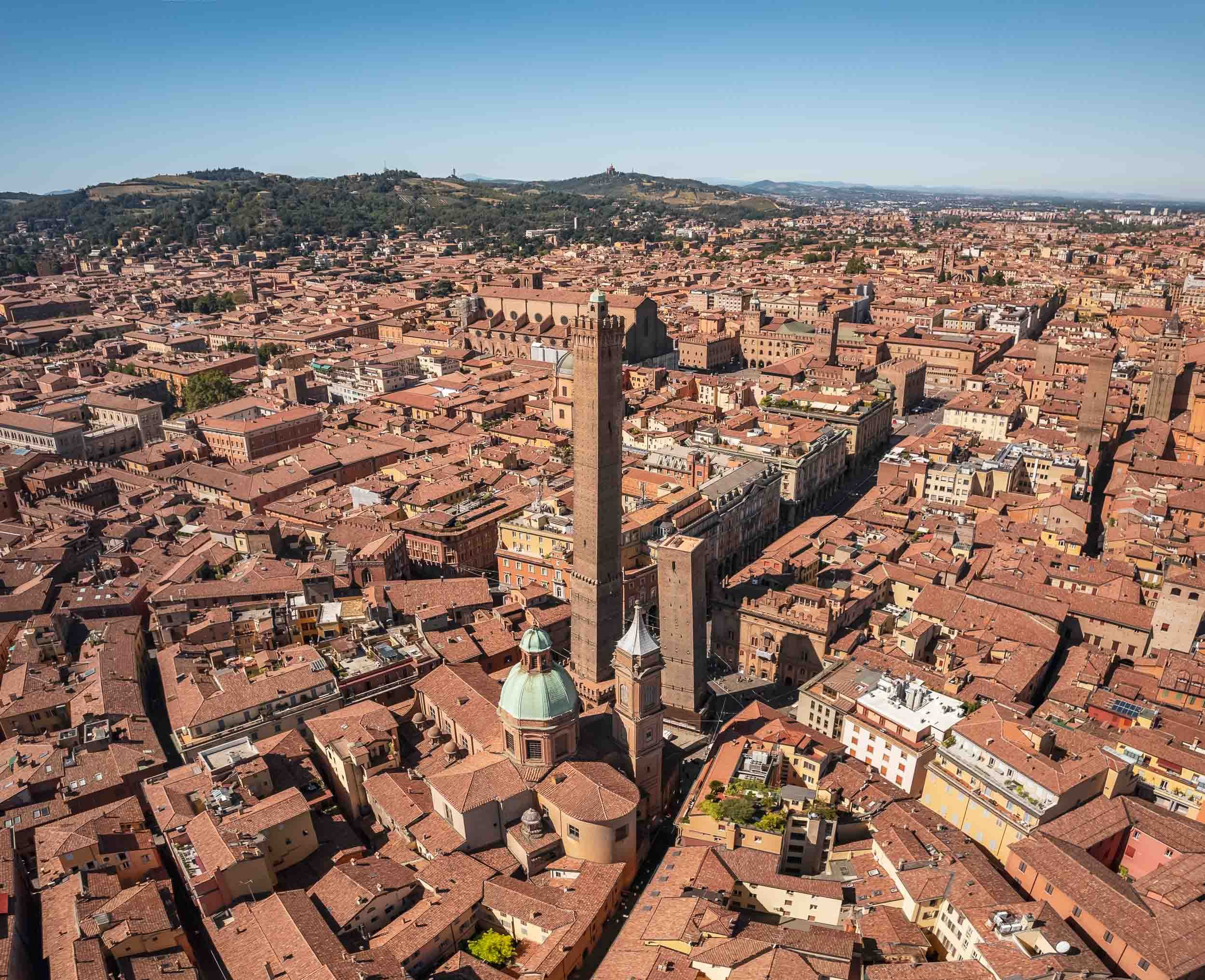
Due Torri
The most prominent feature of the city are without a doubt The Two Towers, Asinelli and Garisenda, both leaning and named after the families that constructed them in the early 12th century.
The larger of the two towers, Asinelli, is visible from many of the city’s streets at a height of almost 100m.
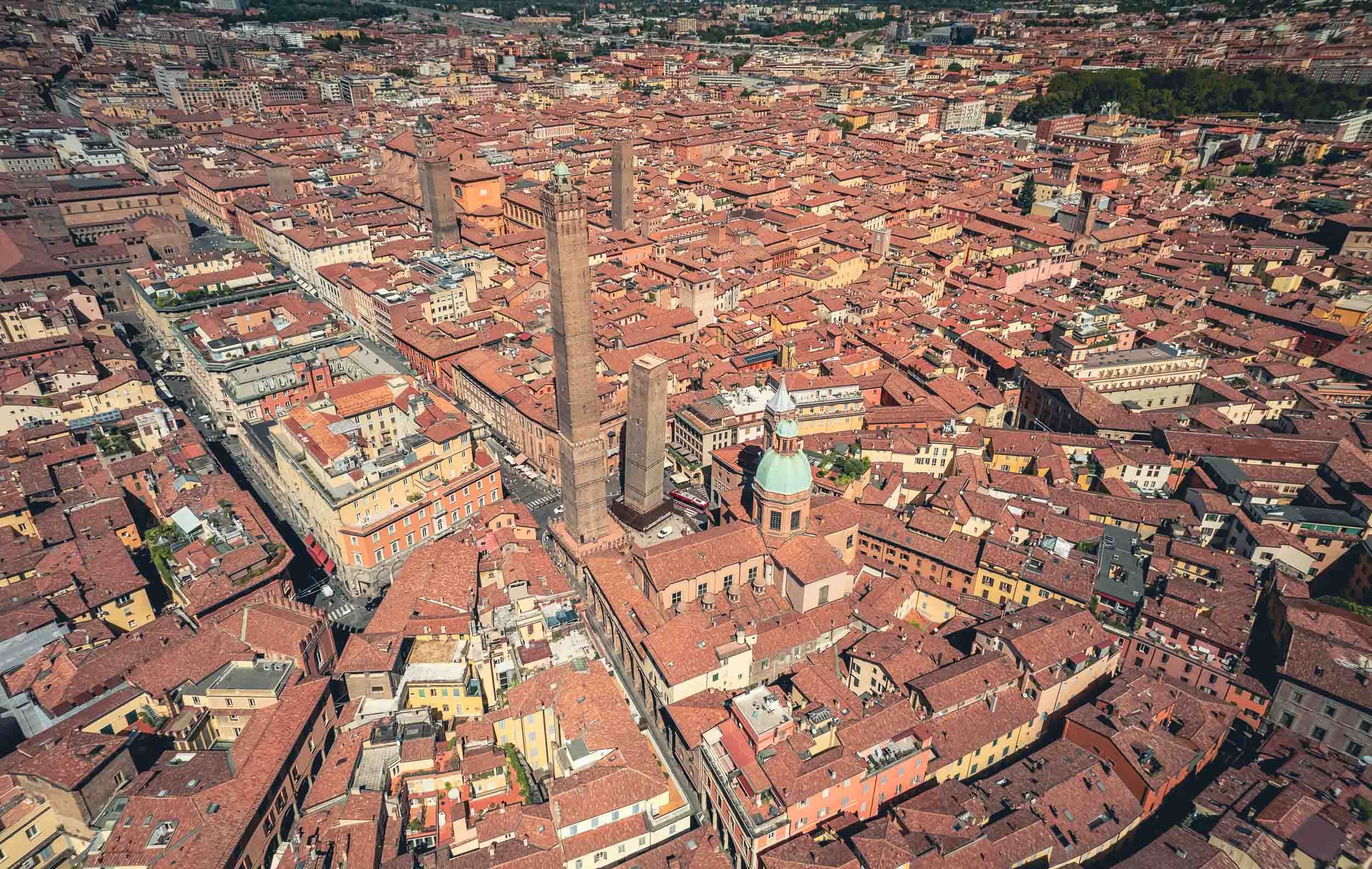
Towers of Bologna
The Two Towers are in fact not the only of the remaining skyline of ancient Bologna - there are over 20 left dotted across the city centre, some of them visible here in the upper part of the photo.
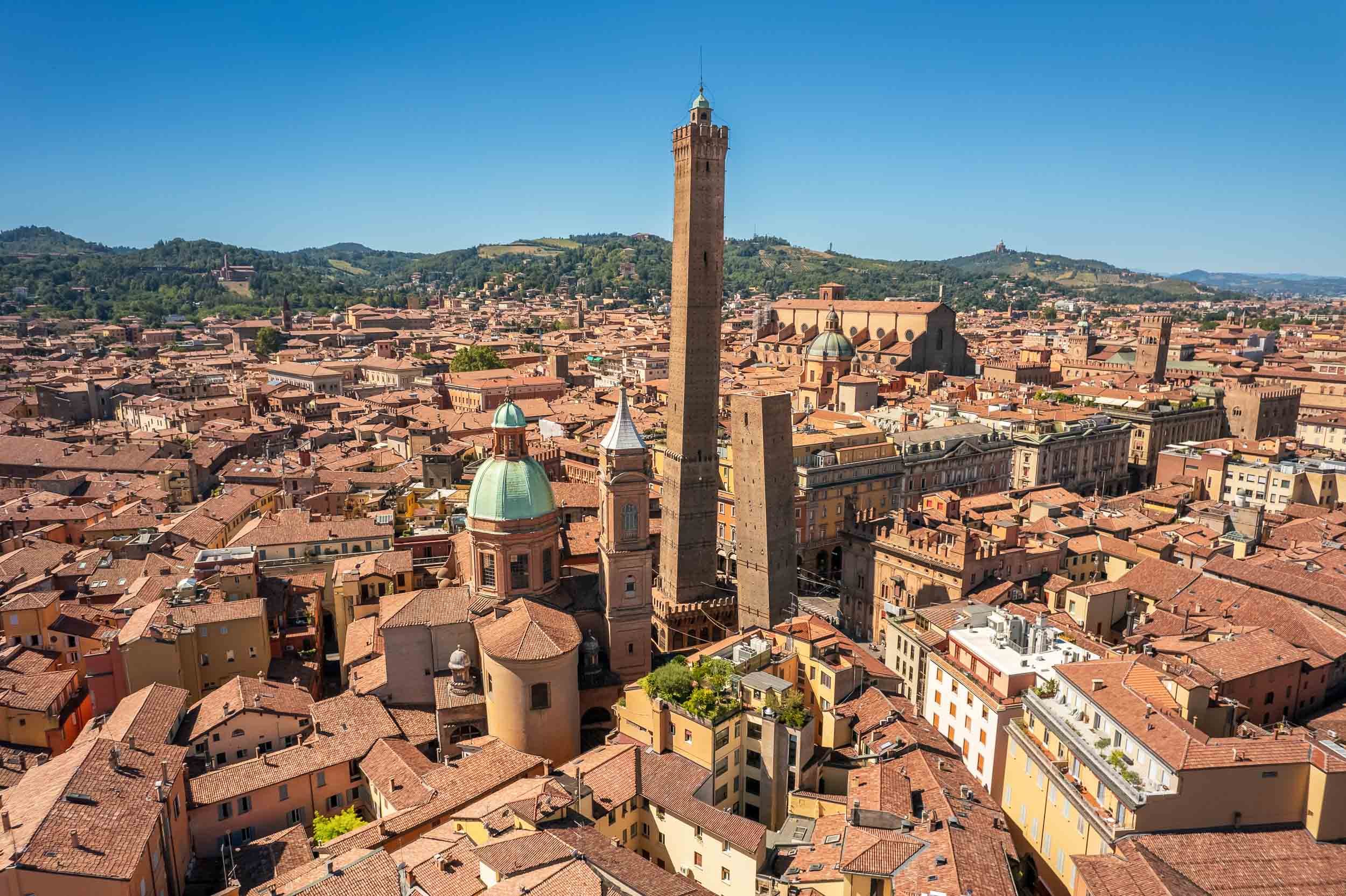
Leaning
The overhang of the taller tower is over 2m, making it lean visibly from the right angles. The Garisenda was lowered in the 14th century as it was at risk of toppling over due to the yielding ground. Restoration works are constantly ongoing.
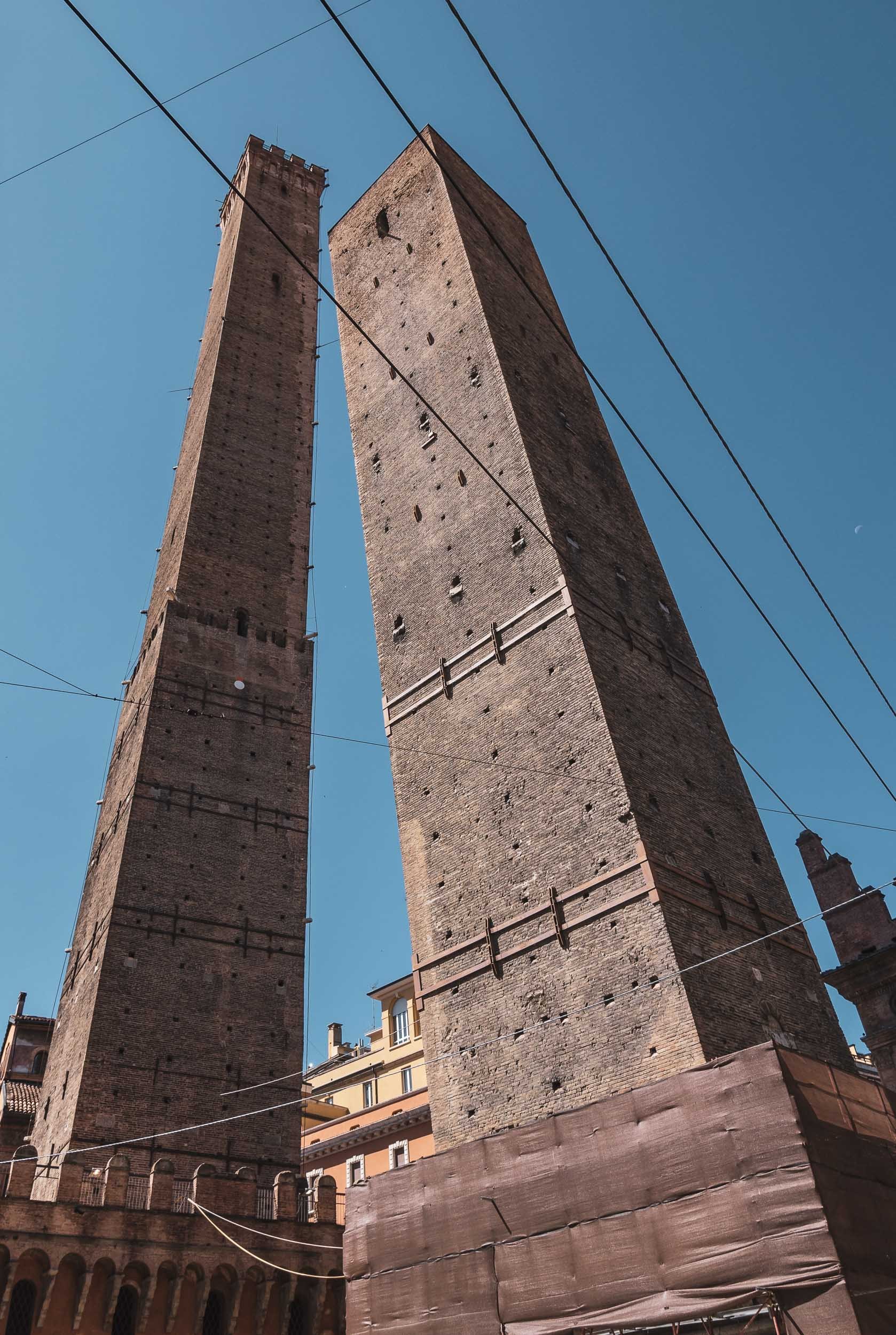
Legacy
Architect Minoru Yamasaki is thought to have been inspired by the Towers when designing the World Trade Center in NYC.
Take a flight around the towers.

Medieval Skyscraper City
It is said there were around 100 of these towers, making Bologna the skyscraper centre of the 12th and 13th century - however, little documentation from the time exists that would tell the true number. The towers are said to have been built by the richest trading families in town as offensive / defensive structures,, and were later used as prisons, residential, and city towers, while many have been destroyed over the years.
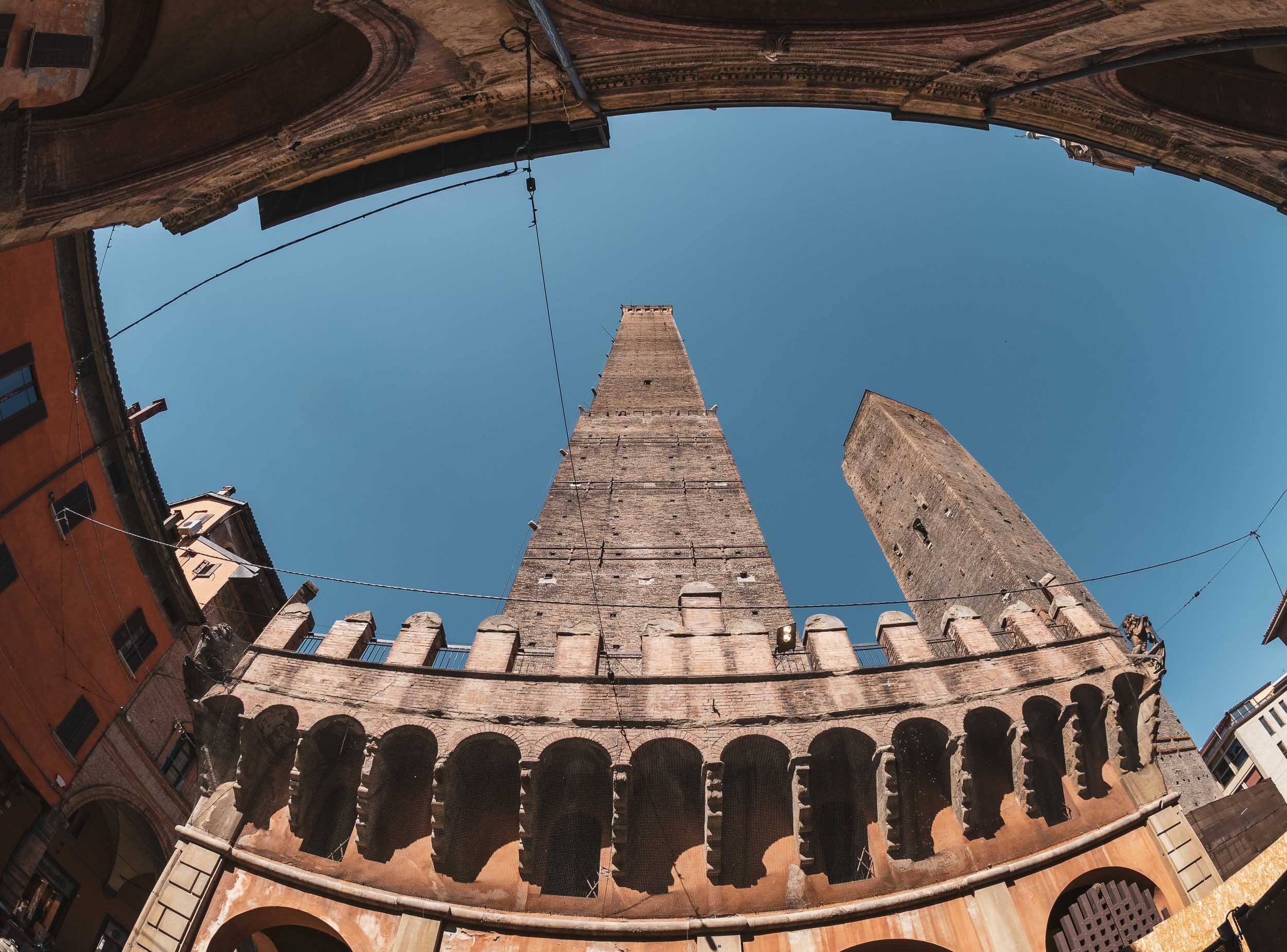
Fame
The towers have made it into many works of literature, having been mentiond by Dante and Goethe.
A Statue with a Secret
Not far from the towers and near the Basilica di San Petronio on the Piazza Maggiore you’ll find another oddity in the city - this time facing horizontal rather than vertical…
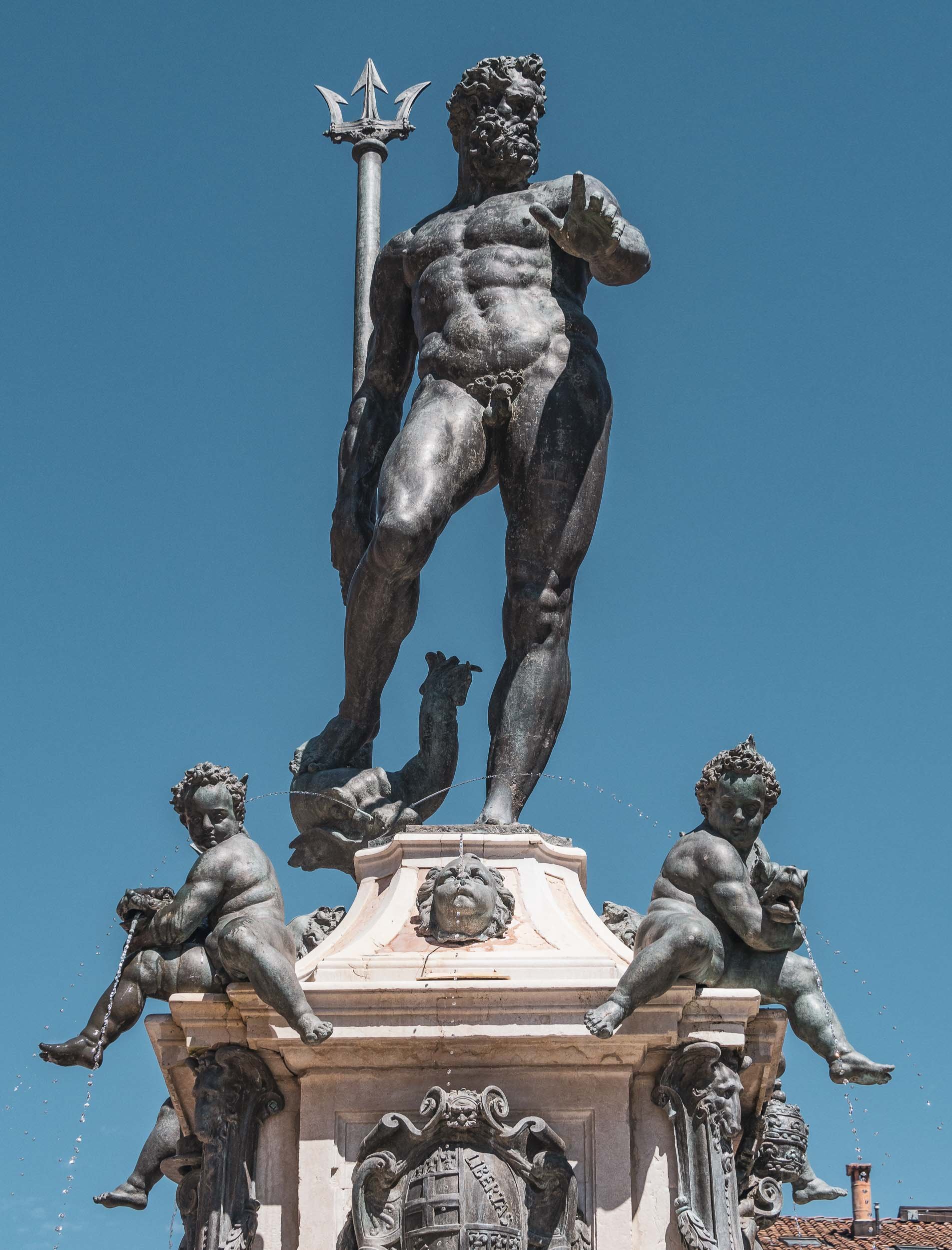
The Fountain of Neptune
When the statue of the god of the sea with his trident was constructed in the 16th century, the then Pope Pius IV, who commissioned it, was concerned by the size of the god's manliness, and instructed to reduce it accordingly.

A Different Angle
Of course the designer Giambologna had to oblige - but he found his own way to get the original vision realised, by putting Neptune's arm and hand at somewhat unusual angle, which makes more sense when viewing the fountain from a three quarter angle...
There’s a lot more to see in the city, and a return is definitely on the cards the next time I’m in the Emilia-Romagna region.
Sicily - Island of Etna
Another beautiful wedding gave me the opportunity to visit Sicily, exploring Catania, hiking Mount Etna, and wandering through Acireale. Unfortunately three days are definitely not enough for the largest island in the Mediterranean, nevertheless you get a taste for the life across the Strait of Messina.
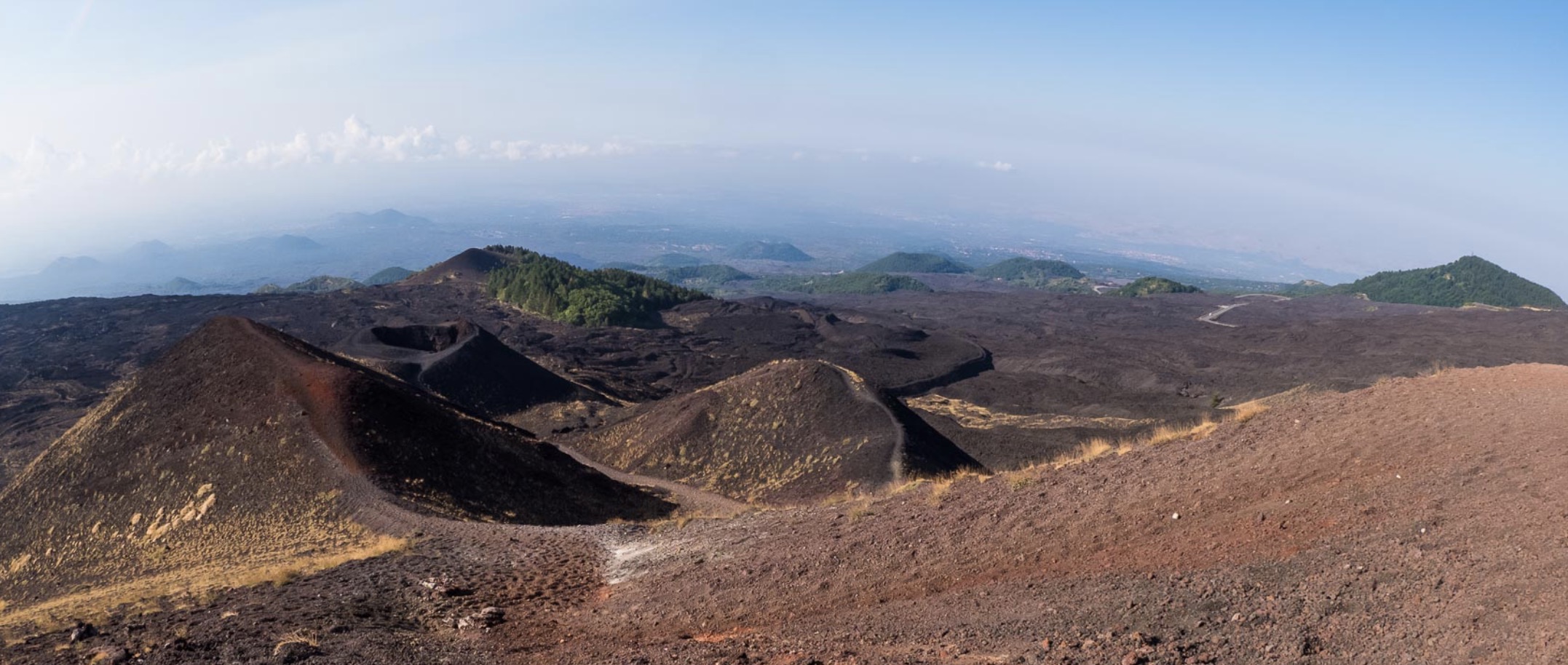
Another beautiful wedding gave me the opportunity to visit Sicily, exploring Catania, hiking Mount Etna, and wandering through Acireale. Unfortunately three days are definitely not enough for the largest island in the Mediterranean, nevertheless you get a taste for the life across the Strait of Messina.

Sicily from Above
The island is characterised by a tendency of overfarming, and by the clouds hanging over the Etna, often accompanied by a thin layer of dark smoke from the volcano.
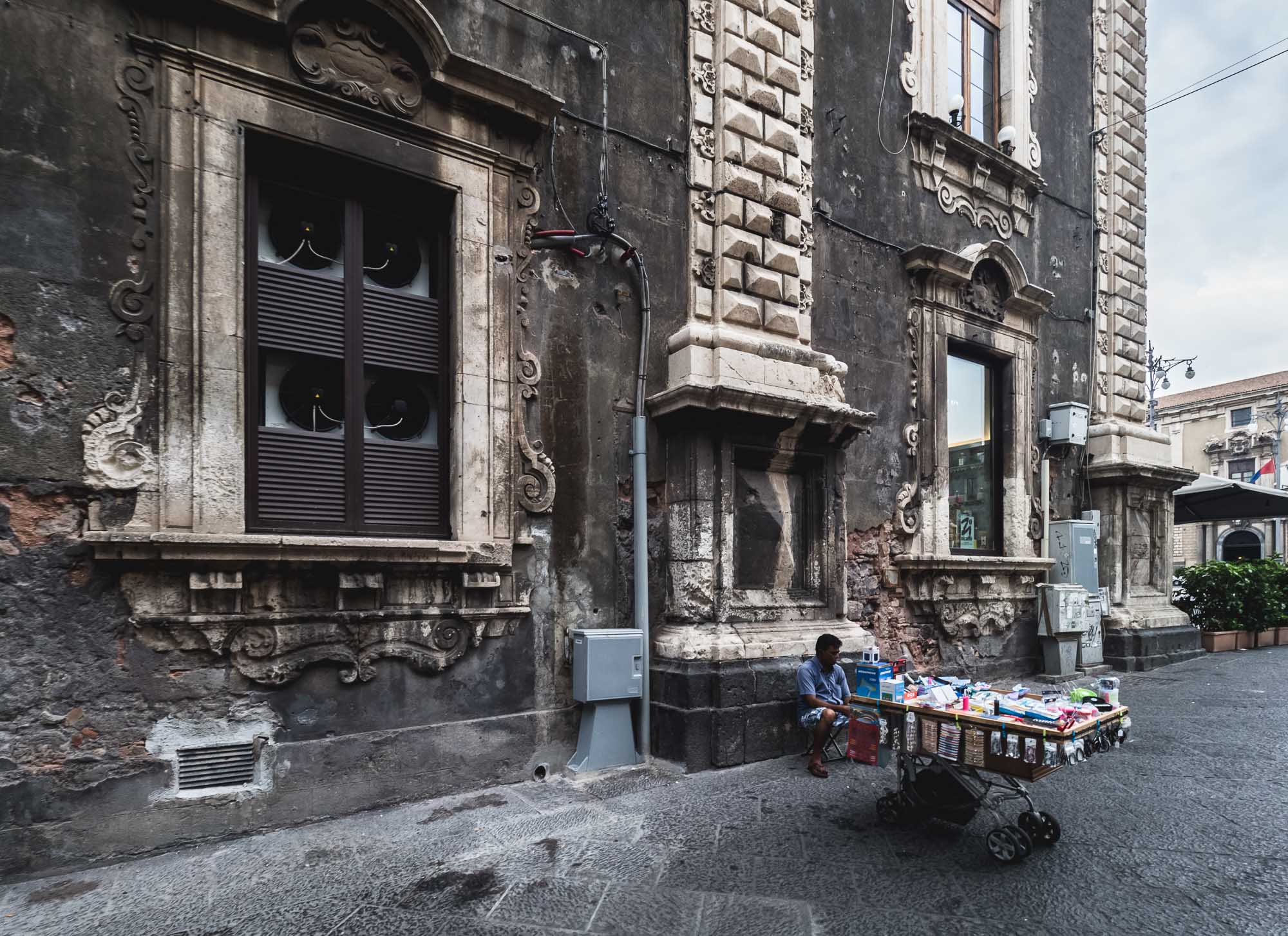
For Sale
A salesman with his goods near the main Piazza in Catania.
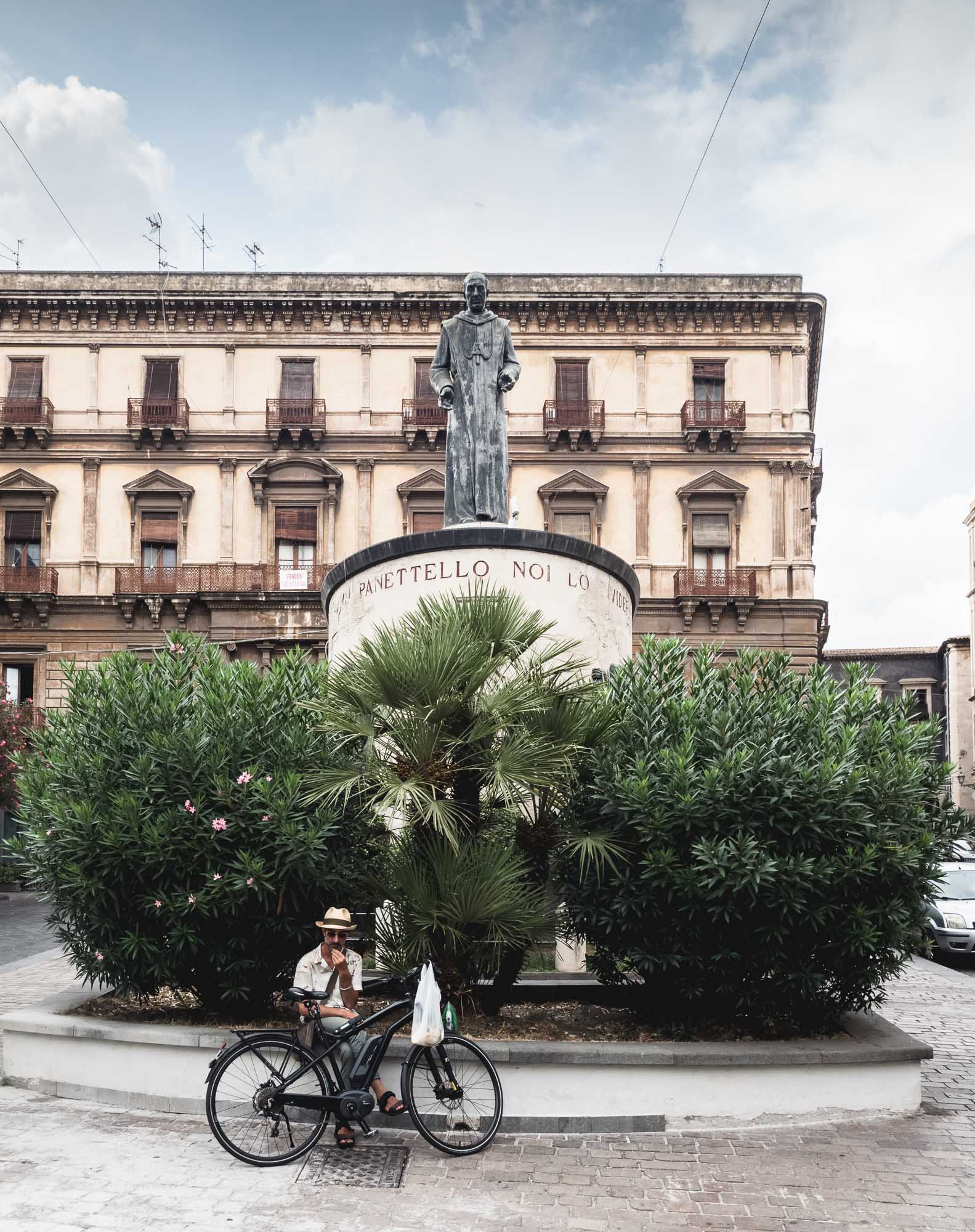
Piazza San Francesco d'Assisi
A man sitting in front of the Monumento al Cardinale Dusmet in Catania.

Roman Theatre of Catania
The theatre and Odeon were built on a pre-existing Greek structure. The lower part has sunk due to various eruptions and earthquakes, resulting in the city's underground Amenano river running through part of the center area.
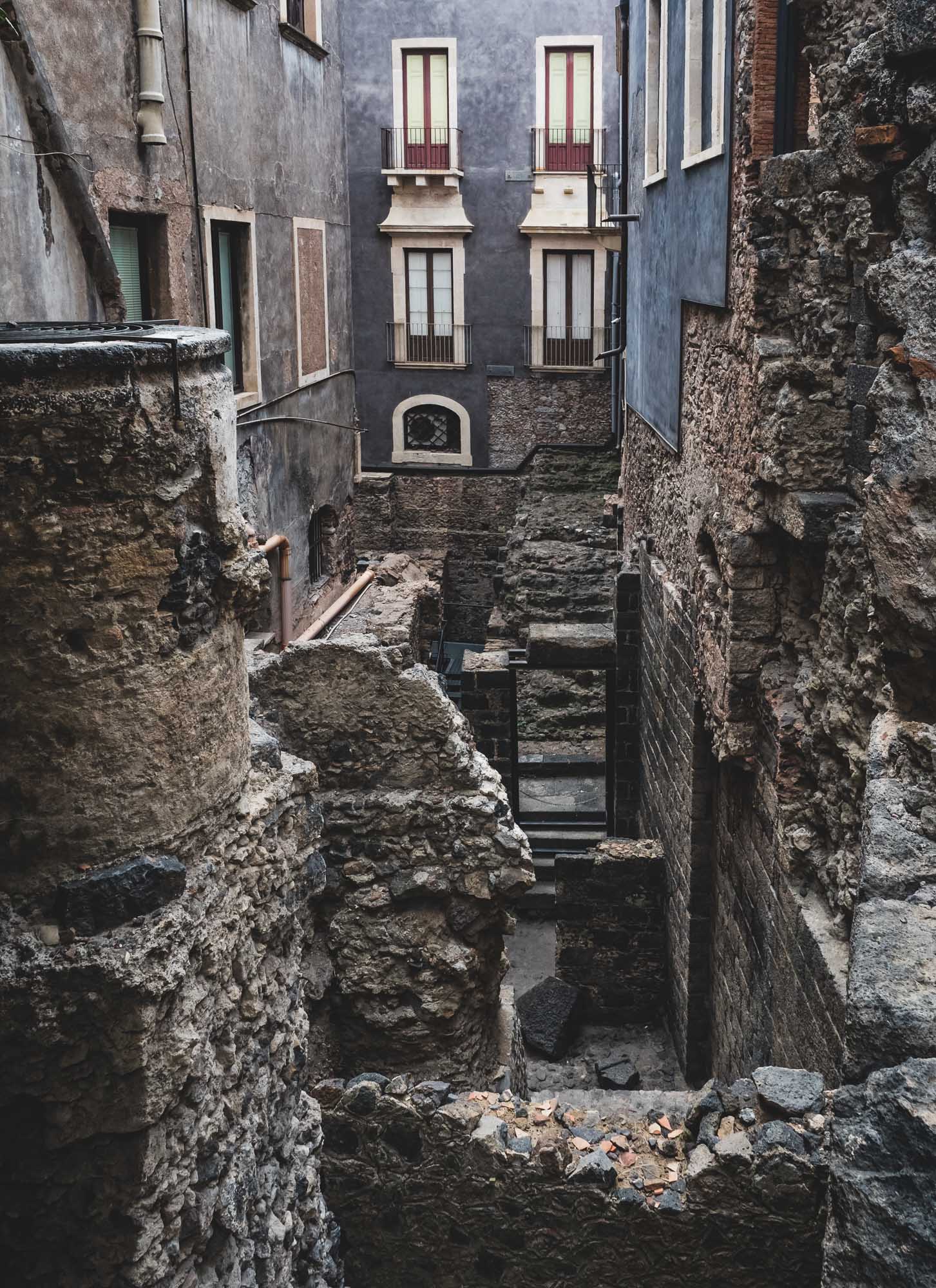
Above History
This photo shows how modern houses had been built on top of the structure of the Roman Theatre in the last few hundred years.

Layers
This aerial capture illustrates how the site looked before excavations began and the houses built on top of the amphiteatre were removed. Even today, archeologists still discover additional sections and artifacts below and around the site.
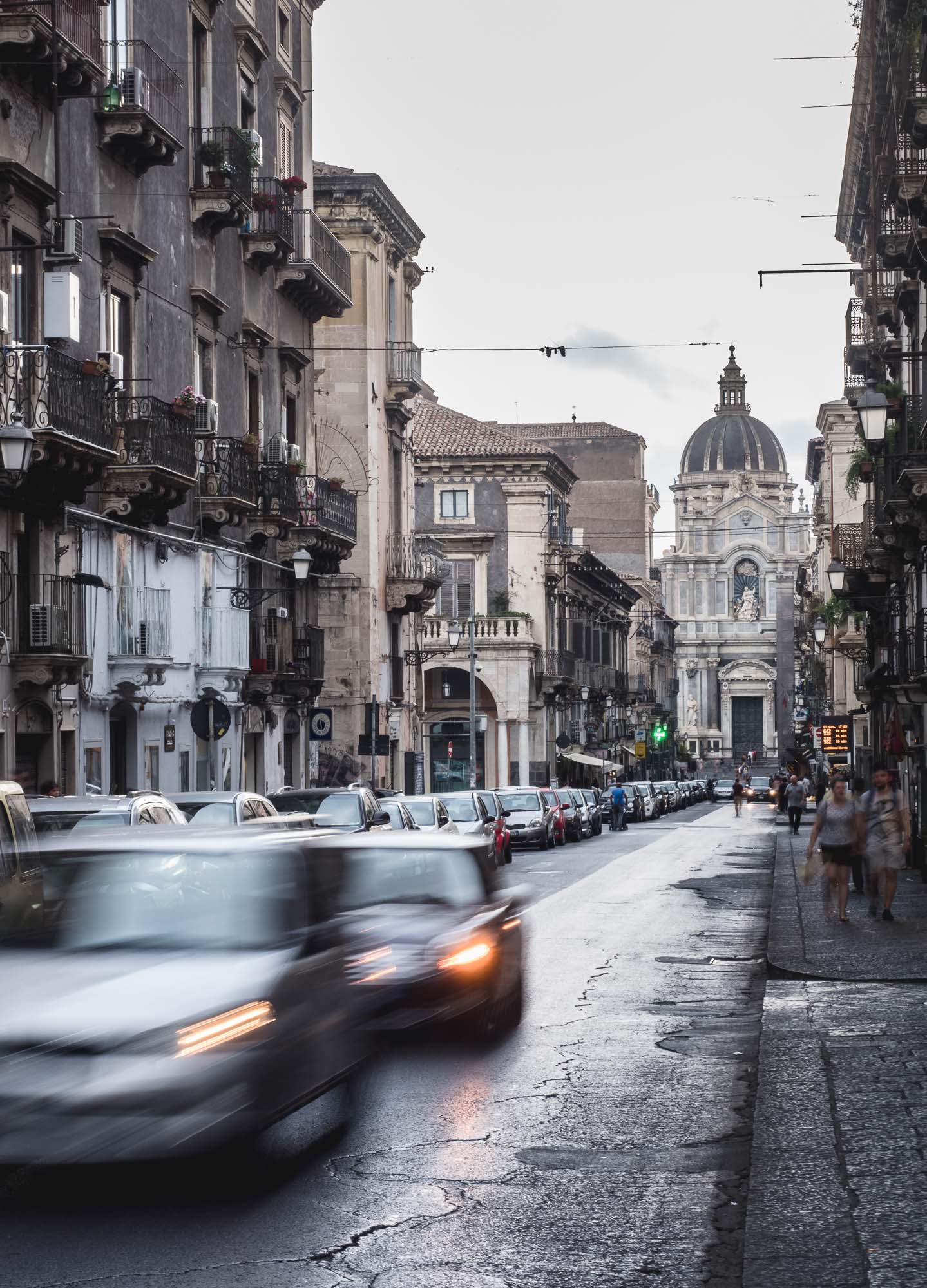
Street Views
The Cathedral of Saint Agatha at the end of Via Giuseppe Garibaldi.

18th Century Violine
On display at the Castello Ursino.

Artifacts
The 13th-century castle features objects from monastery & painted crafts.
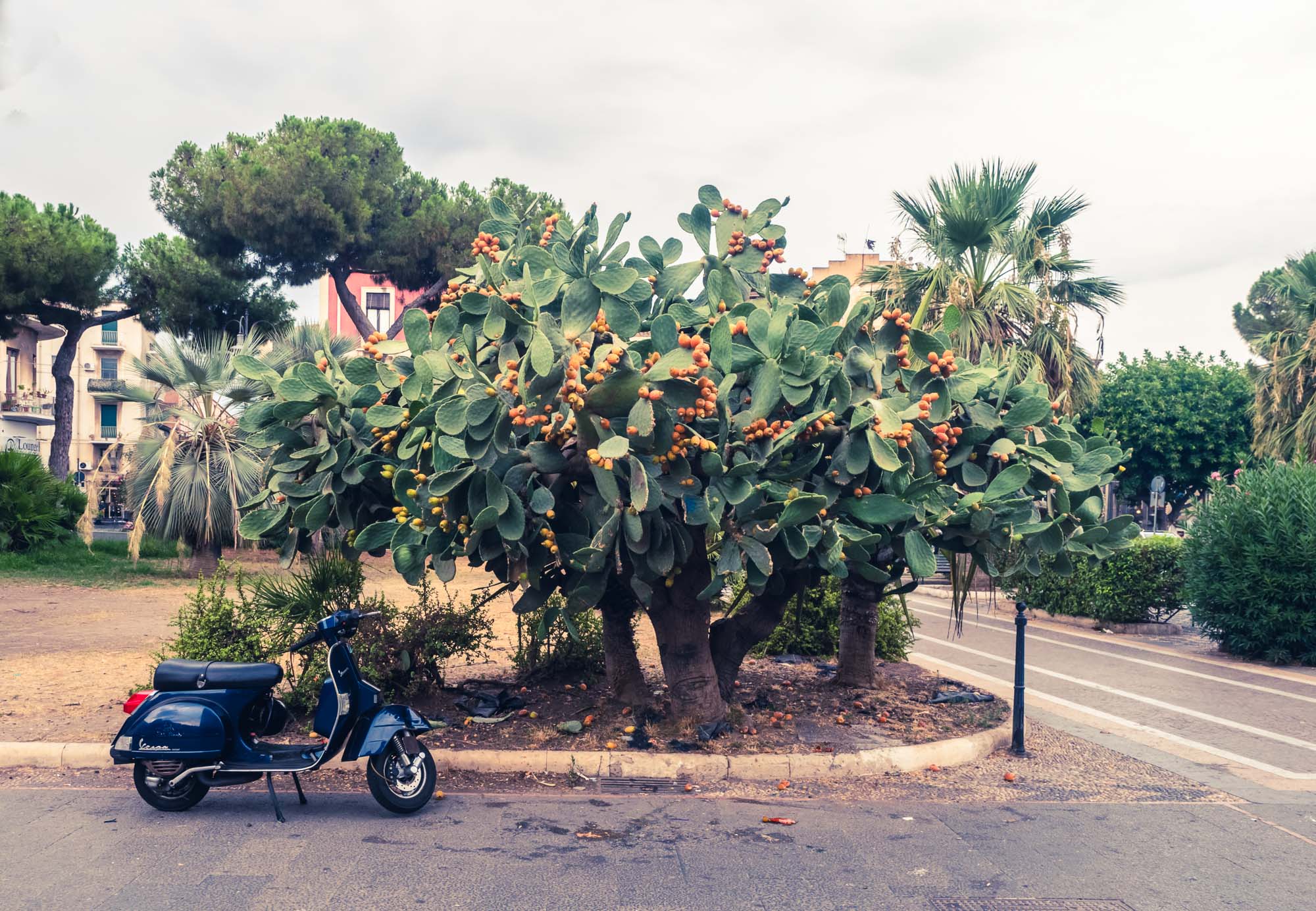
Scenery
A street corner in Catania.
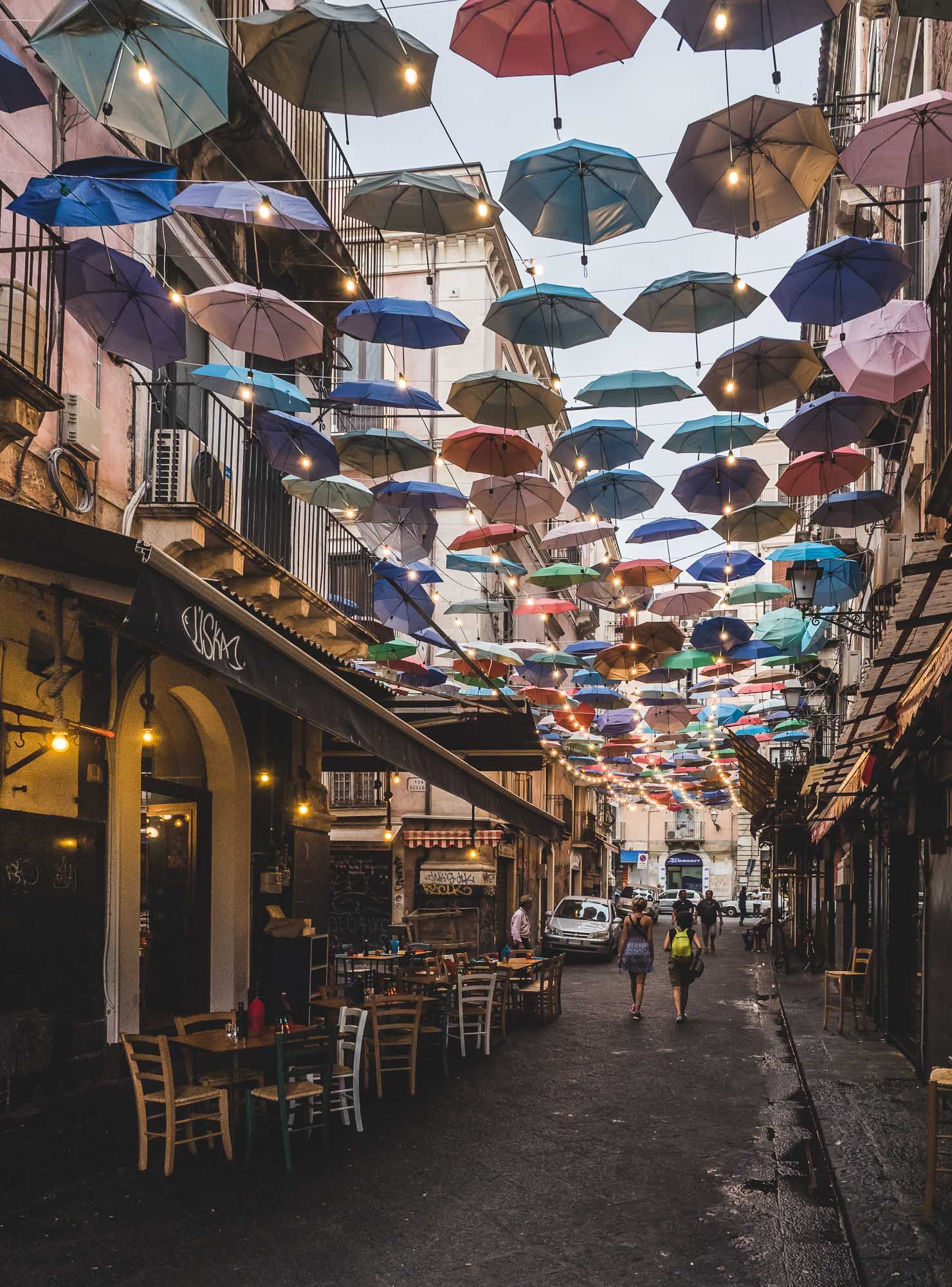
Closing Up
The market street after the activities of the day have ceased.
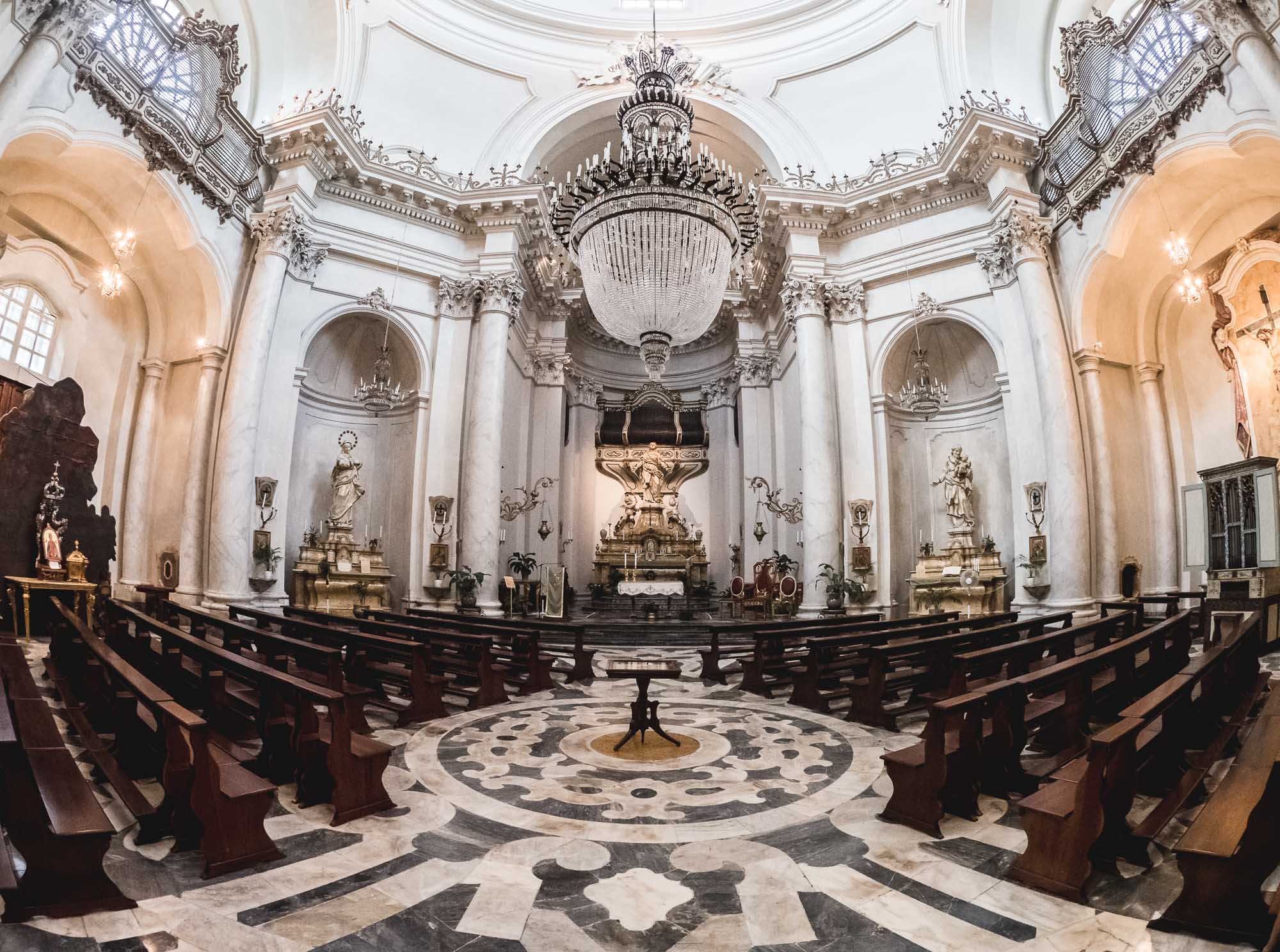
Church of the Abbey of Saint Agatha
The interior of the church with its baroque style, common in Sicily's churches.
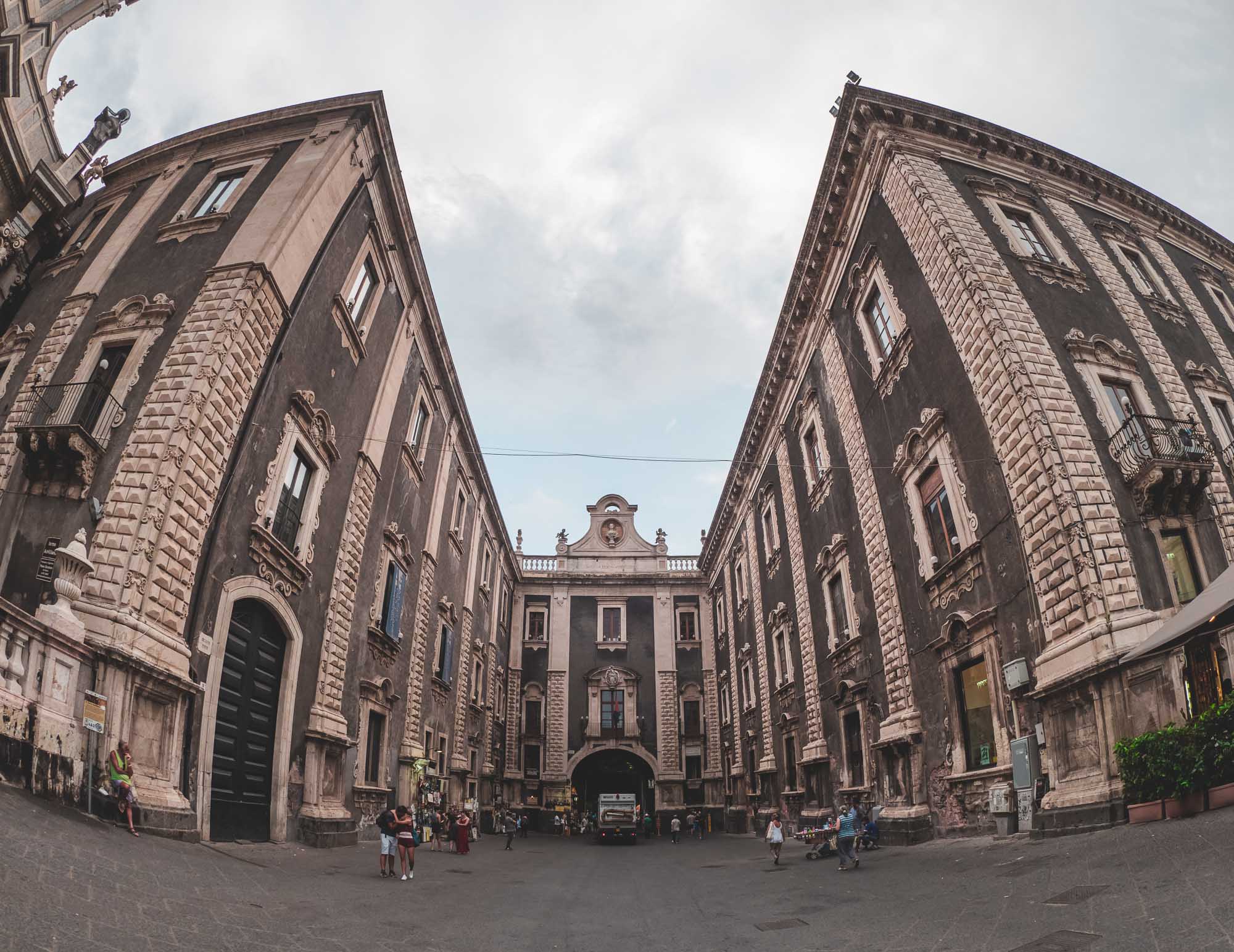
Porta Uzeda
The gate from 1695 built in typical Catanian baroque style acts as the entrance to the main Piazza.
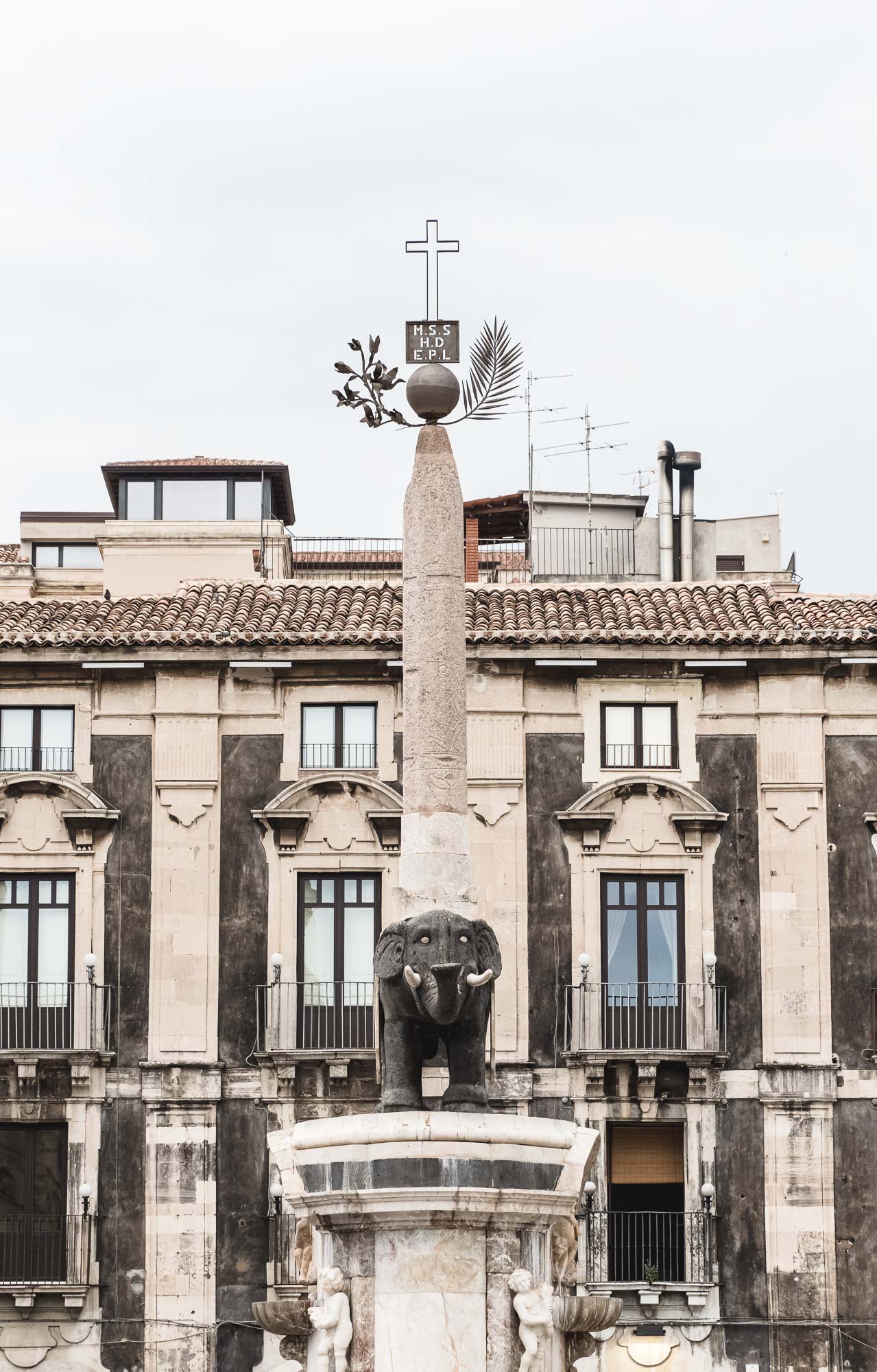
Fontana dell'Elefant
The fountain with a Roman statue of an elephant carved from basalt, now the symbol of the city. The origins of the symbolism aren't clearly defined, with several tales competing for the truth...
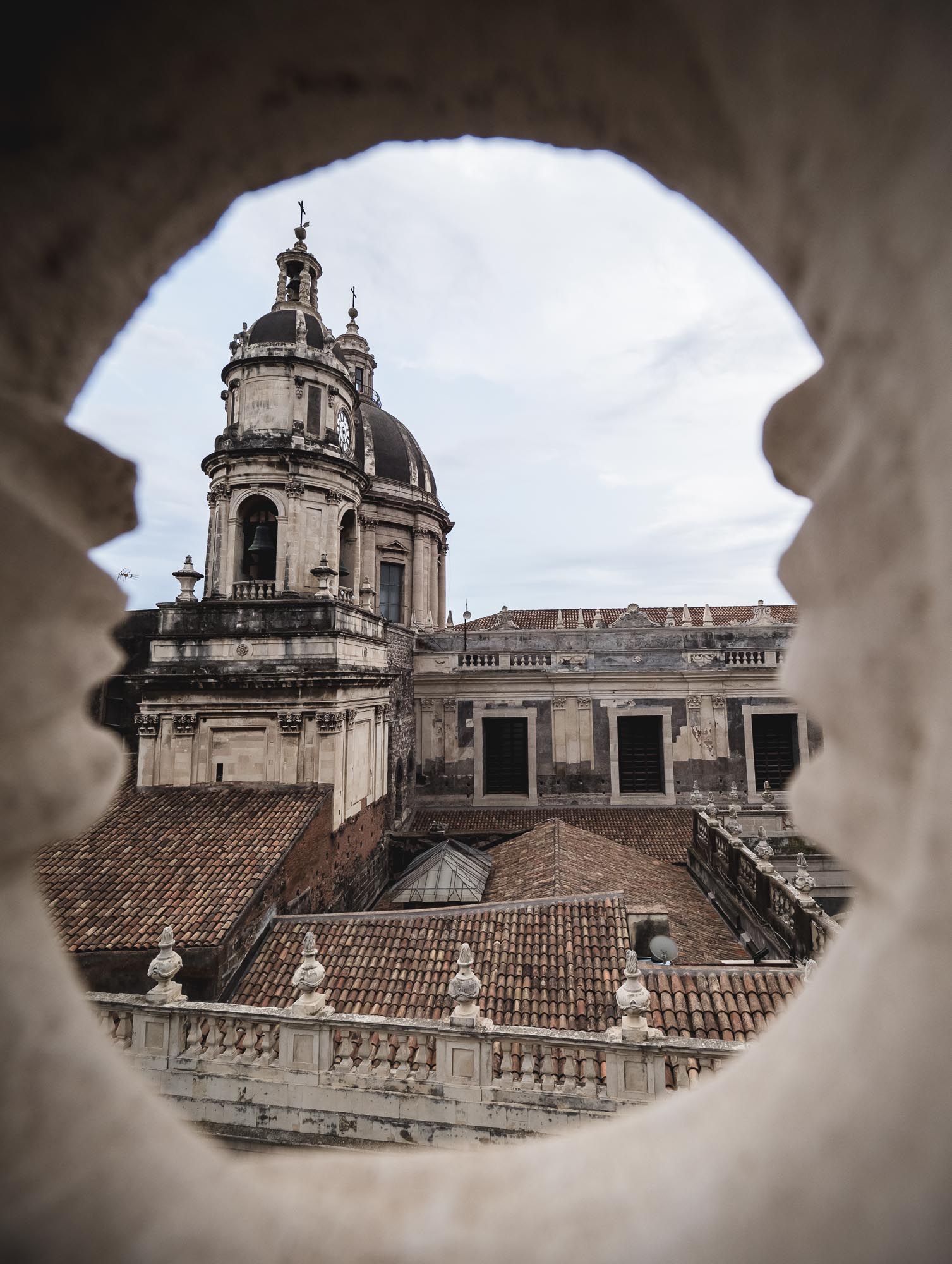
Roof Structures
The domed roof of the Cathedral of Saint Agatha seen from Church of the Abbey of Saint Agatha's roof.
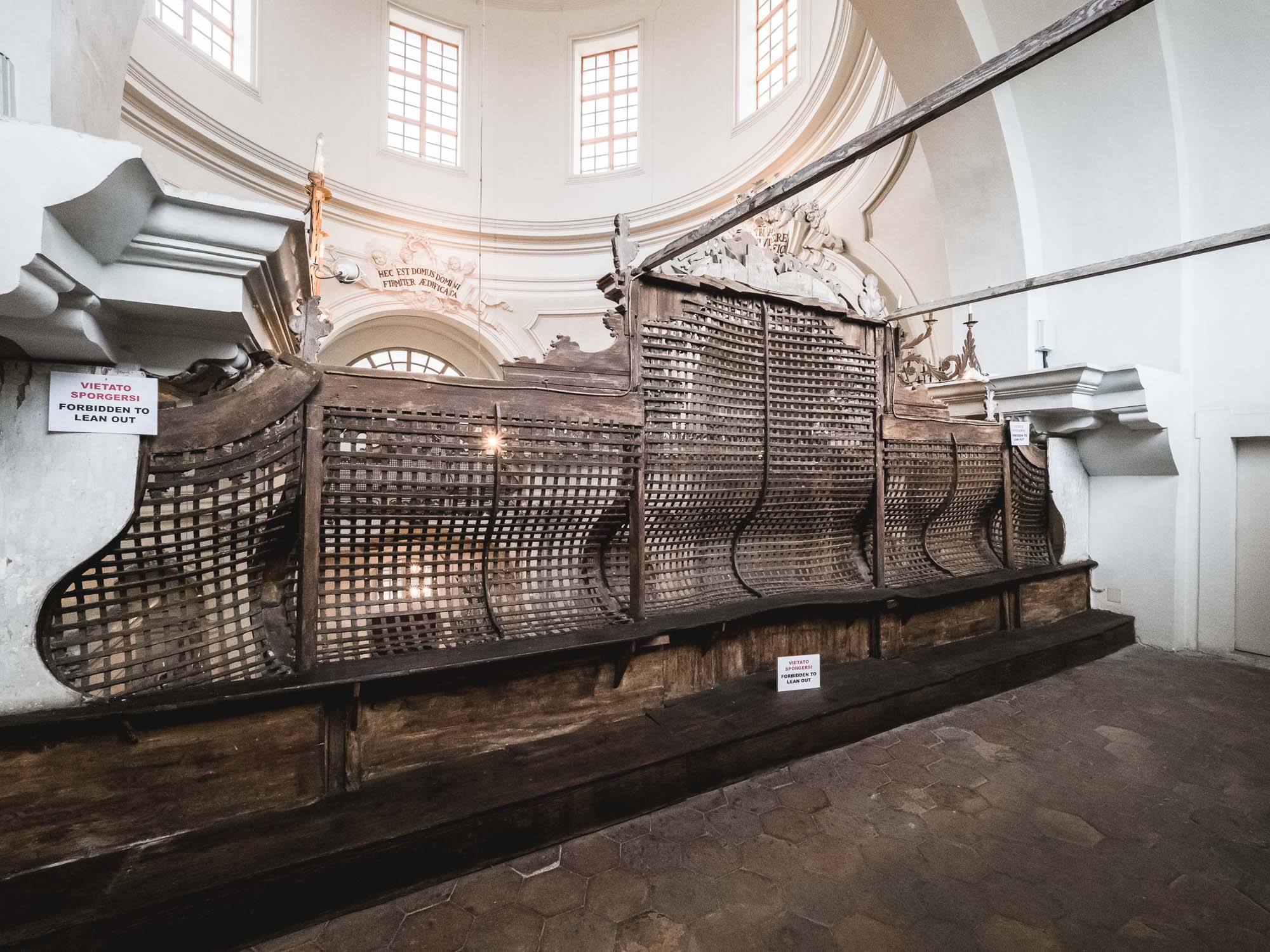
Fragile
A behind the scene view of the decorative elements of the church shows how intricate some of the work is.
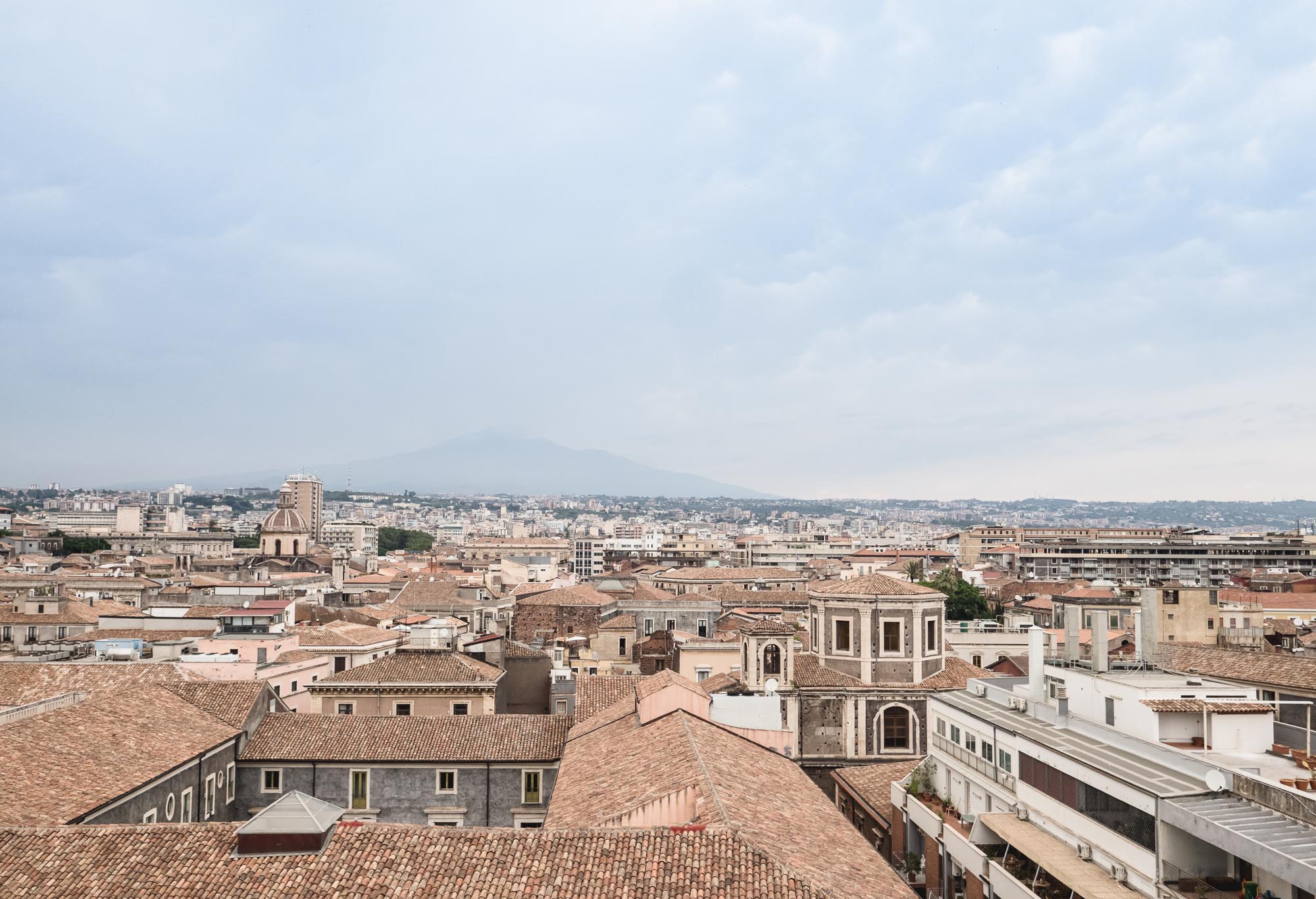
Catania Views
The church allows visitors to climb the roof level, providing a view over Catania with the Etna in the background.
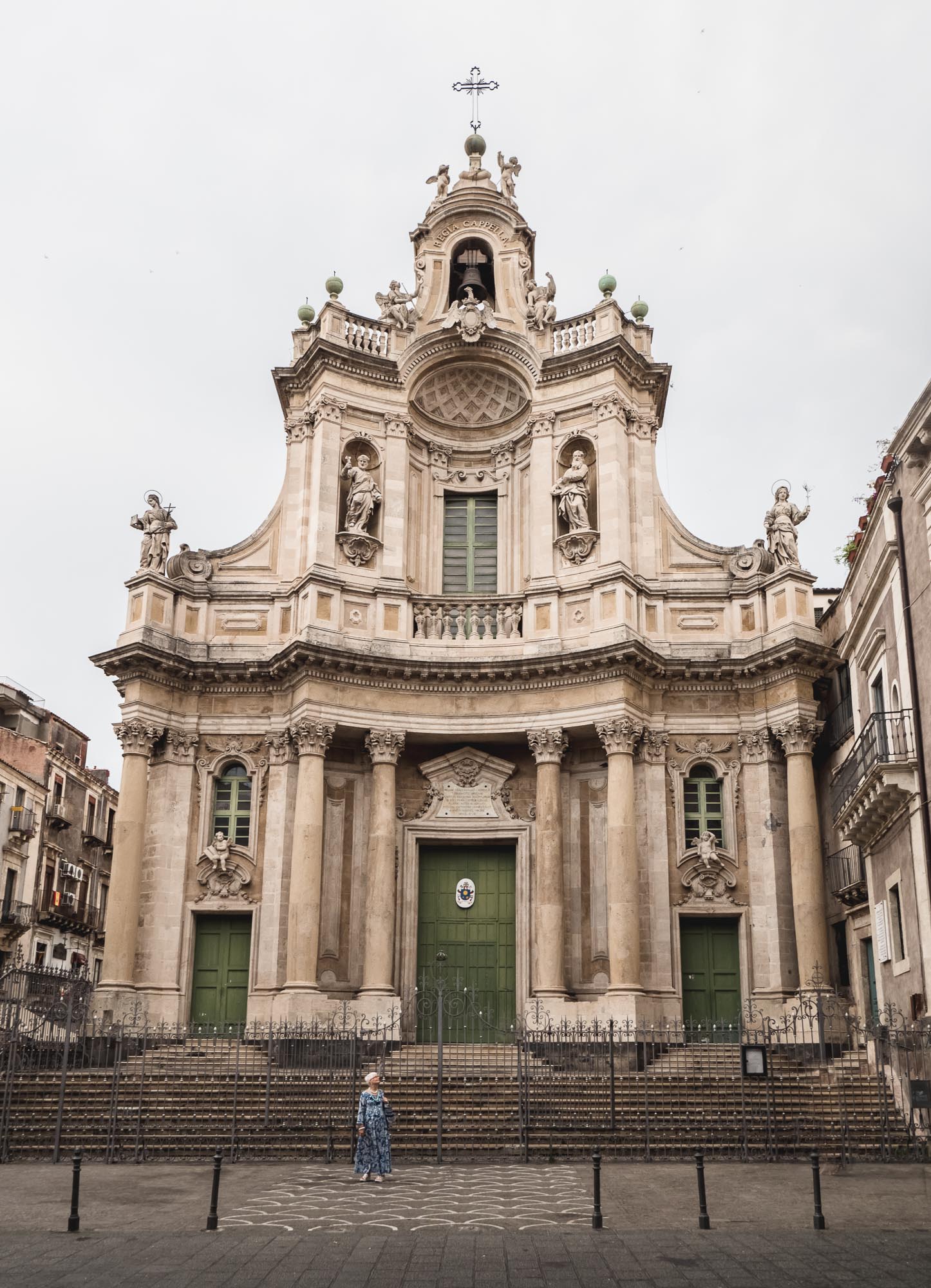
Facade
A woman looking at front of the Basilica della Collegiata from 1768.
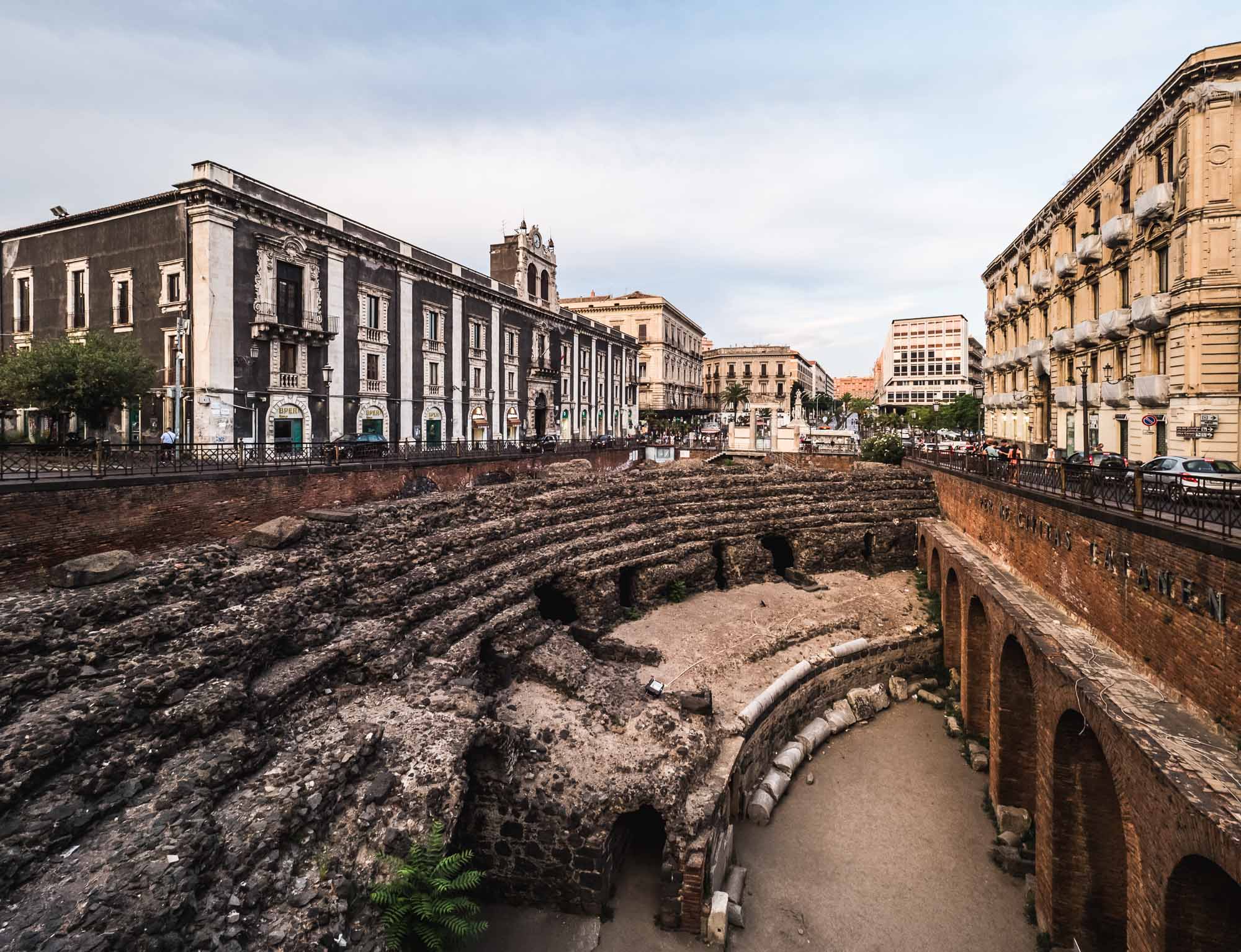
Roman Amphiteatre
The 2nd century AD arena was one of the largest in the Roman empire, but only a tenth or so is visible and excavated today.
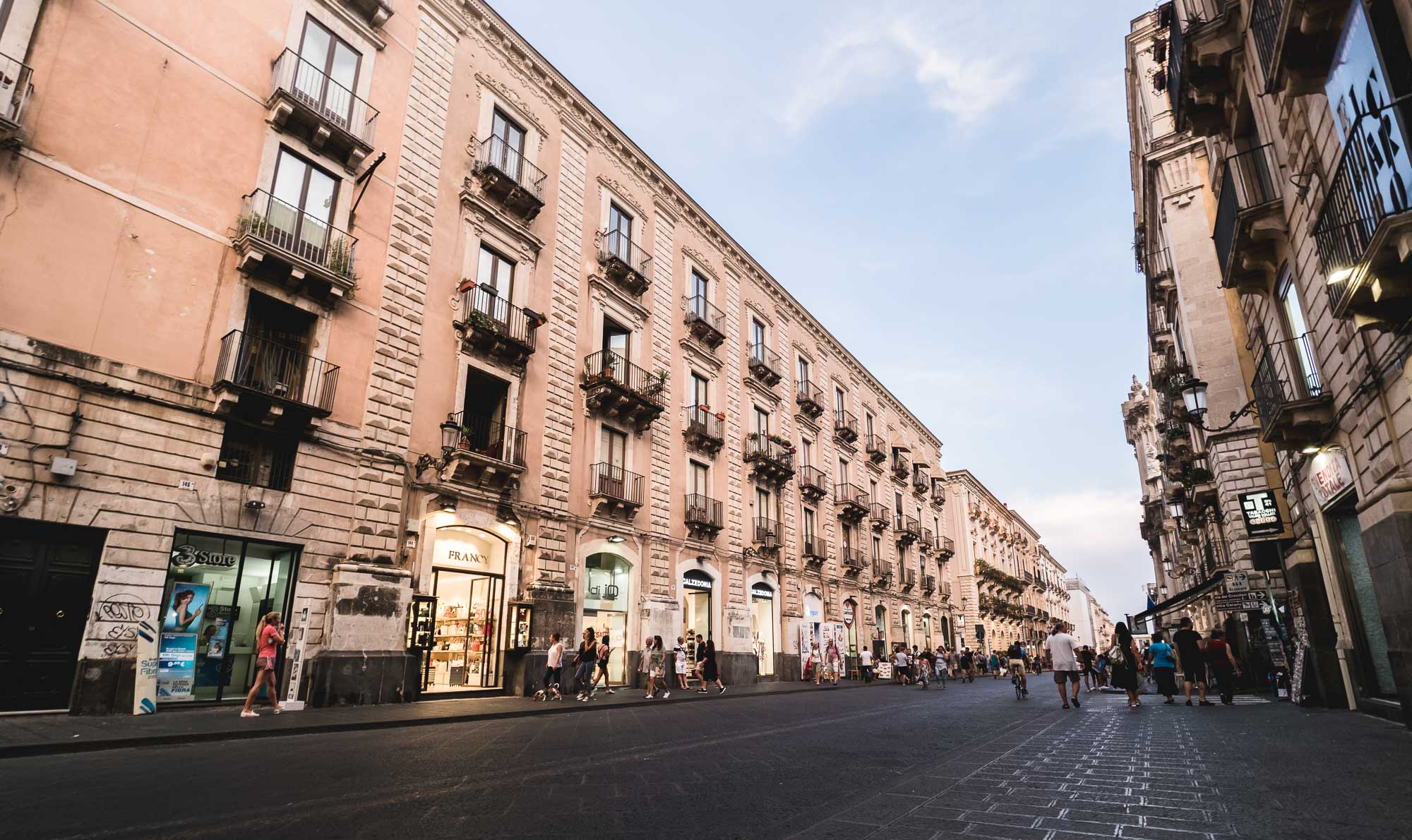
Via Etna
One of Catania's central roads.

Downwards
A narrow angled street in Catania lined with blossoming trees.

Sunset Skies
The front of the Church of St. Francis of Assisi.

Business
A group of Indian sales men and their starry balloons in front of the Cathedral of St Agatha.
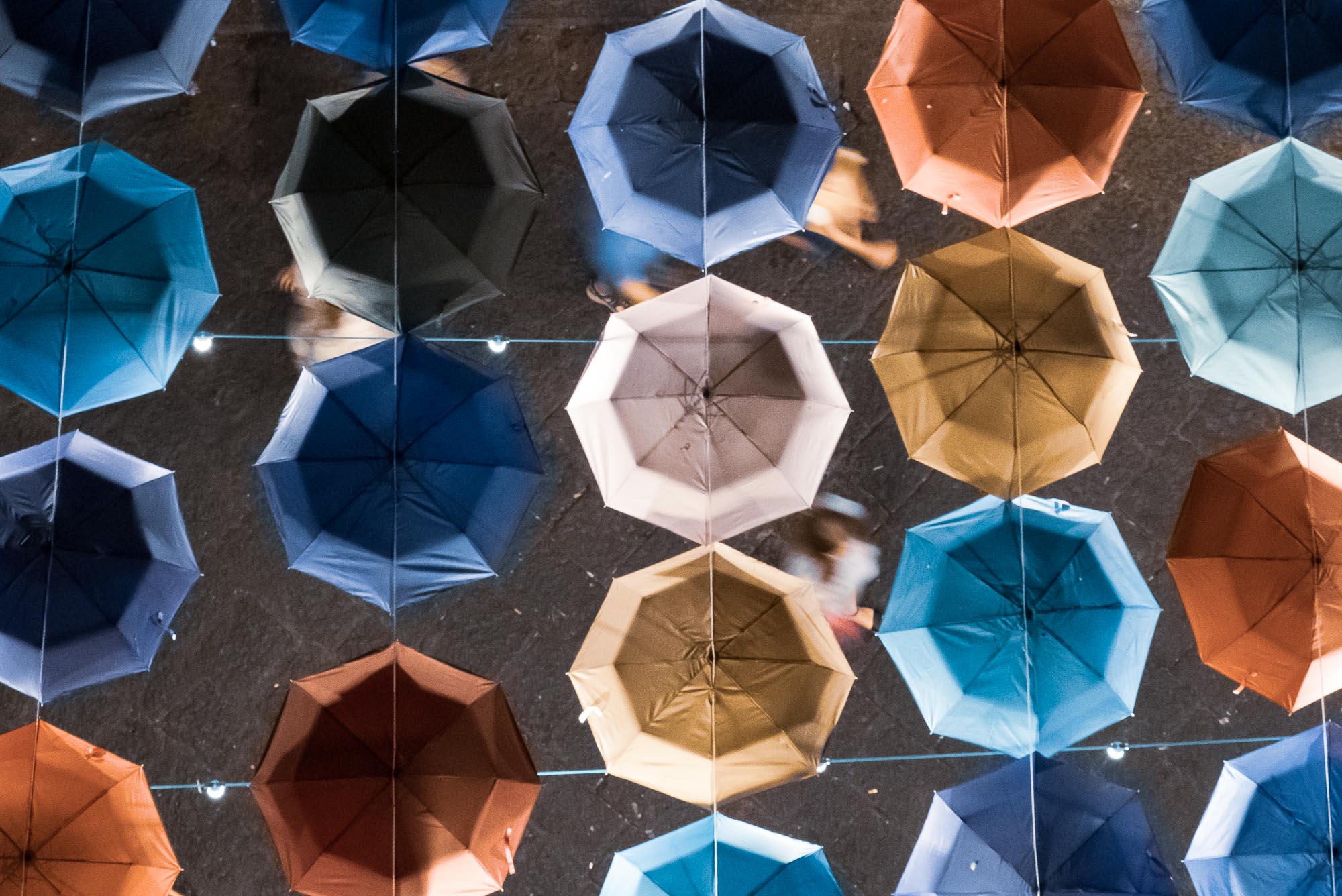
Birds Eye
People walking below the umbrellas hanging above the market street in Catania.

Musical
A singer in Catania's main square.
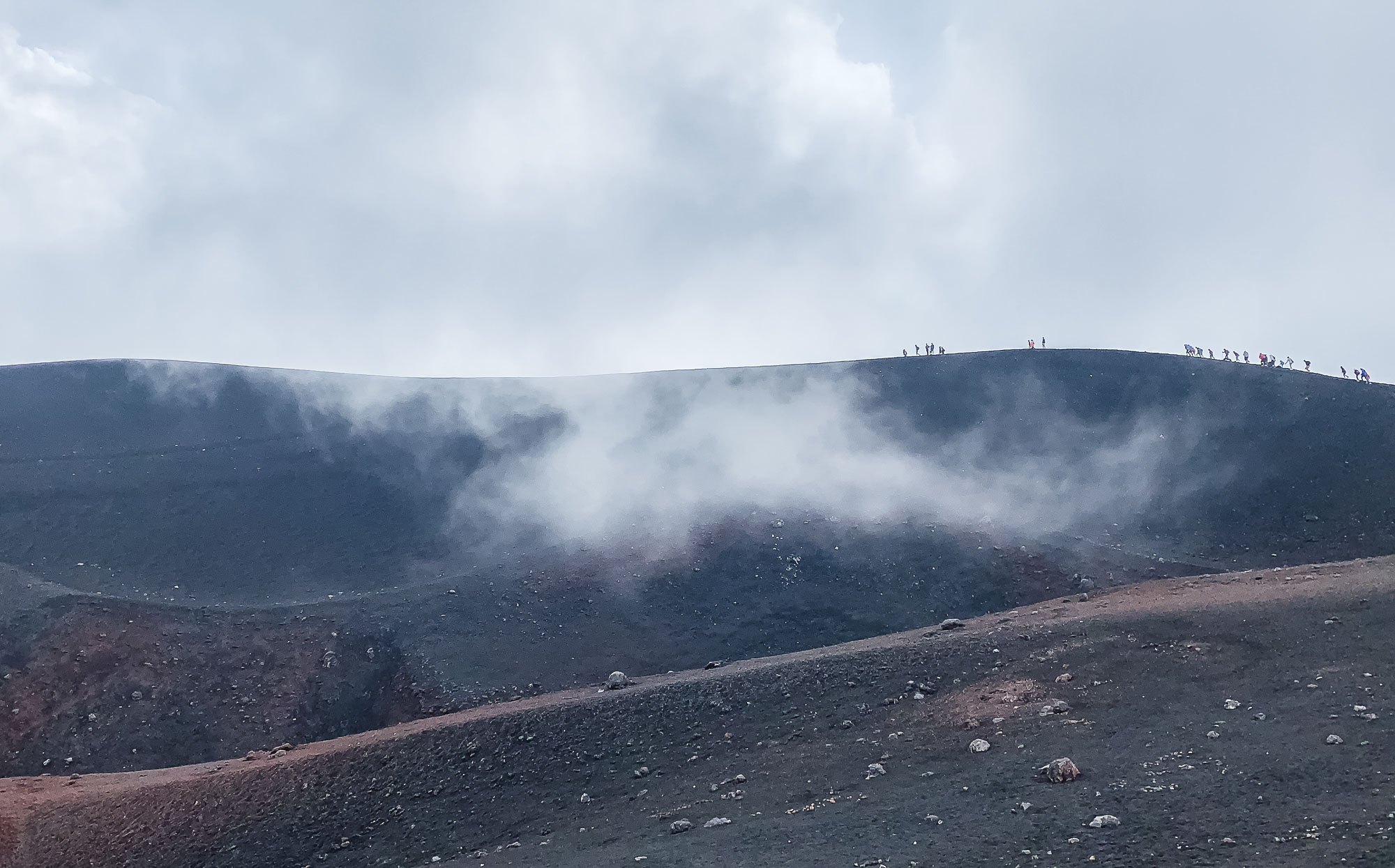
On the Crater's Edge
A group of people walking at the edge of the 2003 craters.
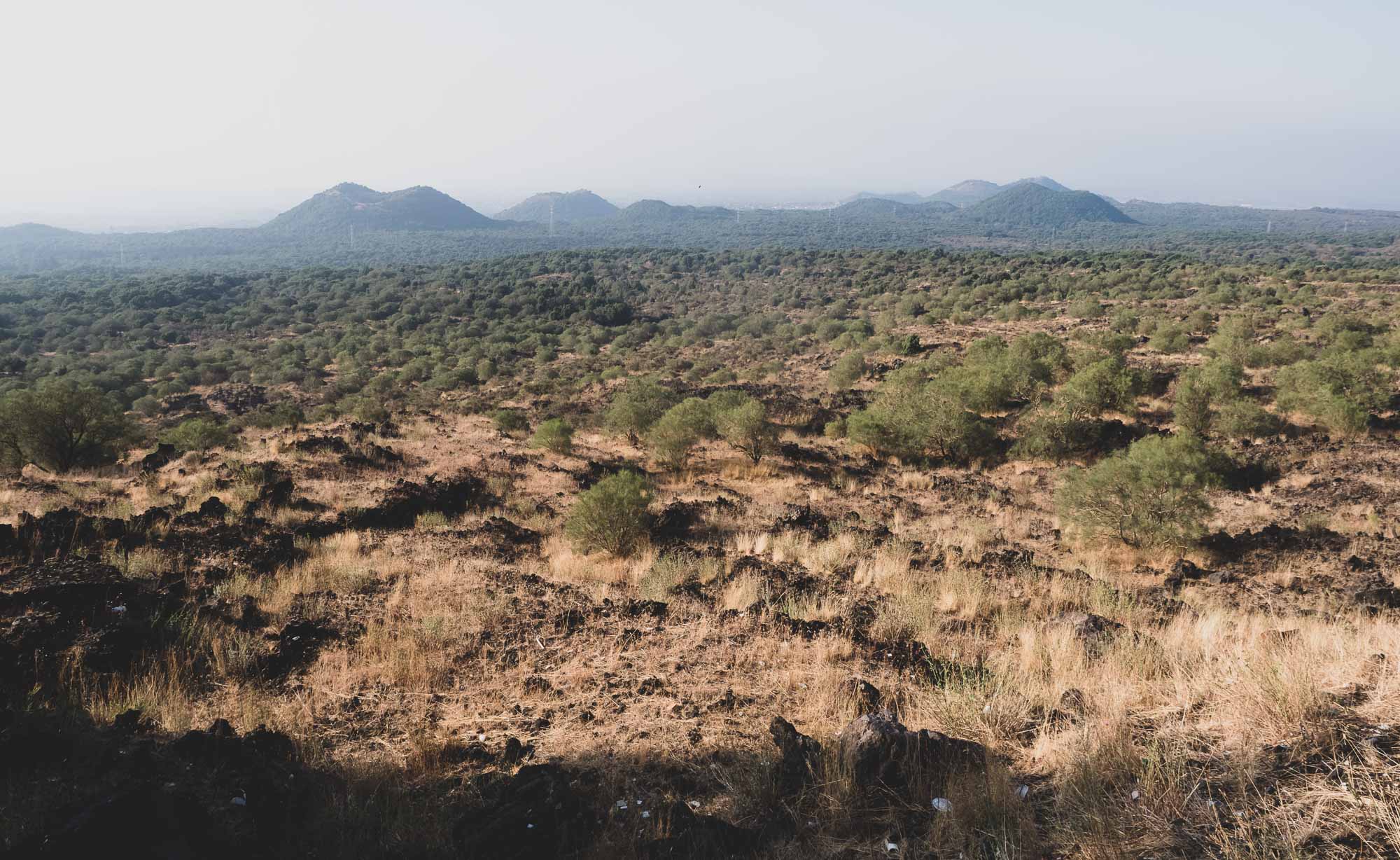
Landscapes
The base of the Etna features a hilly and relatively barren terrain.

Cold
It was about 20 degrees less than on the ground up at 2800m.
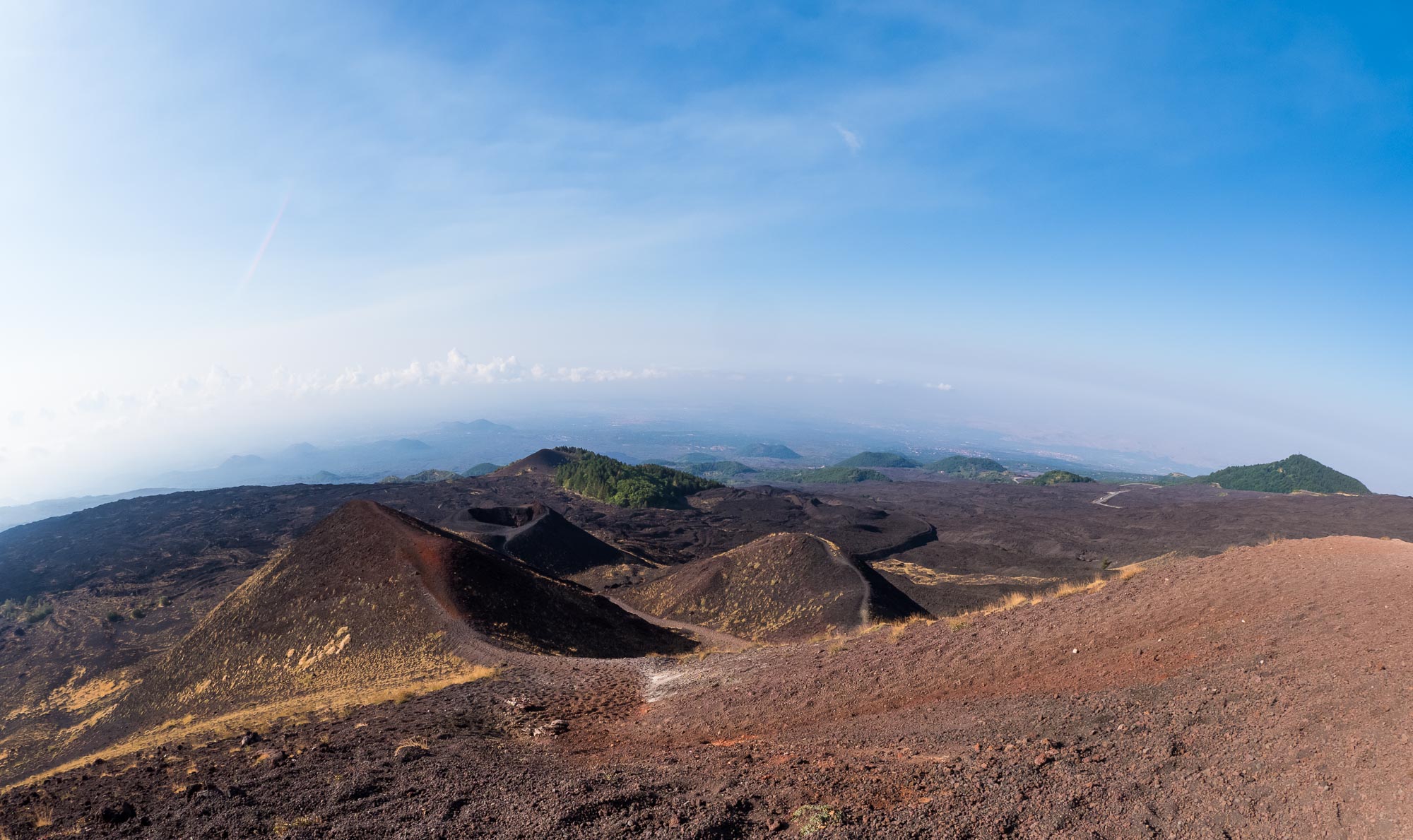
Panorama
The drive up the Etna transitions to an increasingly brown, reddish and black landscape as you come closer to the end of the main road.
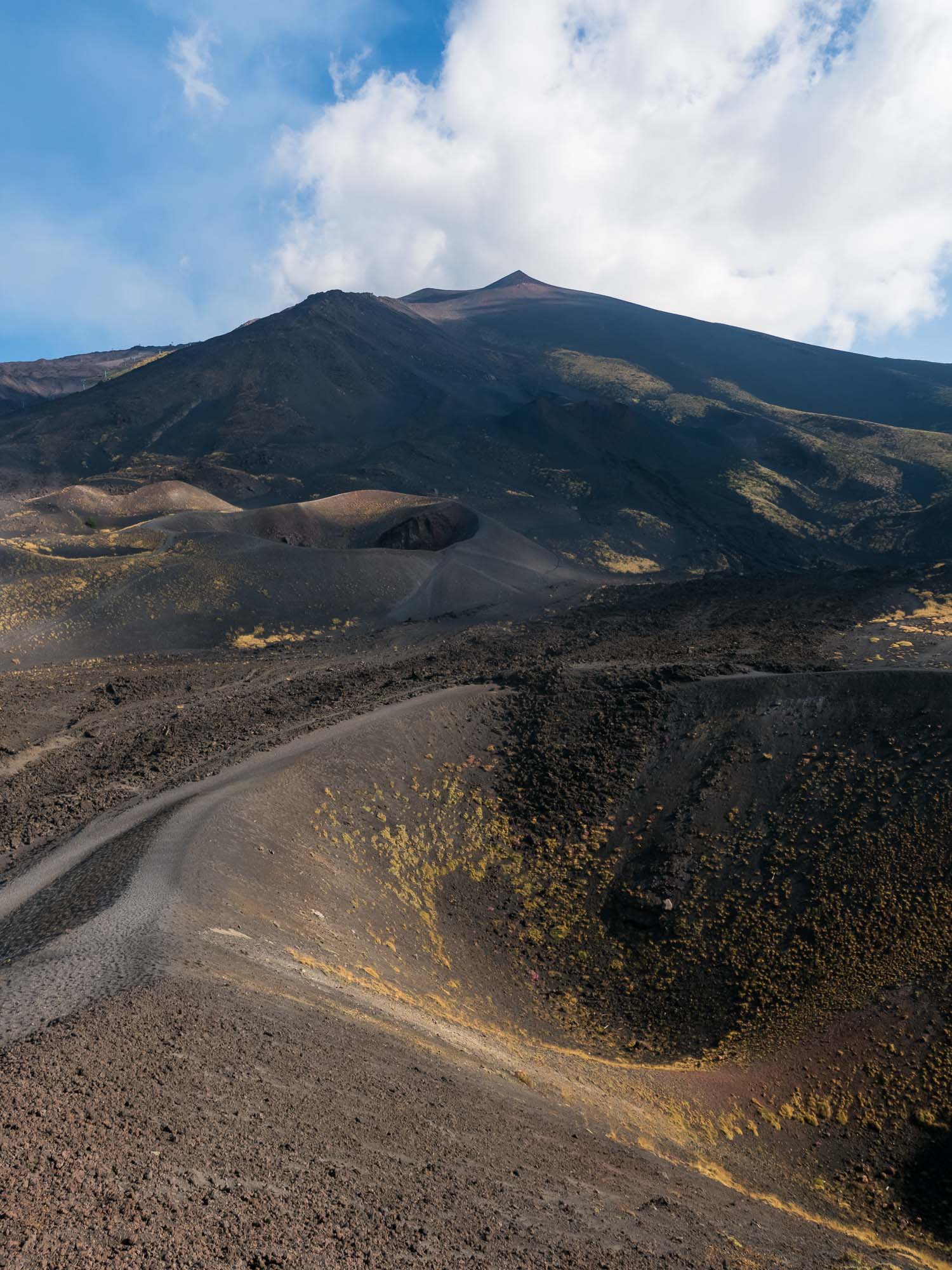
2001
The Southern flank of Mount Etna showing lateral cones and flow from the eruption of 2001.
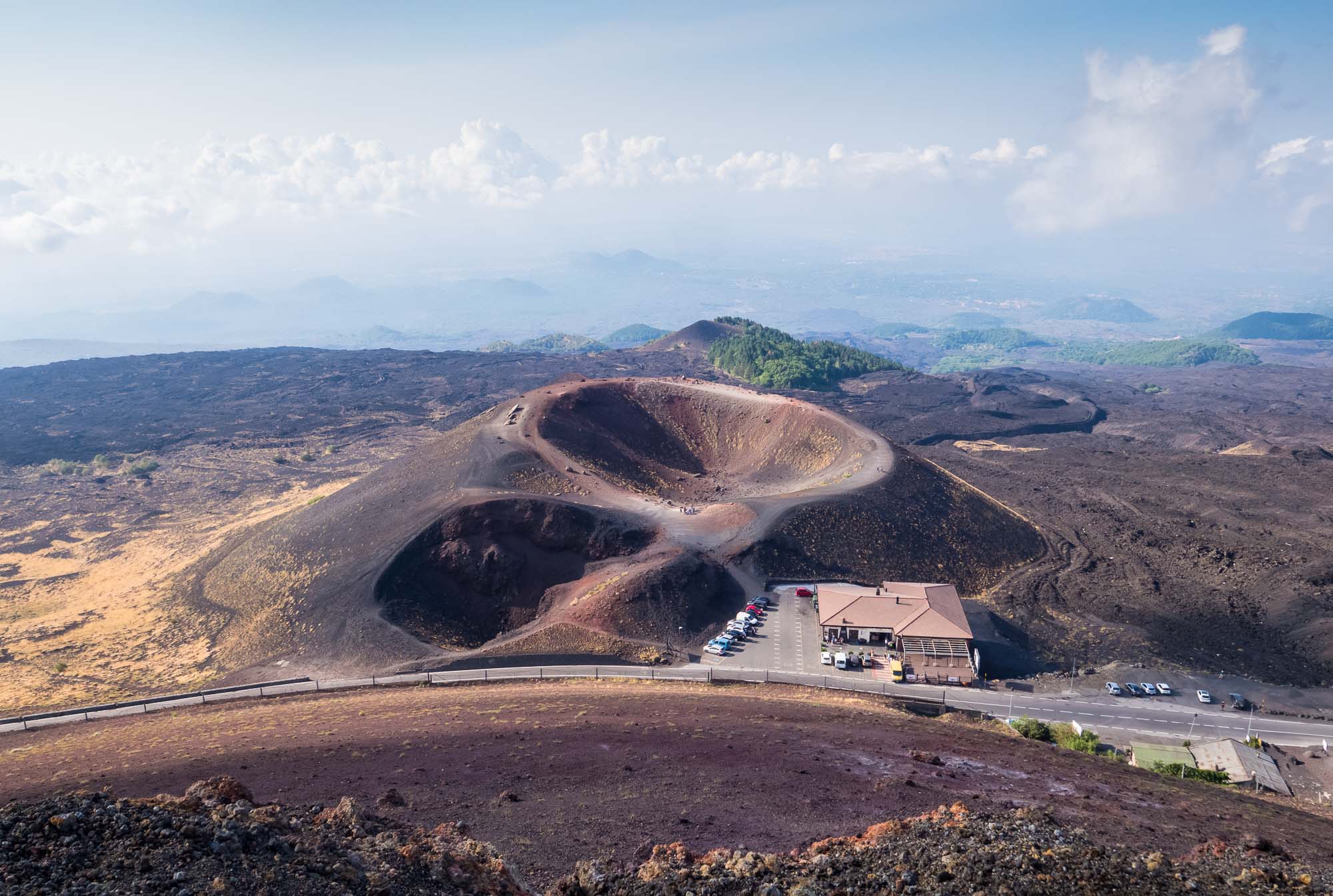
Craters Silvestri of Mount Etna
The two smaller craters near the end of the main road, seen from the third and larger one, are from 1892.

Patches
The only greenery you can find on the lava covered mountainscape as the cable car ascends.
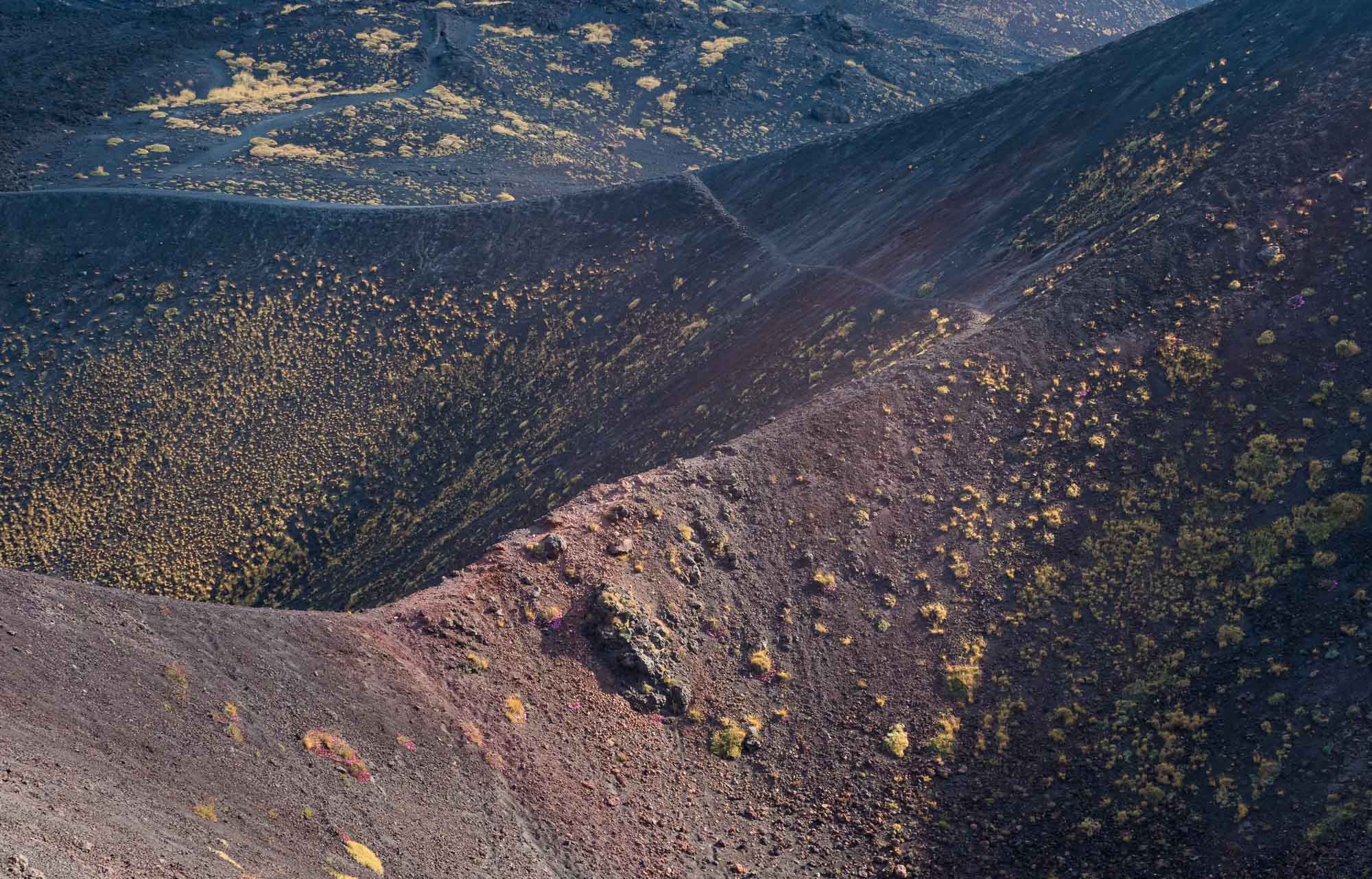
Flora
On the lower craters, there are still occassional bushes of colourful flowers, which slowly disappear as you go higher.
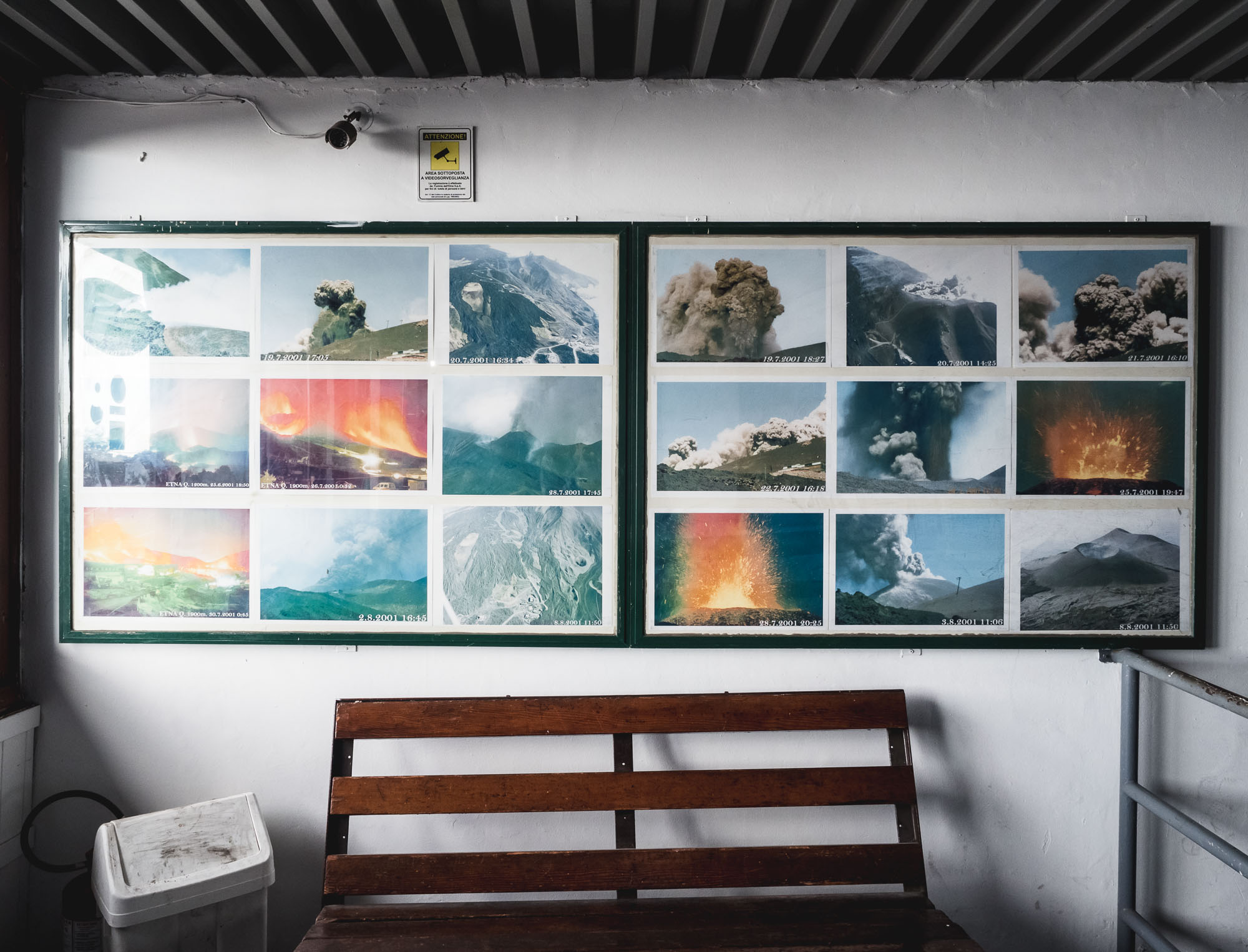
Evidence
Etna is one of the most active volcano's in the world, with plenty of recent evidence.
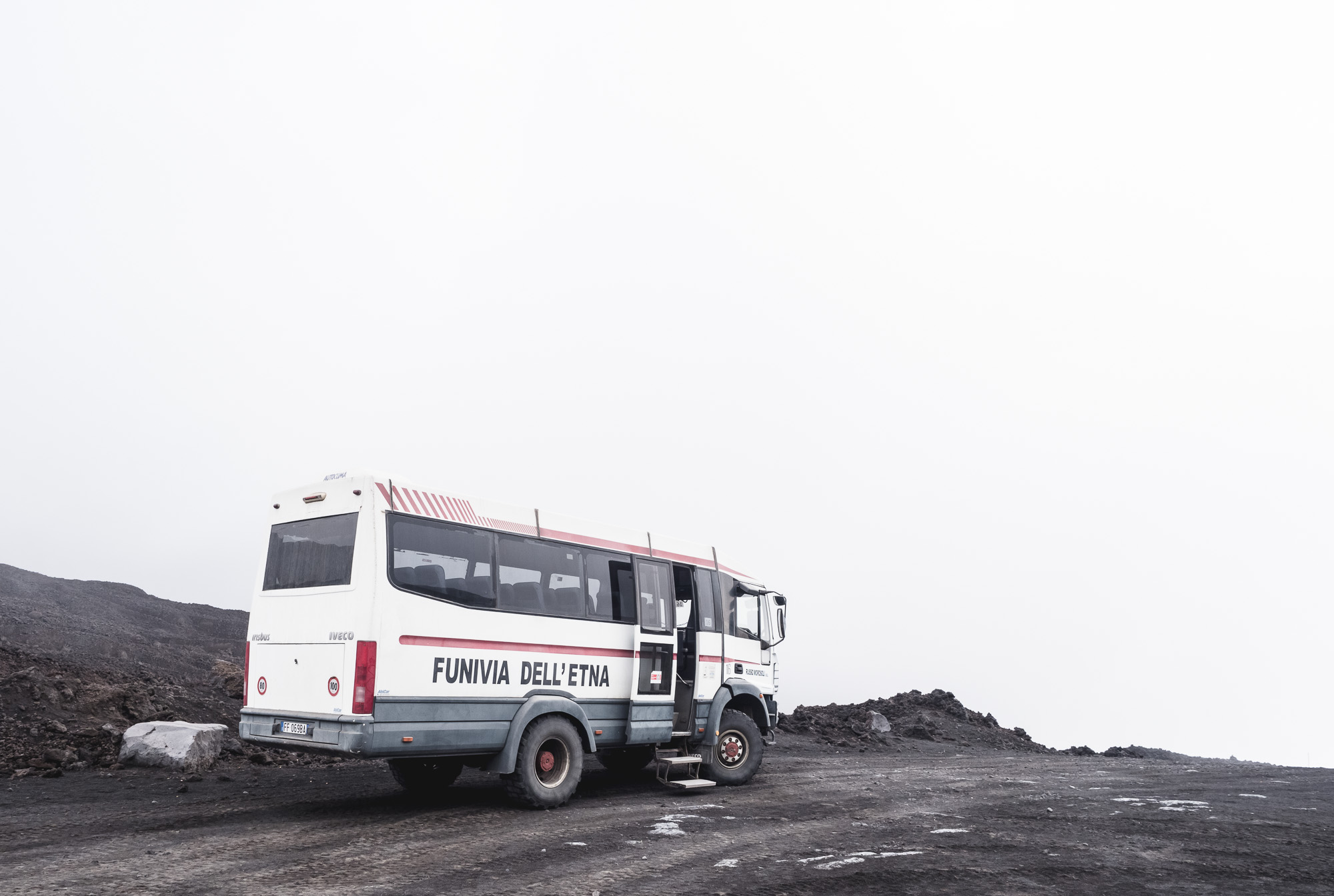
Transport
The cable car station isn't your last mode of transport - these vehicles take you up another few hundred metres.
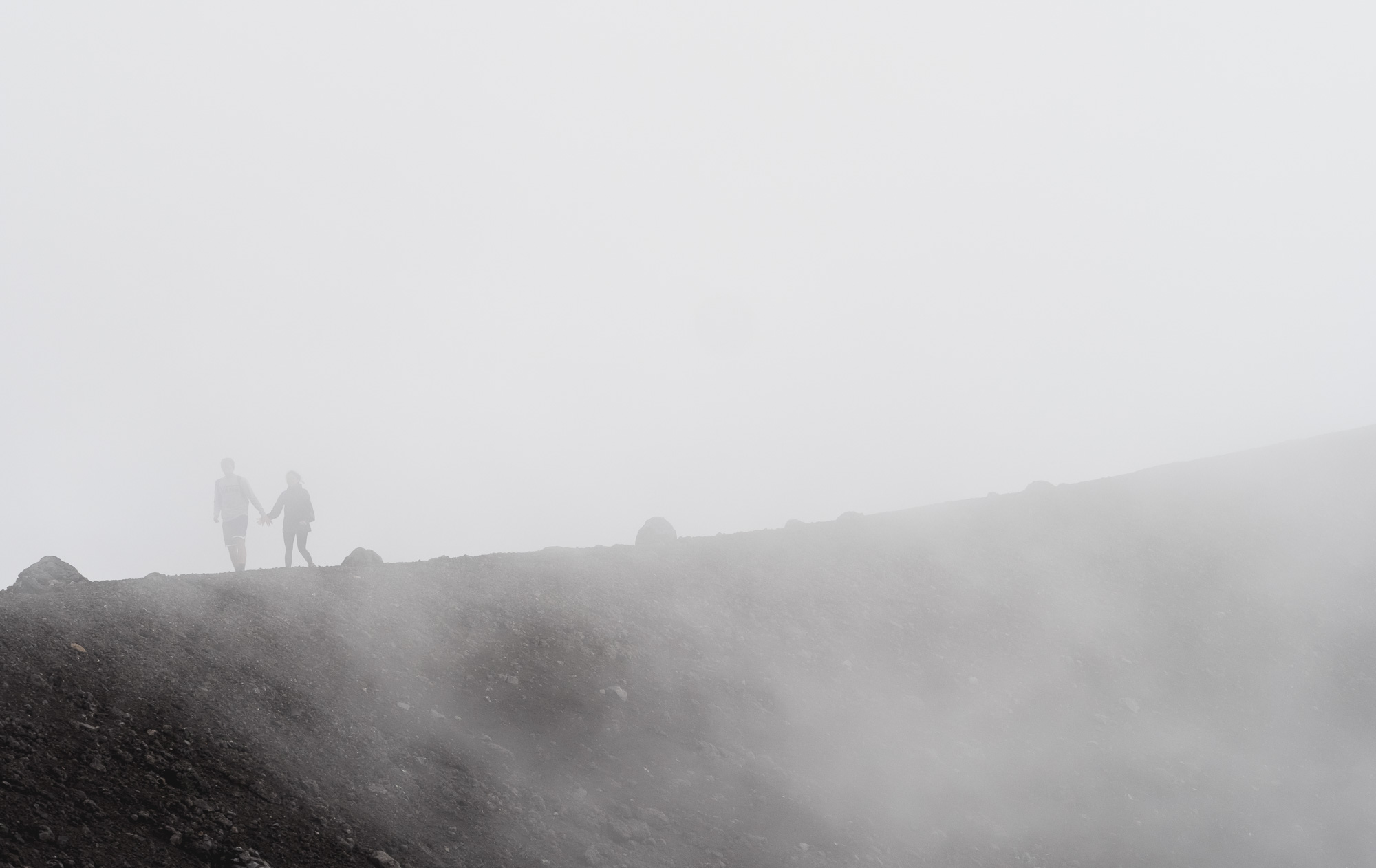
In the Clouds
It's rare to have a clear sky around the summit of the Etna.

To the Top
A group on the path to the top summit, which is another 2-3h hike from the end of the 4x4 road. While this is where the active craters are, luck is needed catch a clear day for this hike.

The Summit
The top of mount Etna, engulfed by clouds at 3300 metres. Usually, the early morning (this was around 10:30am) is the best time to catch a clearer glimpse. Note the yellow tone of the sulfur filled sediments.

Cloudy
Patches of clouds also touch the lower summits of the 4x4 landing area, at around 2900m.
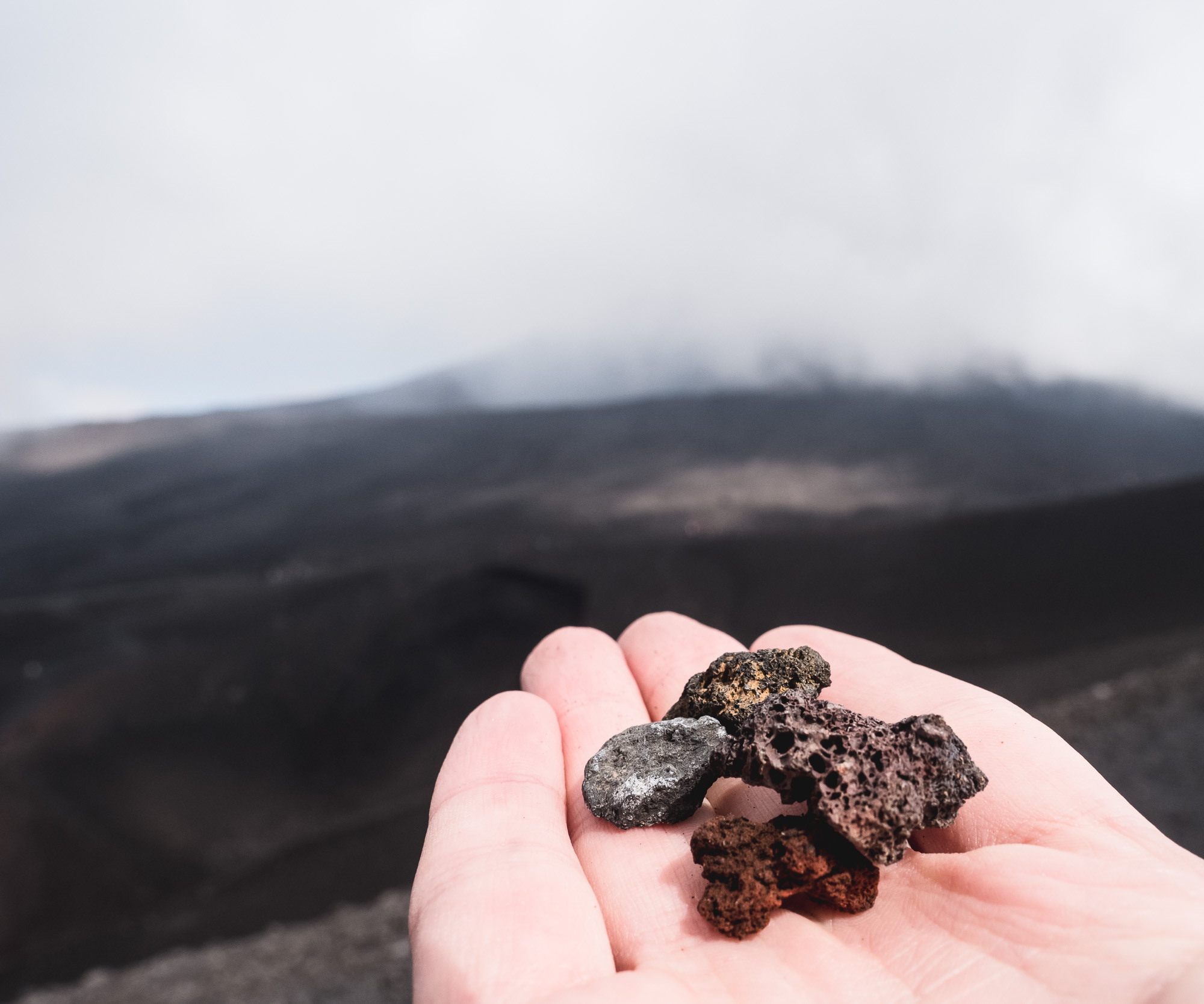
Colours
While from afar things appear of a more uniform blackish colour, looking closer at the ground reveals traces of sulfur, iron and more.

Warmth
Even the craters below the summit still have warm soil, once you dig a few centimetres.
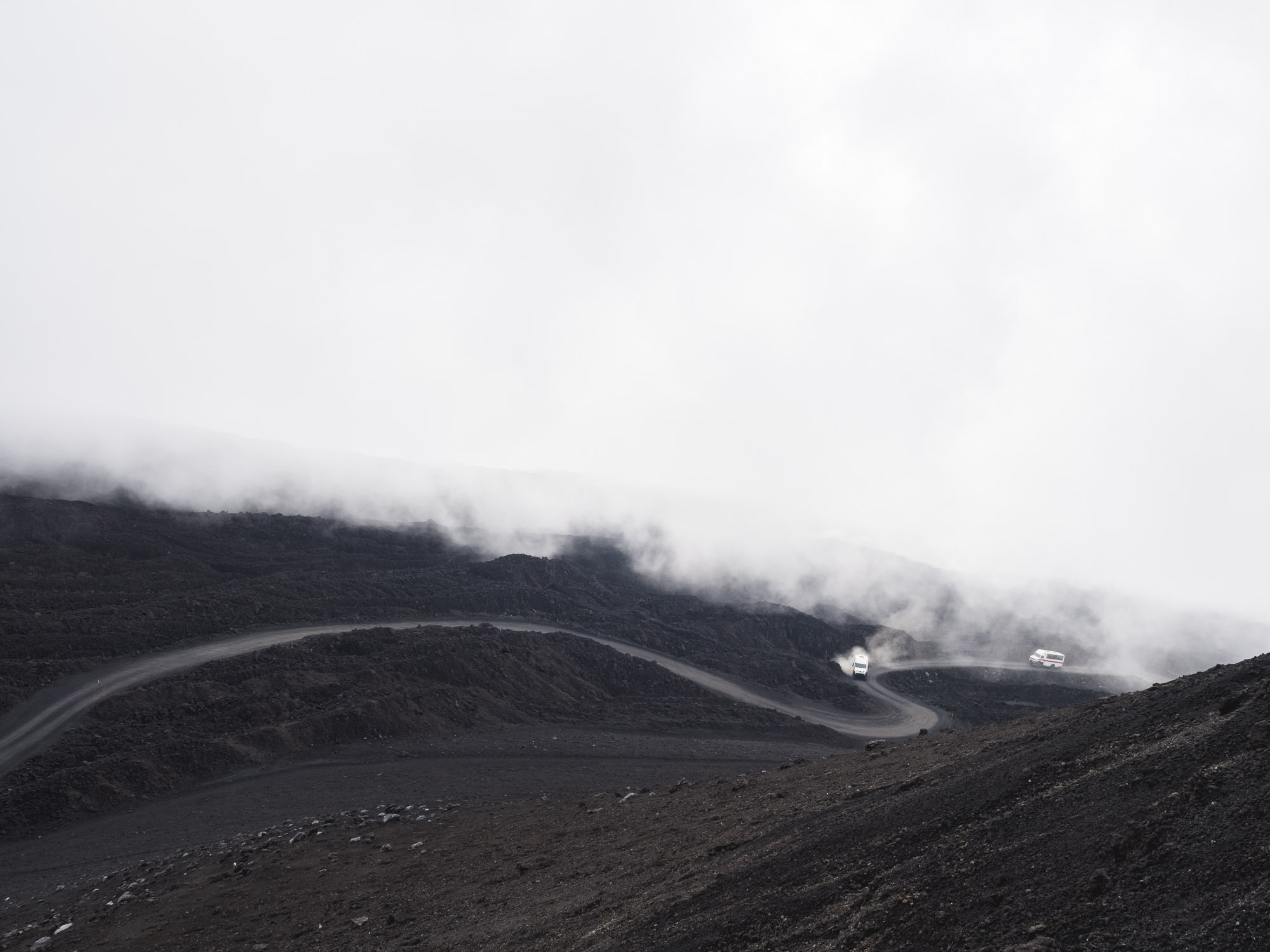
A Bumpy Road
The way up is not exactly a highway, and the fine lava sand means the road needs to be flattened regularly.

Entertainment
An old cinema and comedy club in Acireale.
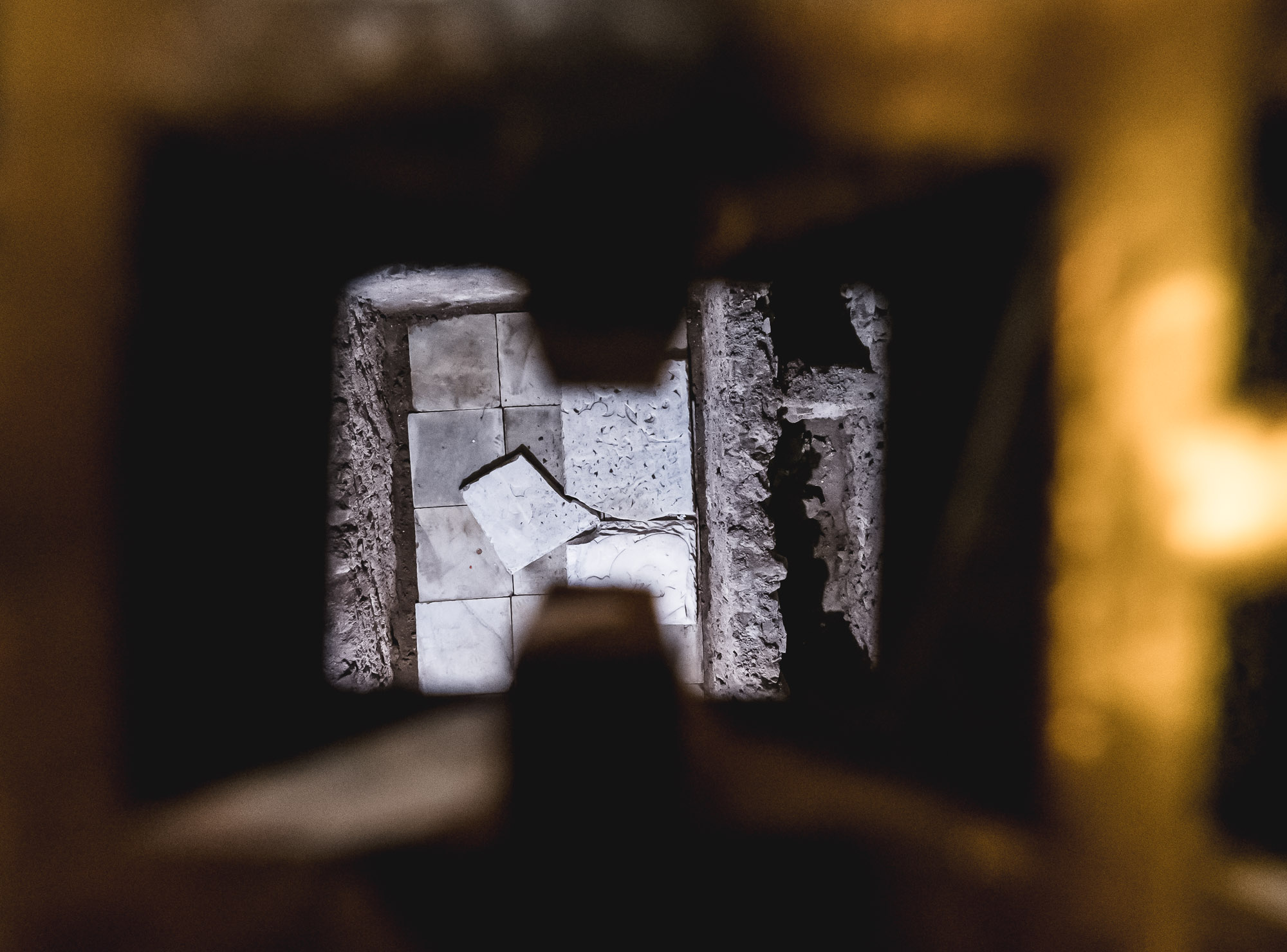
The Real Secrets...
...often lie below the floor of the churches of today, hidden from view unless you spot them through a drain hole, like in the case of this grave.
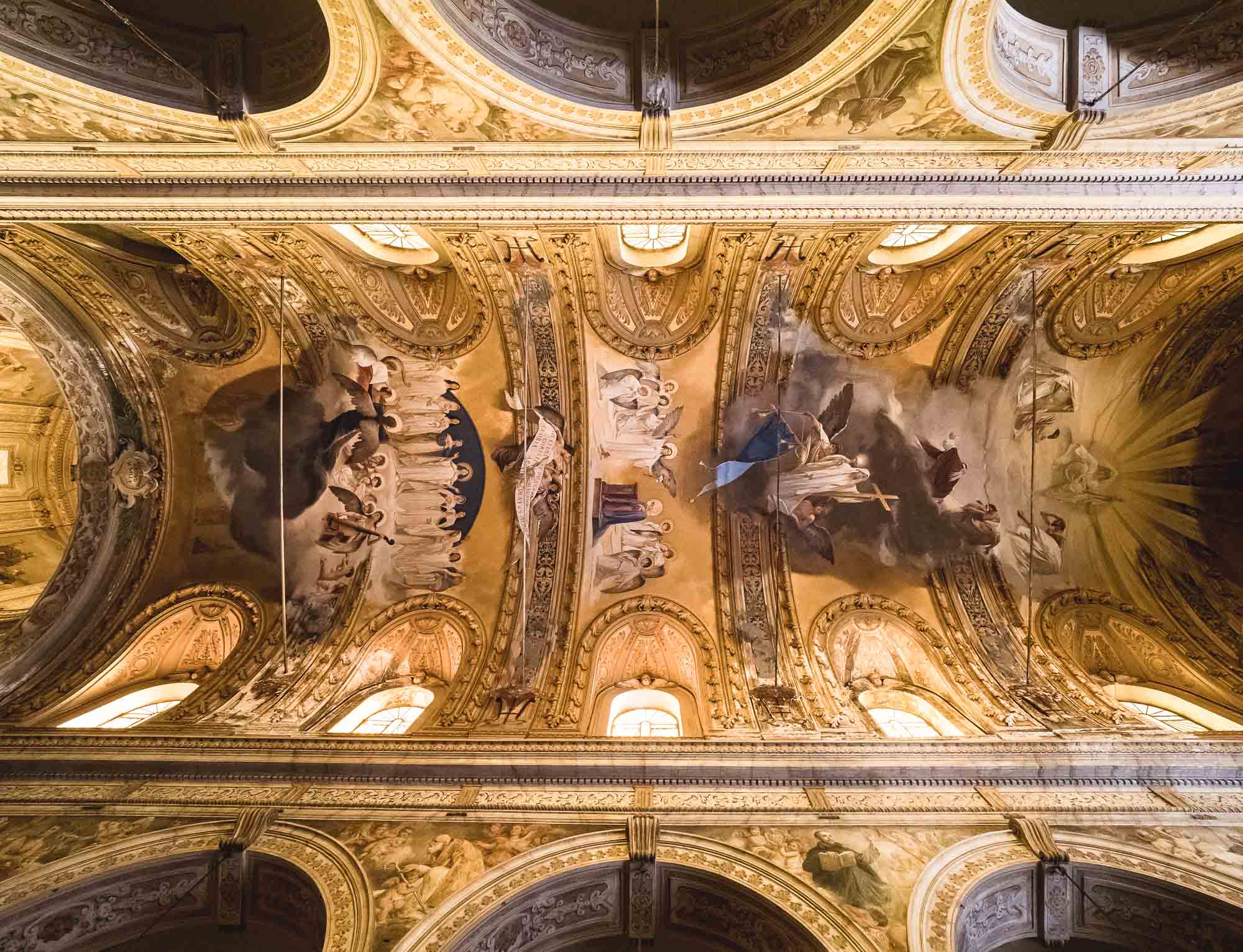
Ceiling Paintings
The illustrations on the Cathedral of Saint Mary of the Announcement.
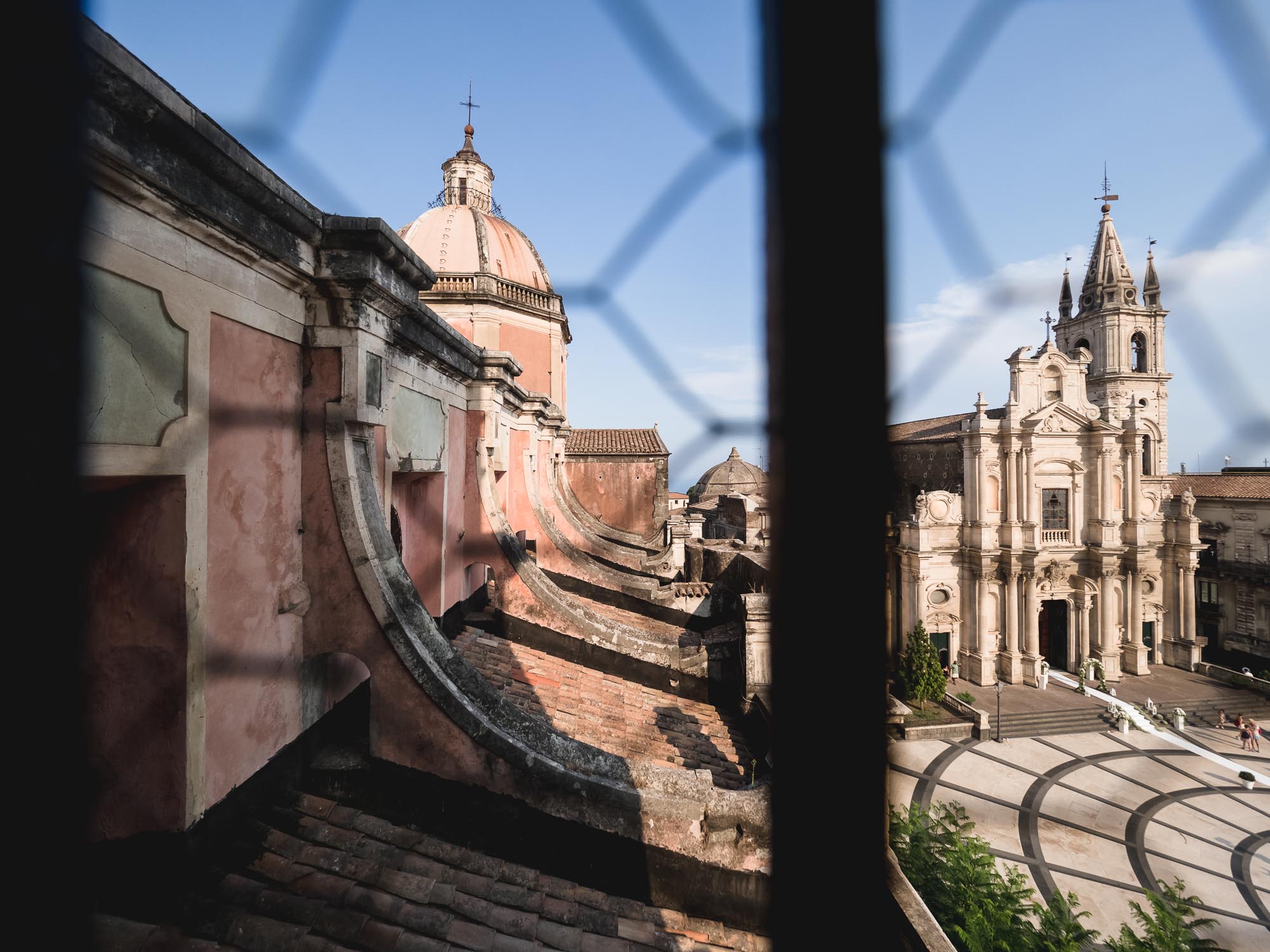
Back Views
The roofline of the Cathedral and the Basilica of the Holy Apostles Peter and Paul on the right just behind.

Church Bells
You can climb up a few stairs to the Cathedral of Acireale's bell towers. While they both look identical, the one on the south is from 1655, while the one to the north, is from 1890.
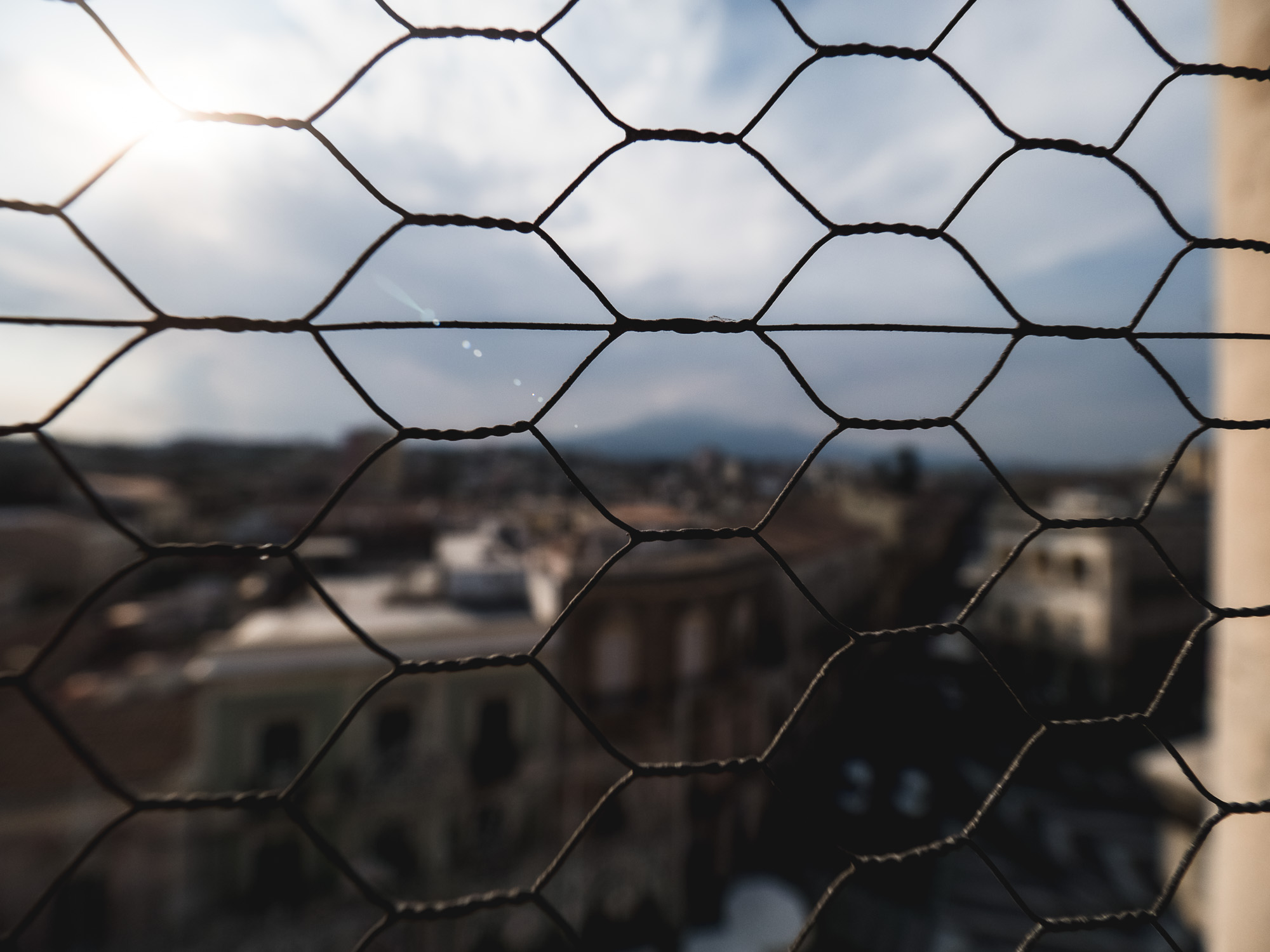
Acireale
The view from the bell tower is unfortunately obstructed by a fence to keep birds out, but you can still see the majestic Etna in the background.
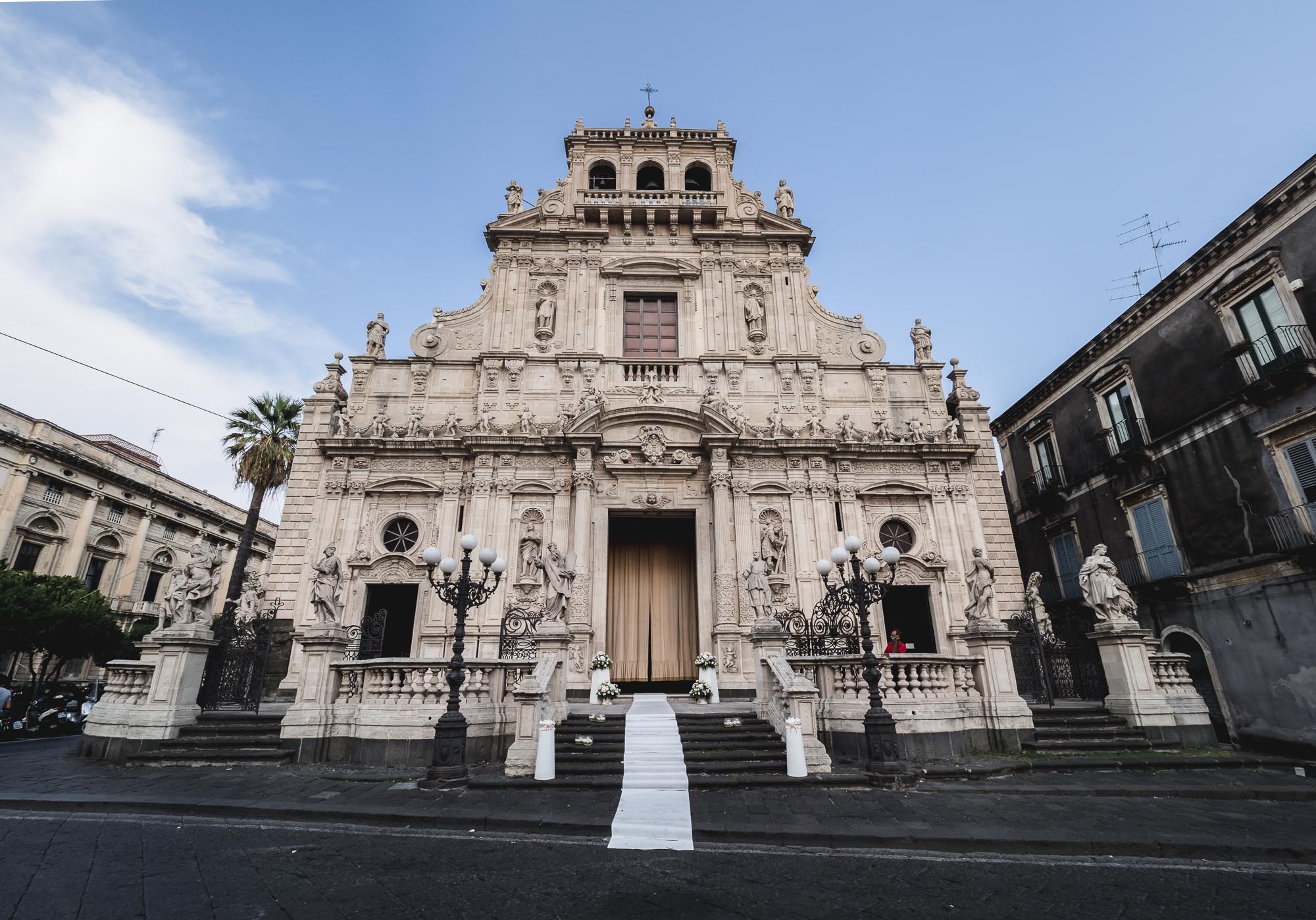
Triumvirat
The third major church in the centre of Acireale is the Basilica Collegiata San Sebastiano.
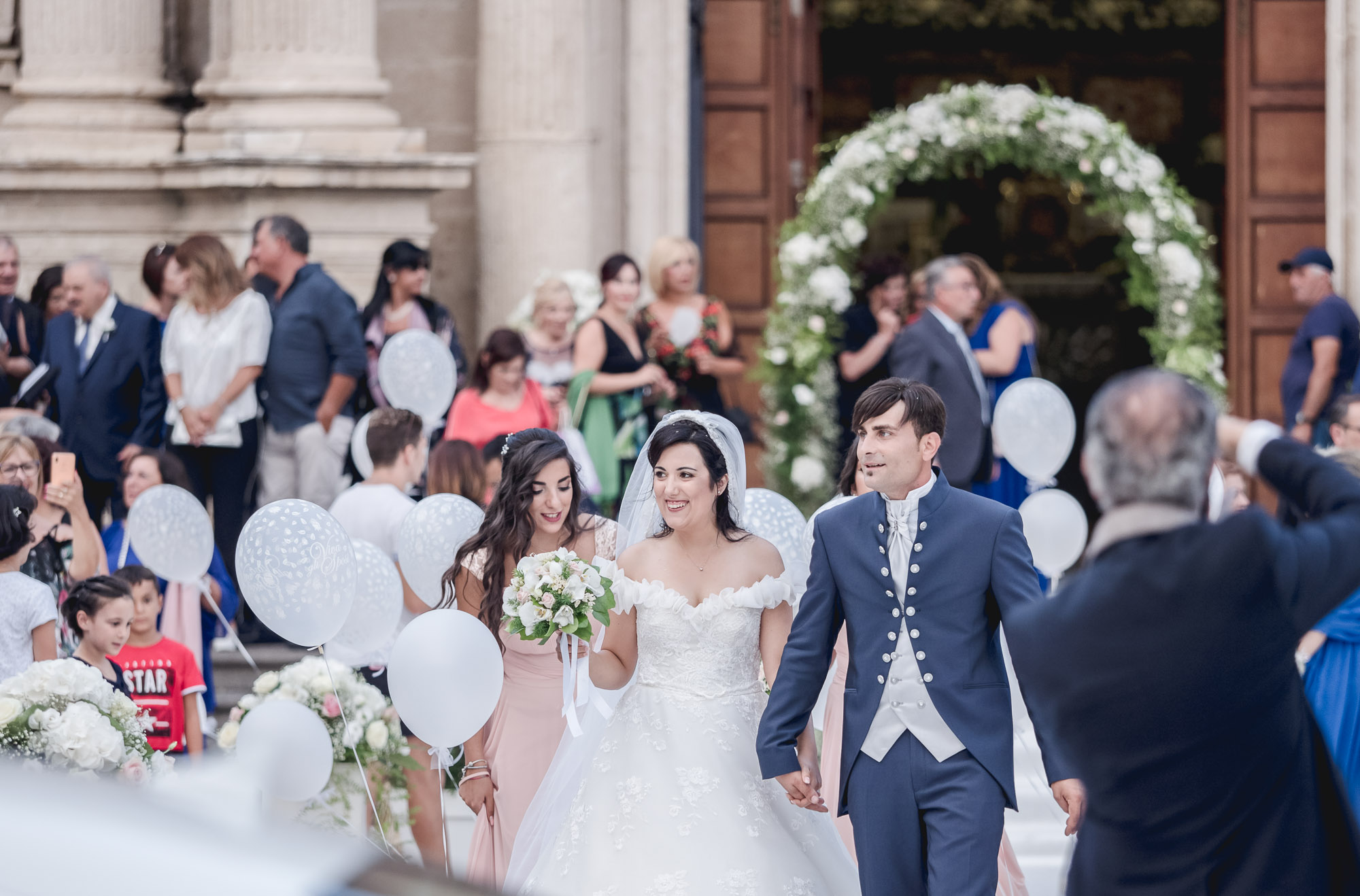
Procession
A wedding took place in the afternoon at Acireale's main square.
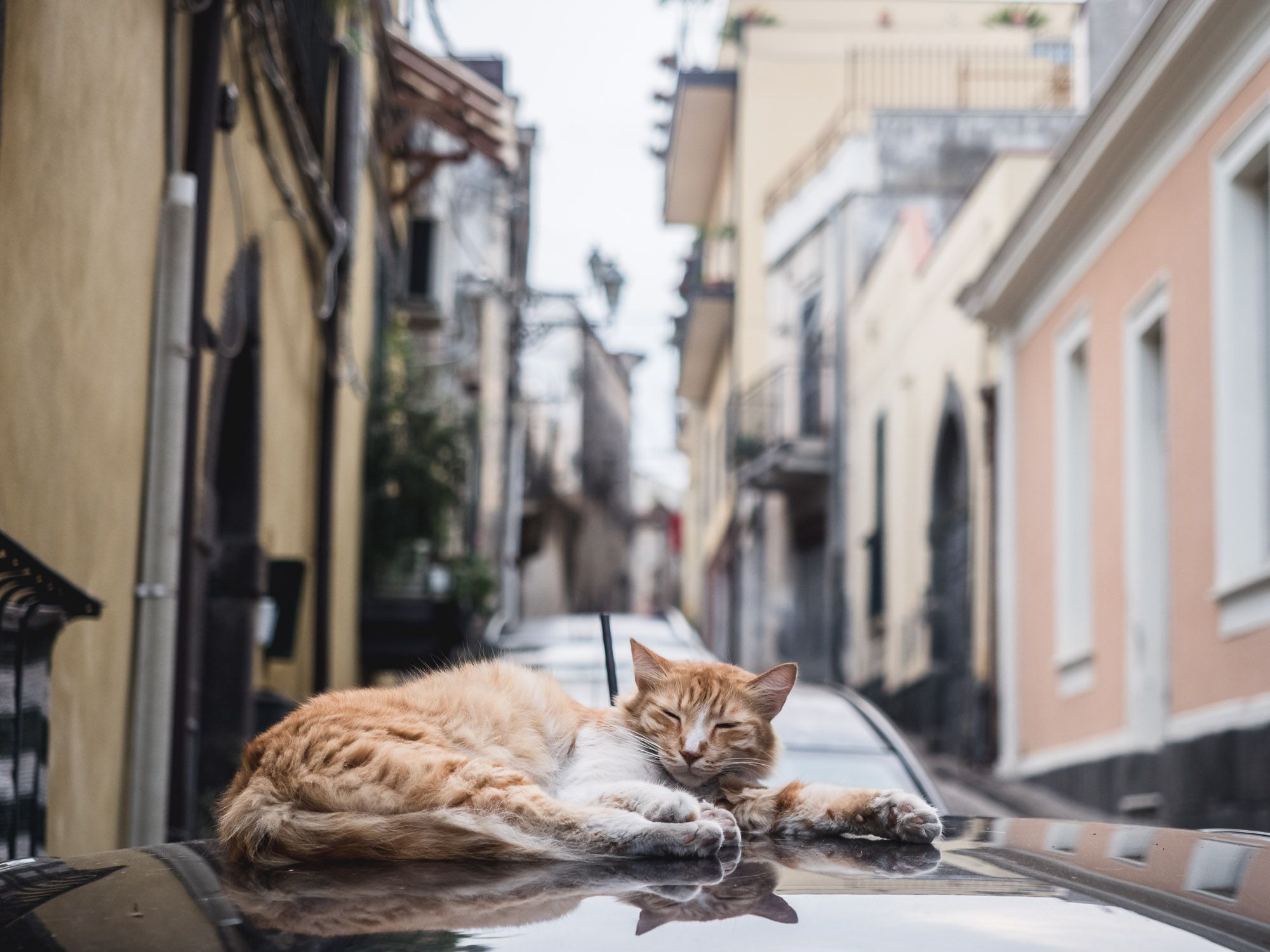
Just Chilling
The obligatory cat photo for this album.
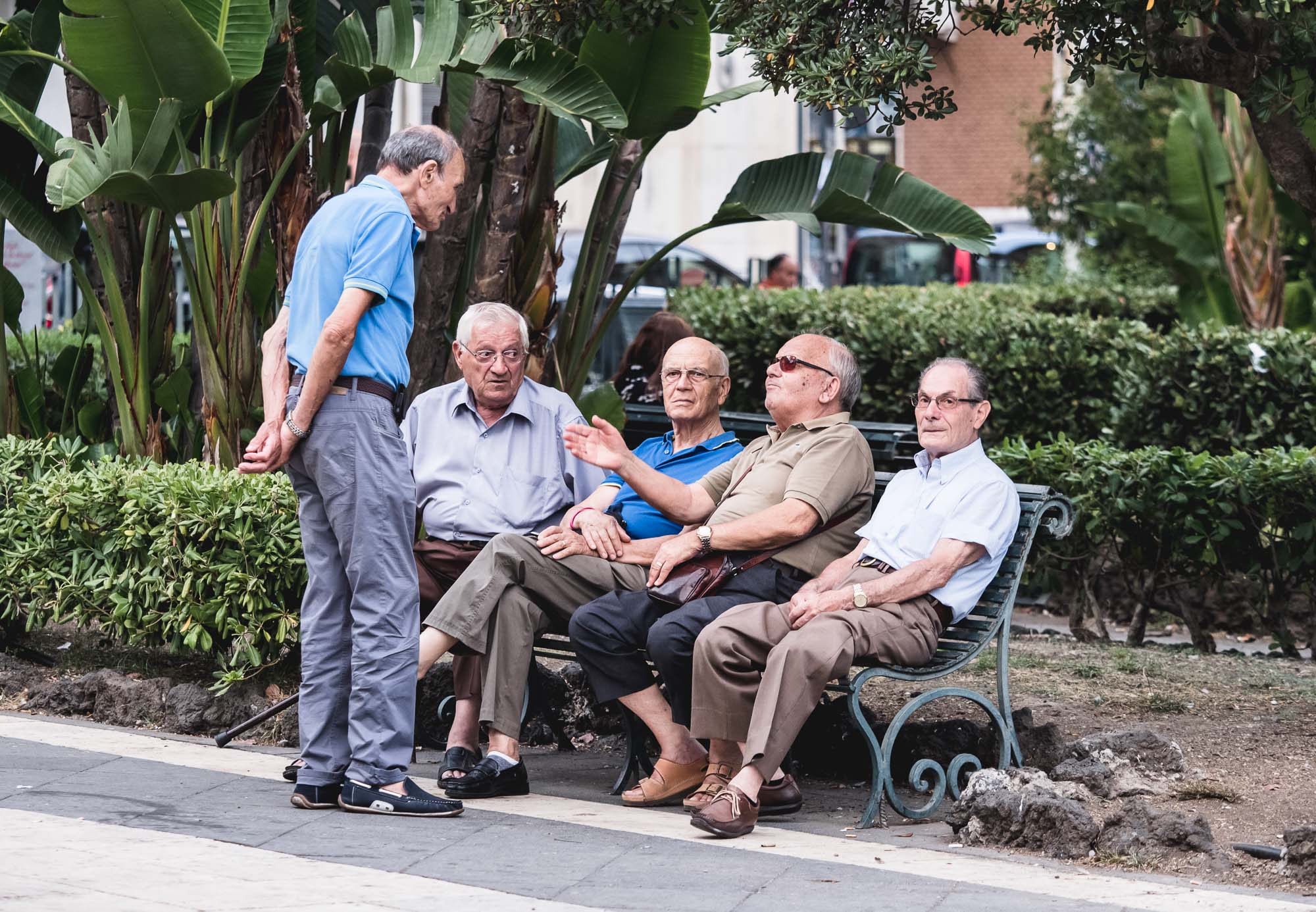
Conversations
Problems with the Mafia or the wife, who knows what the topic may be?
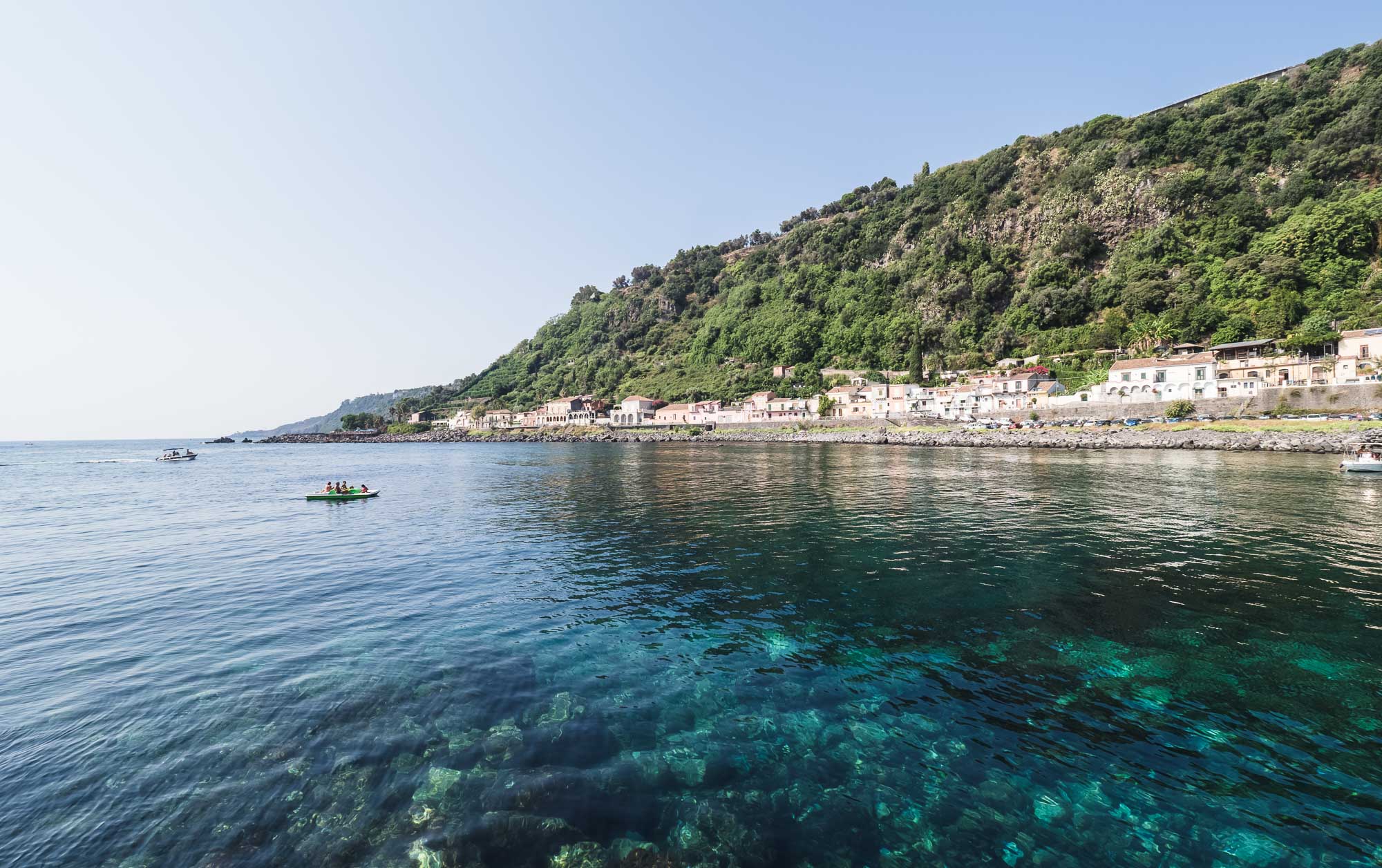
Clarity
The clear waters of the Mediterranean sea engulfe the island.
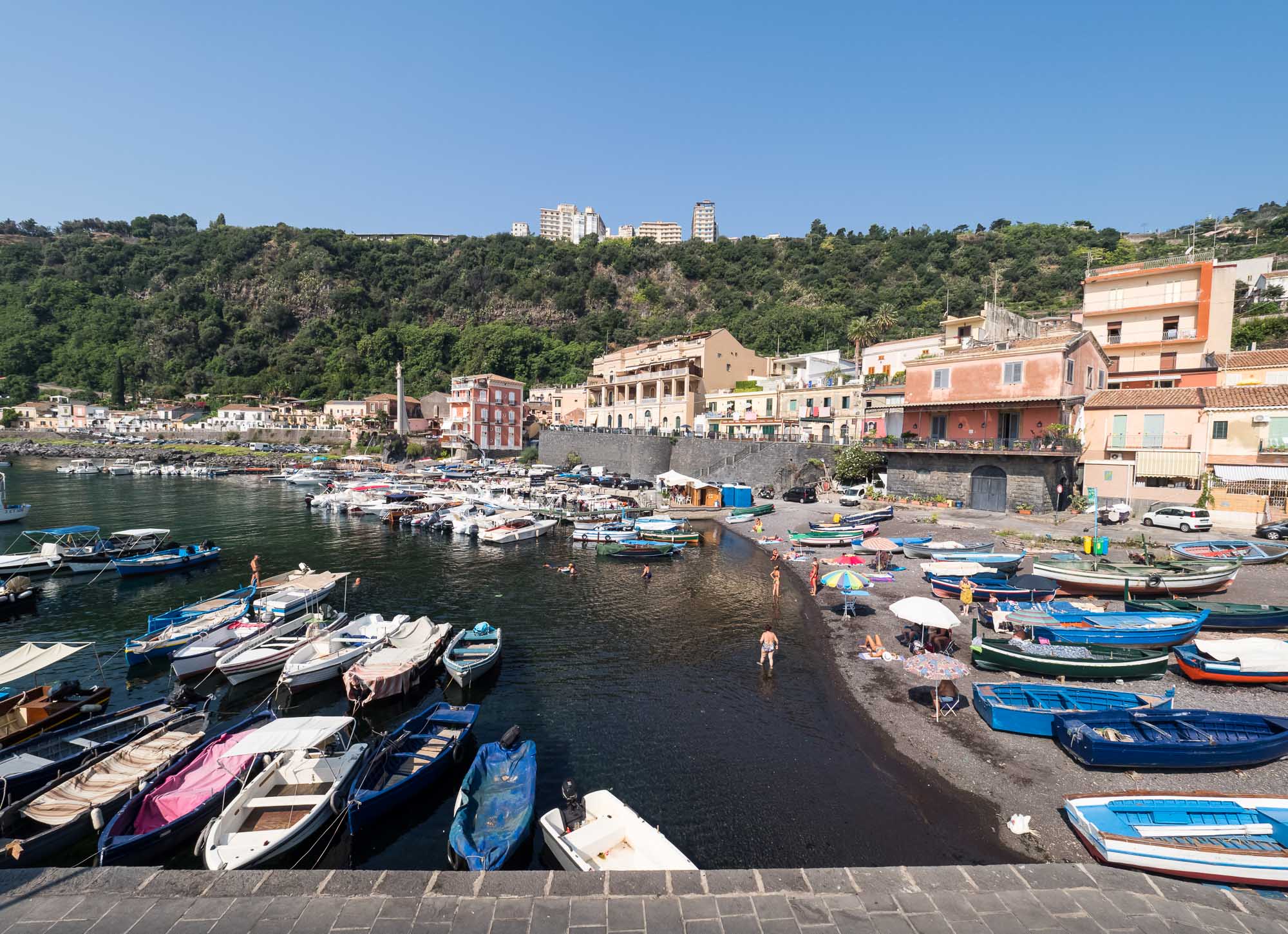
Coastal Views
The town of Santa Maria La Scala lies at the foot of the cliffs on which Acireale sits.
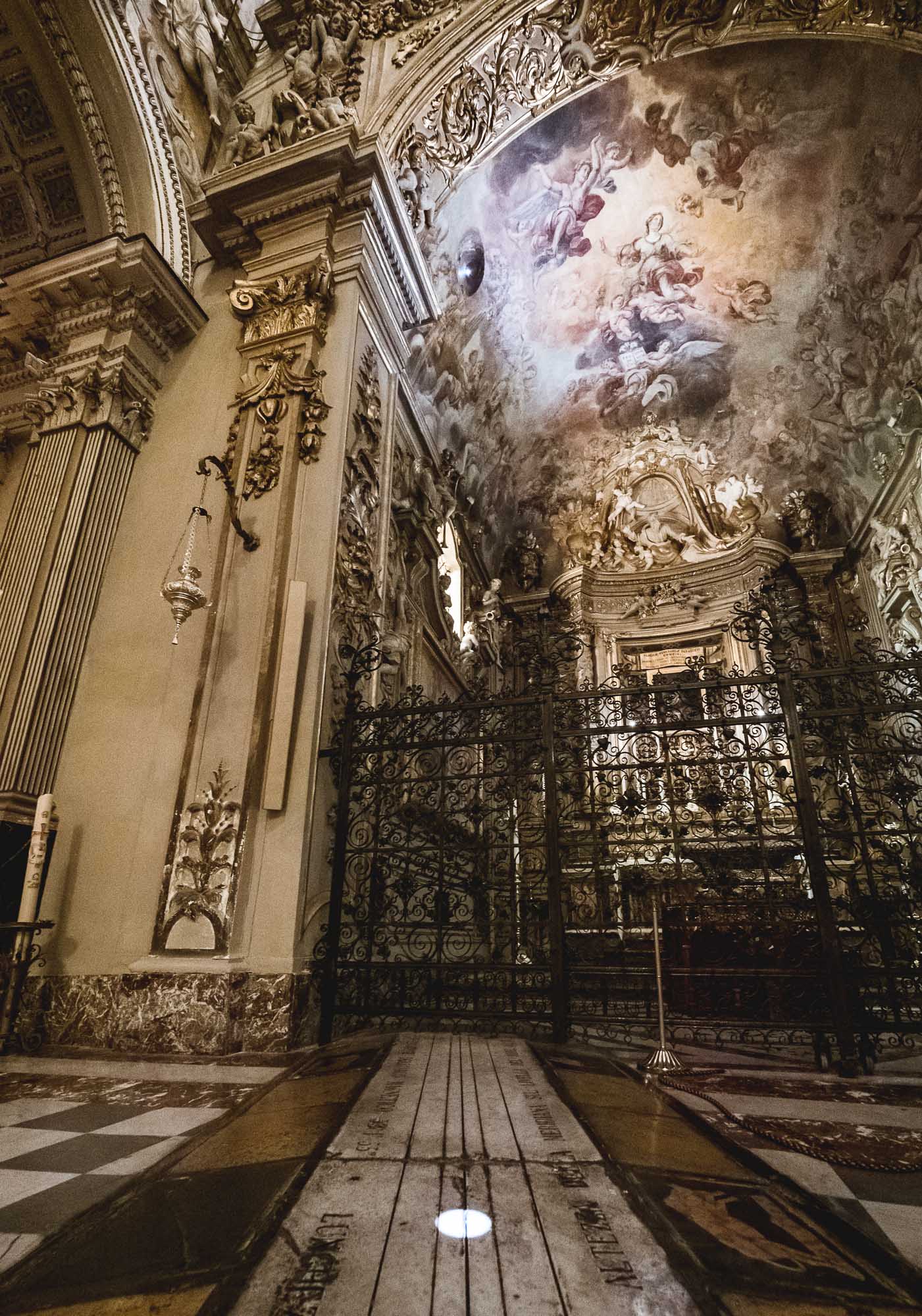
Meridian
In the Cathedral of Maria Santissima Annunziata is a meridian noon mark designed and built in 1843 by the Danish astronomer Frederik Christian Peters, which I was lucky enough to observe at the exact time it was meant to illustrate.
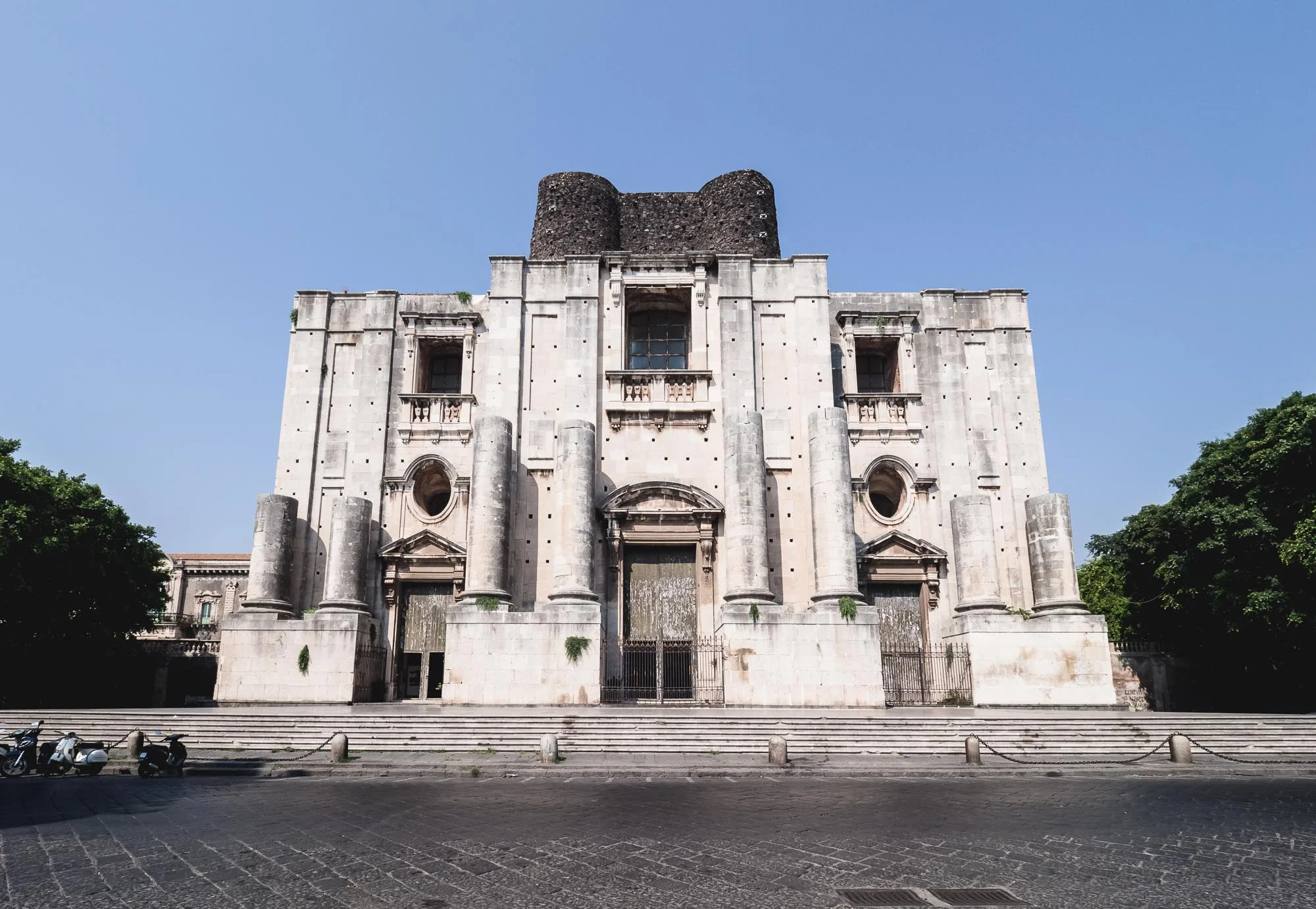
The Unfinished Church of San Nicol
Just attached to the Monastero dei Benedettini di San Nicolò l'Arena.
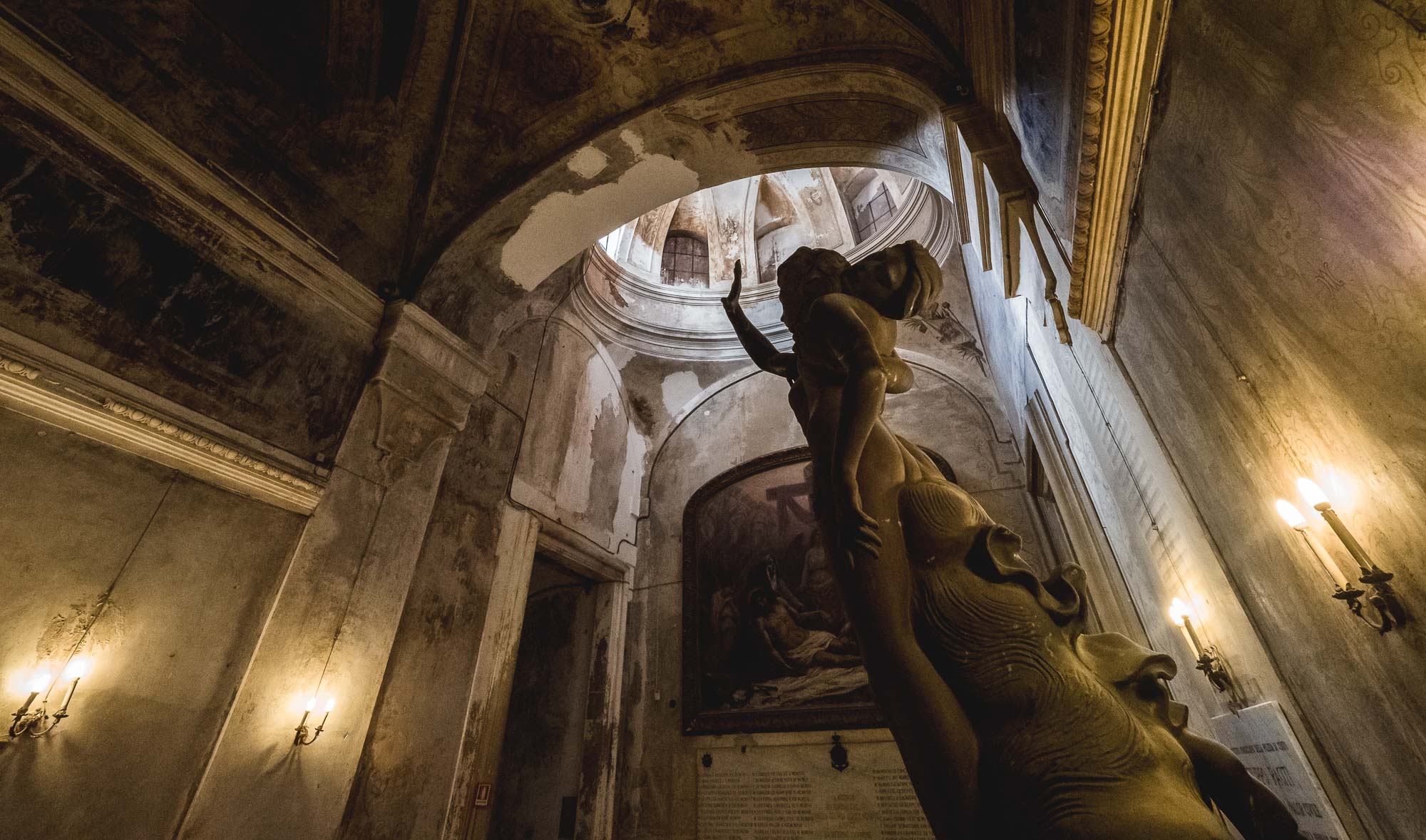
Raw
The church feels as raw on the inside as it does from the outside.

Entrance
The staircases for the monastery may as well be host to a Harry Potter movie.

No Passage
Some doors are closed more permanently than others.

Courtyard
The monastery is one of the largest monasteries in Europe and a UNESCO World Heritage Site, but today houses the Department of Humanities of the University of Catania

Bridge
The bridge acting as entrance into the monastery from the back is one of the oldest parts of the building, with lava remains from the 1669 eruption that destroyed a big part of the complex still visible on the left side.
Puglia - Italy's South at its Best
A recent wedding invitation gave me the opportunity to explore the south of Italy a bit more, specifically the region of Apulia, or Puglia in the native language. 2 days of driving from Bari through Polignano a Mare, the Grotte di Castellana, Alberobello with its Trulli houses, and the white city of Ostuni gives you a great impression of the typical architecture, food and nature around this part of Italy.

A recent wedding invitation gave me the opportunity to explore the south of Italy a bit more, specifically the region of Apulia, or Puglia in the native language. 2 days of driving from Bari through Polignano a Mare, the Grotte di Castellana, Alberobello with its Trulli houses, and the white city of Ostuni gives you a great impression of the typical architecture, cityscape, and nature around this part of Italy.

Polignano a Mare
One of the most famous towns on the coast of Apulia, with the Lama Monachile, also known as Cala Porto, beach area surrounded by cliffs and houses.
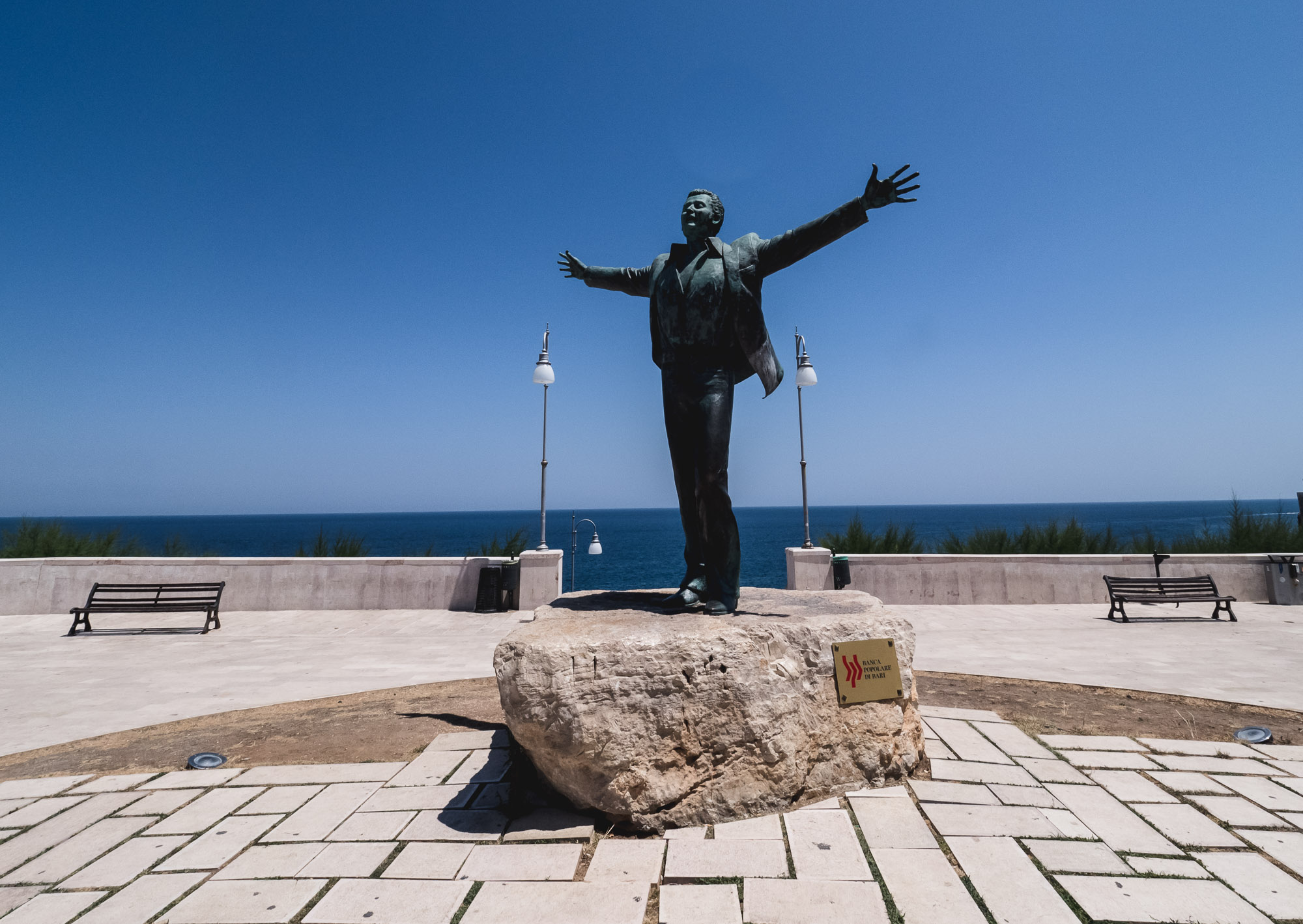
Statua di Domenico Modugno
Famous for the song Nel blu, dipinto di blu - or commonly known as "Volare".

Coast View
The view from the northern cliffs towards the cirty.
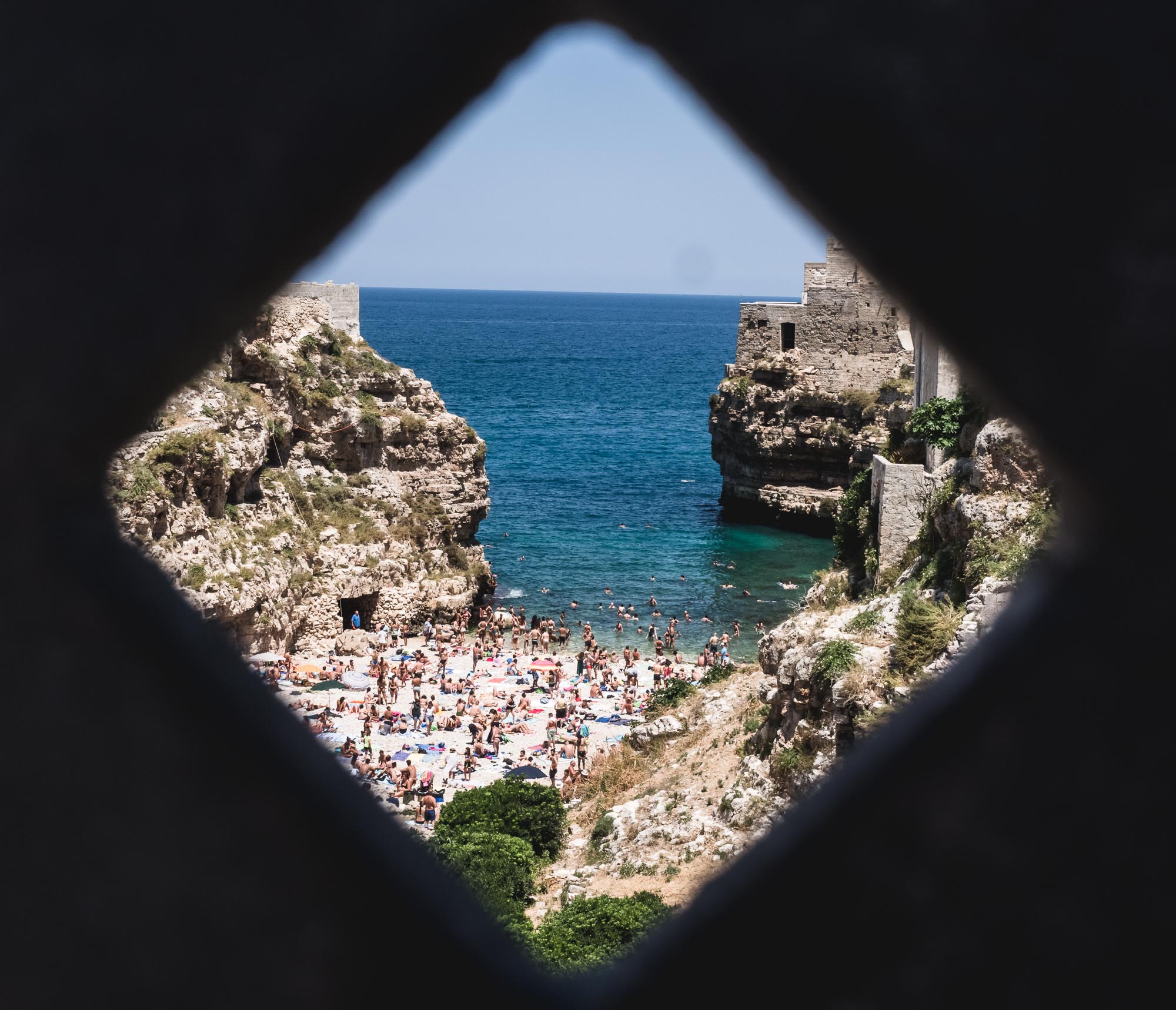
Postcard Beach
The city's most famous spot, seen through the rails of the Roman bridge.
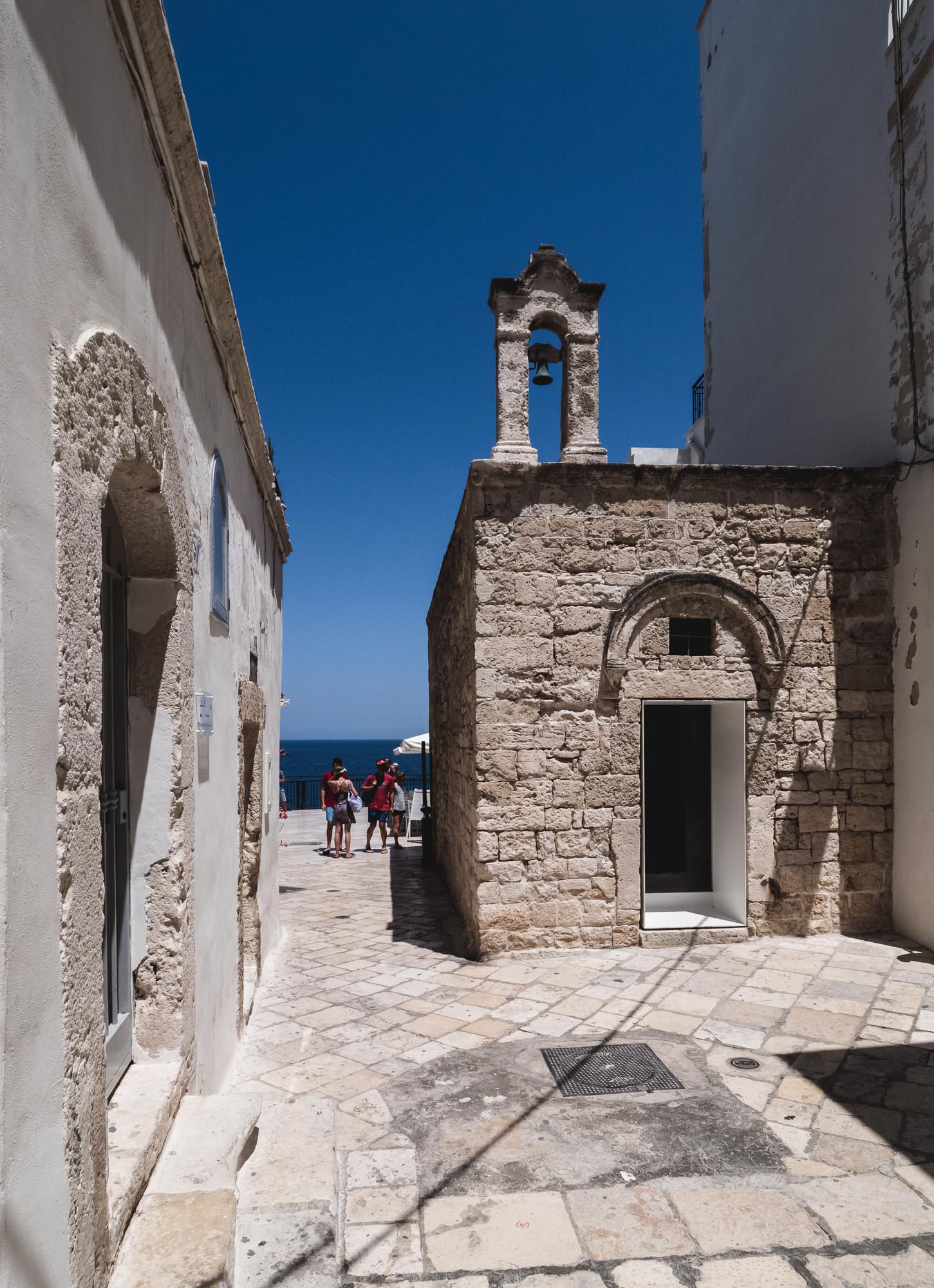
Little Church
A tiny church in the older parts of Polignano a Mare.
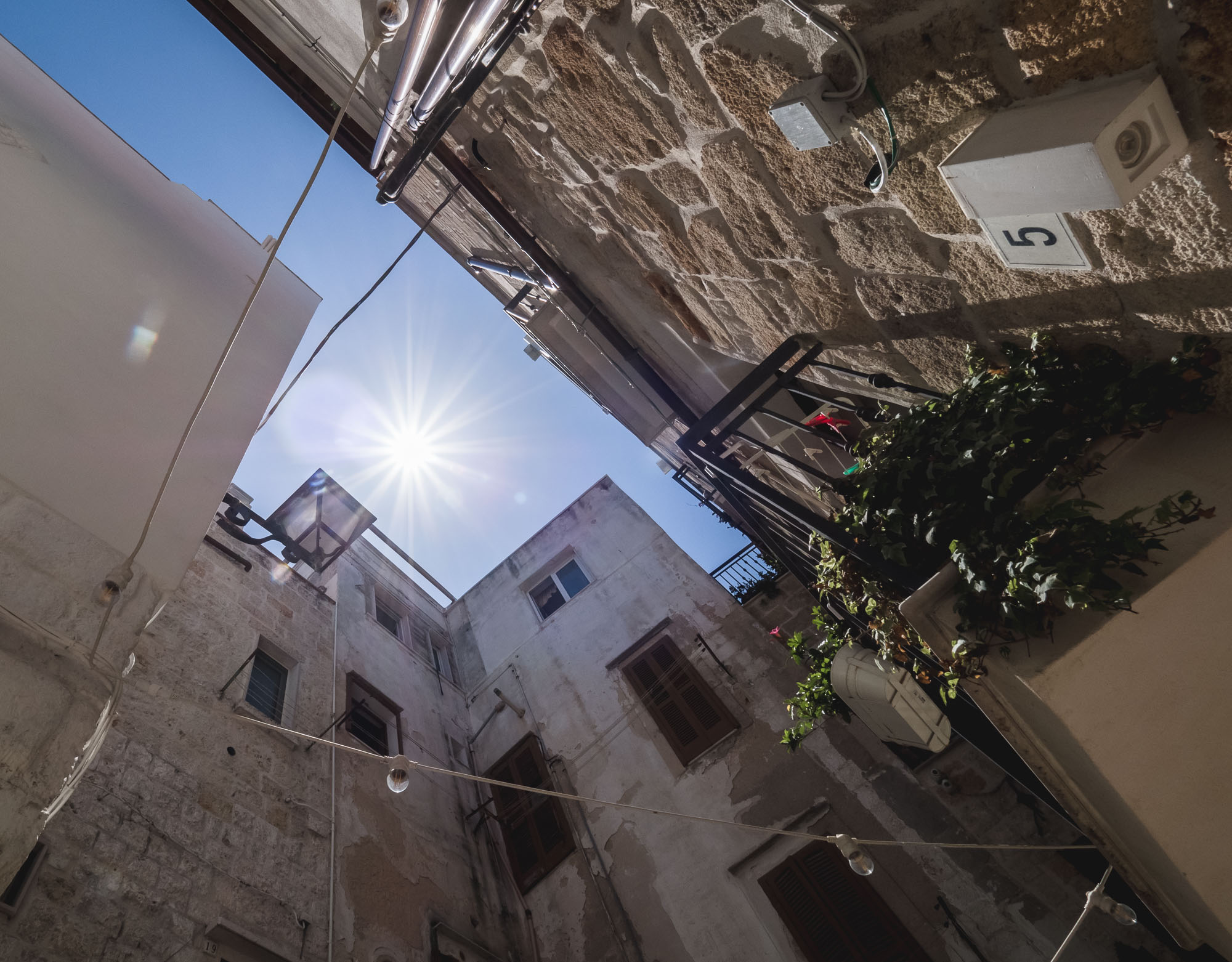
Up
Looking towards the sky between the tightly built houses.
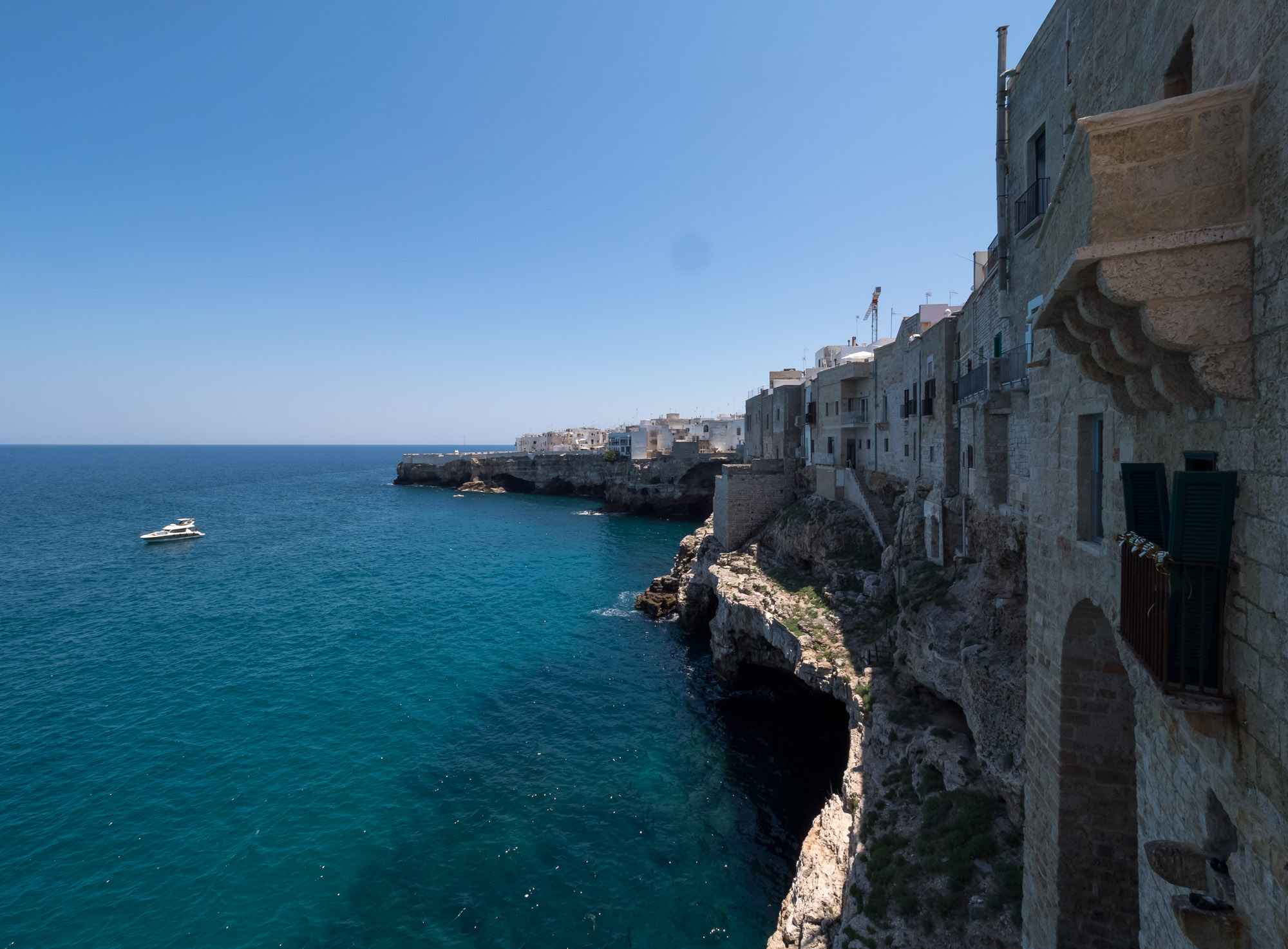
Cliffs
There are many small balconies and other spots in the city to enjoy these views.
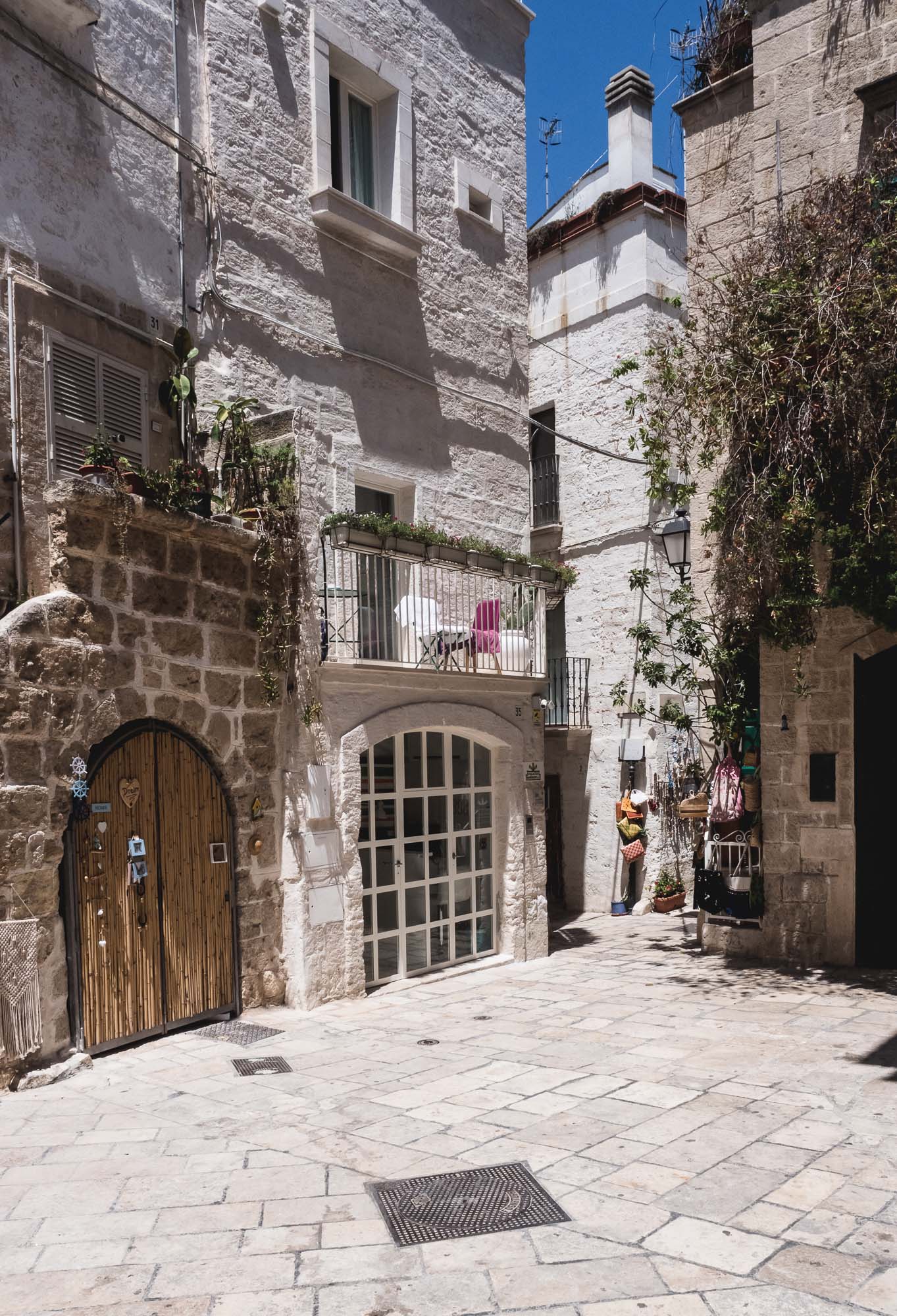
Cityscpe
Typical southern Italy impressions.
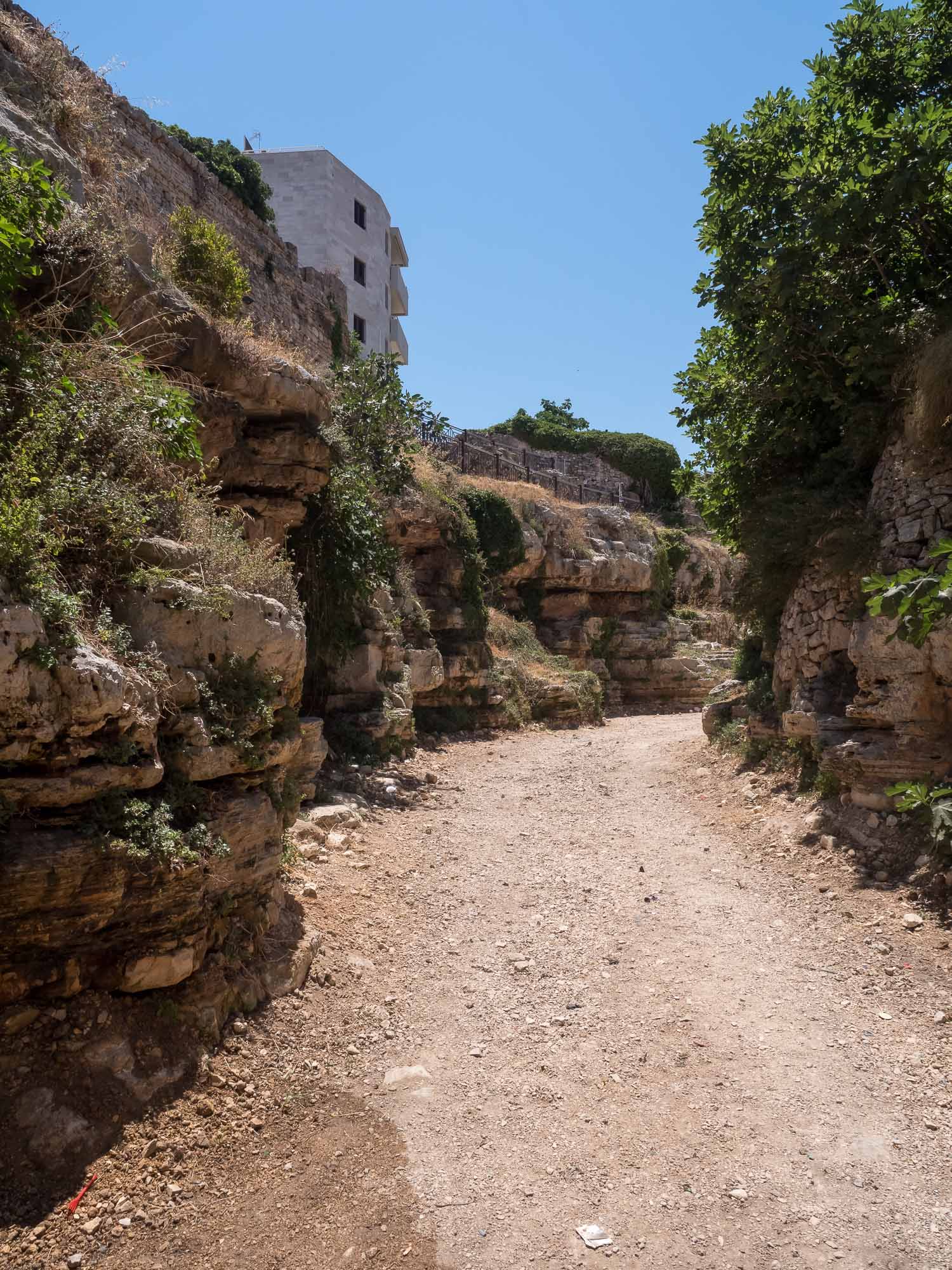
Riverbed
What I presume is a riverbed that was once flowing into the sea, and now leads to the famous beach, crossed by the Roman bridge.

Roman Bridge
The aforementioned bridge connecting two parts of the city.
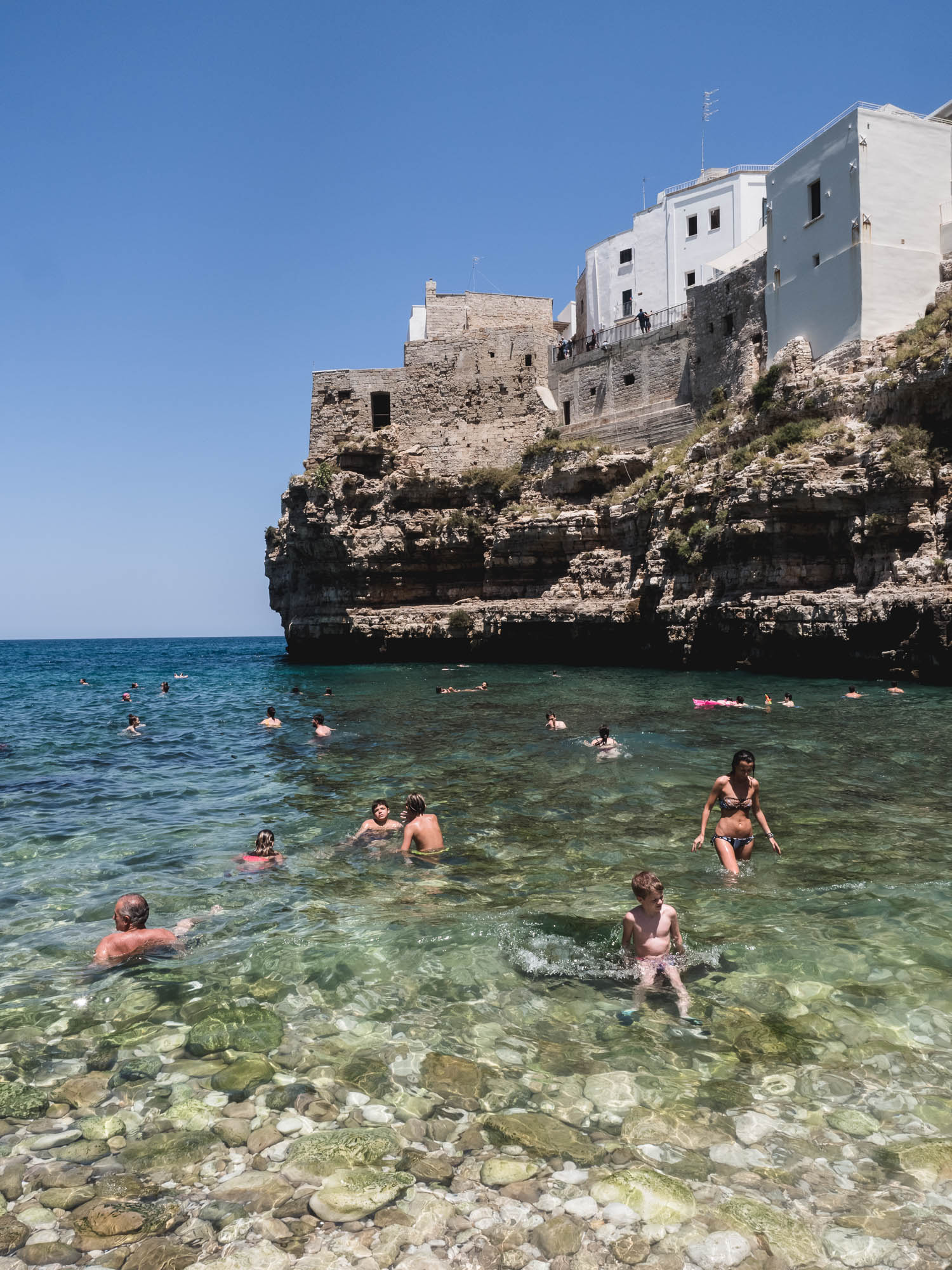
The Adriatic Sea
Beautiful water and good temperatures in July.

Unnatural Cliffs
Built on top the actual limestone rock are the houses framing the famous beach.
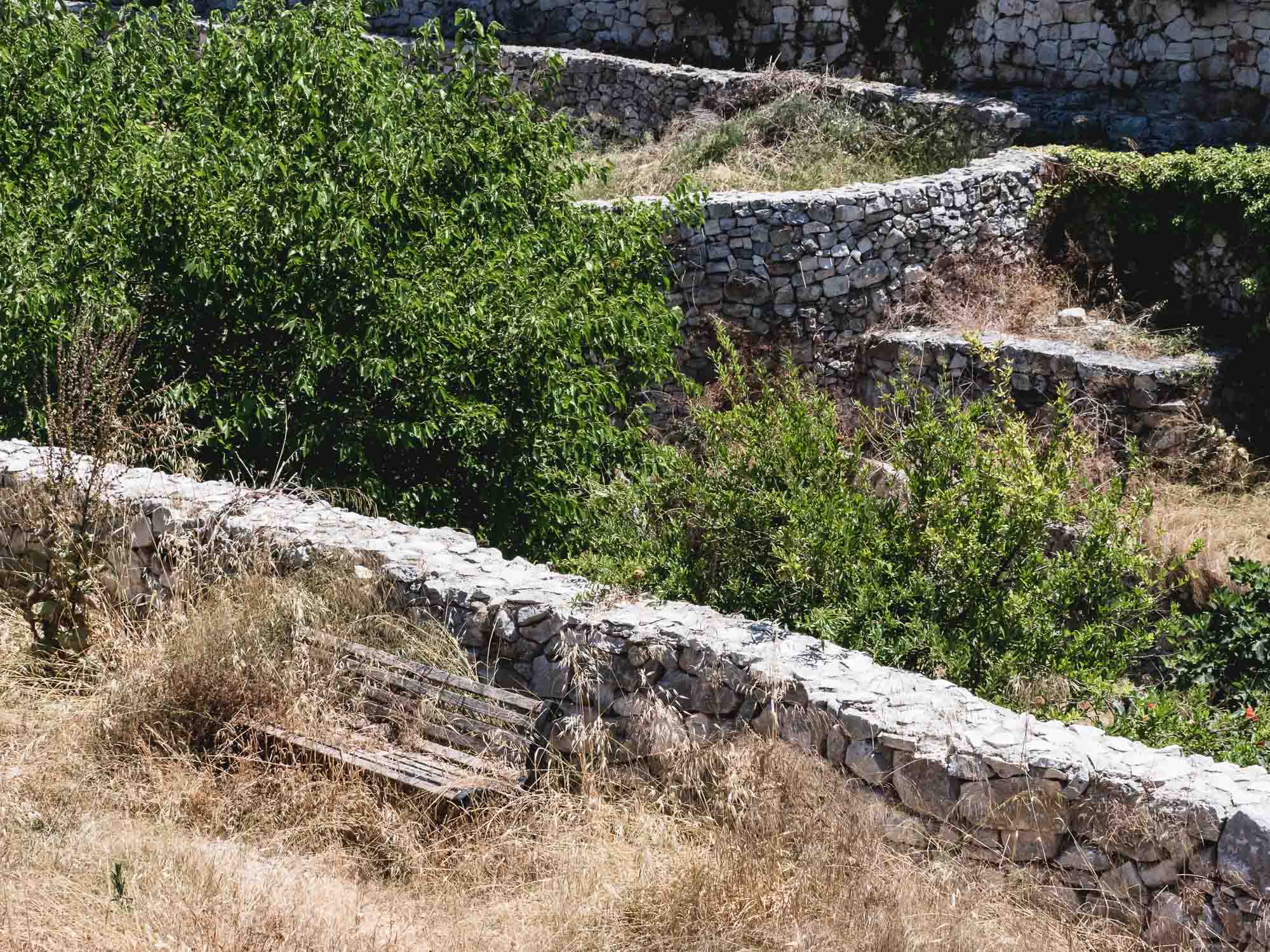
Unused
No one has been sitting here in a while.

Don't Come Closer
Obligatory cat photo, as I moved on from Polignano a Mare to the Grotte di Castellana.
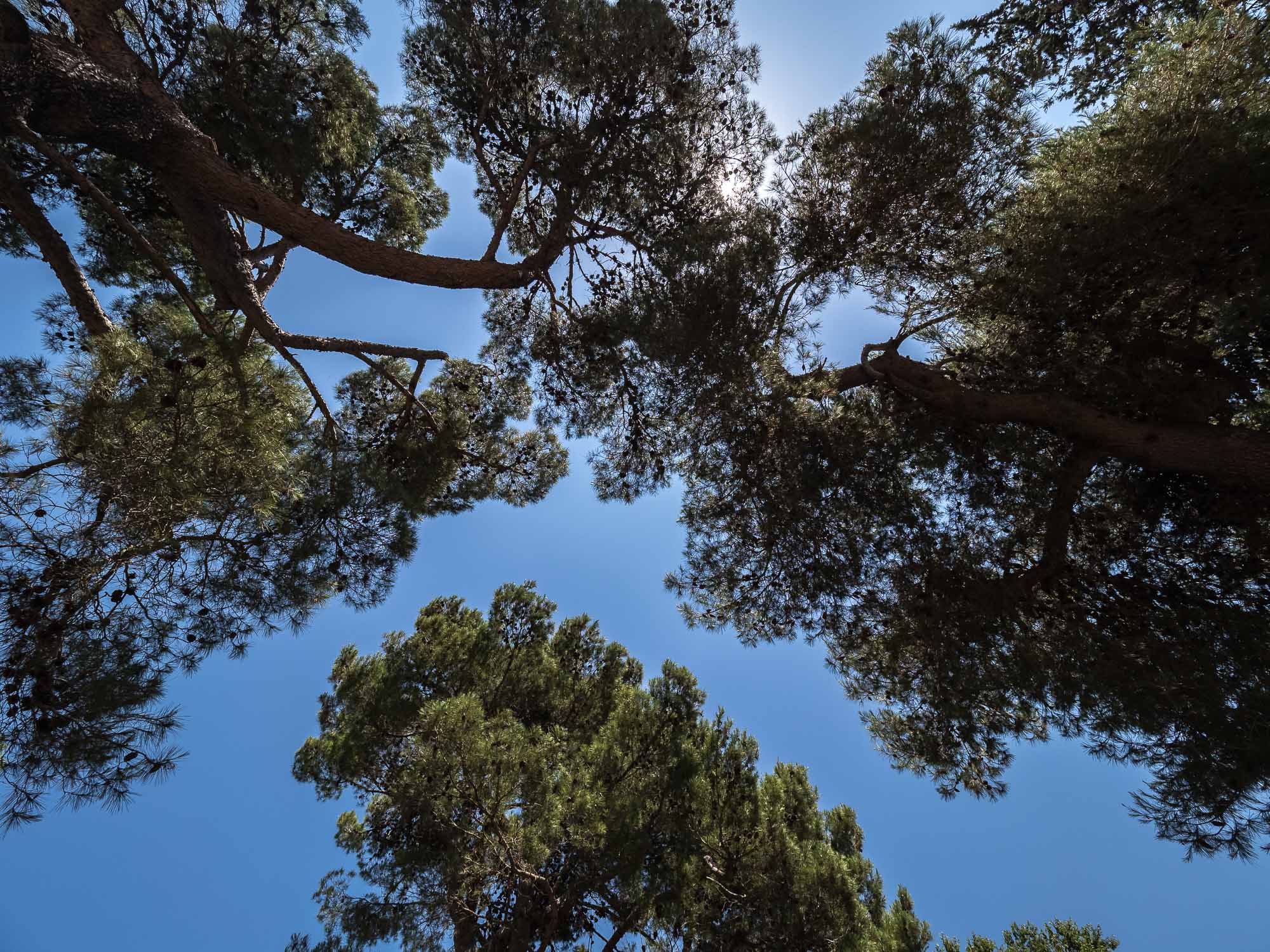
Trees
While Dubai does have more greenery than one would expect, you do miss this kind of view from time to time.
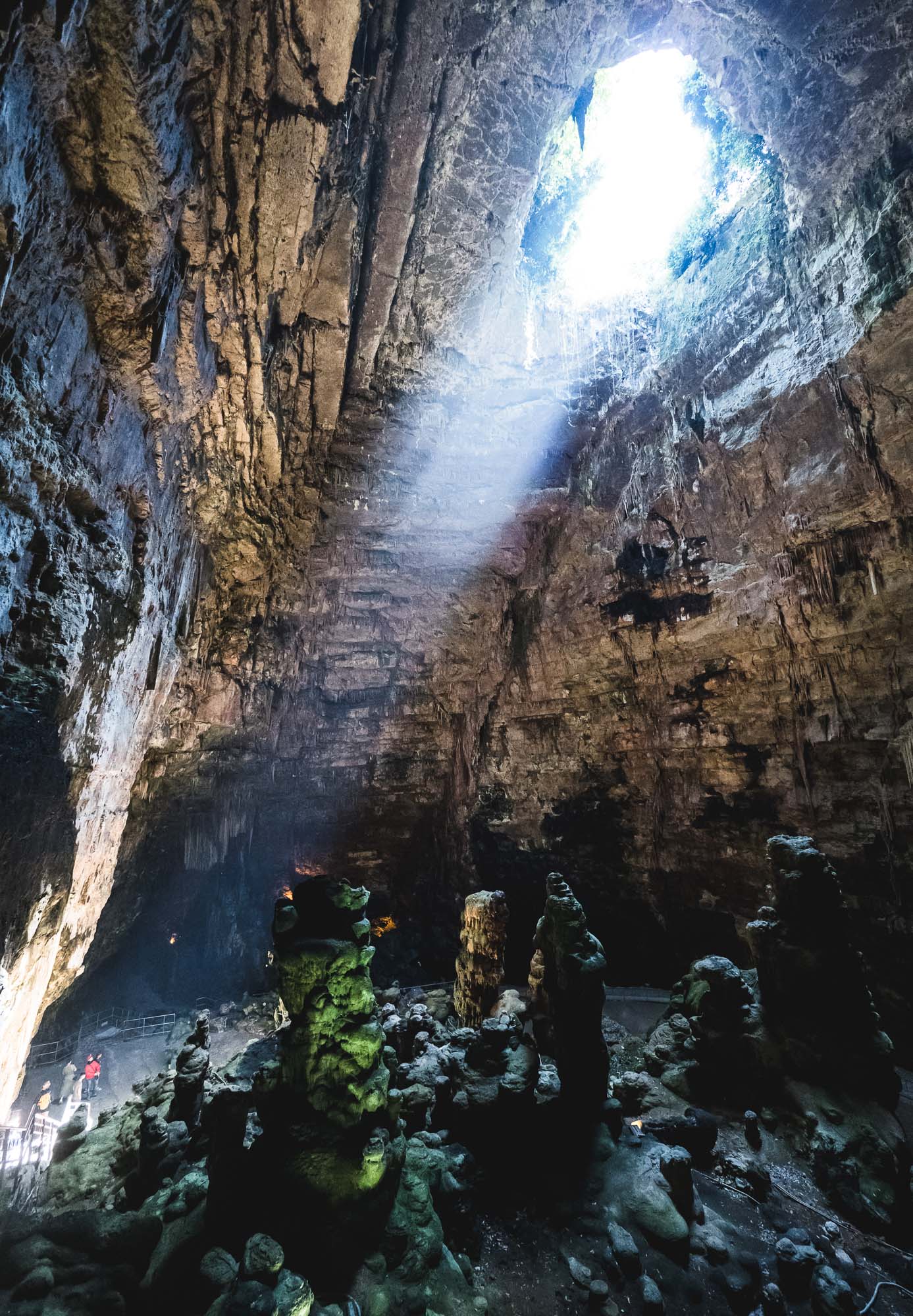
Grotte di Castellana
The main cave of the system, which is 3km overall. It's the only one with an opening to the outside, and also the only one you can take photos in.
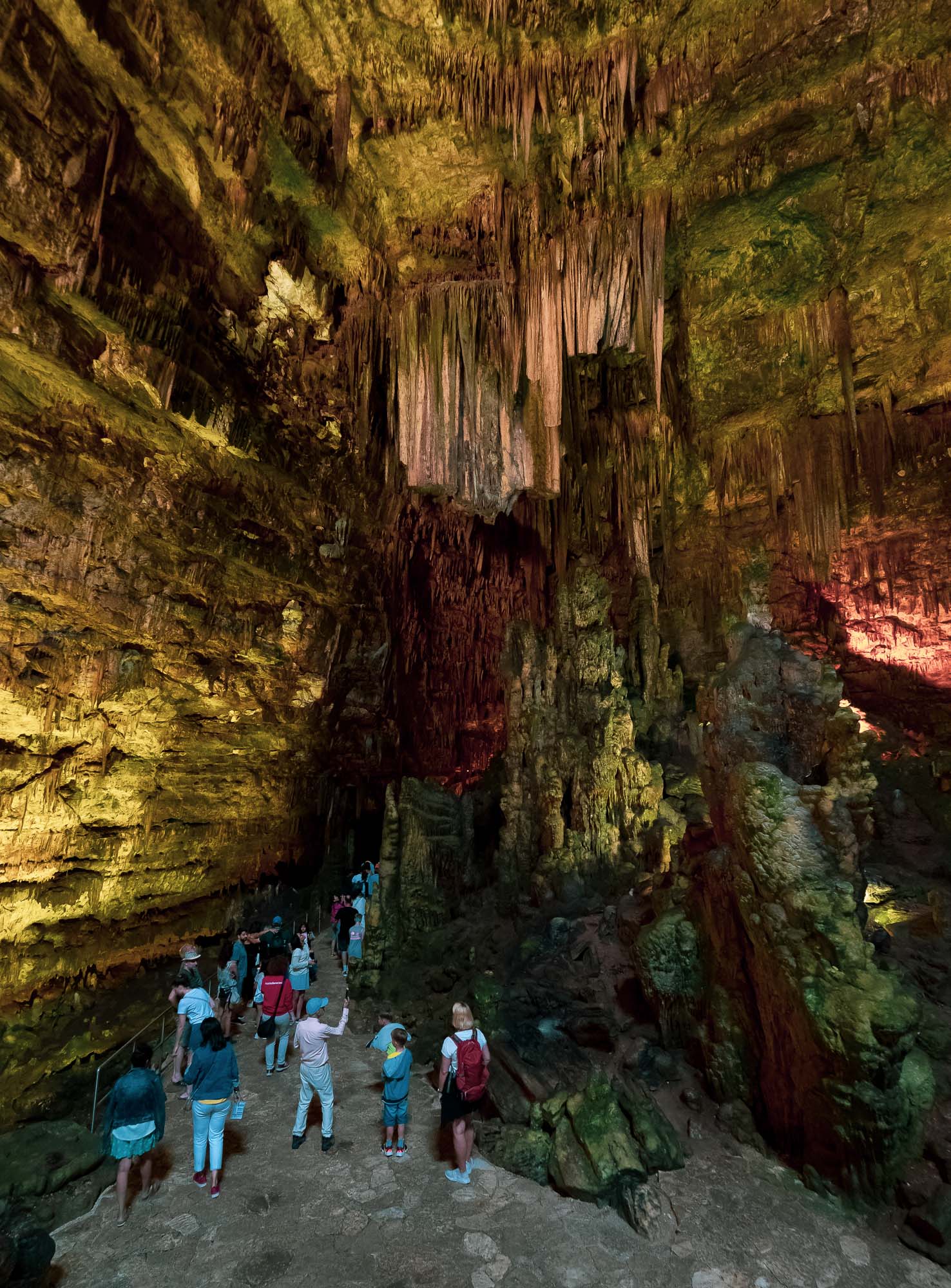
Stalactites and stalagmites embellish almost every wall in the caves. Humans for scale...
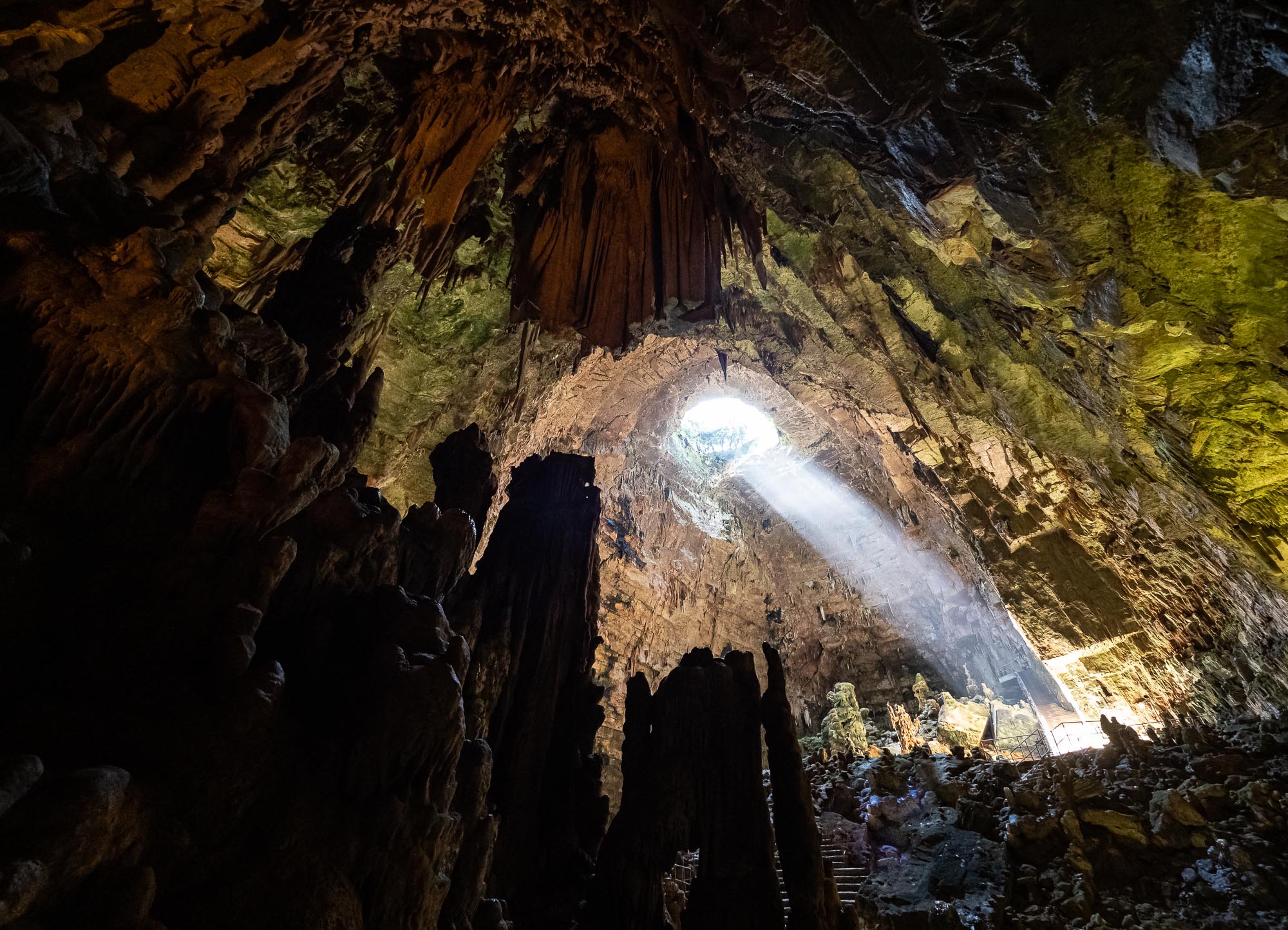
Backward
Looking backward to the main cave as you descend deeper.
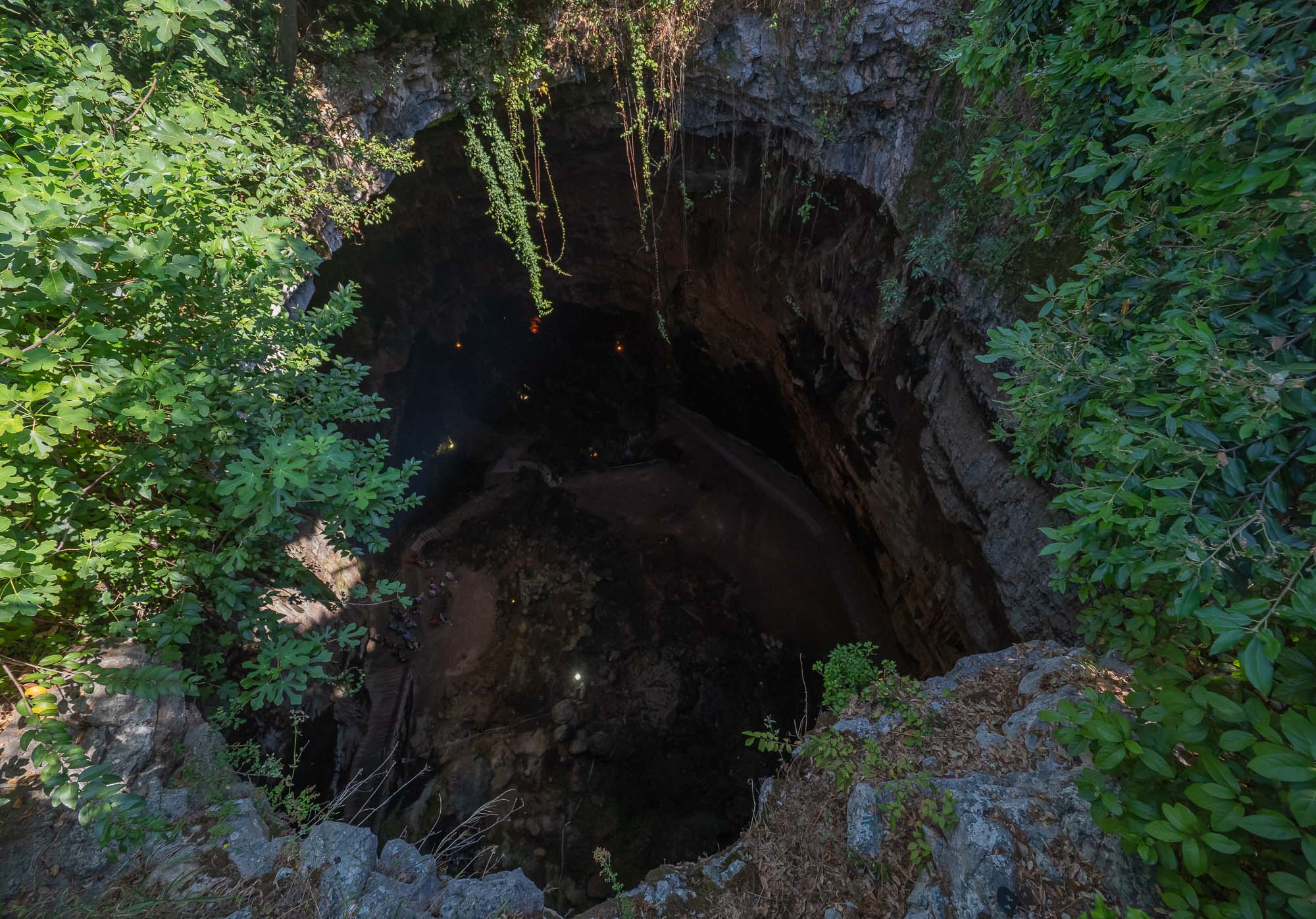
Downwards
This is the hole connecting the main cave to the outside world - it's hidden by trees and bushes, but can be viewed directly from the street.
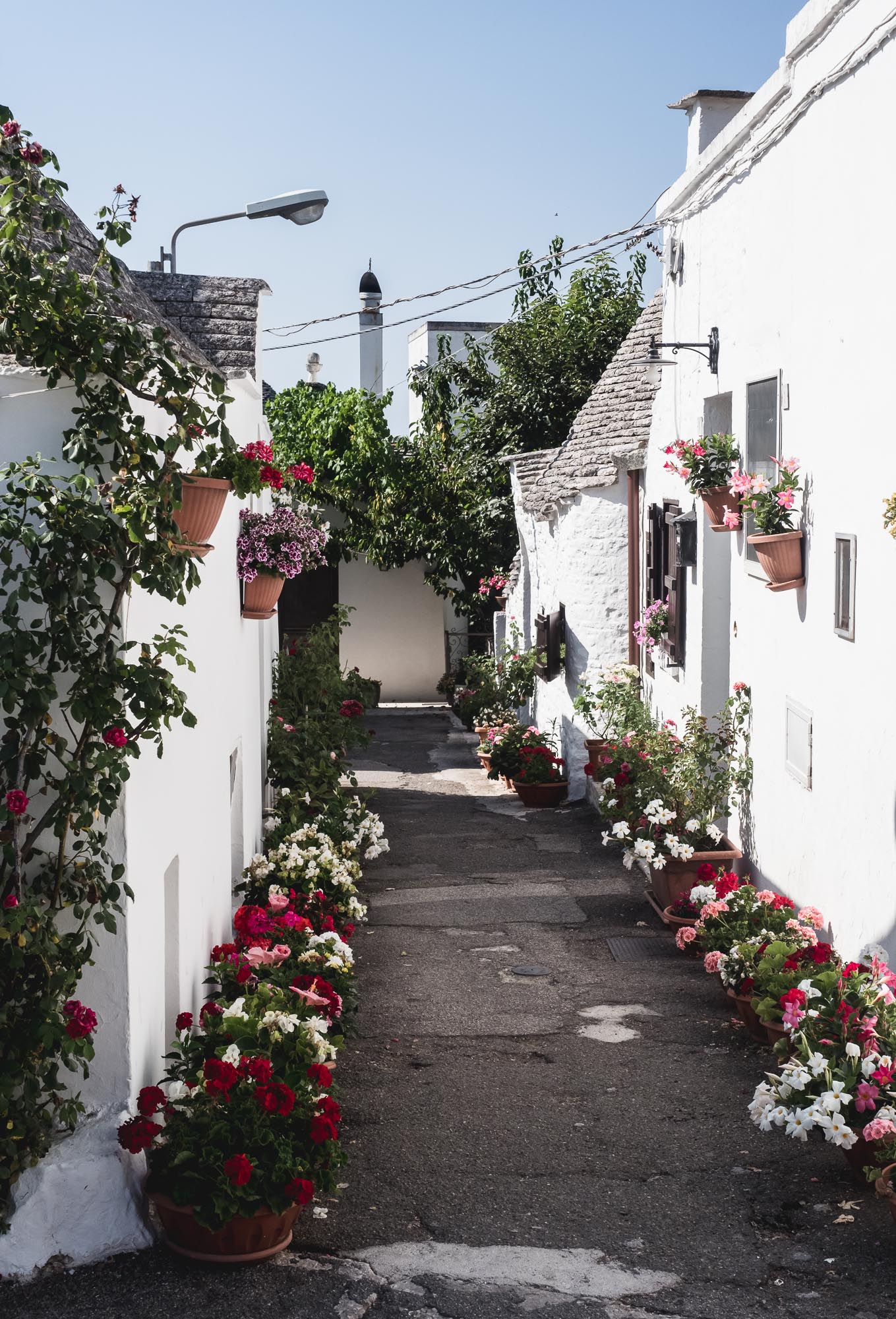
Alberobello
The next stop was Alberobello, famous for its Trullo buildings.
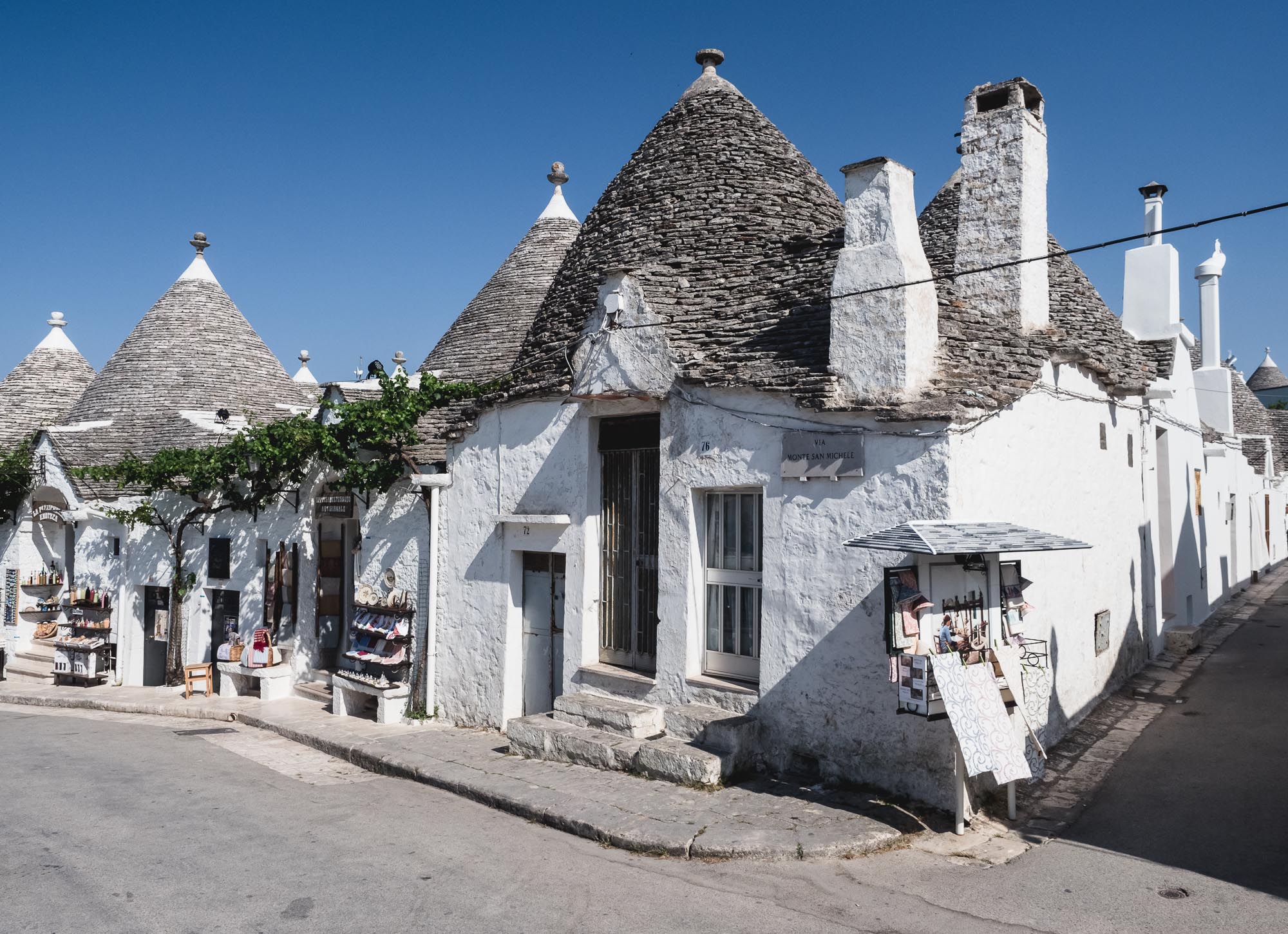
Trullo
The traditional Apulian dry stone hut with its conical roof.

History
Generally thought to be temporary storage or accommodation, these houses have been around for 200 years and more.

Legend
It is said that the houses were made of dry wall so they could be easily dismantled when tax inspectors were in the area, as historically Apulia had high property taxation.
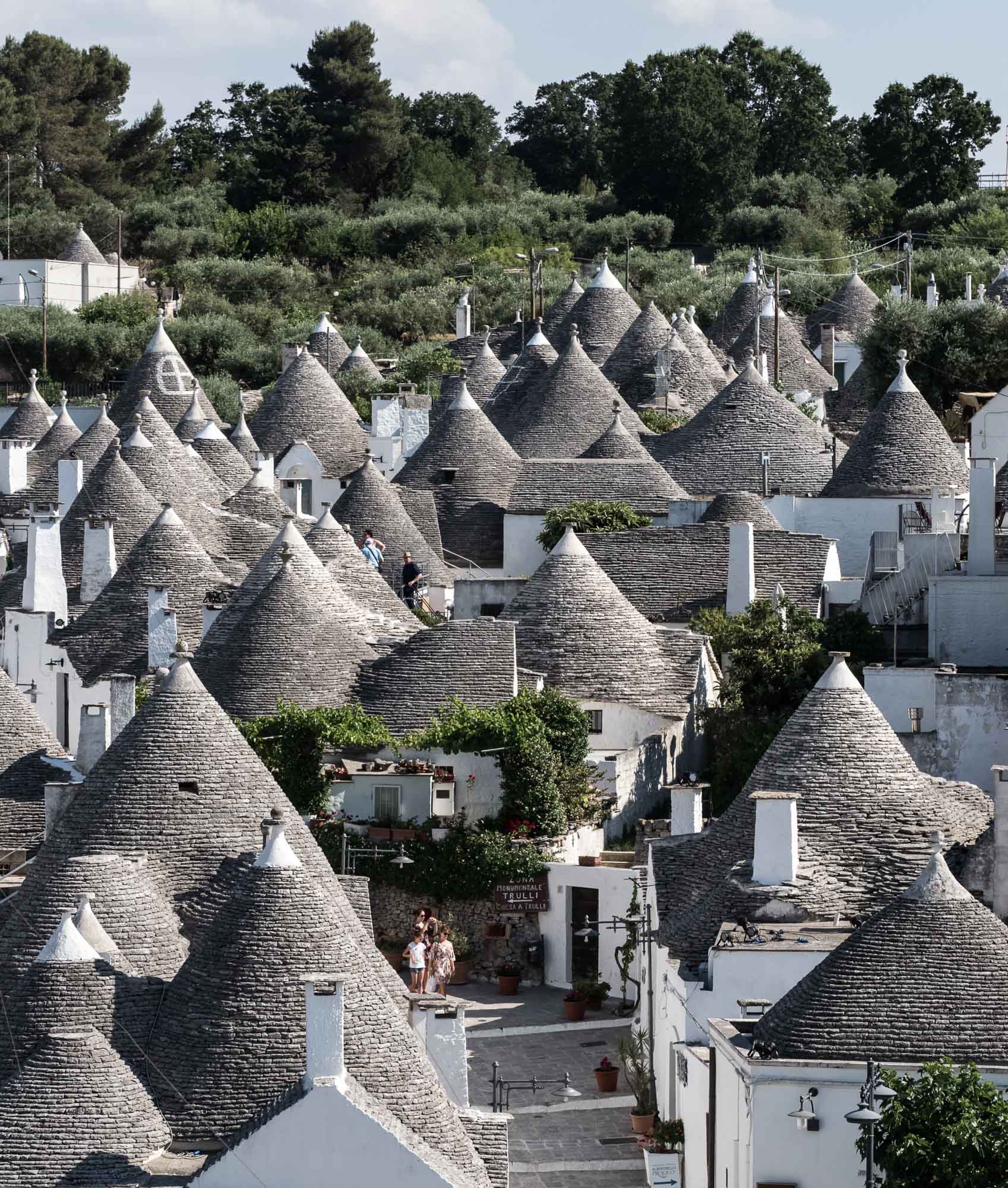
Protected
The area is a UNESCO world heritage site.
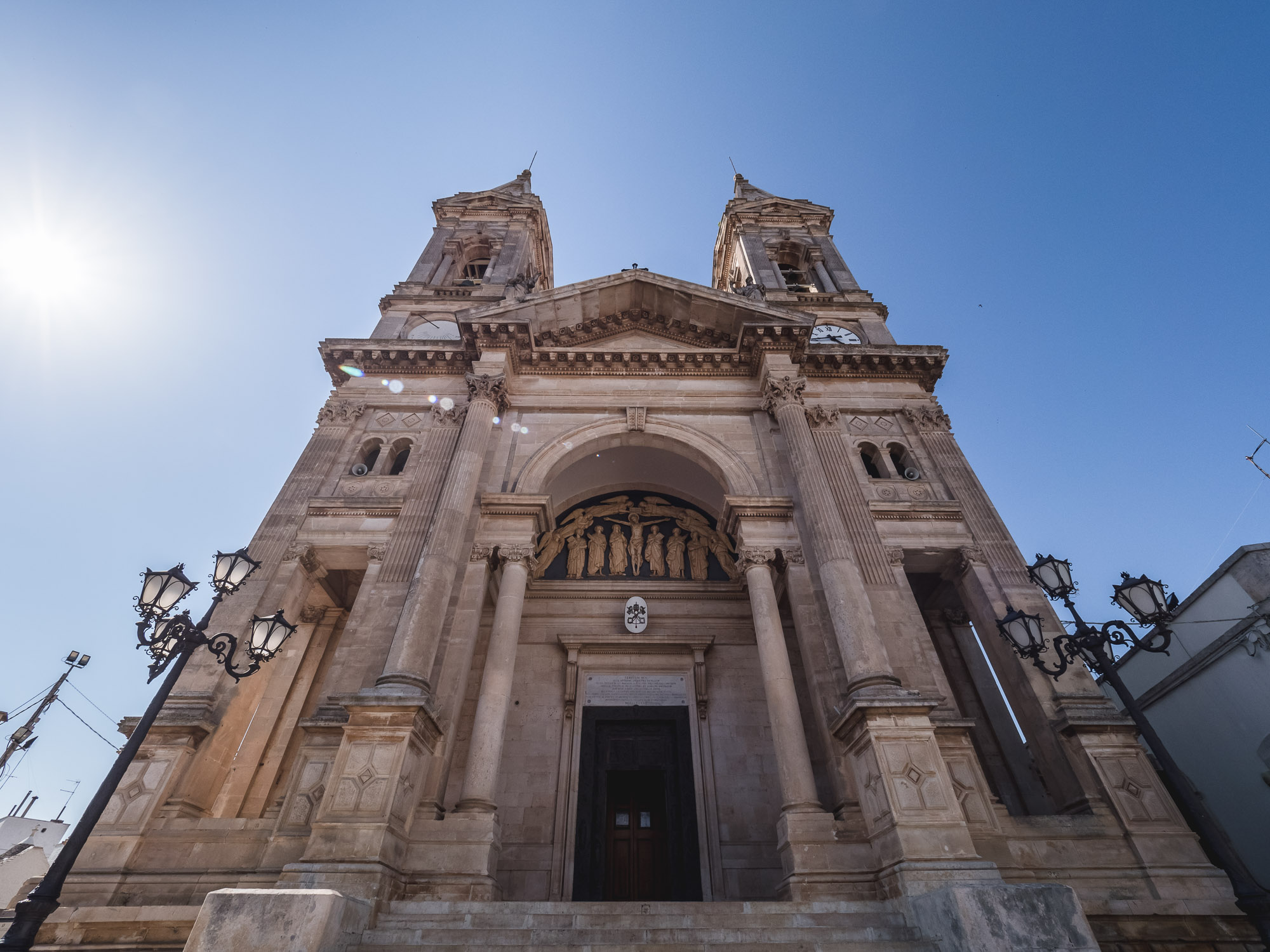
Basilica of Saints Cosmas and Damian
The centre of the religious history of the city.
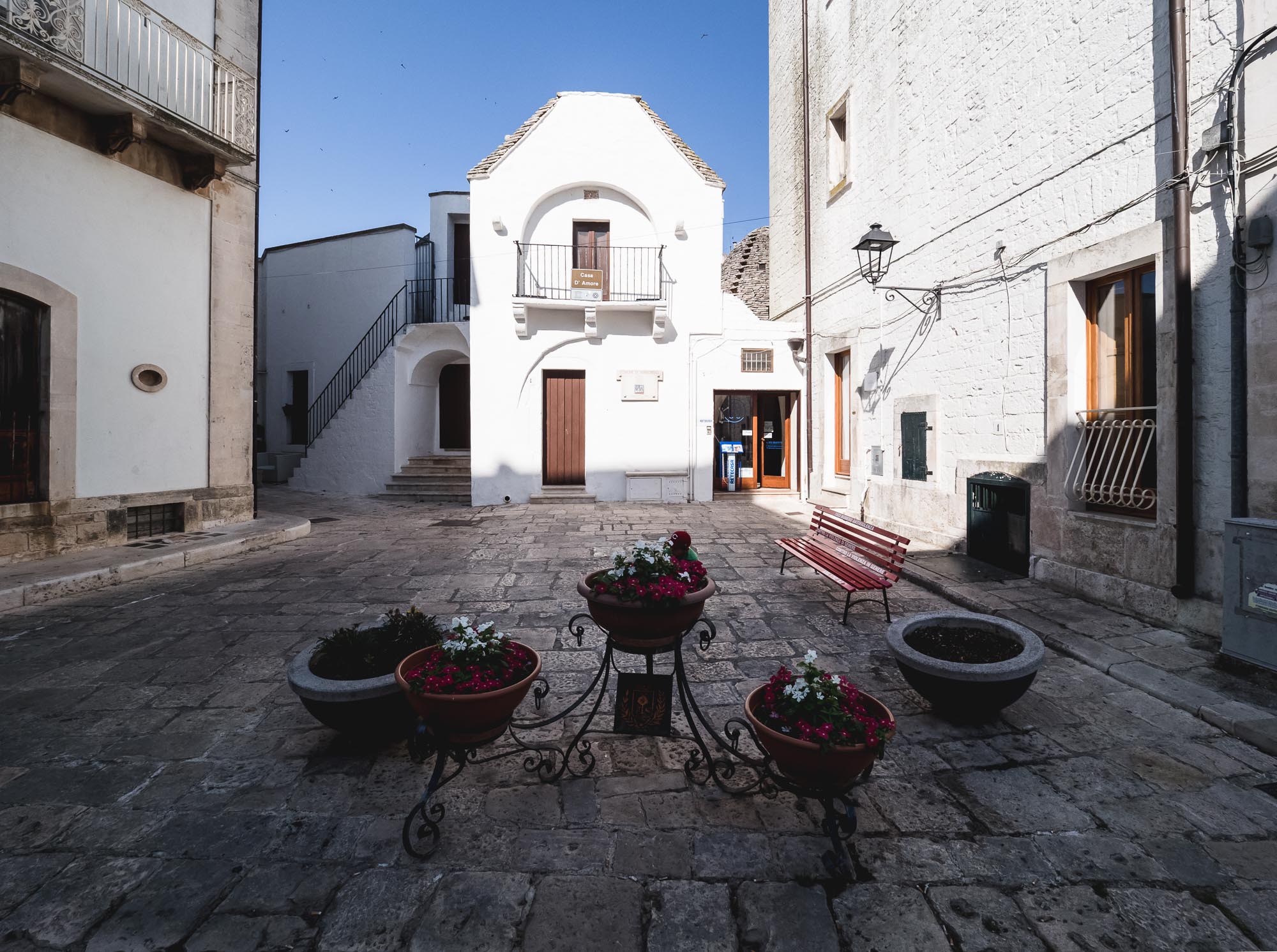
Casa d'Amore
A national monument, named after its former owner, for its role in the victory against the tyranny of the counts in the 18th century.

Conversion
Most of the Trullo houses have been turned into shops, tourist attractions, restaurants and small hotels.

Ostuni Streets
One of the many stairs in the city.
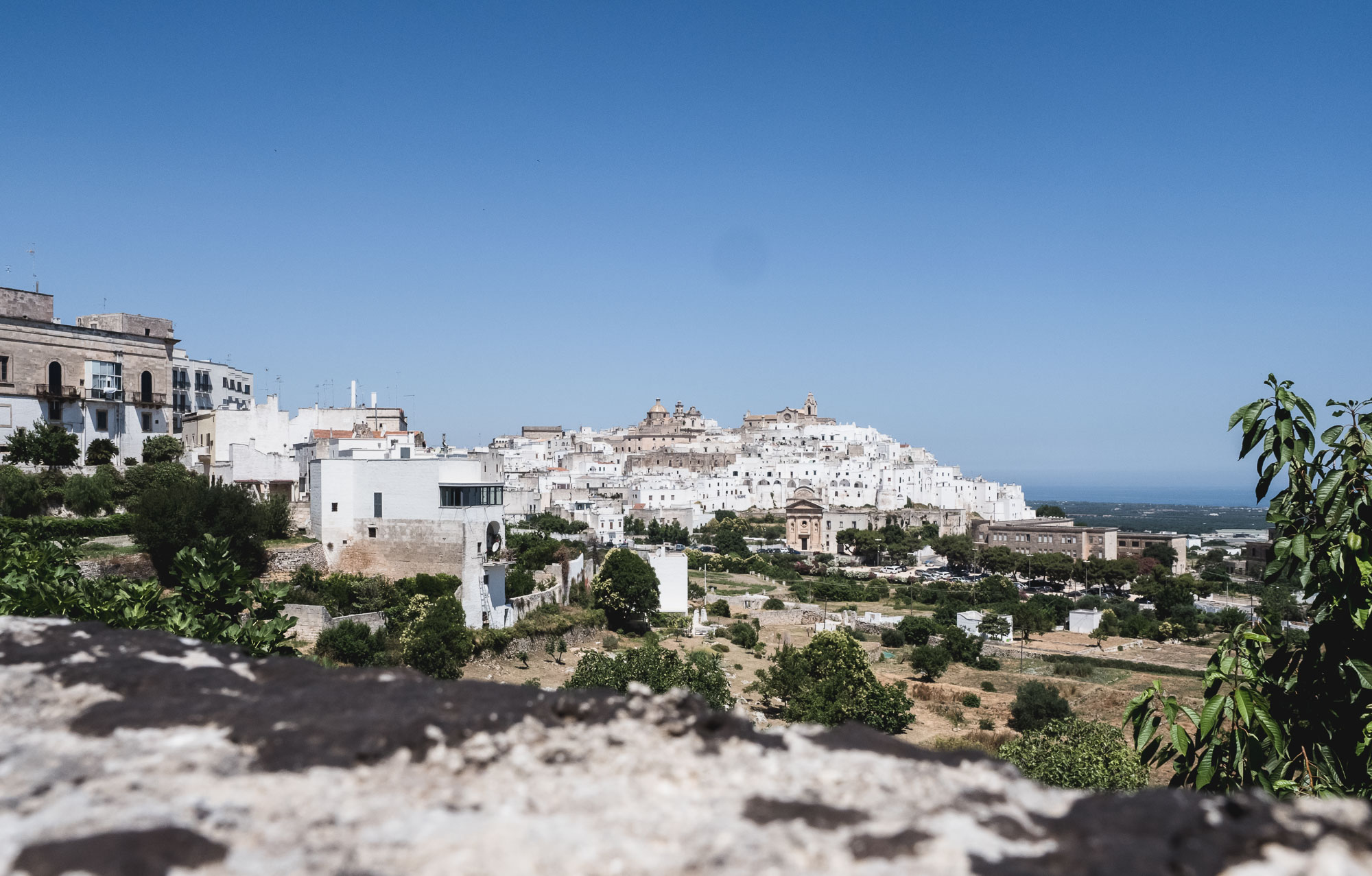
Ostuni
Or aptly nicknamed "The White City"
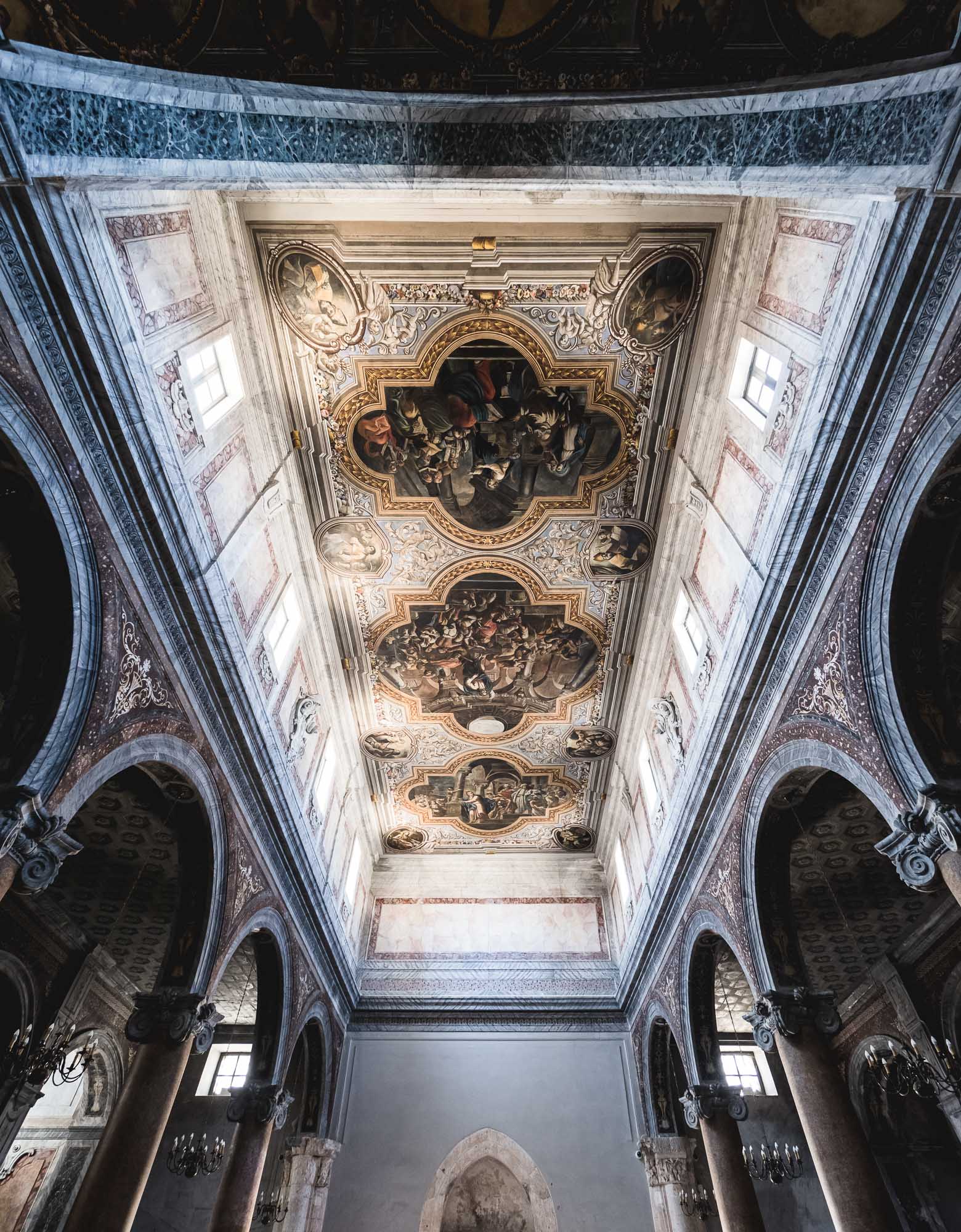
Interior of Ostuni Cathedral
The ceiling creates an impression of additional space beyond the roof.
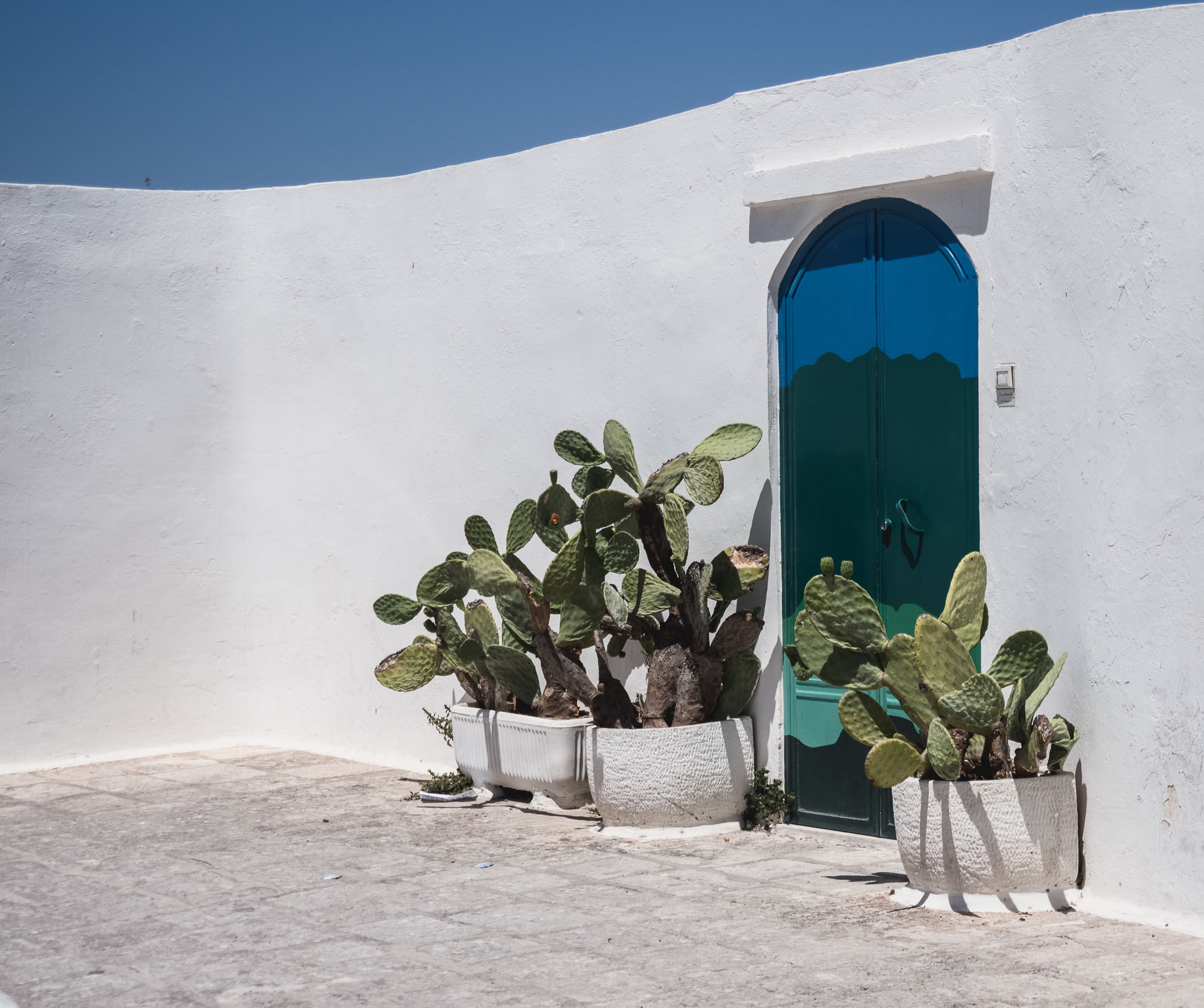
Succulent Door
Typical scene with plants framing doors and windows.
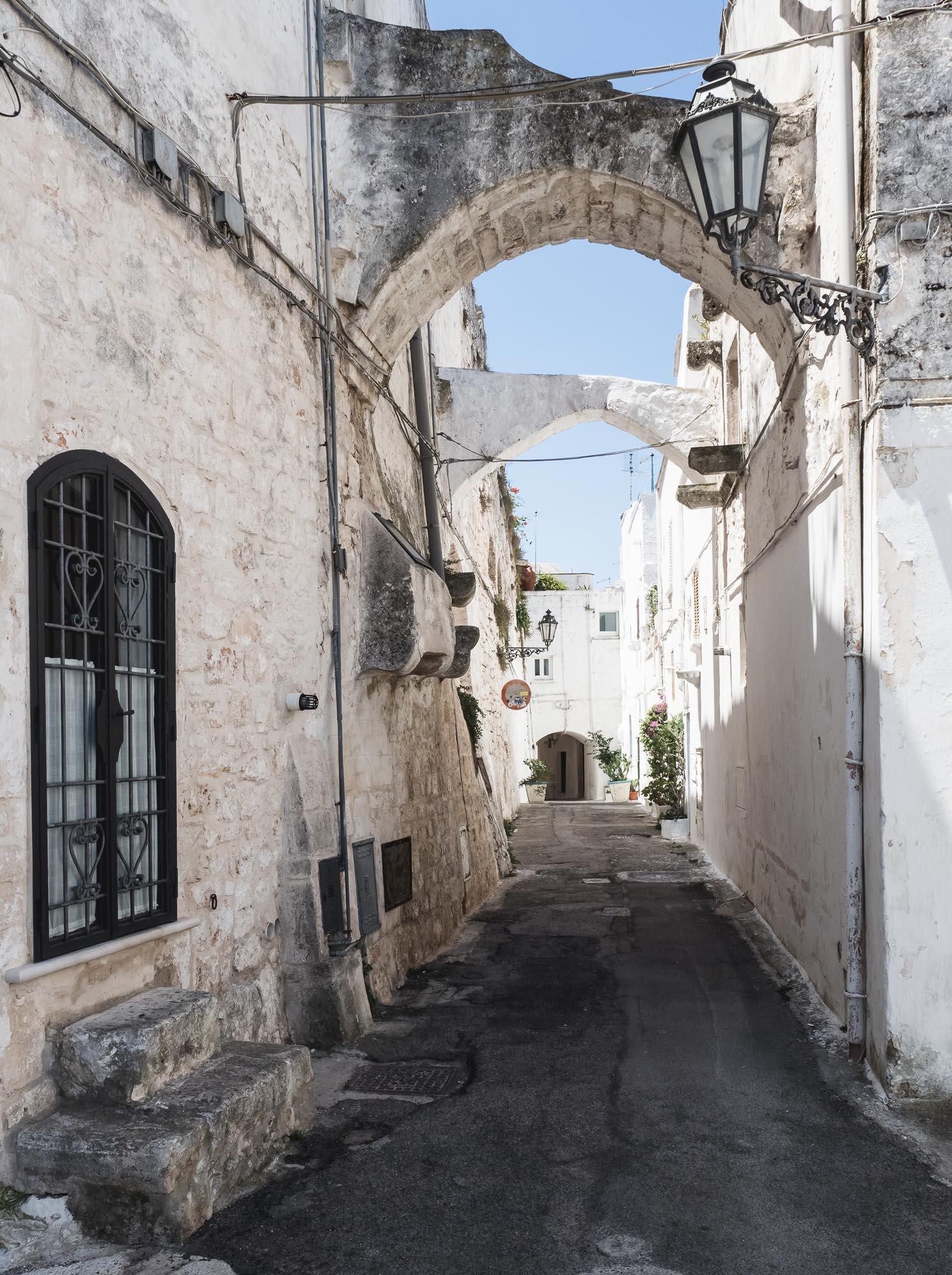
Streets of Ostuni
The arched streets are a typical feature of the city.
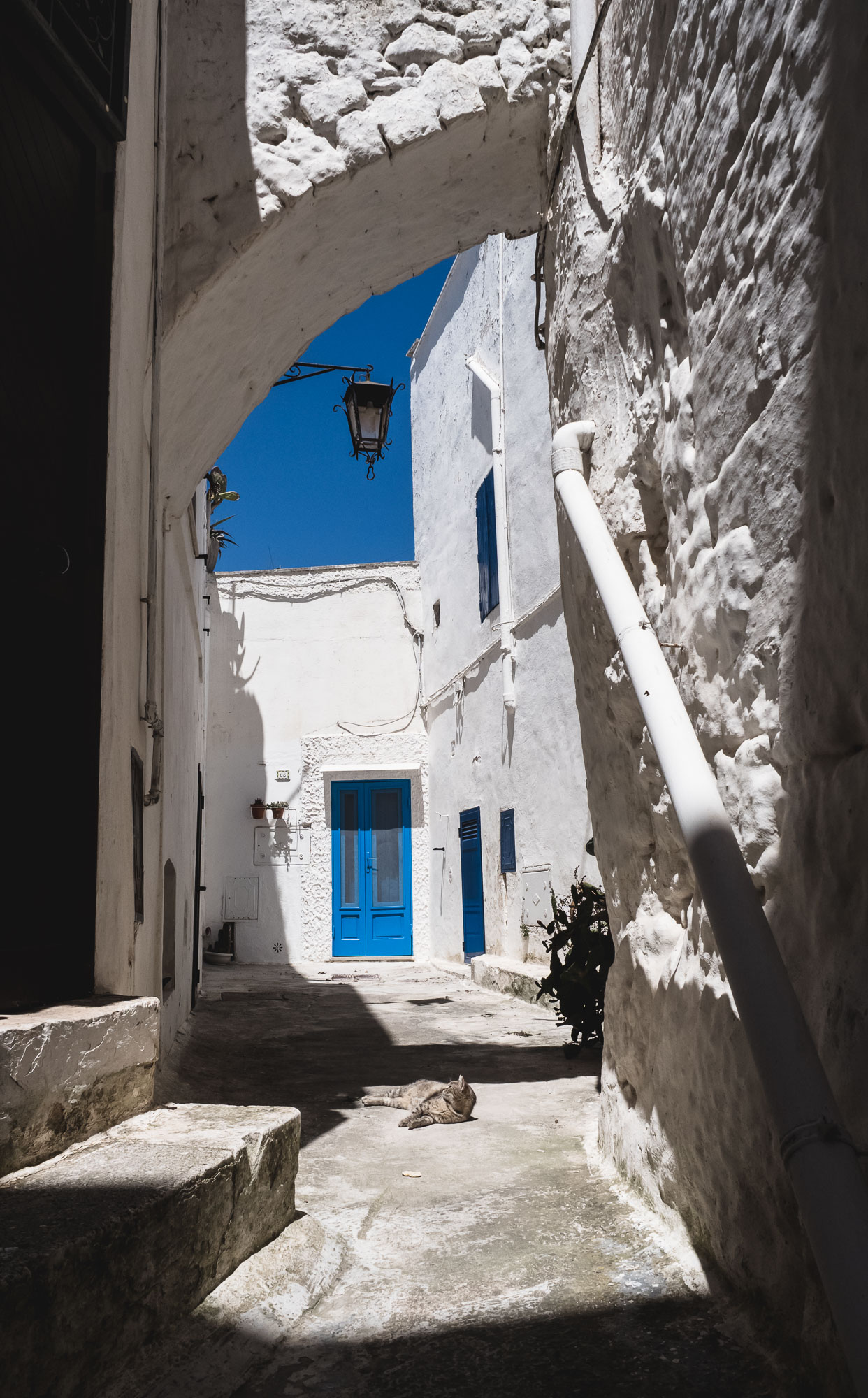
Just Chilling
The life of a cat.

Narrow
Even for humans, this is a one way street.
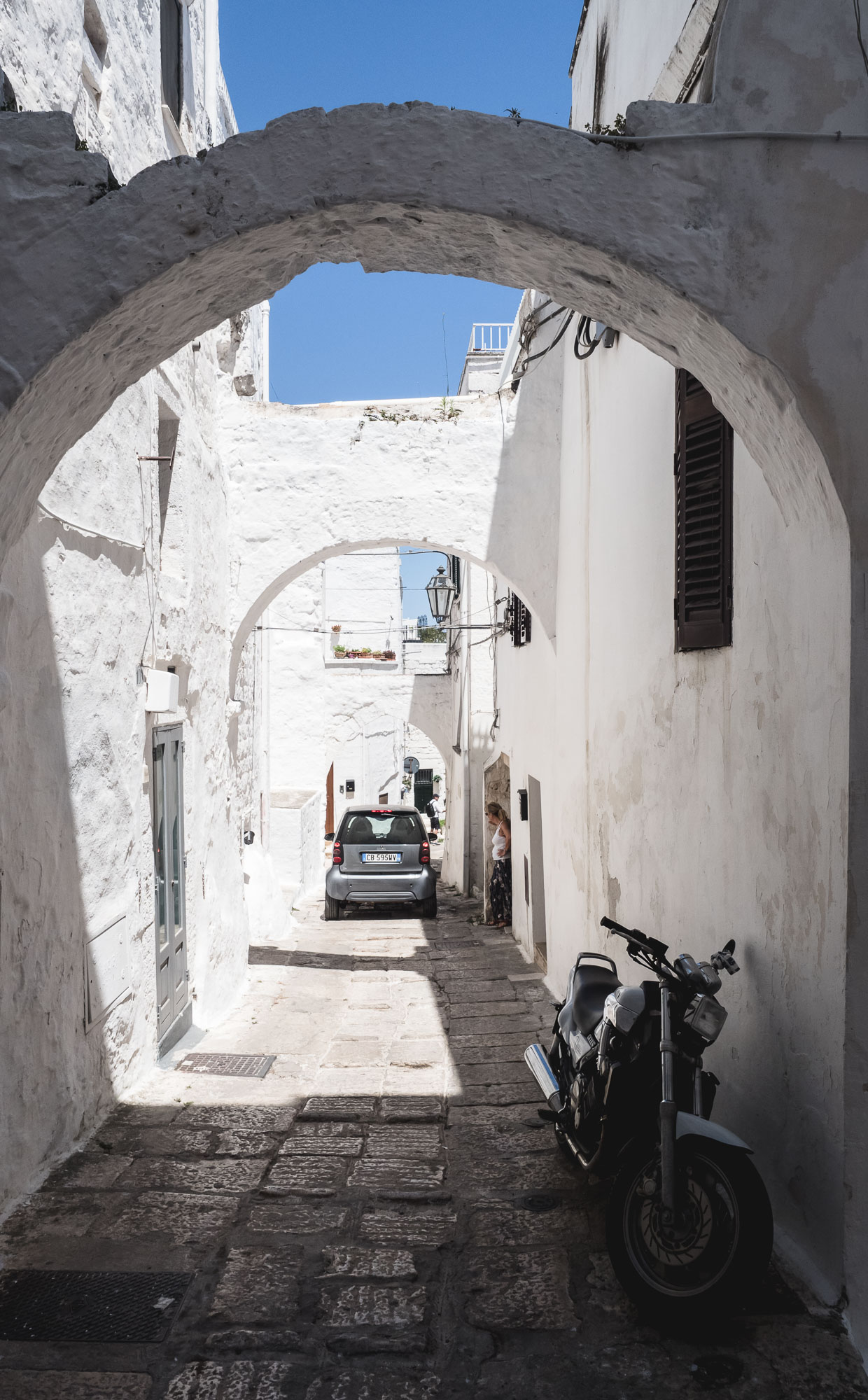
Modes of Transport
Not made for anything bigger than a Smart.
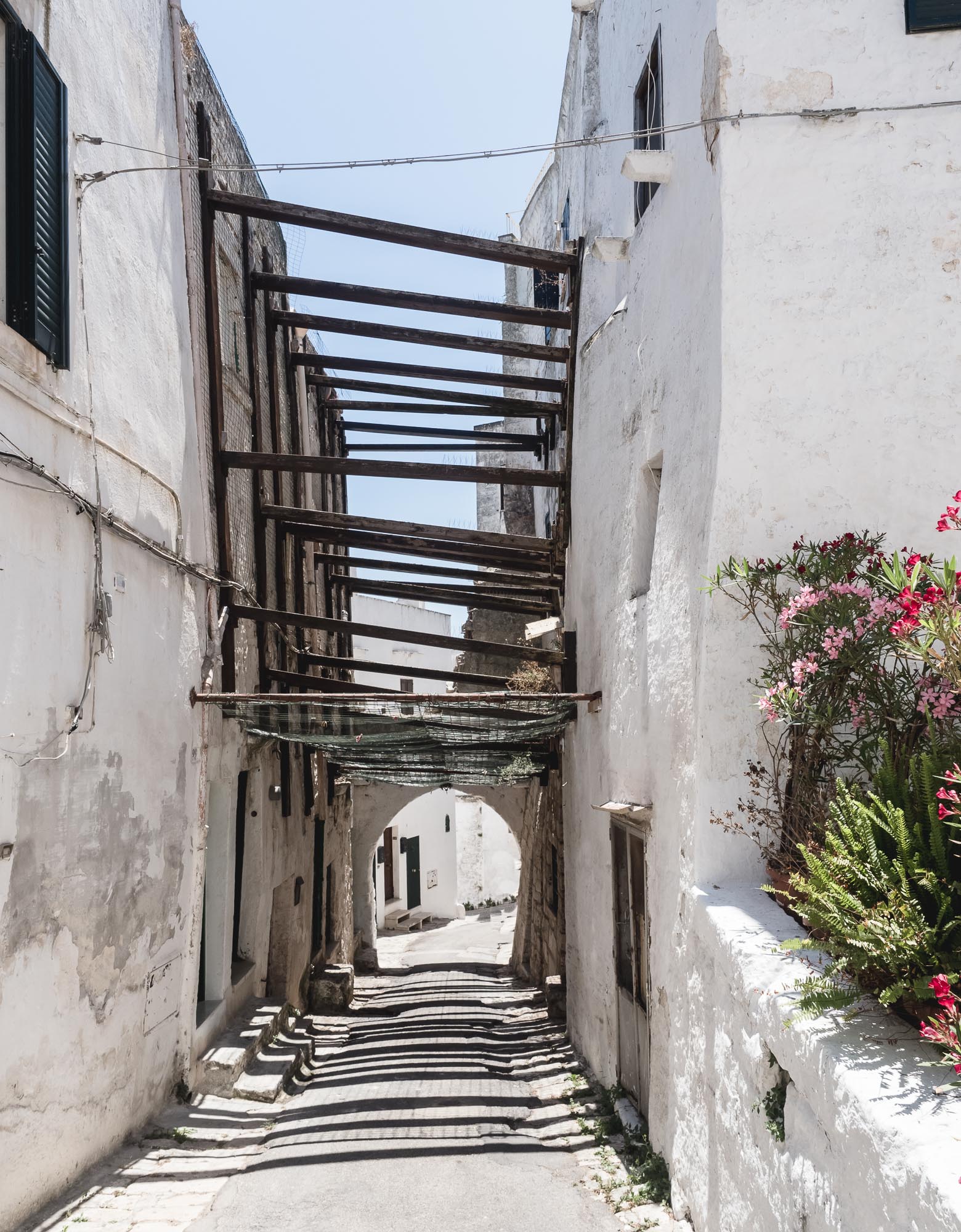
Support
The city was remarkably - and pleasantly - quiet. Not sure it would withstand hords of people.
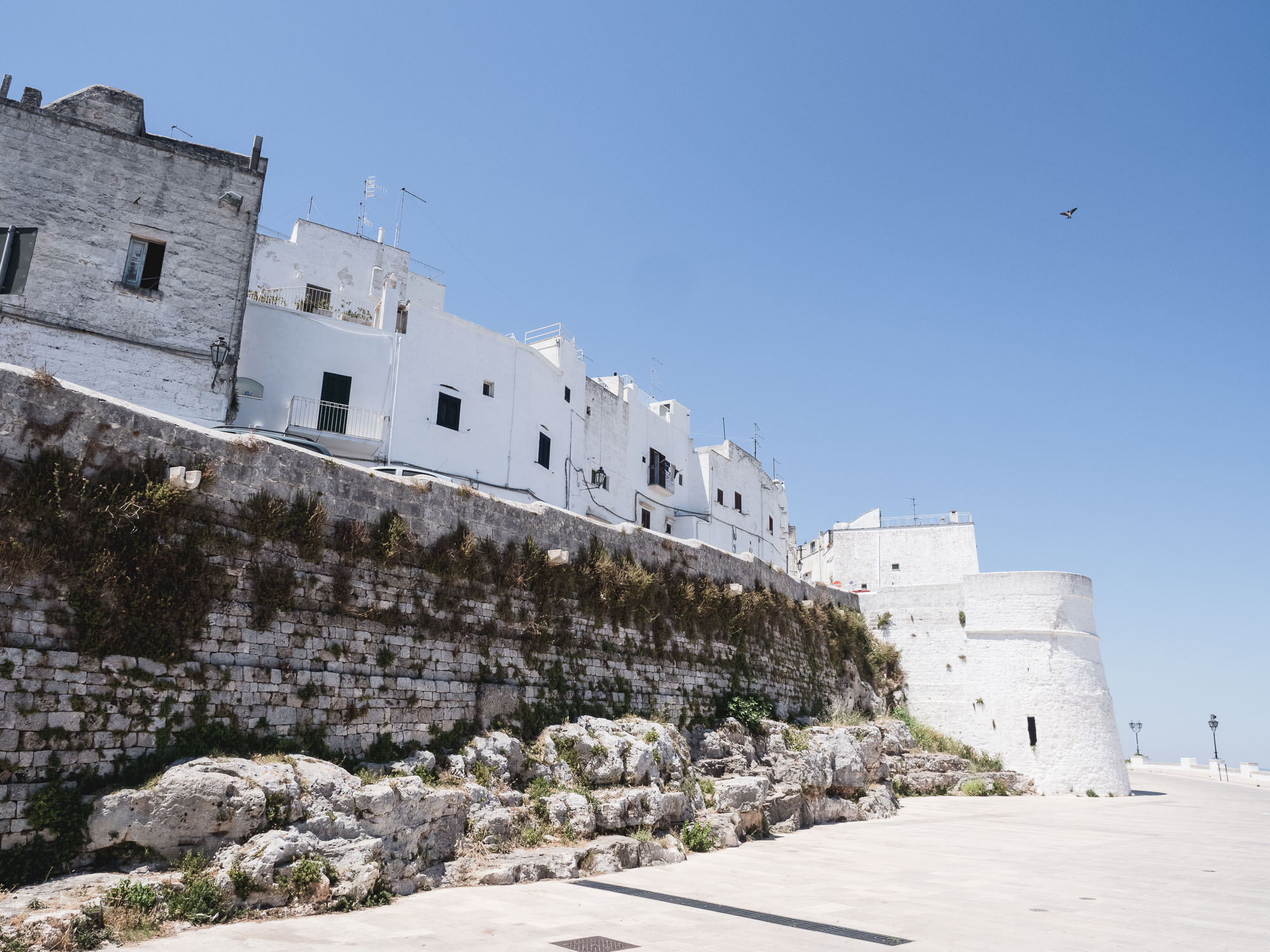
City Walls
The wall surrounding the elevated plateu on which Ostuni's historic centre is located.
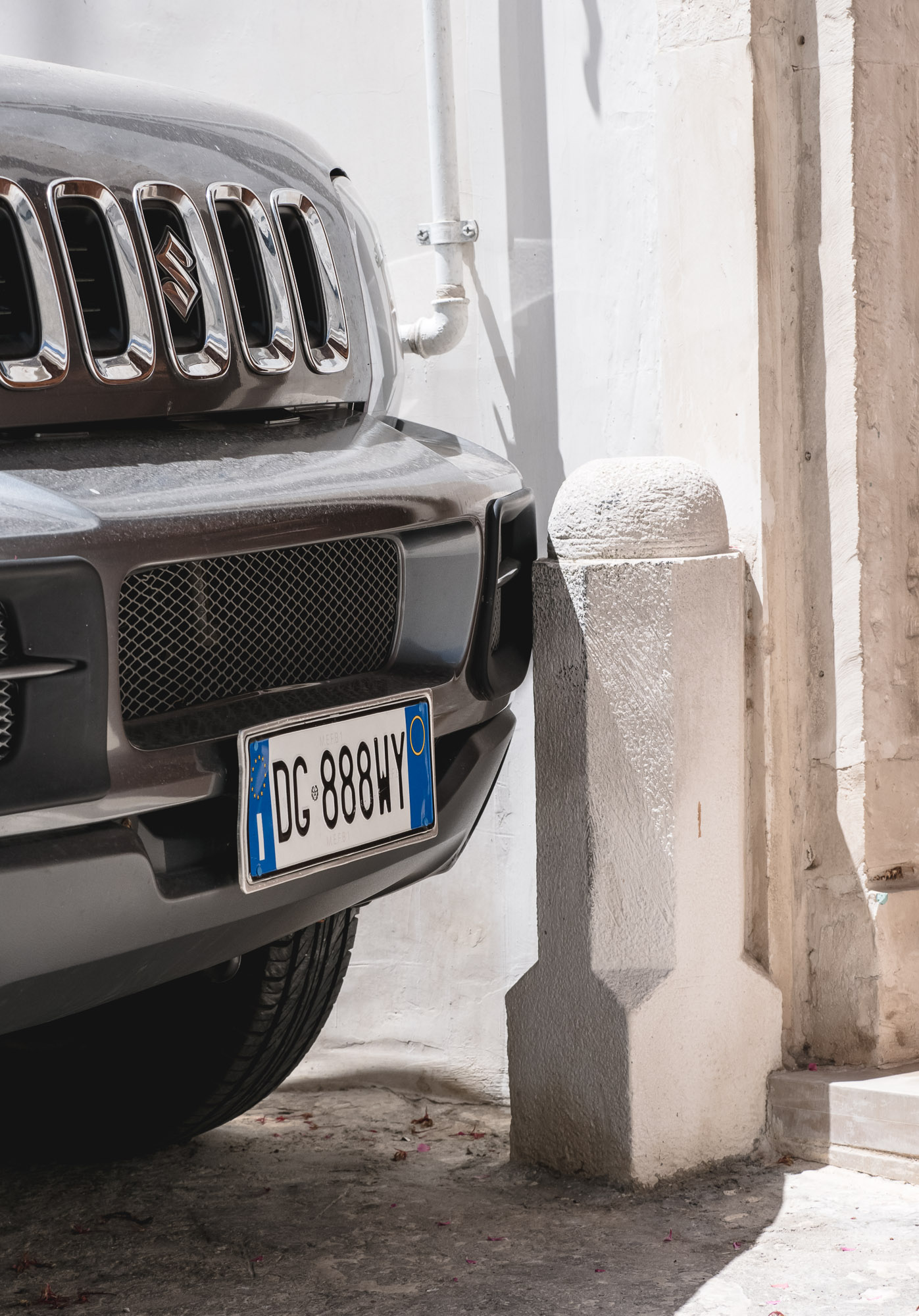
Tight
As I said, not much space for anything bigger than a Smart.

Plant Stairs
Even without a door, stairs must be decorated with some plants.
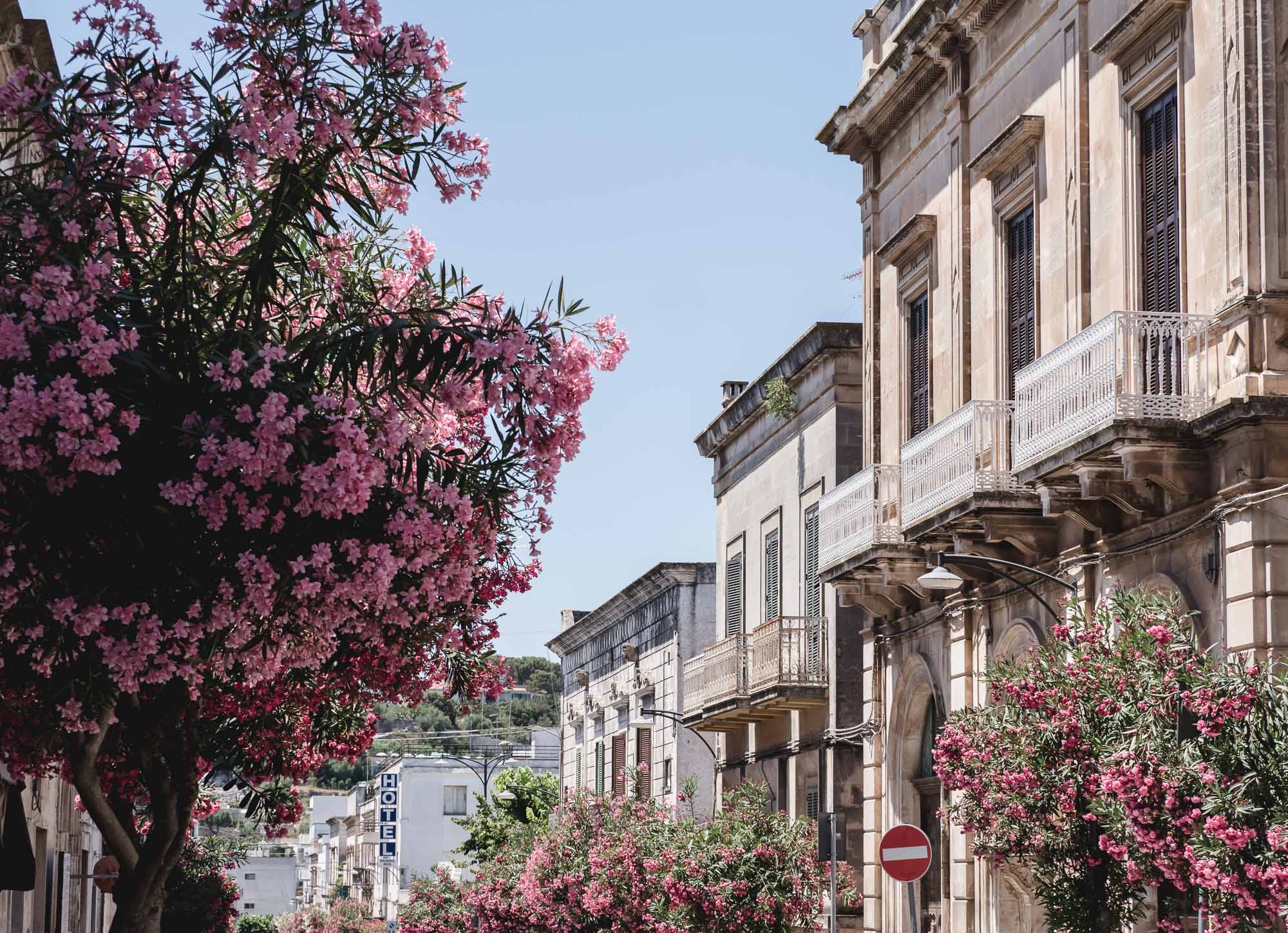
Blossoming
One of the main streets of Ostuni.
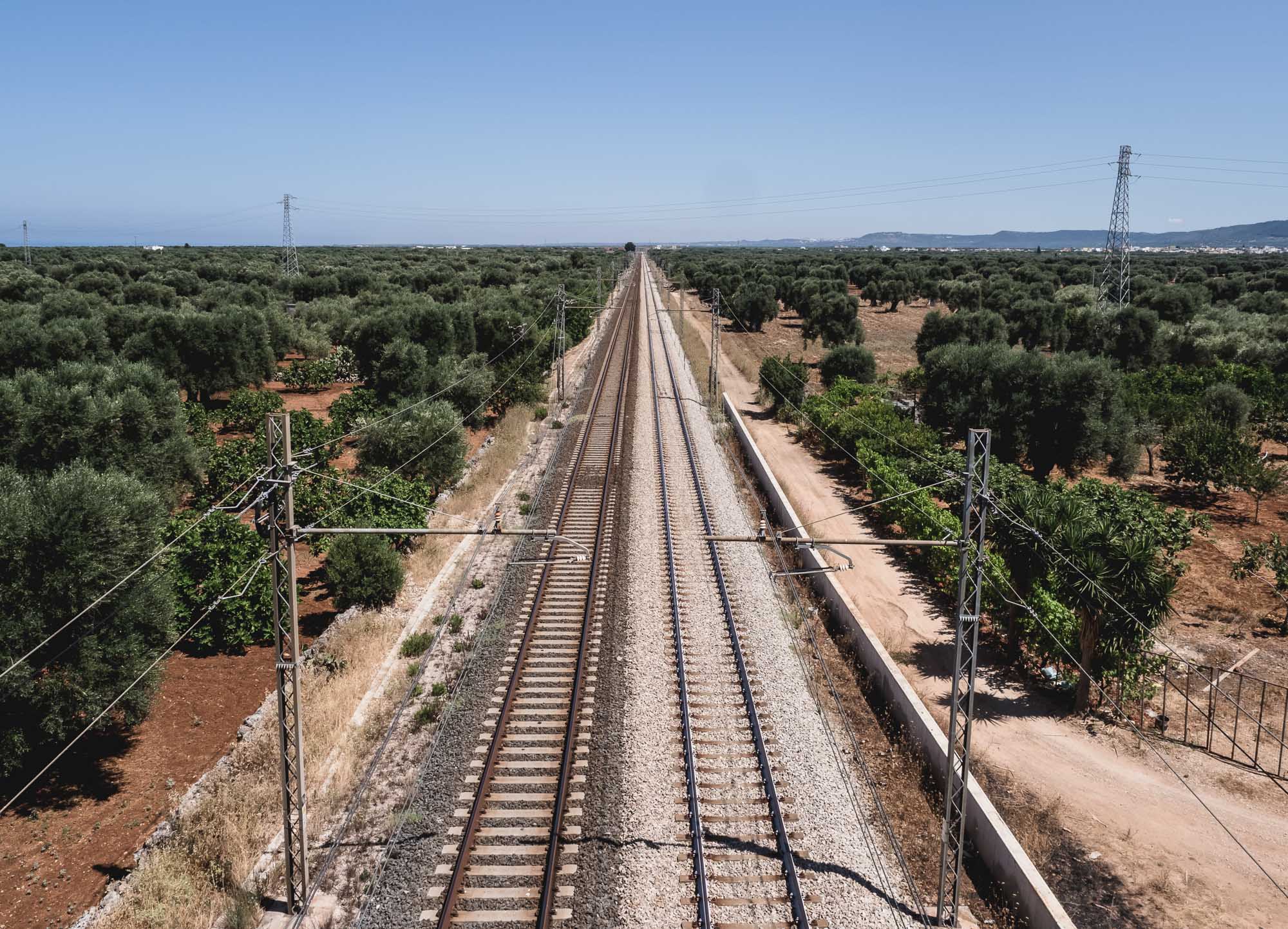
Landscape
Views over the Apulian landscape, with its many olive tree fields.

Towards the Sea
A road leading eastwards.
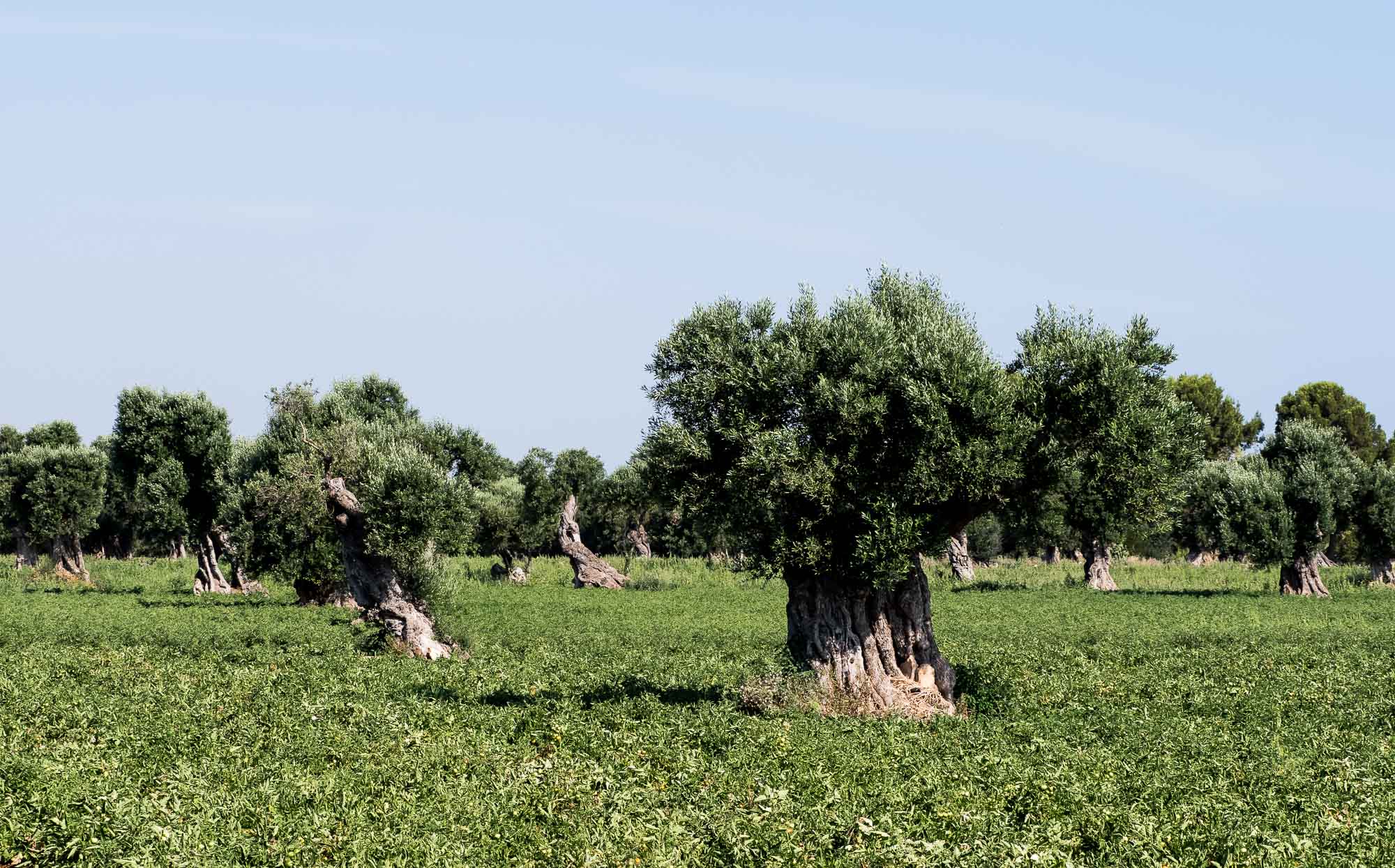
Olive Trees...
It's said that there are over 50 million olive trees in Apulia...
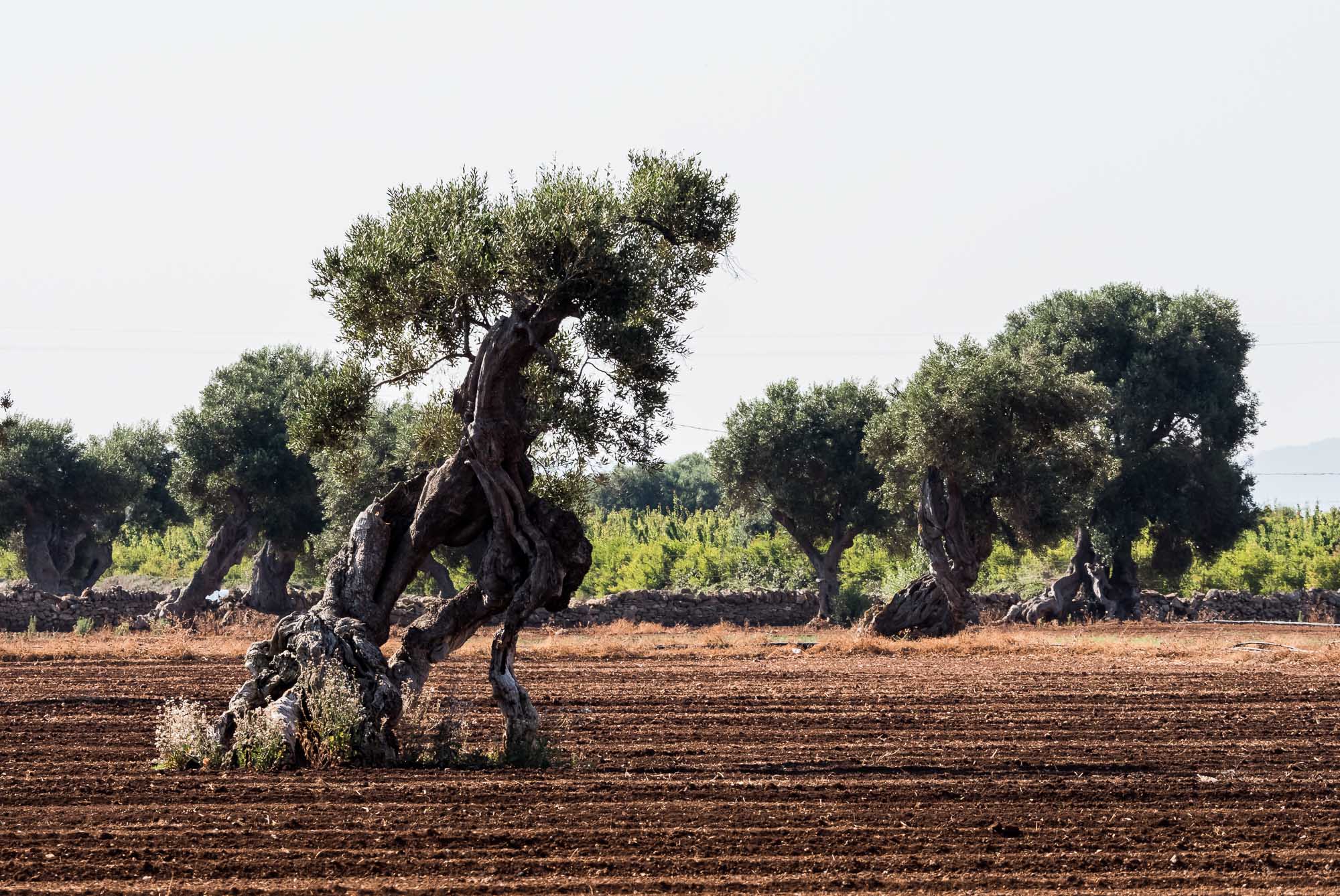
And more Olive Trees
...producing 40% of Italy's olive oil.
The Alpine Route, Liechtenstein, Lake Como, Genoa, the French Riviera and back!
In August 2018 I finally took a trip I had on my mind for a few years, following the route below. The drive took us through parts of the famous German Alpine Route, past castle Neuschwanstein, along Lake Constance, through Liechtenstein with its tiny capital Vaduz, for a stop at Lake Como and onwards to Genoa, and finally the coastal beauty of the French Riviera with Monaco, Nice, Antibes, Cannes and St Tropez.


In August 2018 I finally took a trip I had on my mind for a few years, following the route on the map above. The drive took us through parts of the famous German Alpine Route, past castle Neuschwanstein, along Lake Constance, through Liechtenstein with its tiny capital Vaduz, into the Swiss Alps, for a stop at Lake Como and onwards to Genoa, and finally the coastal beauty of the French Riviera with Monaco, Nice, Antibes, Cannes and St Tropez. Aside from driving a lot, we also walked and hiked quite a bit as my trusty Pedometer app showed.
It was all worth it though and I can definitely recommend the trip. Below is a selection of photos taken along the route.
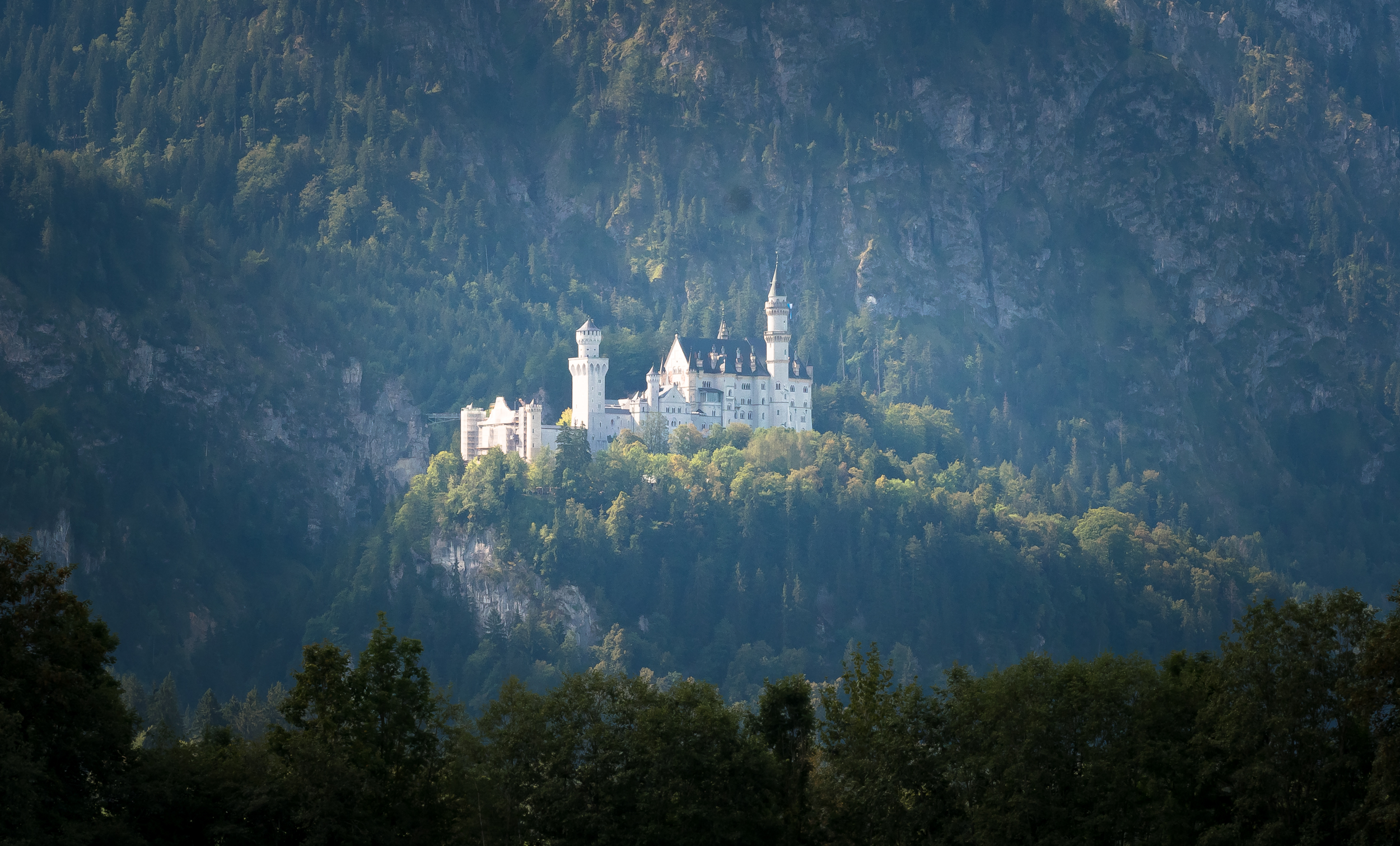
Neuschwanstein
One of the most famous sights in Germany, the palace was built by Ludwig II of Bavaria as a retreat - unfortunately it was never fully finished, but nevertheless attracts over a million visitors a year.
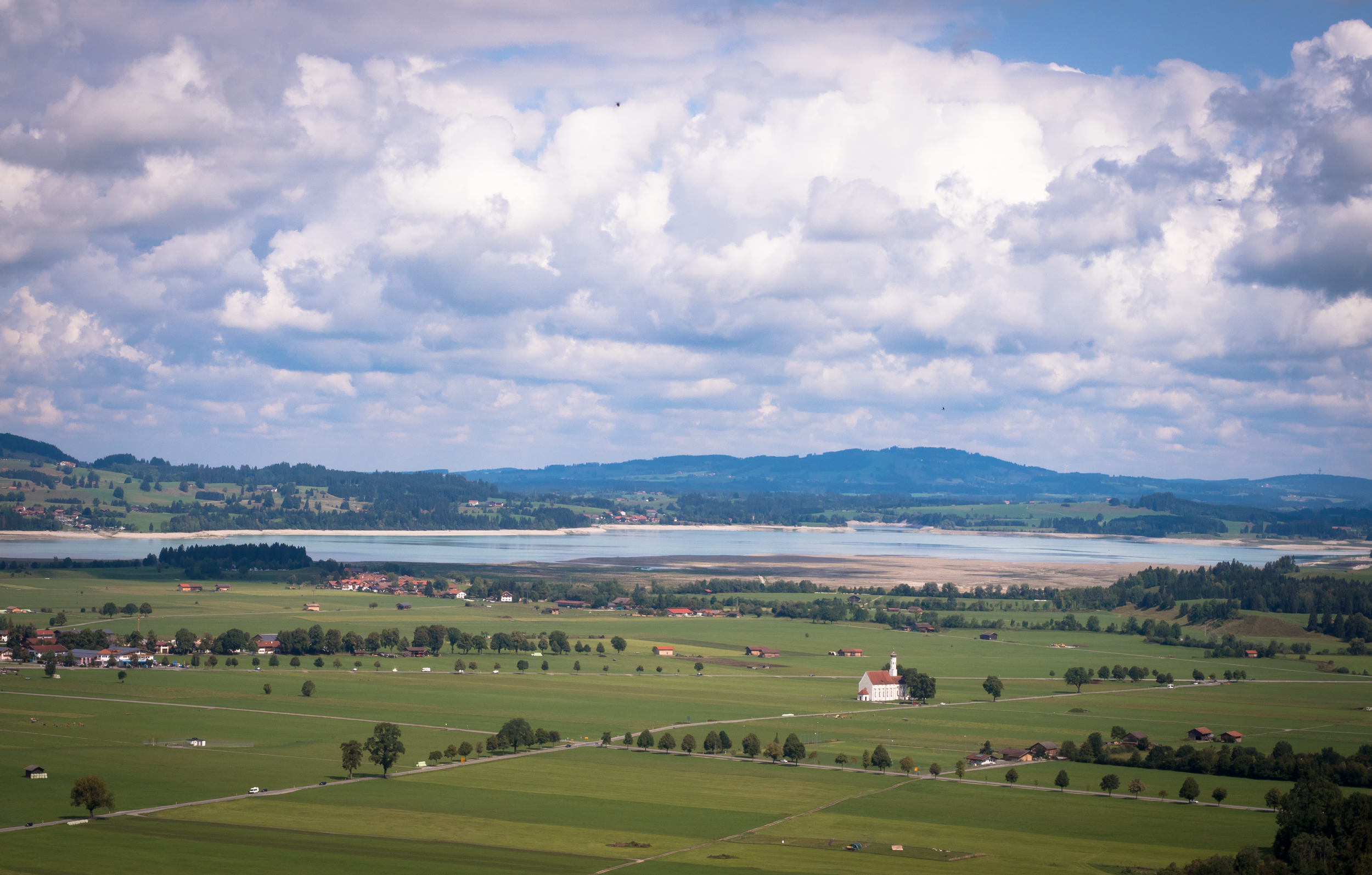
Landscapes
Neuschwanstein overlooks two lakes, the Alpsee and Schwansee. After a very hot and dry summer, you can clearly see how little water the lake had in late August.
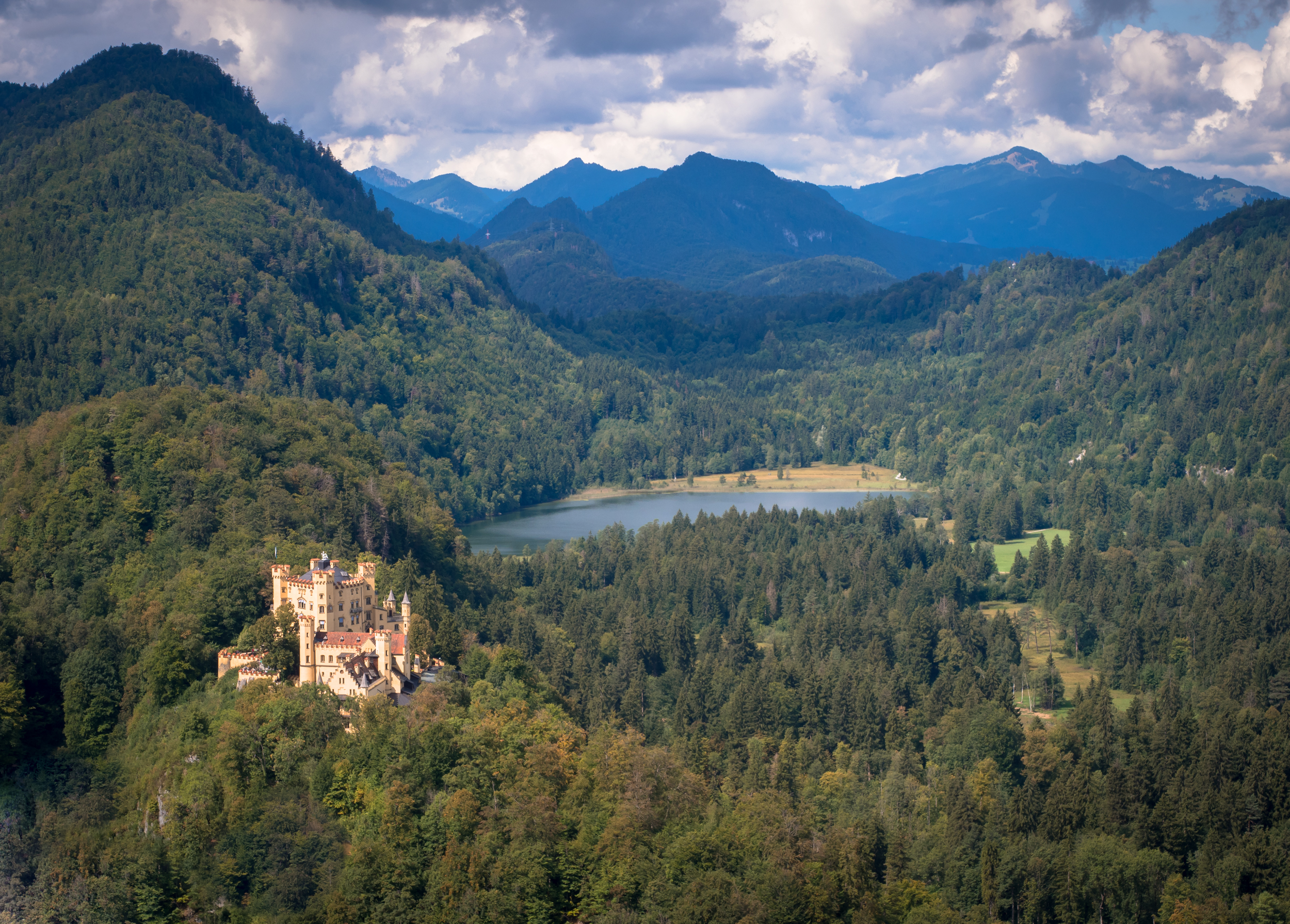
Hohenschwangau Castle
A second and less famous castle is located just a few hundred meters away. Hohenschwangau Castle was built by Ludwig's father and served as the family's summer residence.
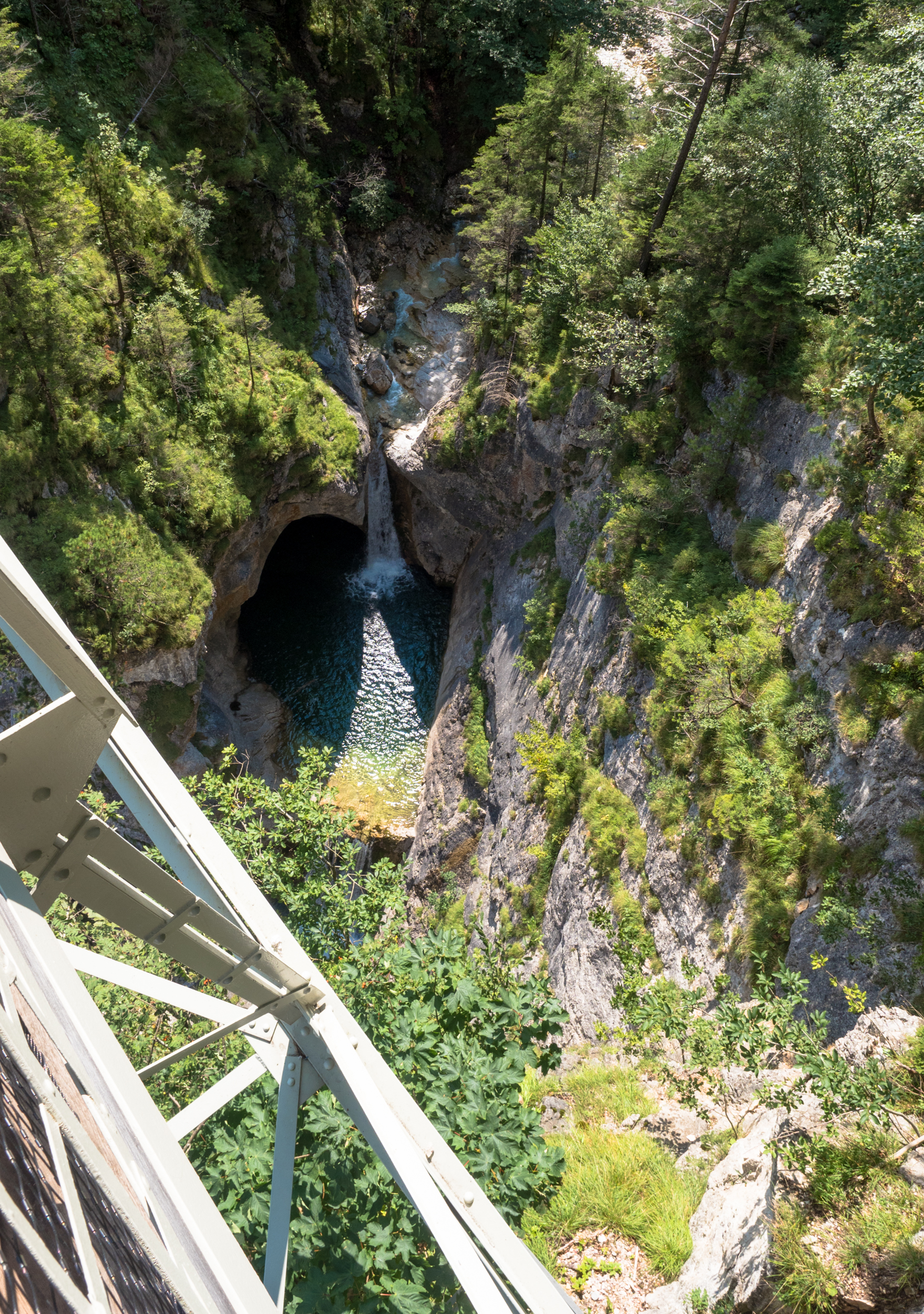
Marienbrücke
Lookign down into the gorge from the Marienbrücke, arguably providing the best view of the castle.
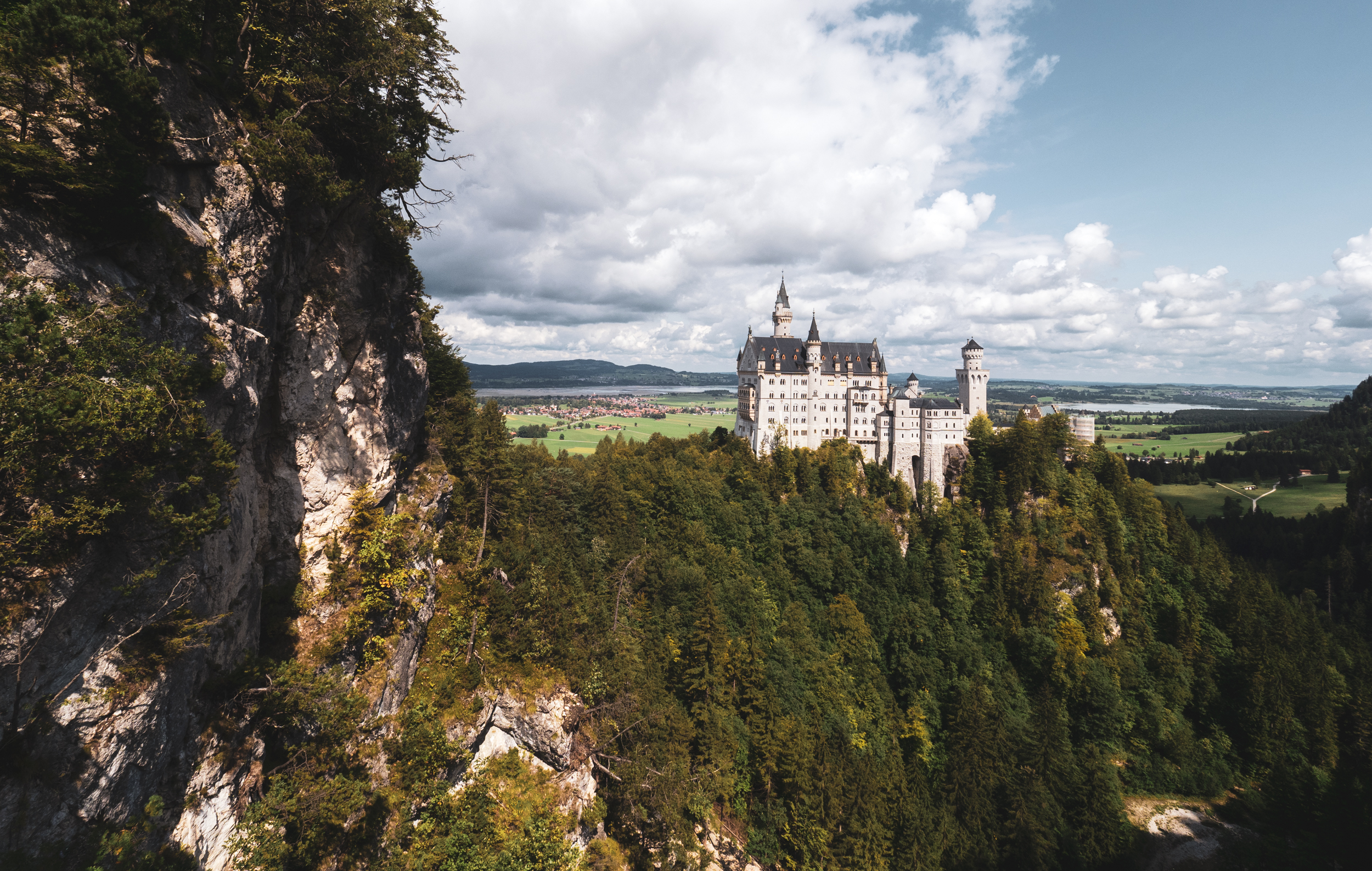
Fairy Tales
It's been confirmed that the castle served as Walt Disney's inspiration for his famous Disney castle, inspiring countless childhood dreams. The king himself viewed the building as representative of a romantic interpretation of the Middle Ages, as well as the musical mythology of his friend Richard Wagner.
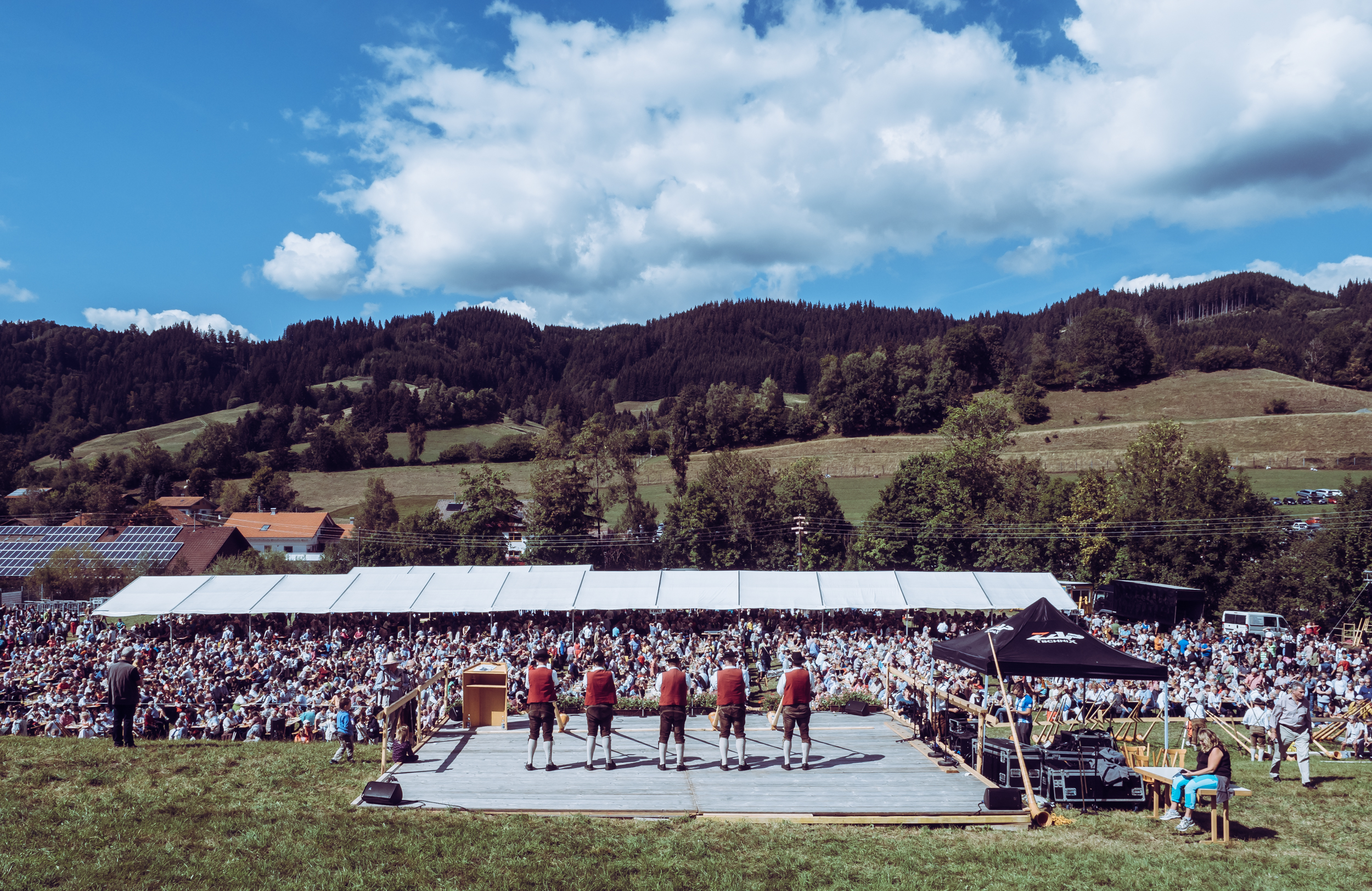
Alphorn Concert
Sheer luck meant we were able to attend the annual meeting of the regional alphornists (yes, that's how you call them) in Wengen.
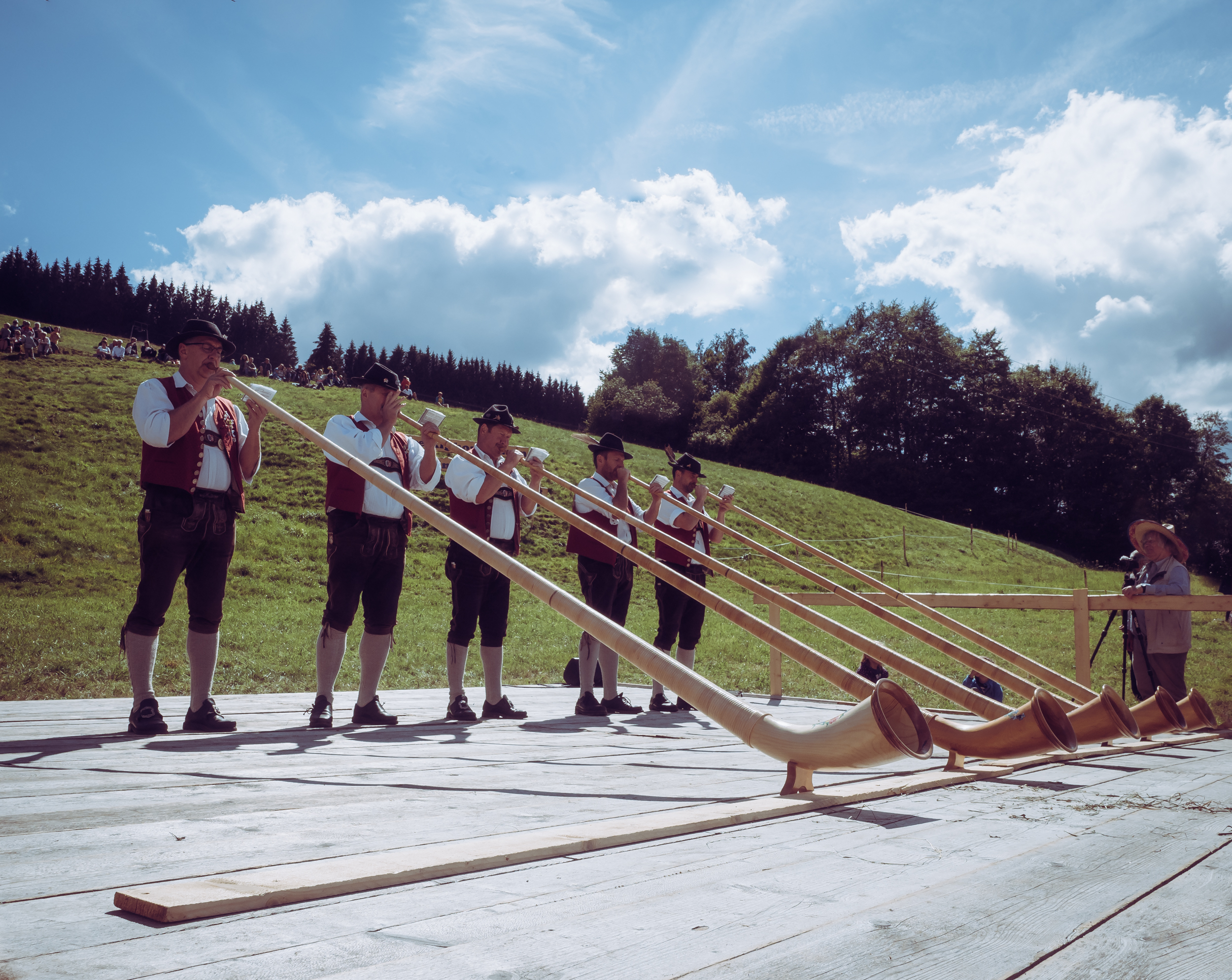
Alphorns
The Alpine Horn used to be a method of communication in the Alps - nowadays it's a musical instrument.

Up the Hill
The musicians getting ready for the grand finale...
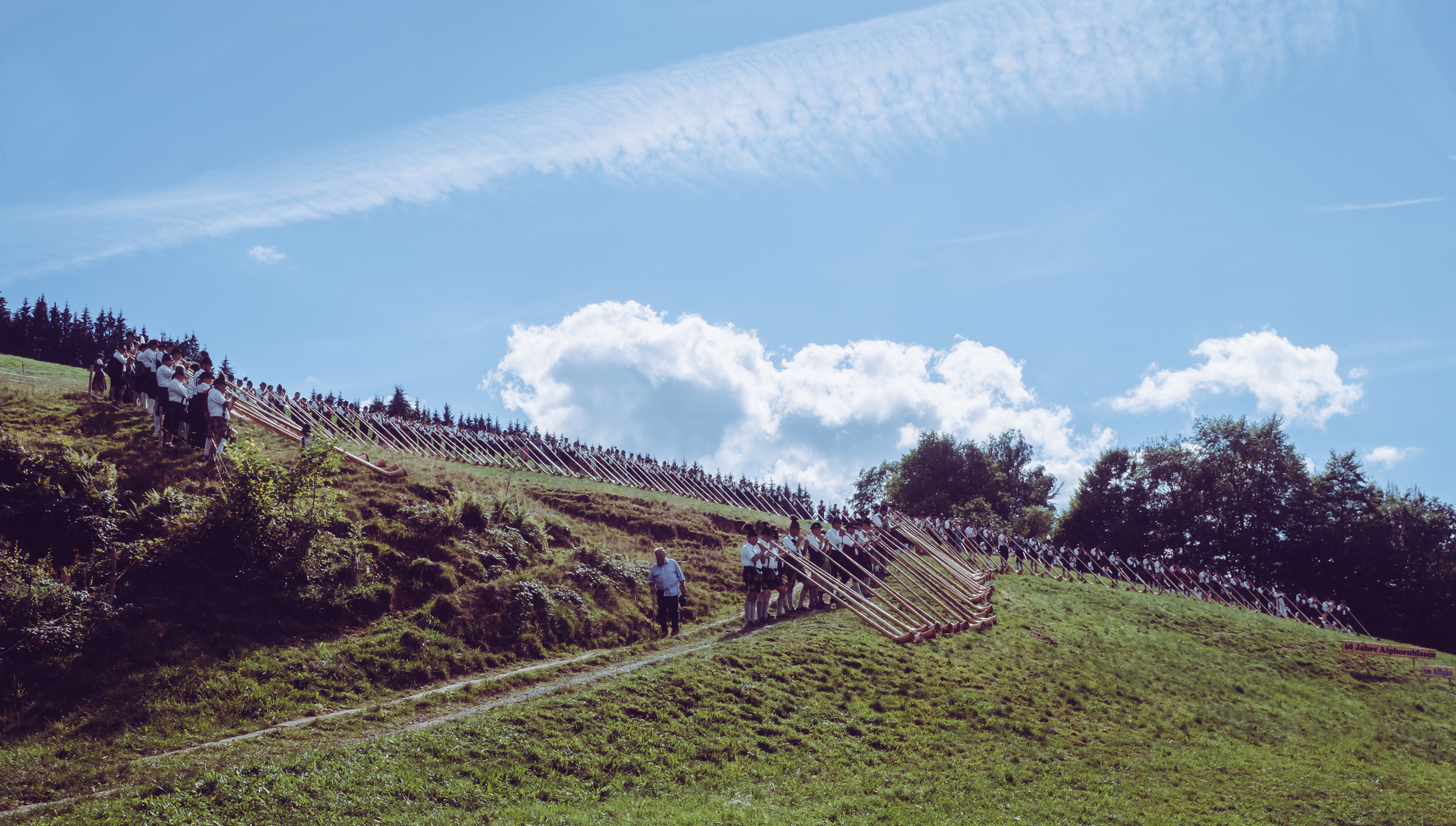
The Finale
... which consisted of 300 Alphornists playing at the same time. Impressive sight and sound.
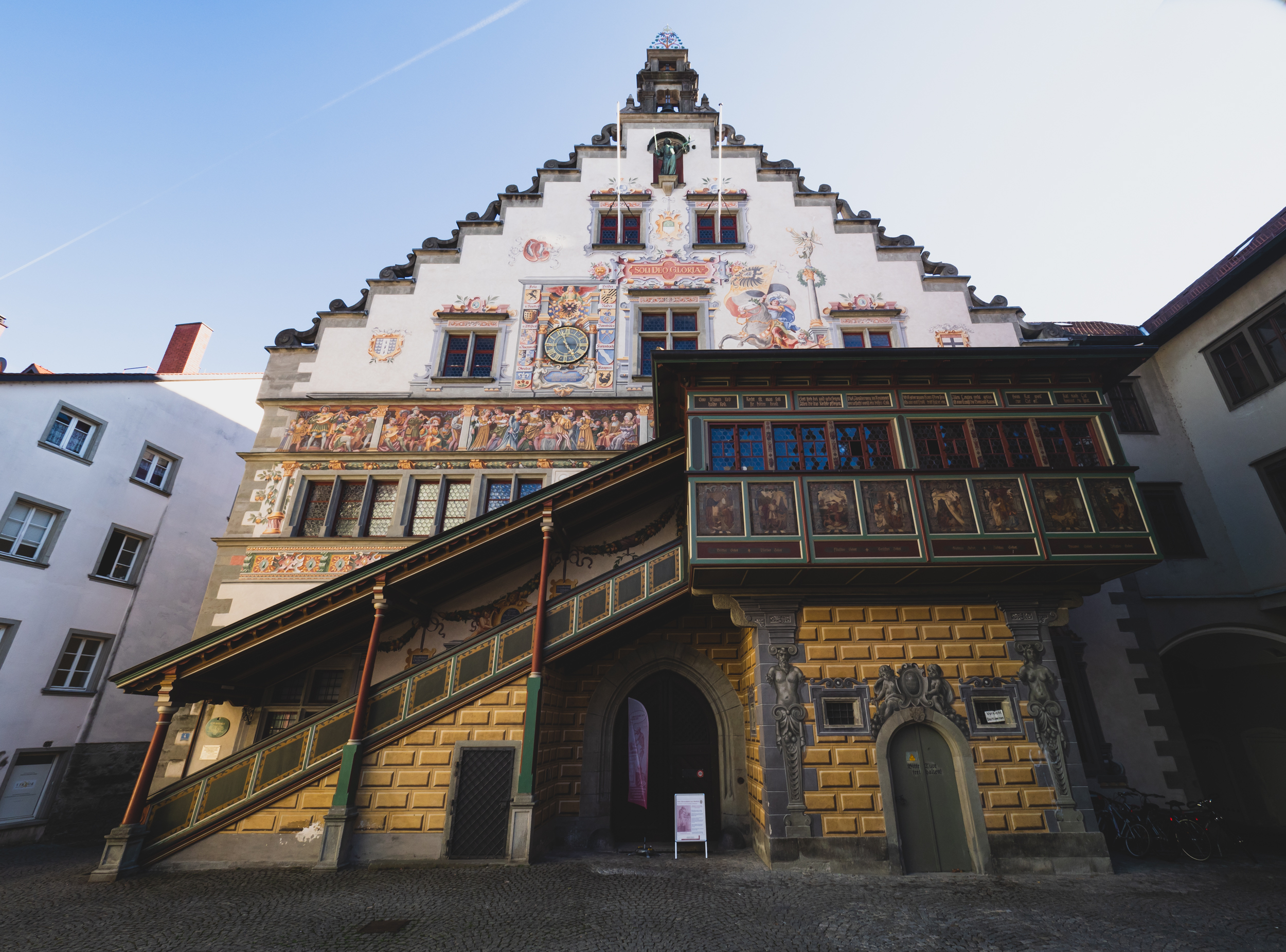
City Hall
Onwards to Lake Constance, this is the Lindau City Hall.
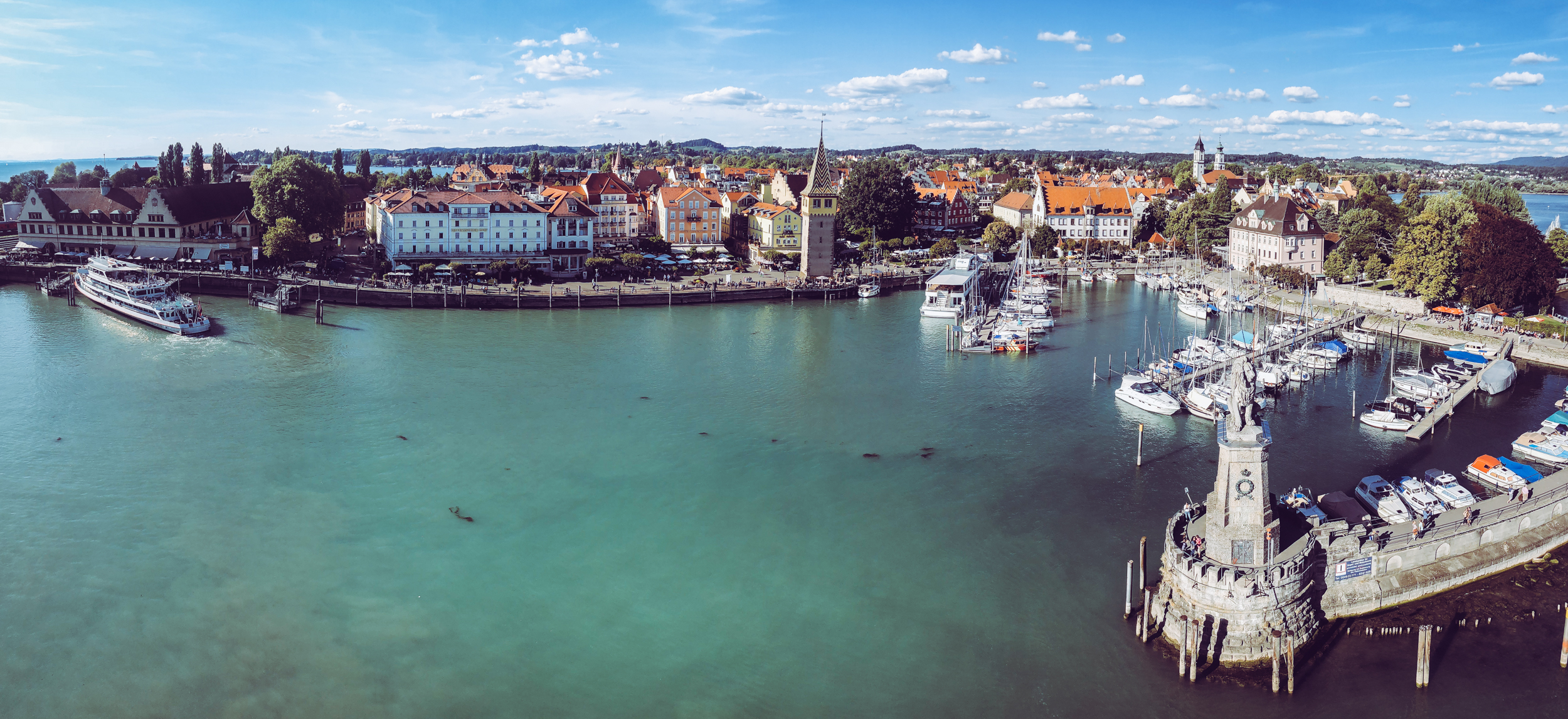
Lindau Island
The view over the island of Lindau, part of the city on the Bavarian side of the lake (the shores of which cover Germany, Austria and Switzerland). Taken from the lighthouse.
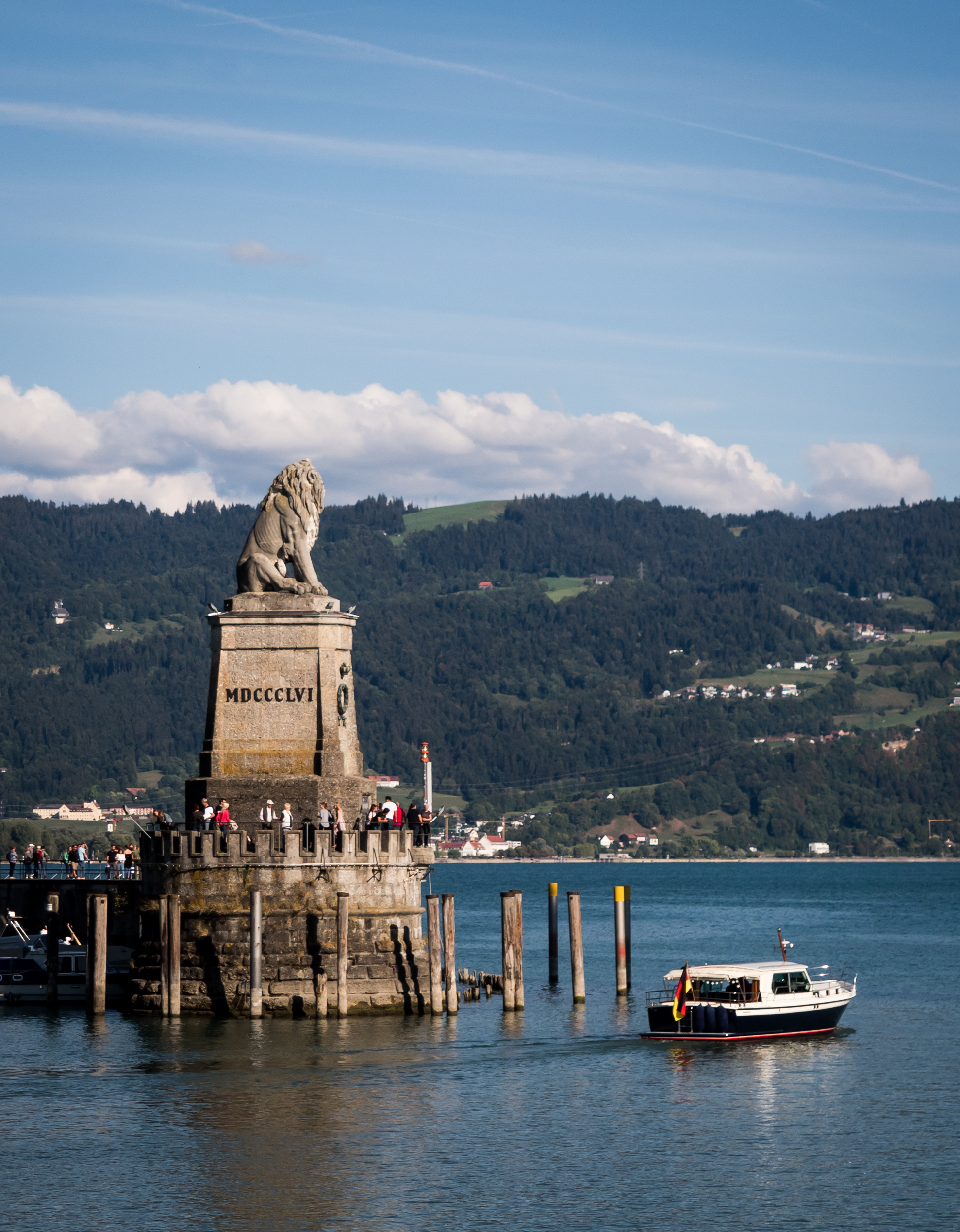
Bavarian Lion
The statue on the entrance of the Lindau harbour.
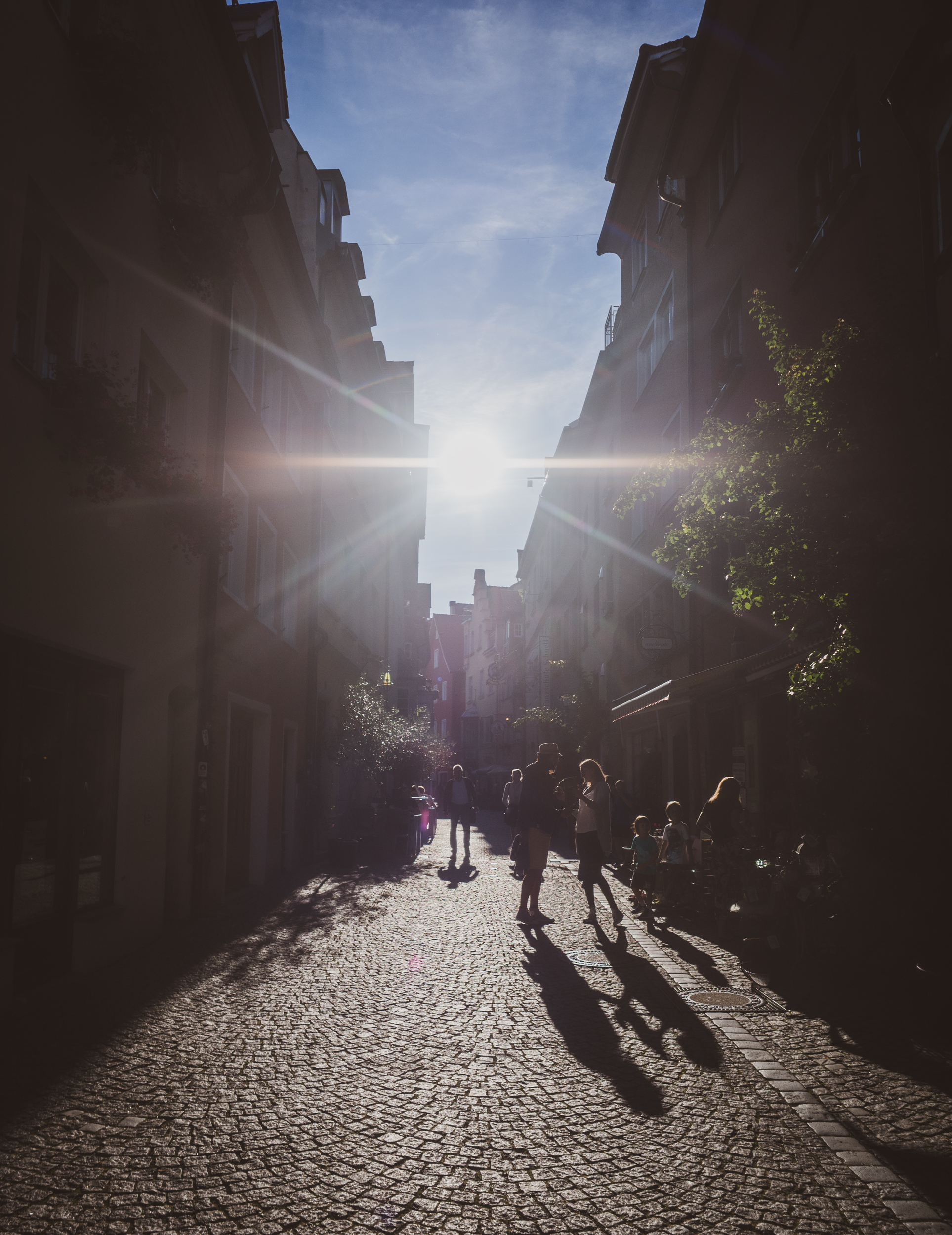
Lindau Centre
The town centre of Lindau island with its typical south German atmosphere.
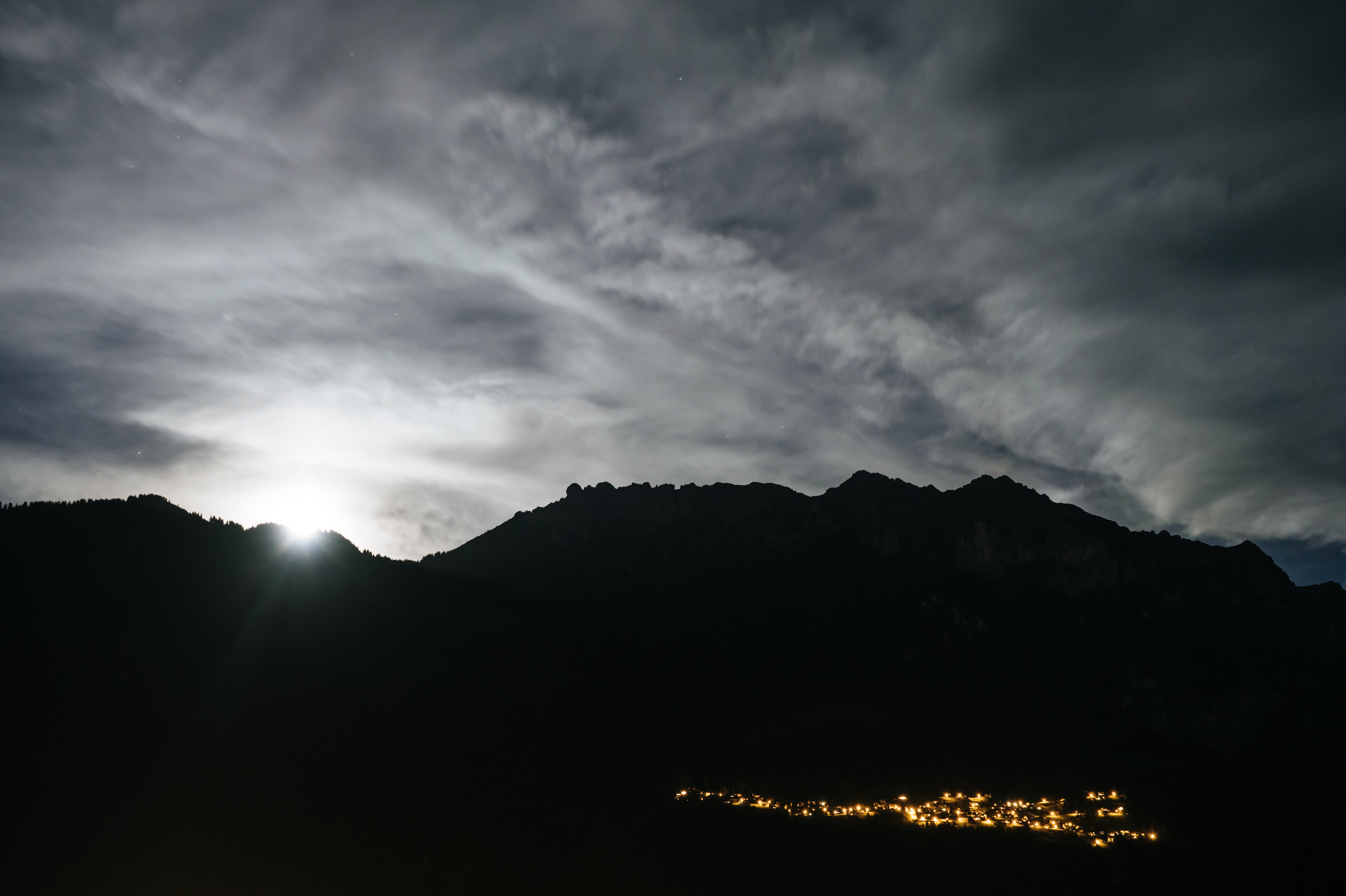
Moonrise
We arrived in Liechtenstein in the evening, just before the moon rose looking westwards over the Alps.

Full Moon
A clear night and the full moon made this shot possible.
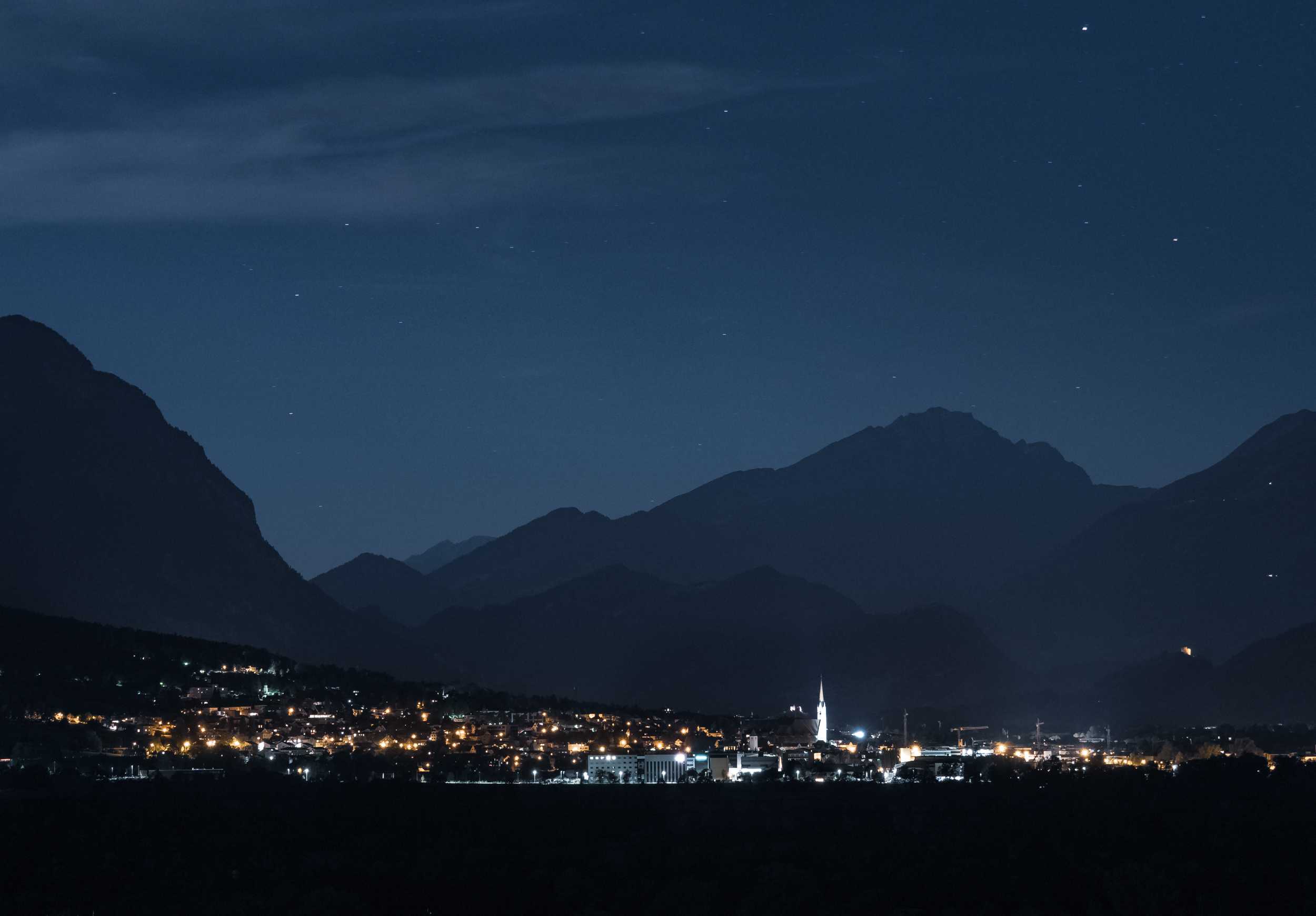
The Alps at Night
A view over the Rhine towards Switzerland.
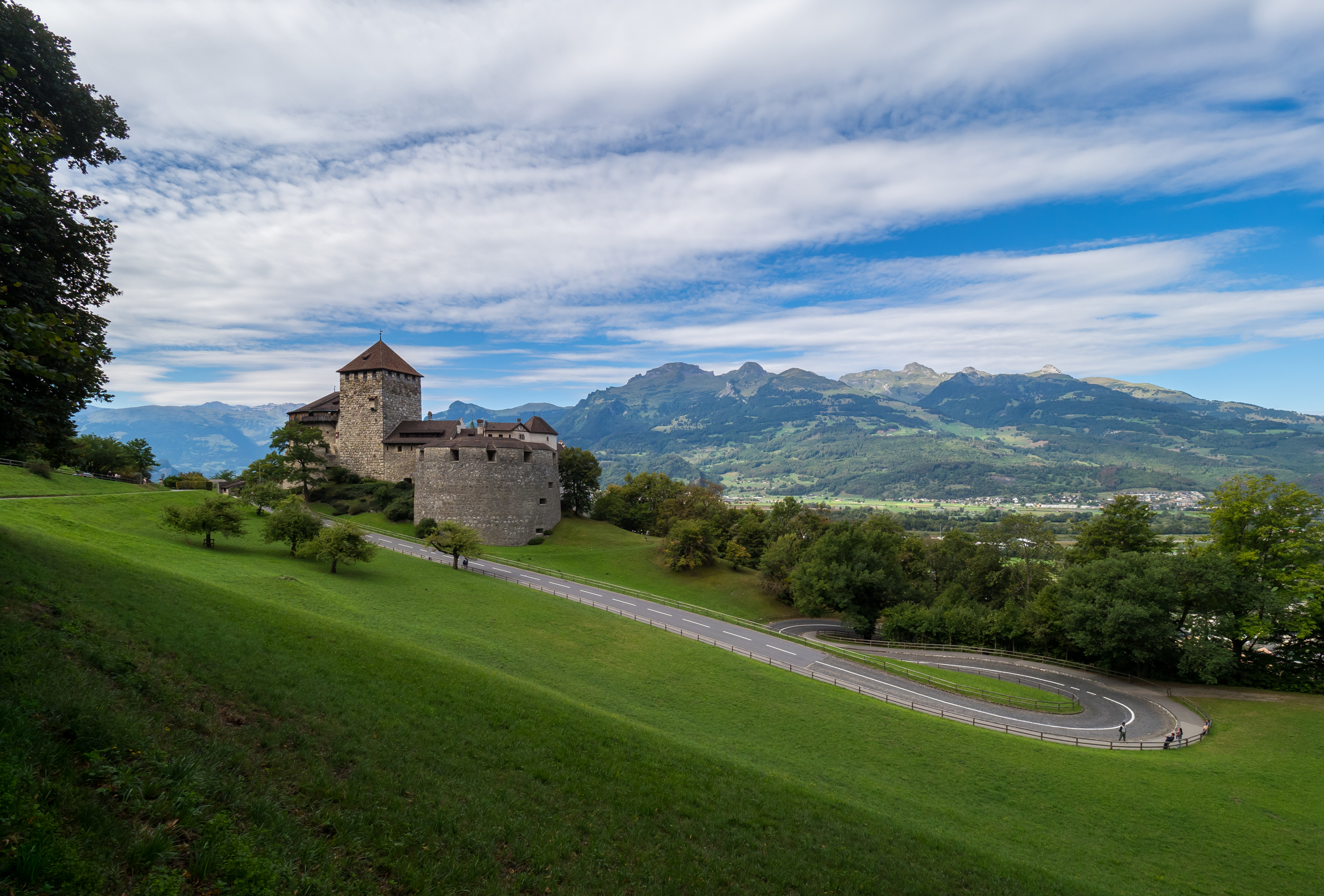
Vaduz Castle
While parts of it date back to the 12th century, the Liechtenstein princely family still lives in the castle. Today it is one of the few countries in the world that maintain no military.
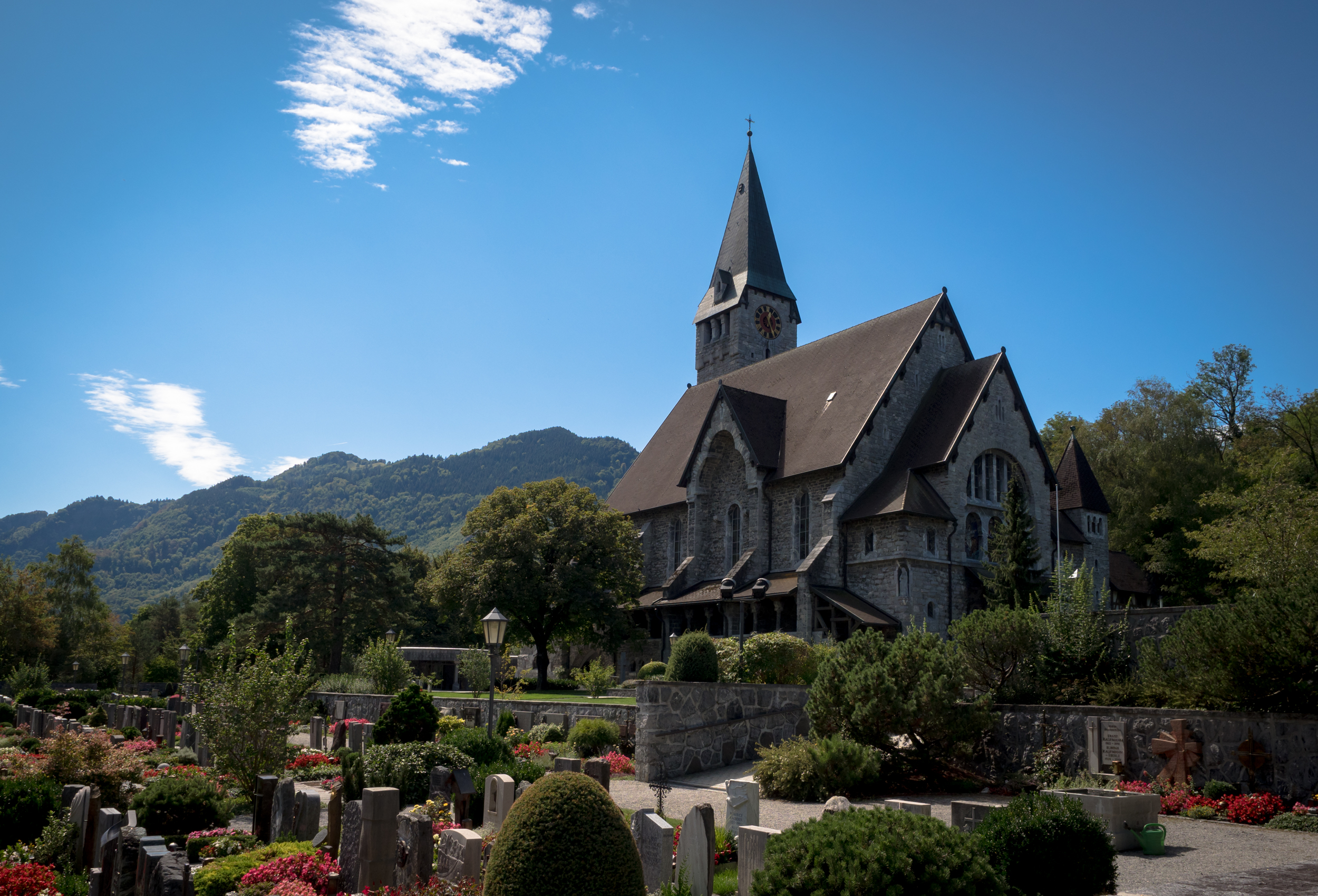
Church of Balzers
The church in the city of Balzers, sitting on the foot of the Gutenberg castle hill.
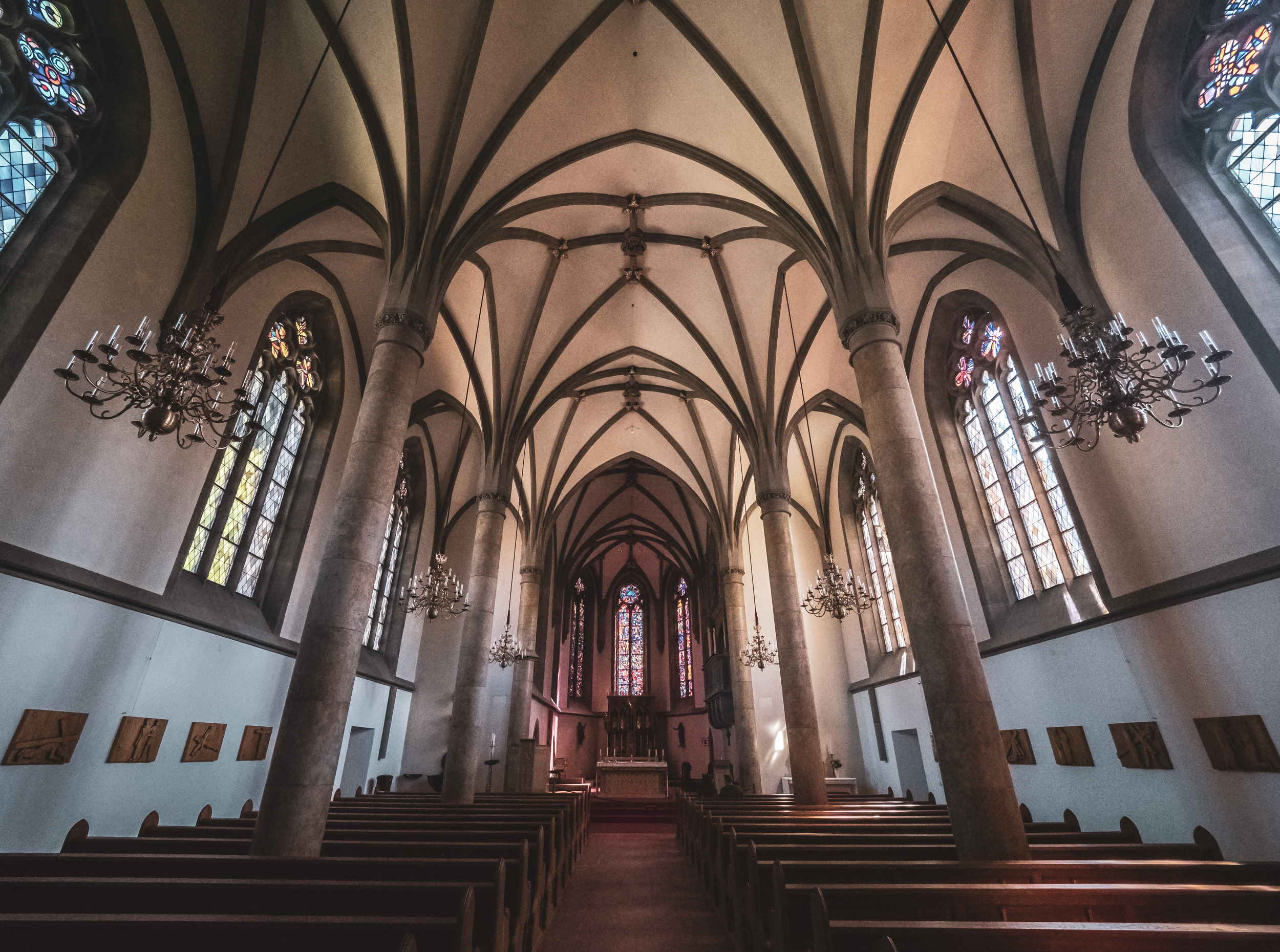
Empty
The church was completely empty when we entered - except for the organist practising, which was both eerie and amazing at the same time.

Pigs
Found these two when we stopped in a small mountain village in the Swiss Alps.
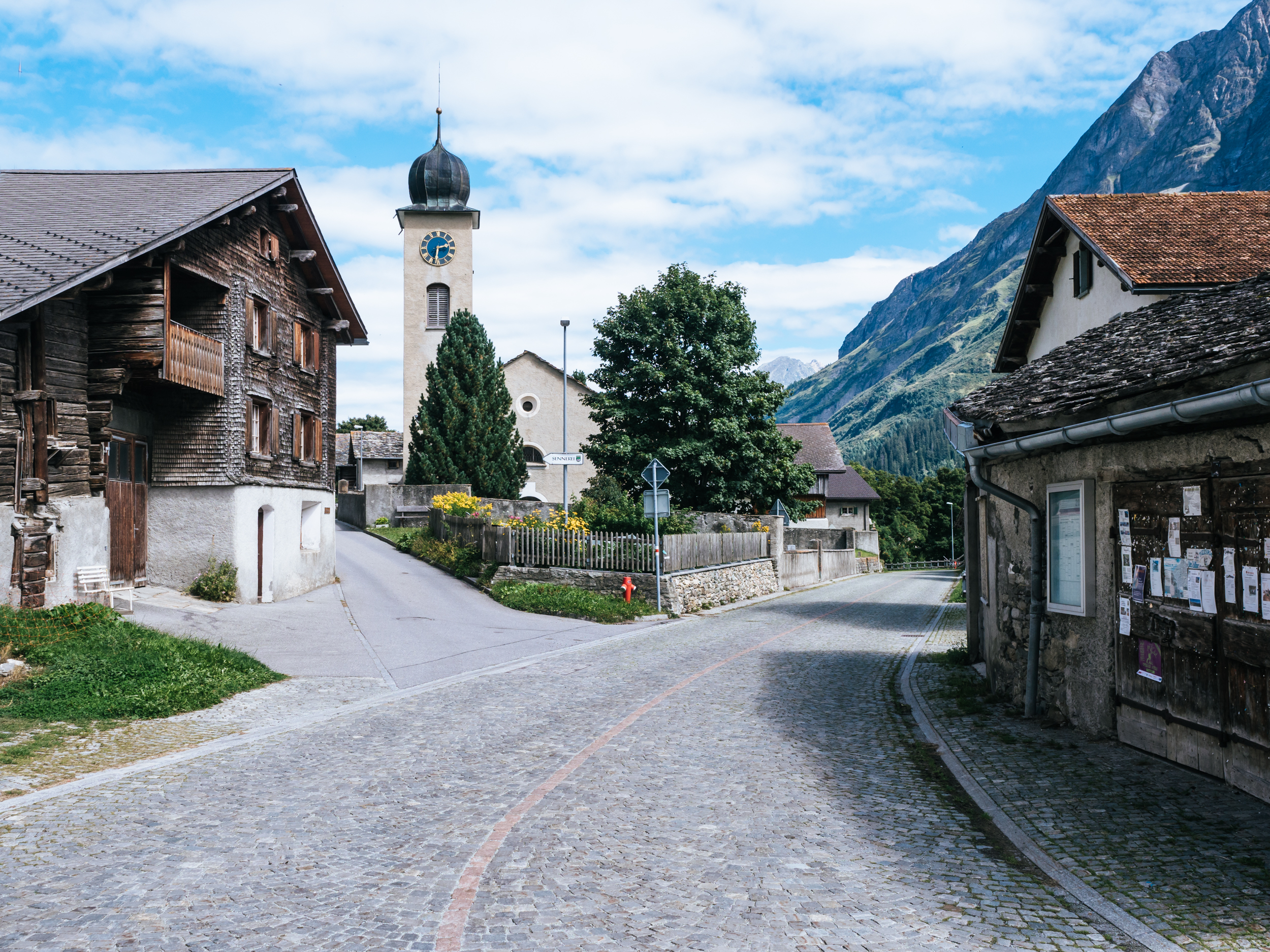
Nufenen
The small town of Nufenen, where we stopped briefly on our way to Lake Como. Population: 150. Unemployment: 0%.
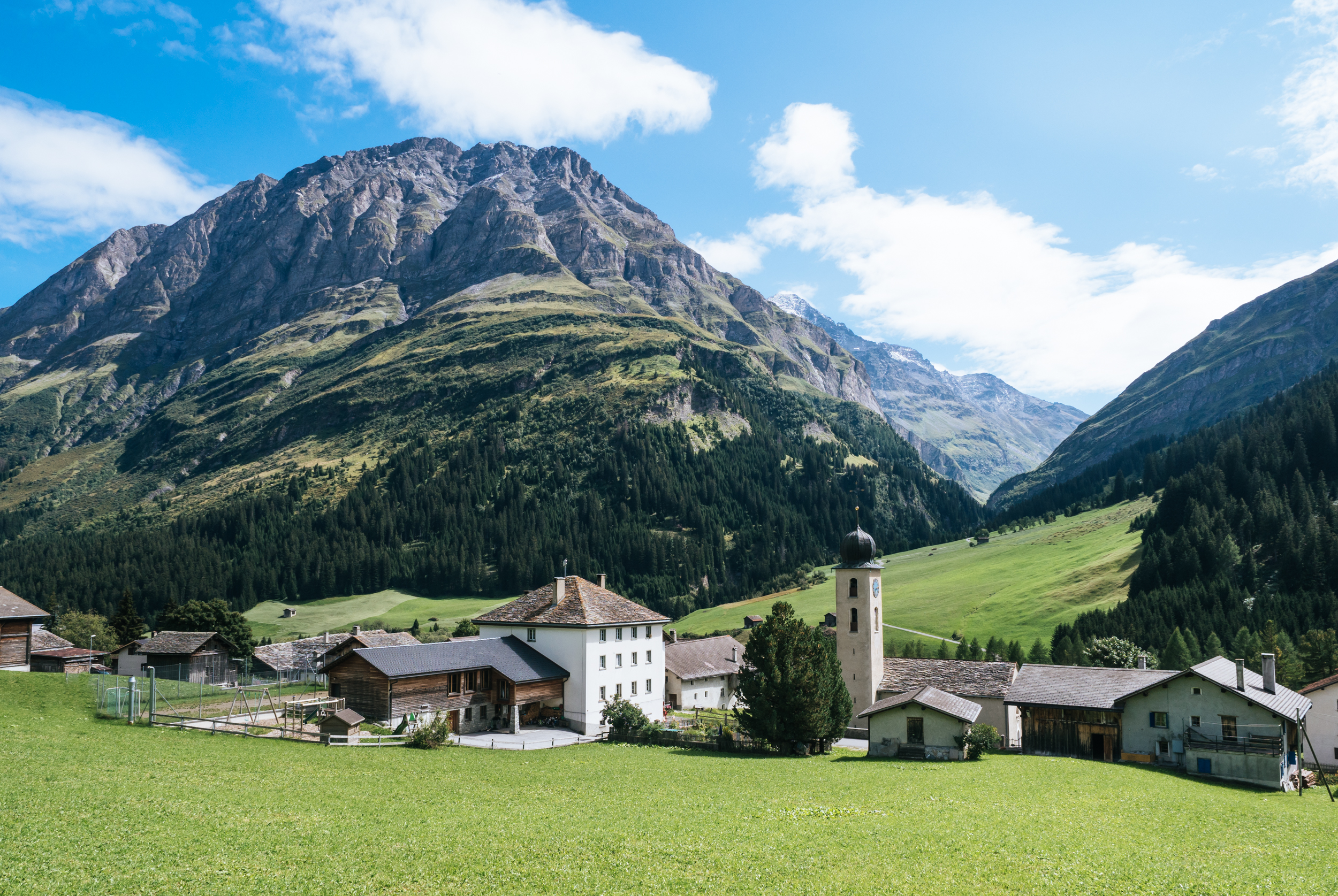
Alp Views
The village is located in the Swiss canton of Graubünden.
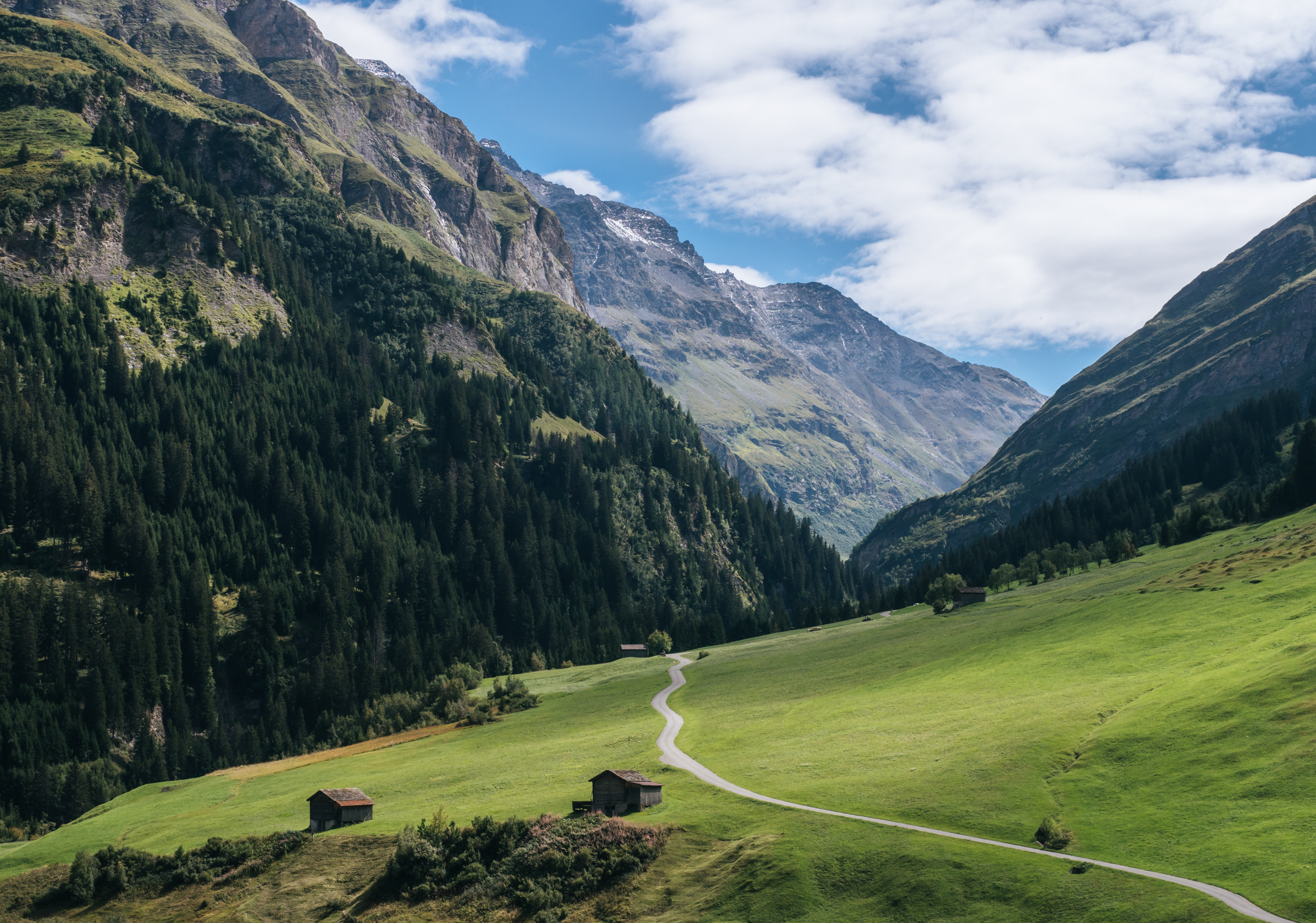
Views
The view into the valley towards the south.
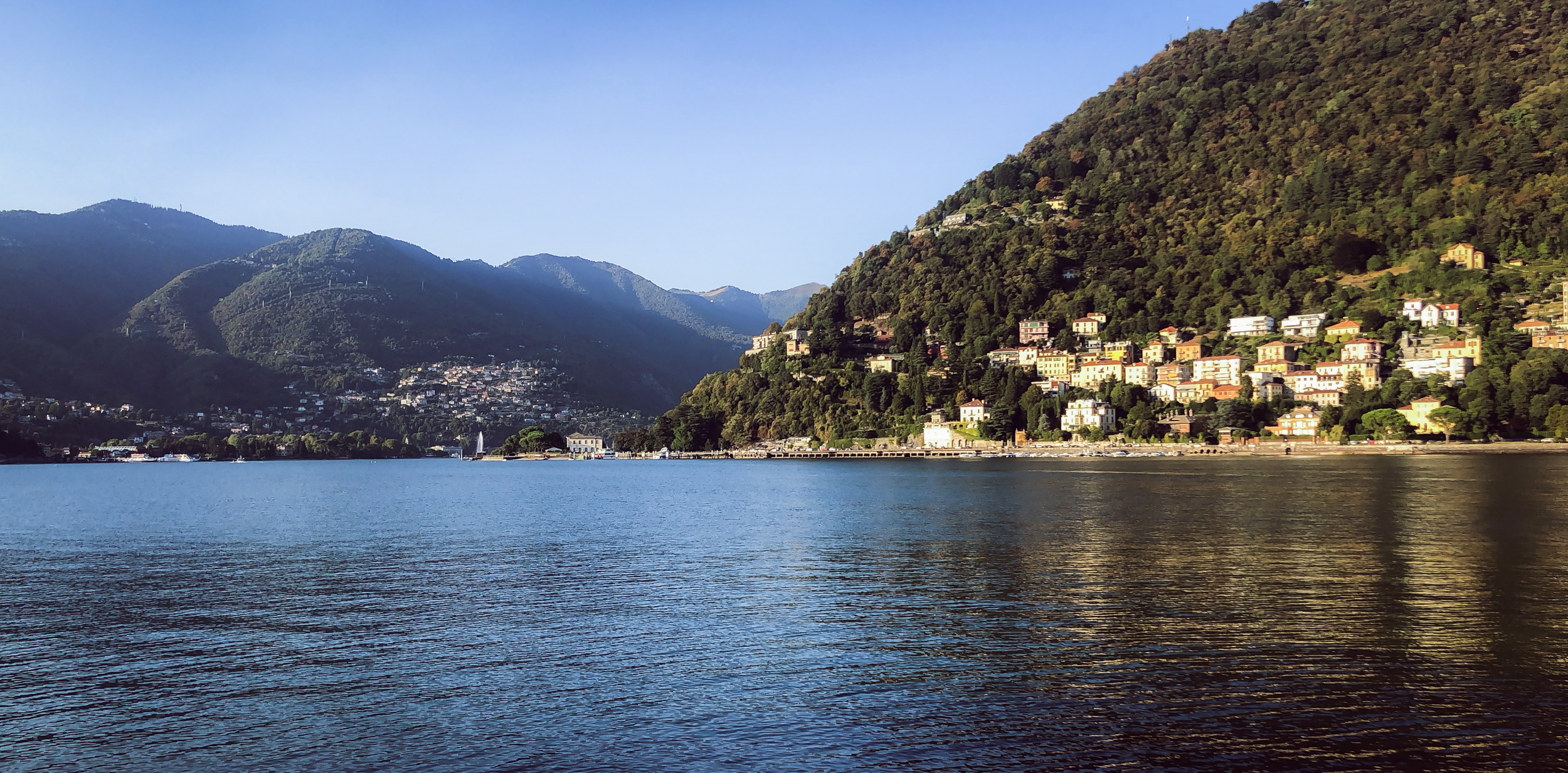
Lake Como
Our next destination was Lake Como, specifically the namesake city.
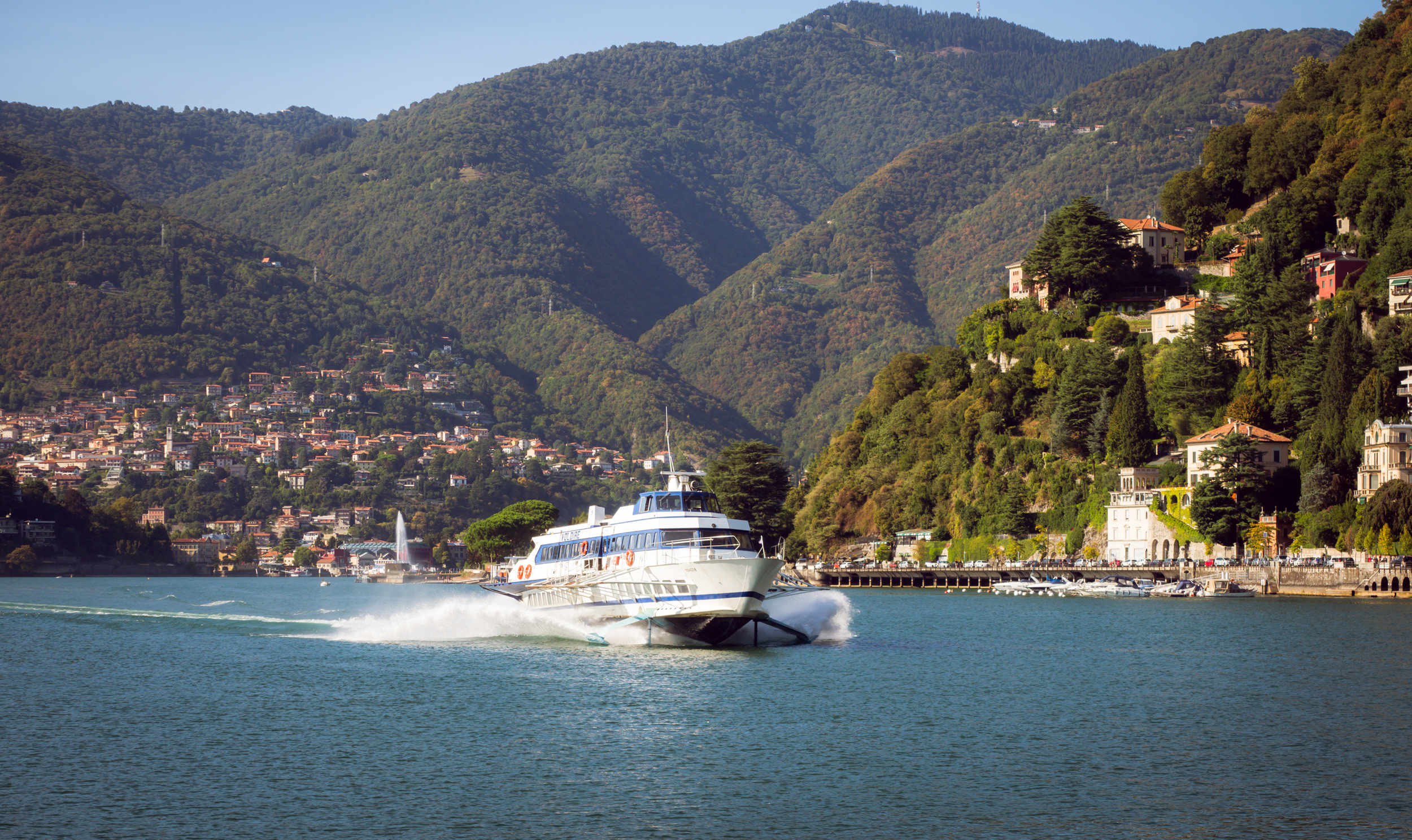
Transport
You can cross the lake with the "flying" ferry.
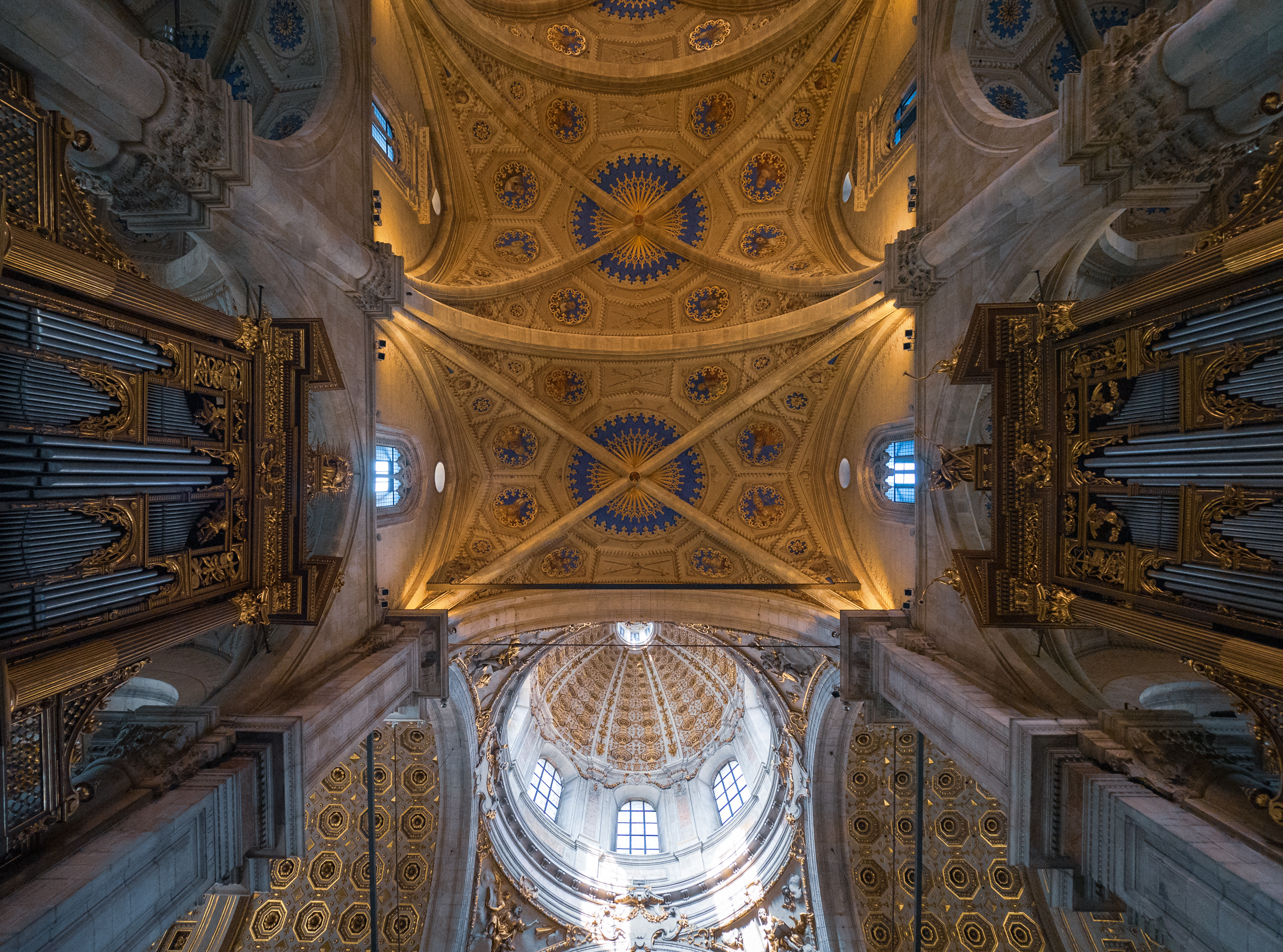
Como Cathedral Interior
The roof of the Como Cathedral, construction of which began in 1396 but didn't finish until 1770.
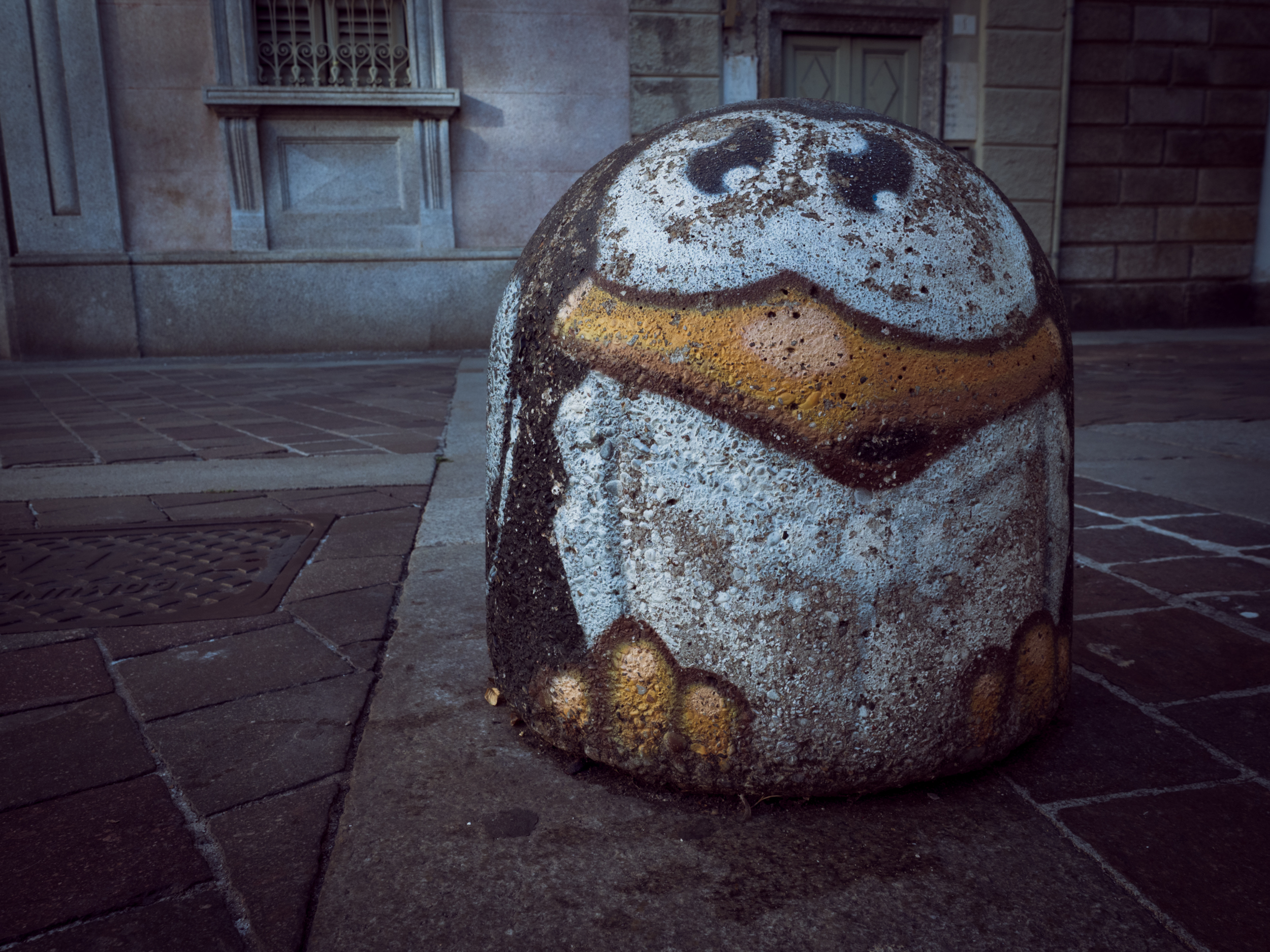
Penguin Style
Found this concrete post in the city centre.

The Como Gate Tower
The building was part of the former city walls, 40 meters high and built in 1192. Weirdly, the lower arch is off-axis from the 8 upper ones. The tower is empty on the inside, even the floors are no longer present.
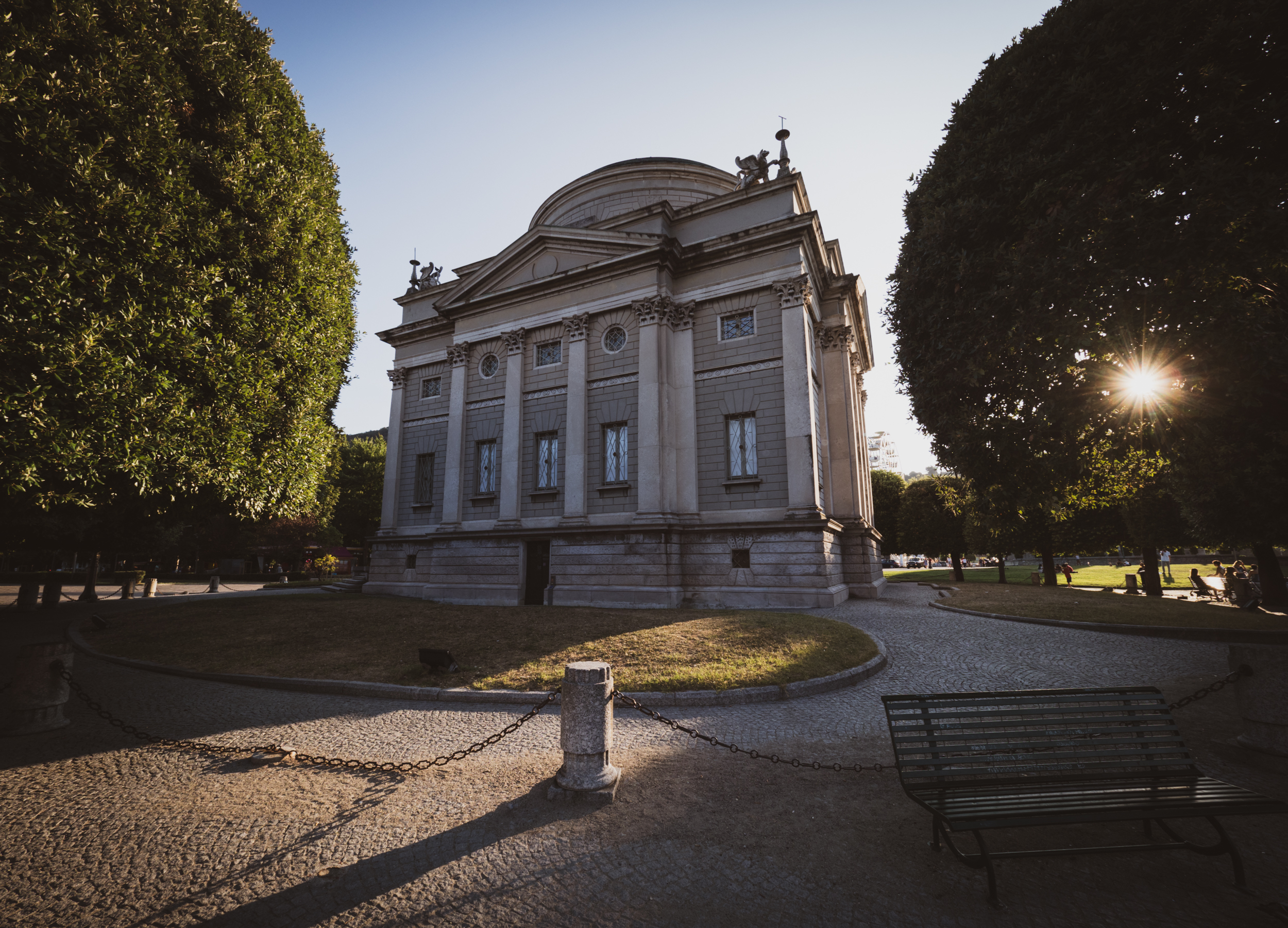
Tempio Voltiano
A museum on the shores of the lake dedicated to Alessandro Volta, the inventor of the electrical battery.
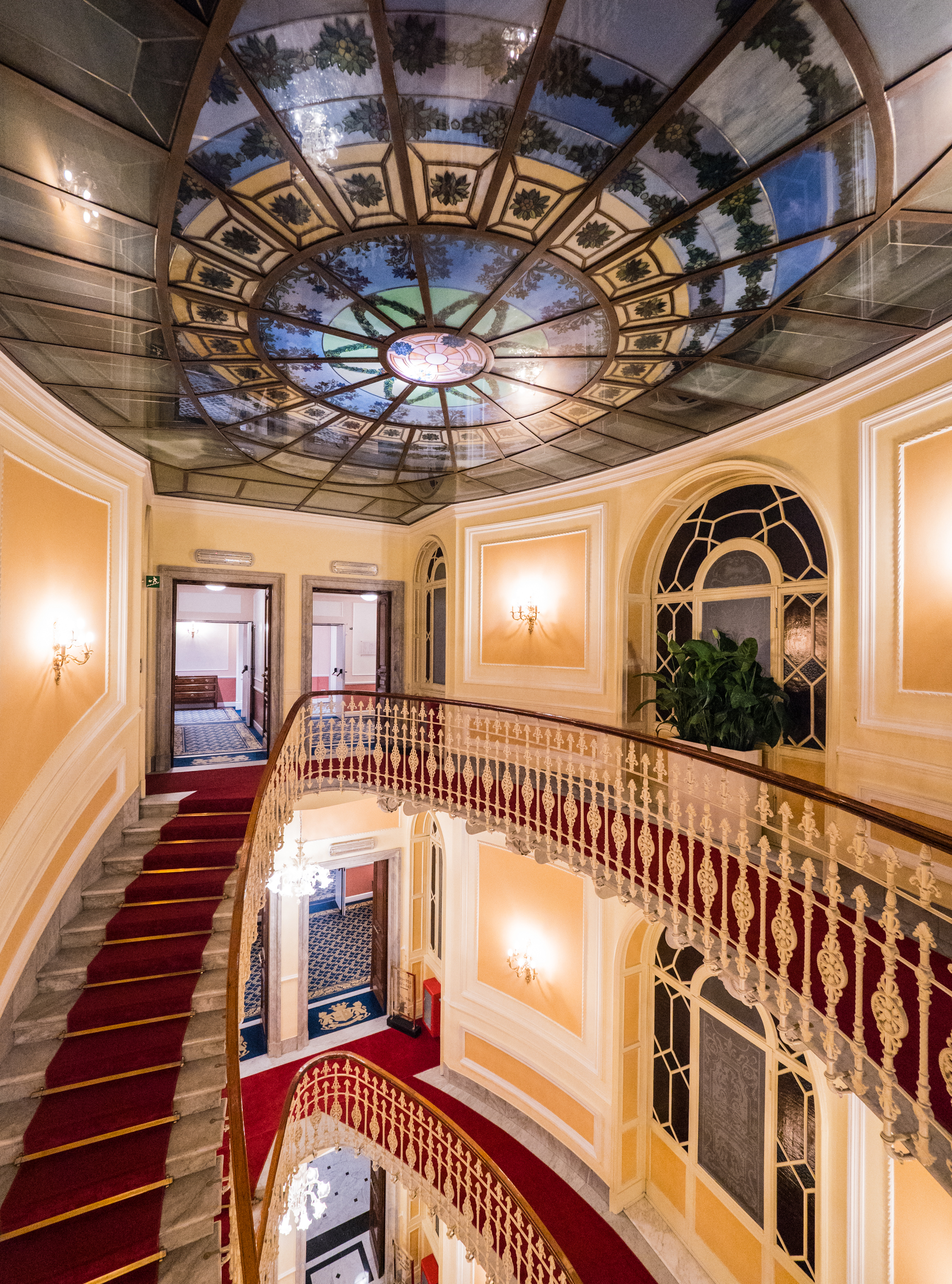
Hotel Bristol
Our hotel in Genoa occupies a building from 1905.
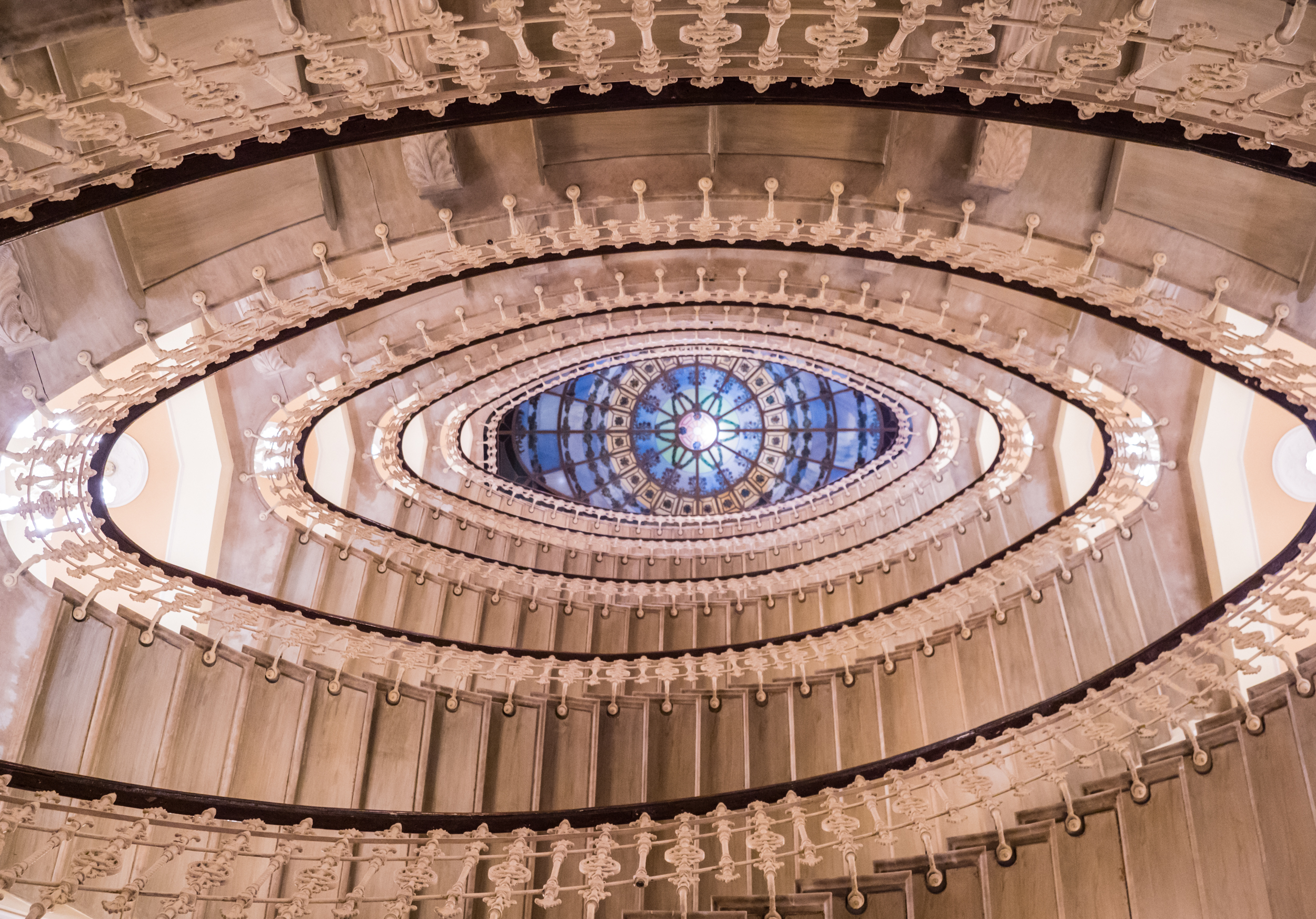
Staircase
It's main feature is the grand central staircase, looking upwards from the lobby in this photo.
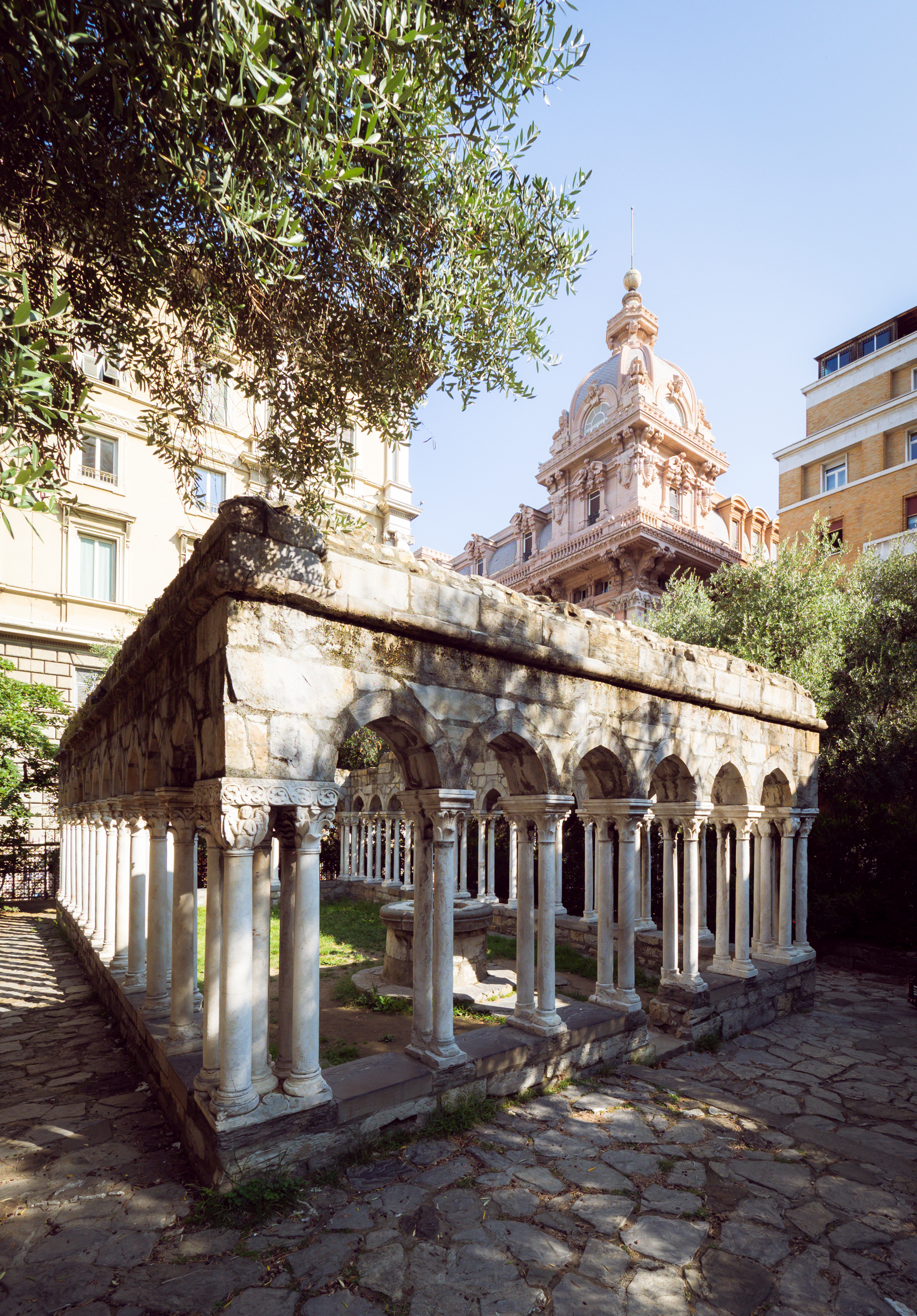
St Andrew Monastery
St. Andrew's Cloister are the remains of an ancient monastery from the 12th century in the middle of the city right next to the childhood home of Christopher Columbus.
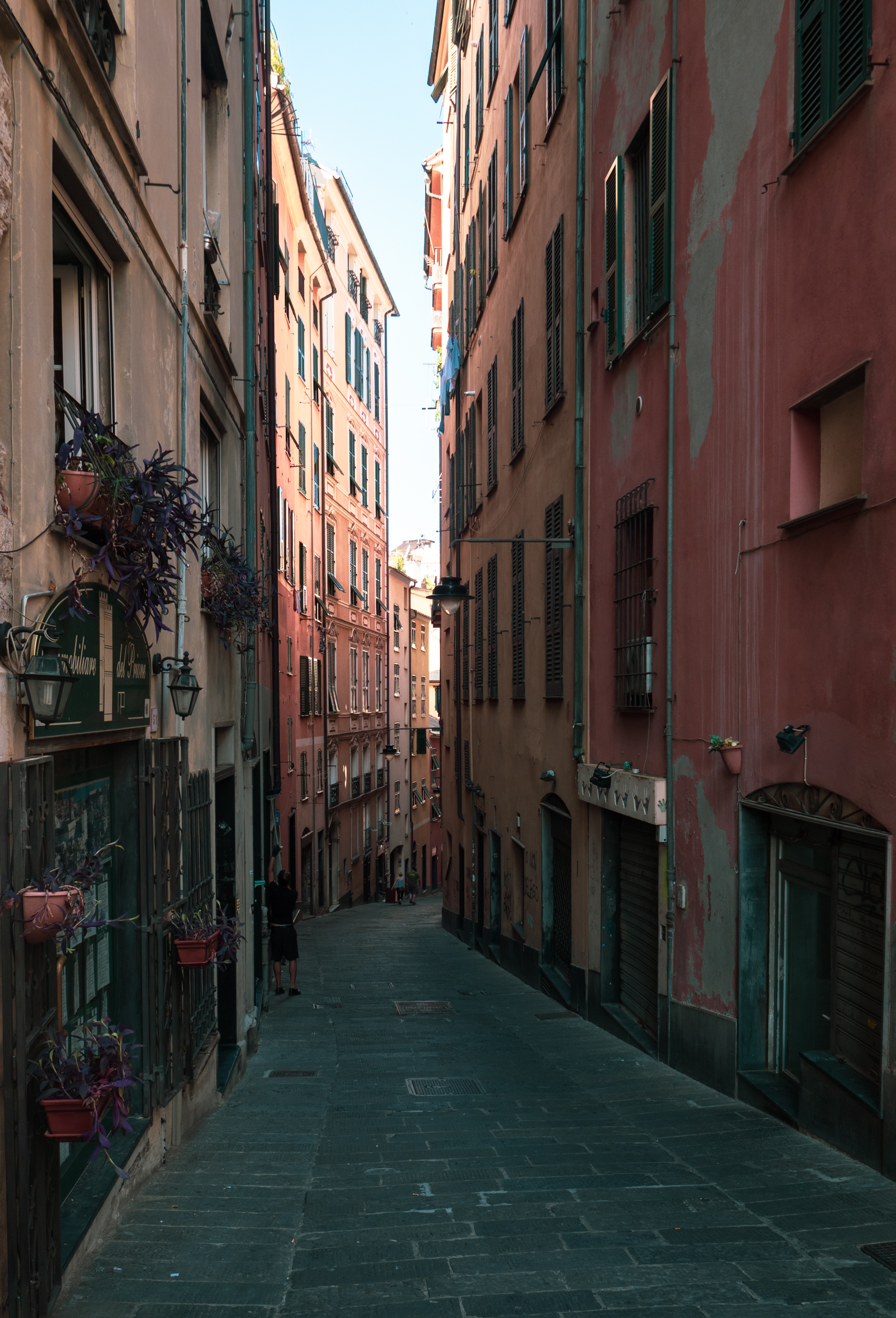
Old Town
While Genoa doesn't enjoy the same reputation as Milan or Rome, it does have beautiful spots in the town centre.
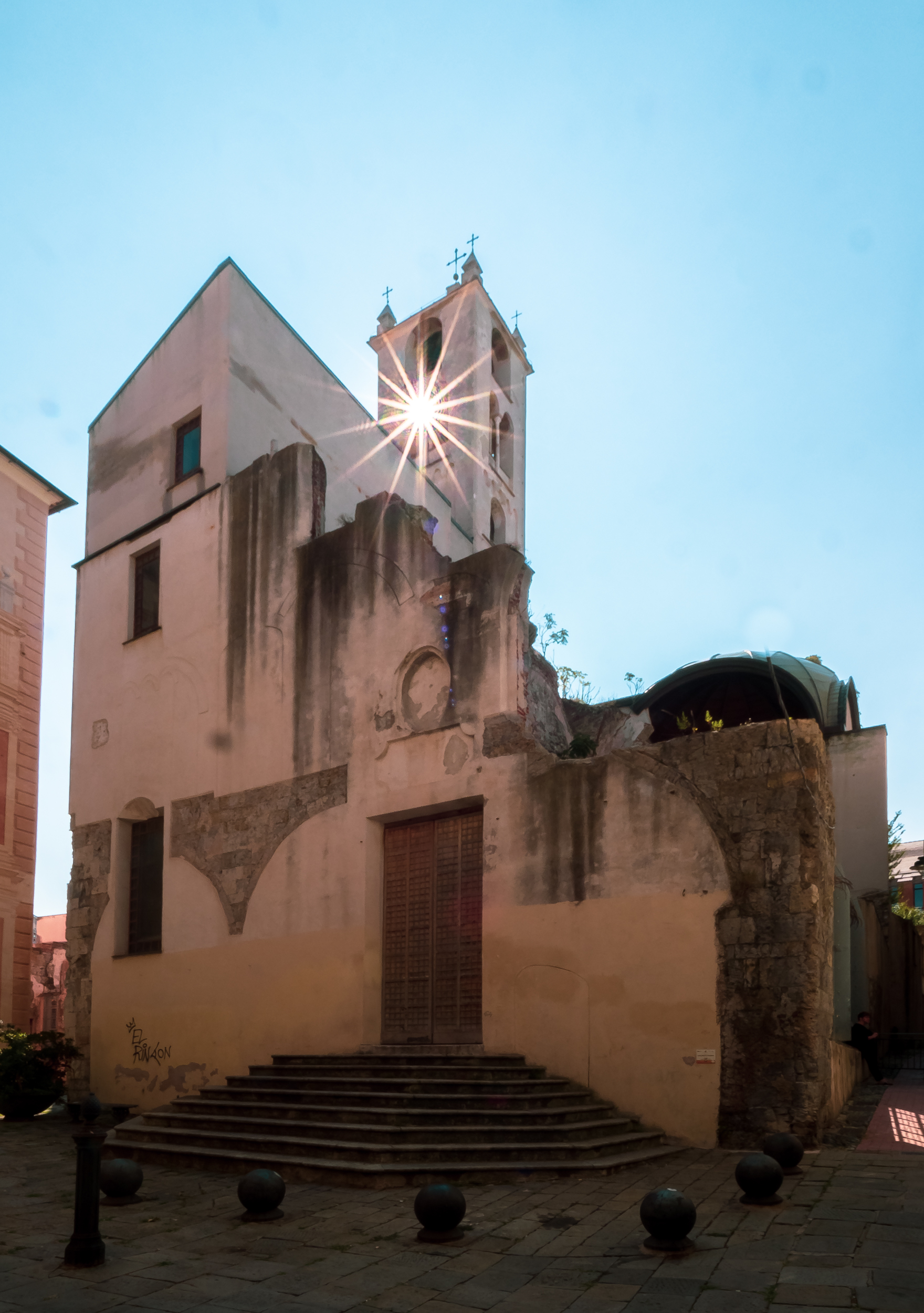
Church of Santa Maria in Passione
Destroyed during the second world war, some areas of the ruins are now closed off, while other parts of the complex have been re-built and are in use by various organisations today.

Santa Maria di Castello
In close proximity to the Santa Maria in Passione is this church, definitely in a better condition and full of frescos from the 16th and 19th century.
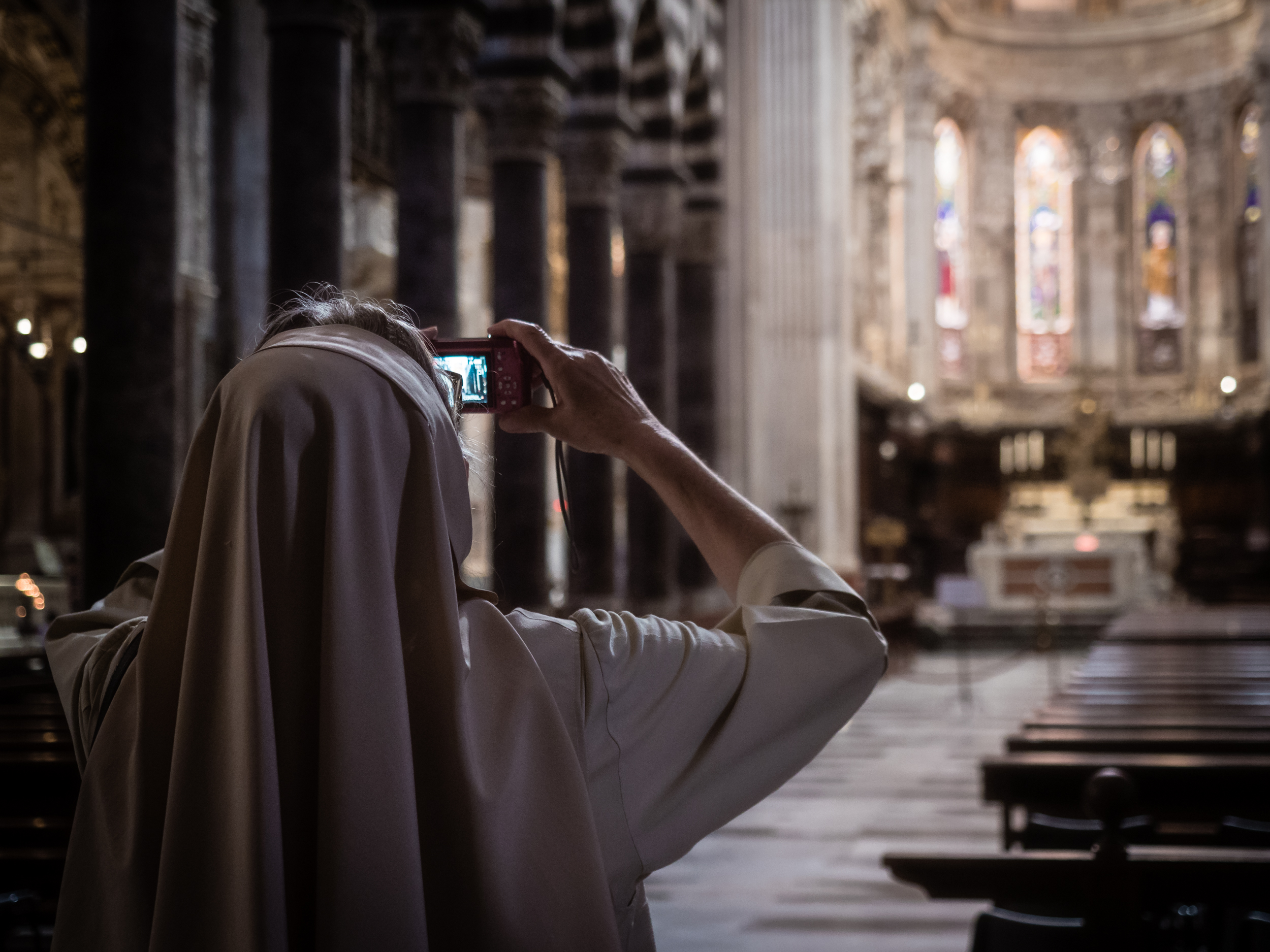
Popular
The church is probably the most famous in Genoa, located on the Castello hill of the city and flanked by the large Tower of the Embriaci.
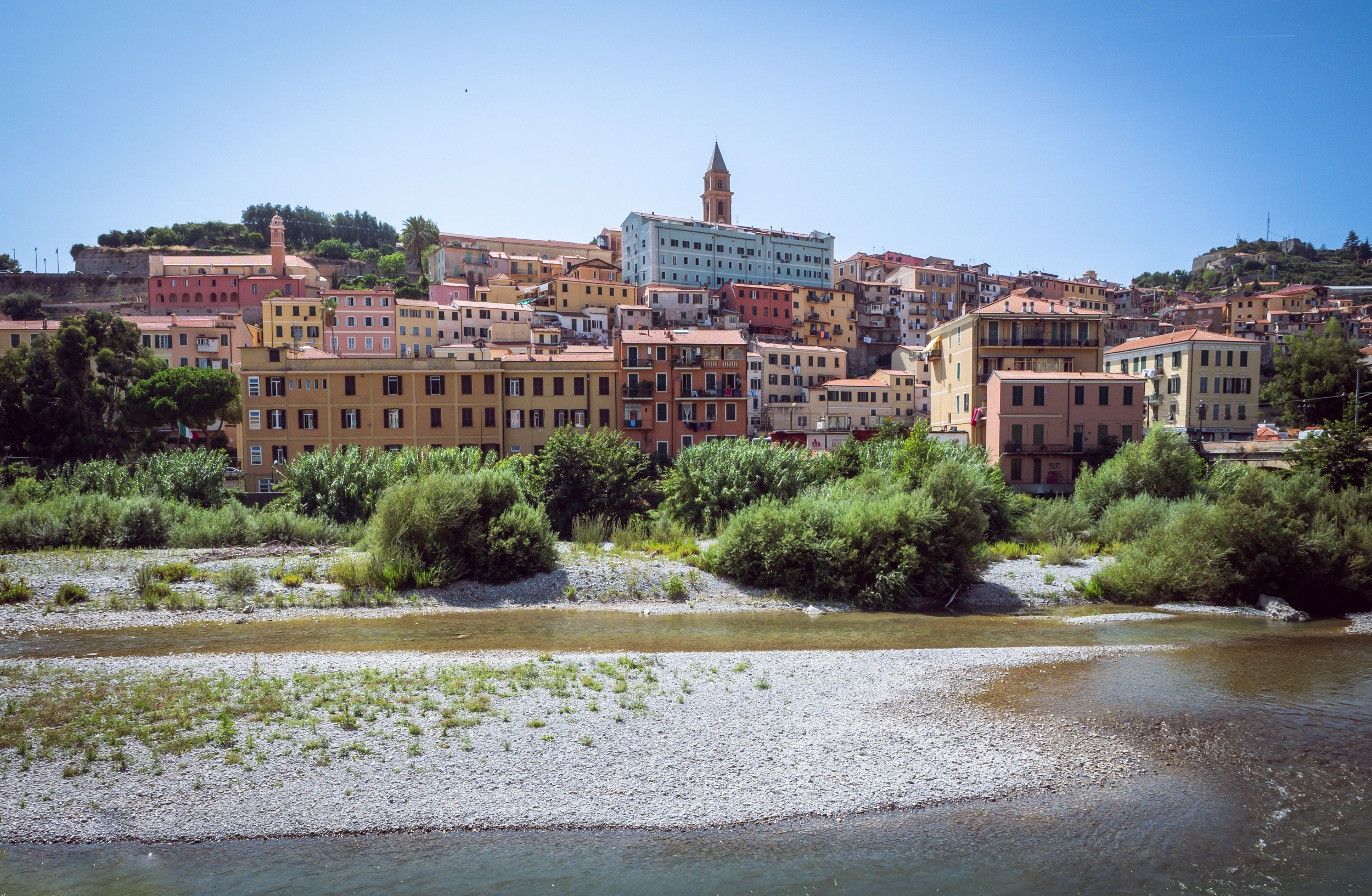
Ventimiglia
Our next stop on the way to Monaco was Ventimiglia, on the border to France.
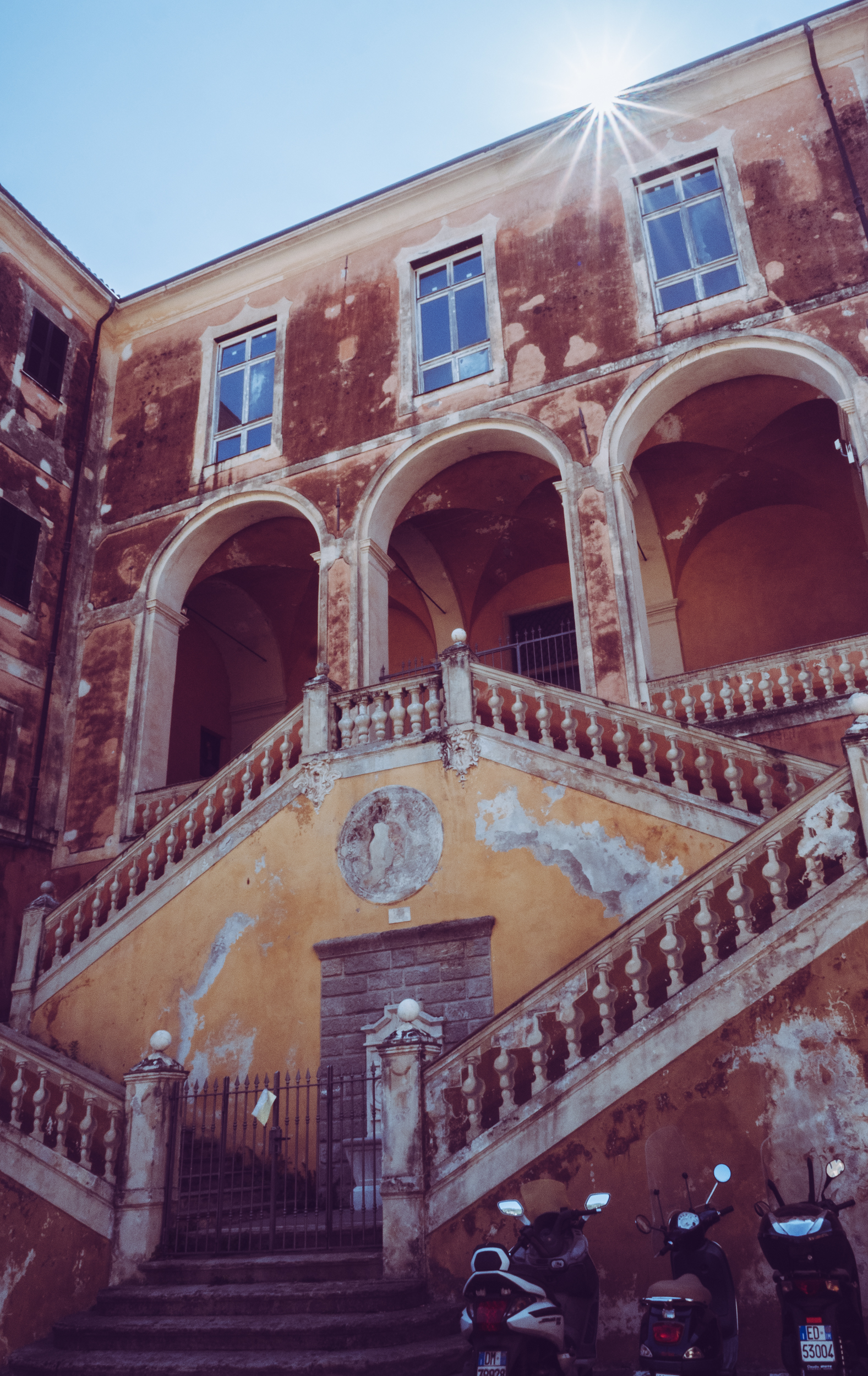
Old City Centre
One of the buildings in the ancient medieval city centre, perched on a hill overlooking the new town

Street Scenes
The typical Italian streets - Ventimiglia's old city is no different in this respect.

Cat Convent
Got to have a few in each album.

View
A few over the Monaco and Monte Carlo districts of the Principality of Monaco, seen from the Palace du Palais square.
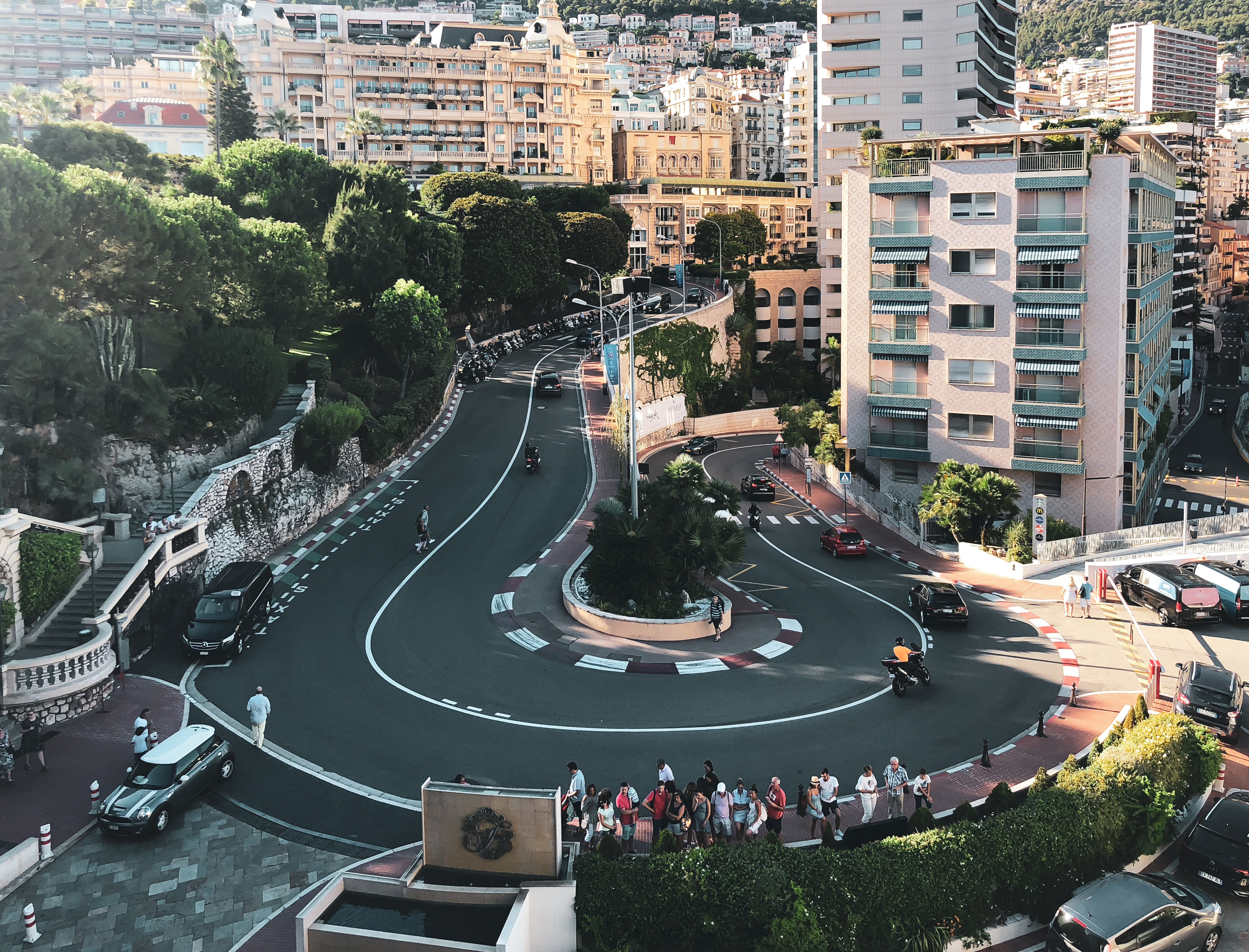
Hairpin
The infamous Formula 1 Hairpin curve just in front of the Fairmont Hotel.
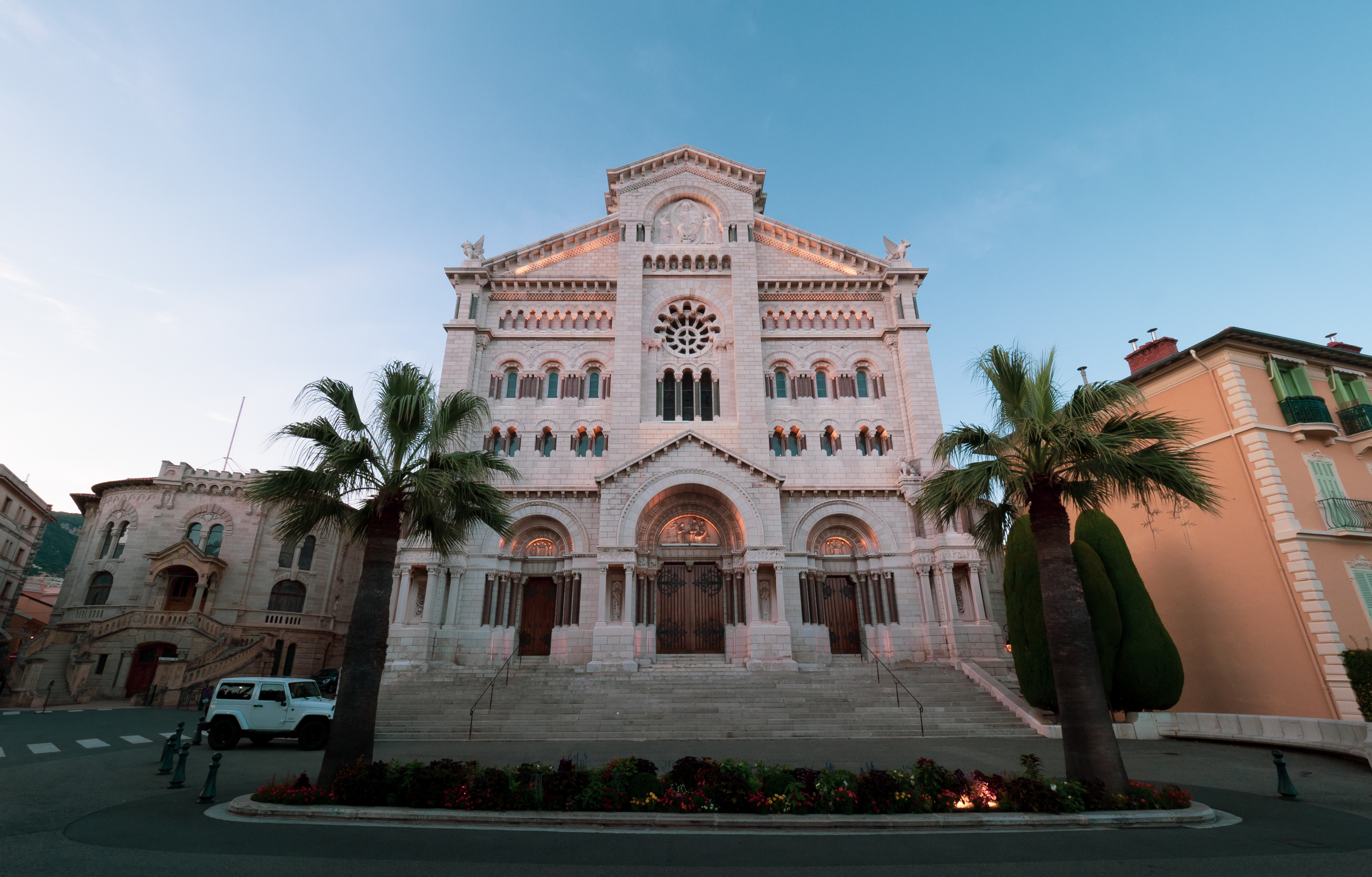
Saint Nicholas Cathedral
The romanesque Catholic cathedral dedicated to Saint Nicholas is the largest in Monaco. Unfortunately it was already closed when we got there.
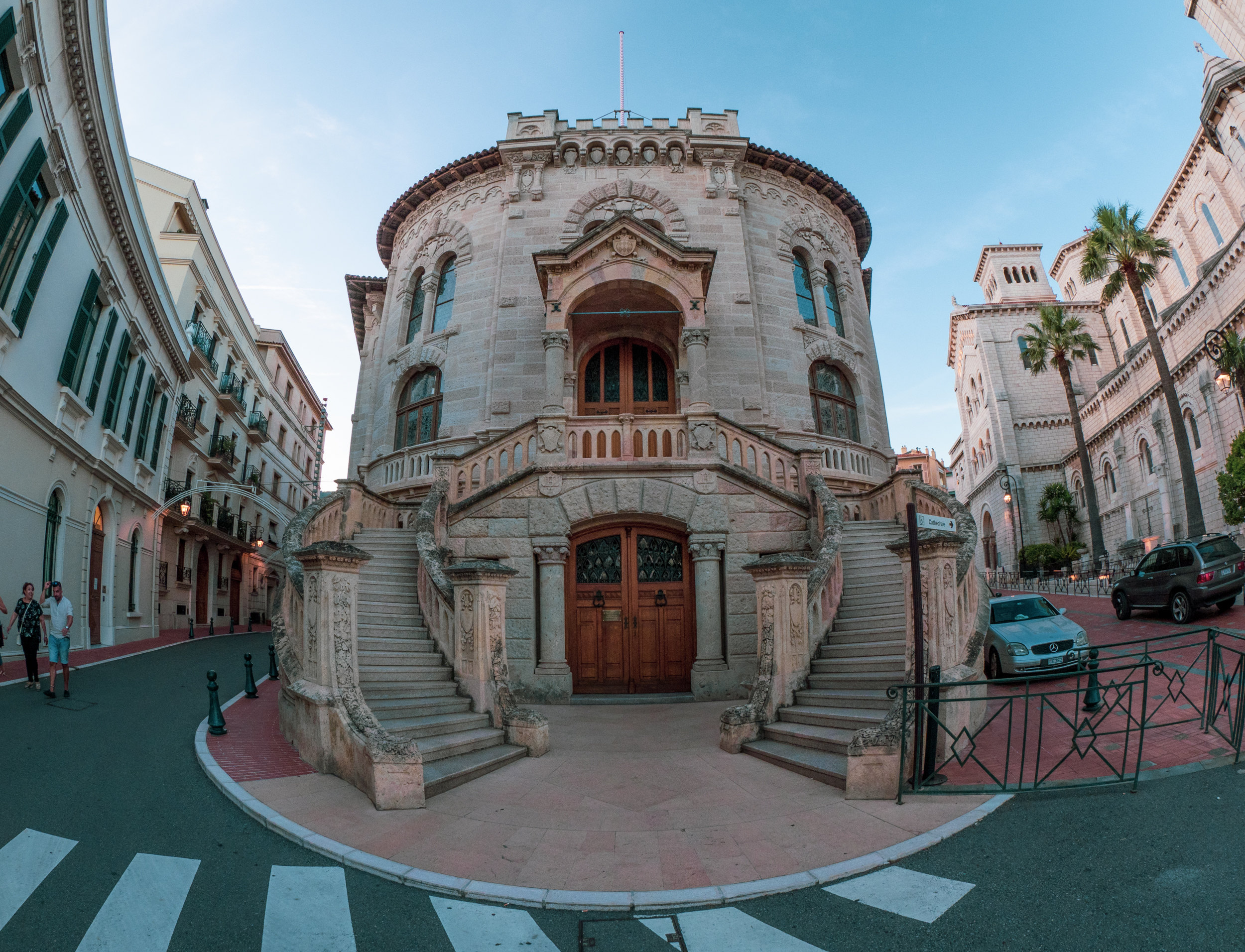
Palace of Justice
A fisheye shot of the building housing the Monaco Supreme Court.
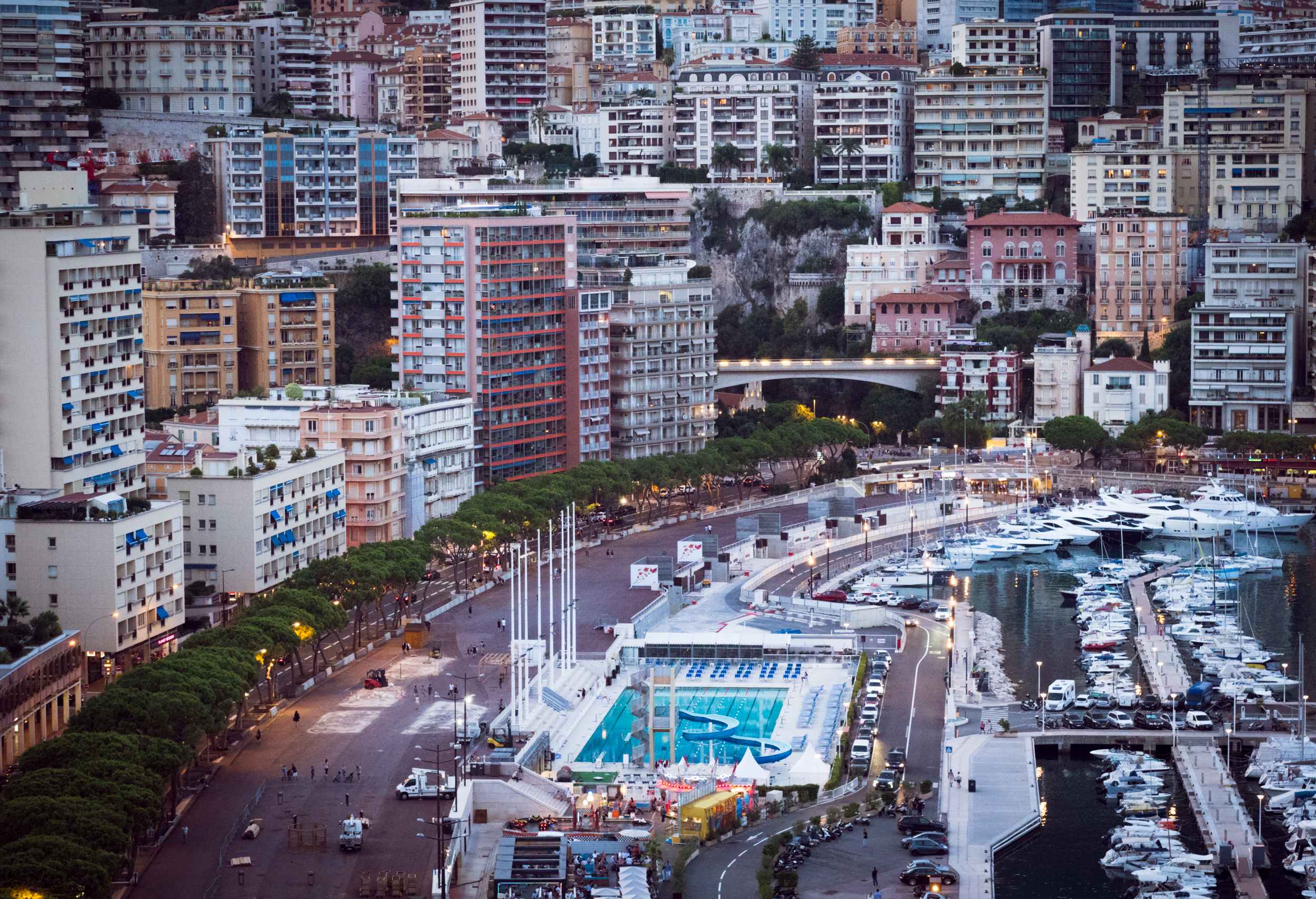
Swimming Pool
The construction of the Rainier III Nautical Stadium and its swimming pool forced the Formula 1 track to be adapted in the 1970s.

Rich
In 2014, it was noted about 30% of Monaco's population was made up of millionaires.
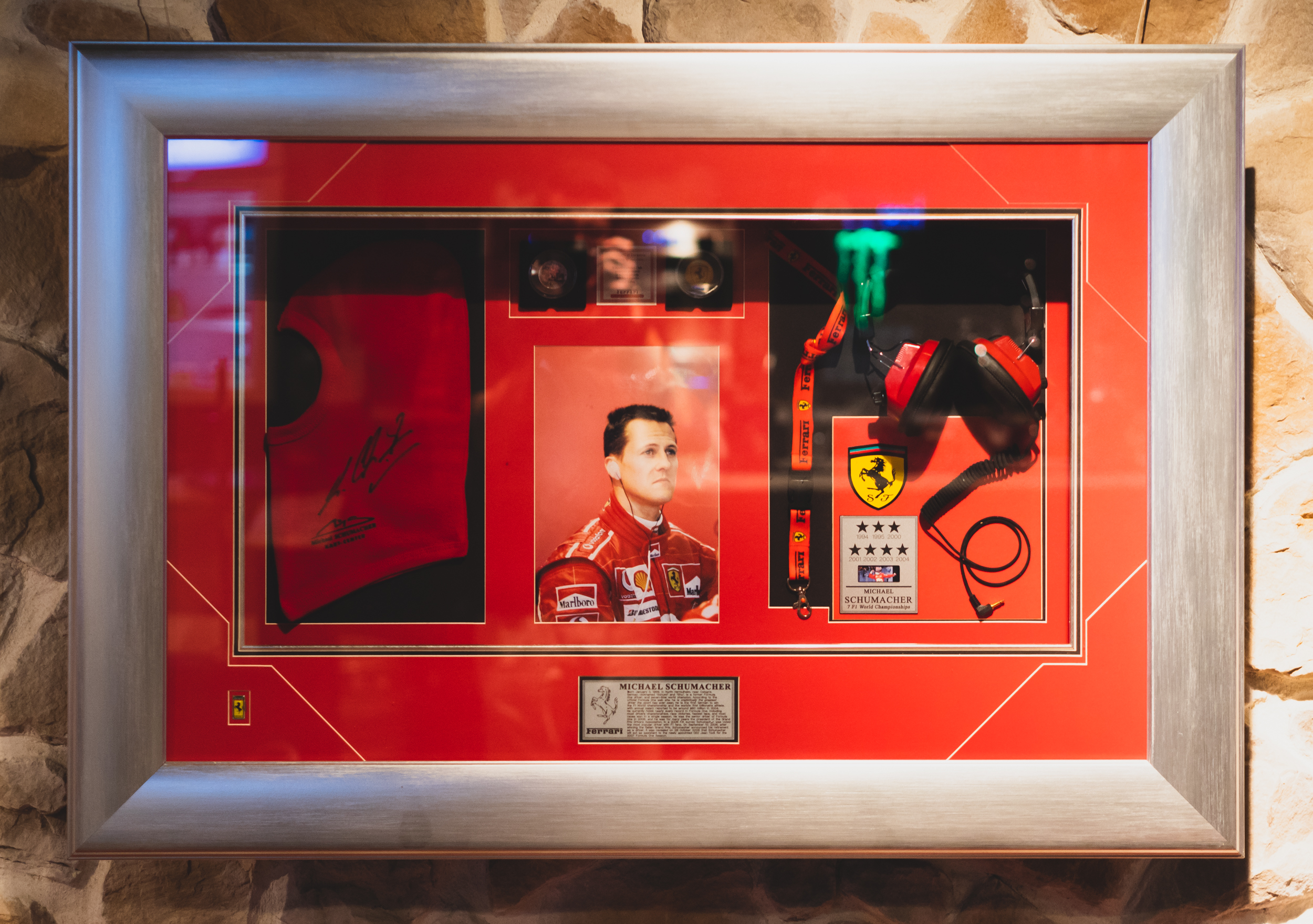
A City Circuit
Michael Schumacher once said before the 2012 Grand Prix that the additional risk is "justifiable once a year", as the circuit is not quite up to modern Formula 1 safety standards.
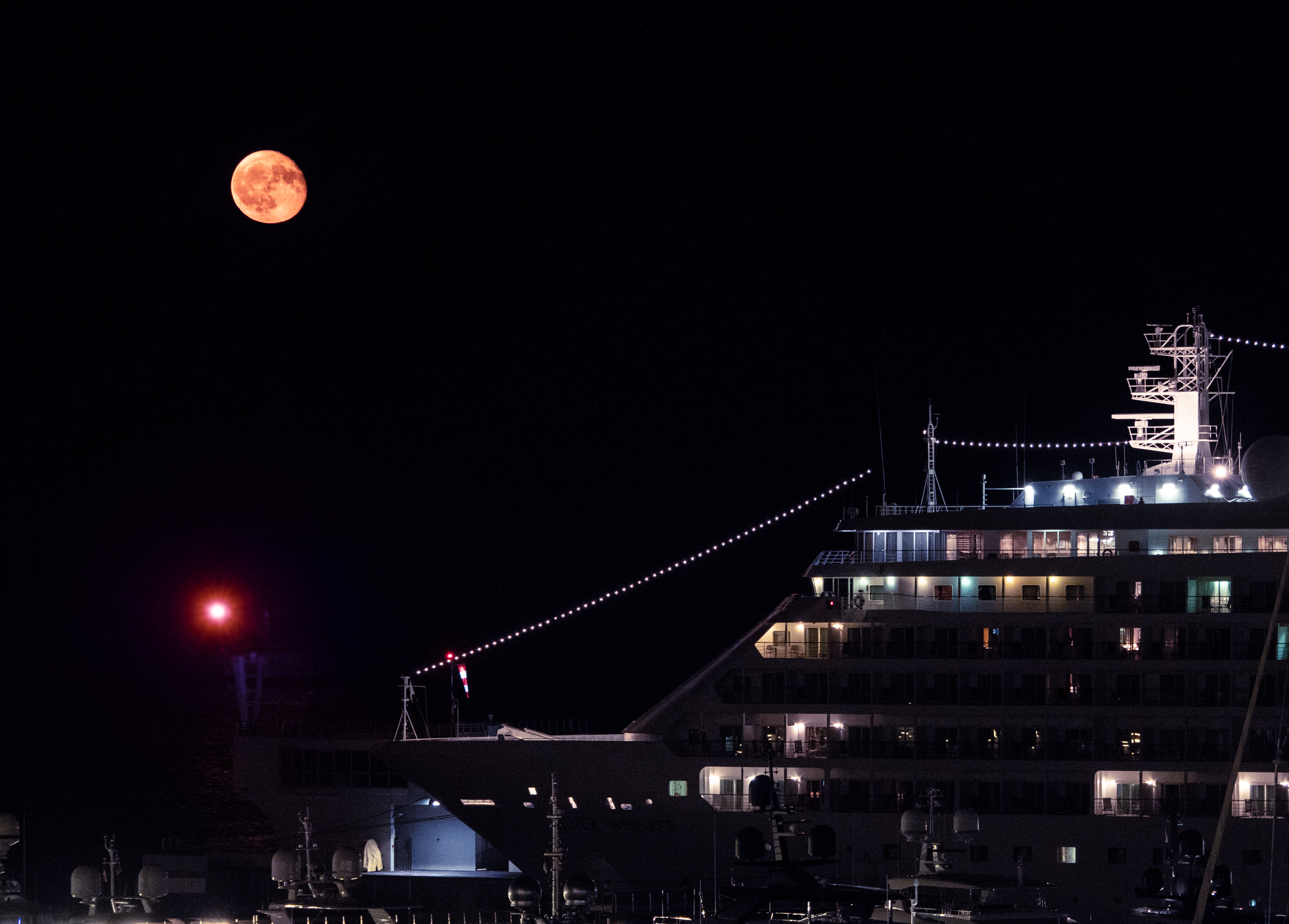
Moonrise
Another moon rise, this time seen from the Monaco harbour, looking over one of the ships anchored at its cruise terminals.
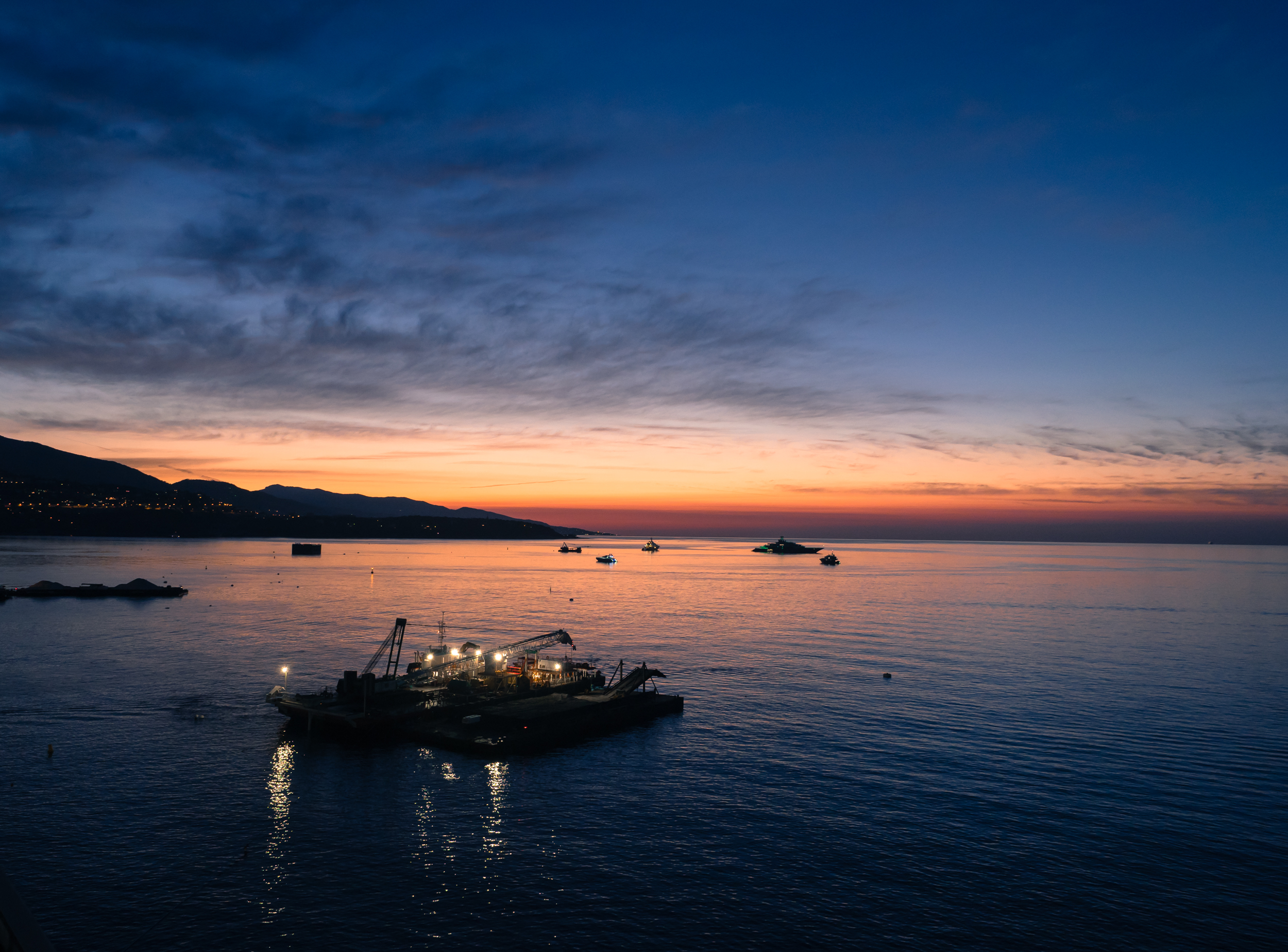
Sunrise
The sunrise seen from the Fairmont hotel, which sits just next to a €2 billion operation to reclaim six hectares of land to counter Monaco's notorious shortage of building space.
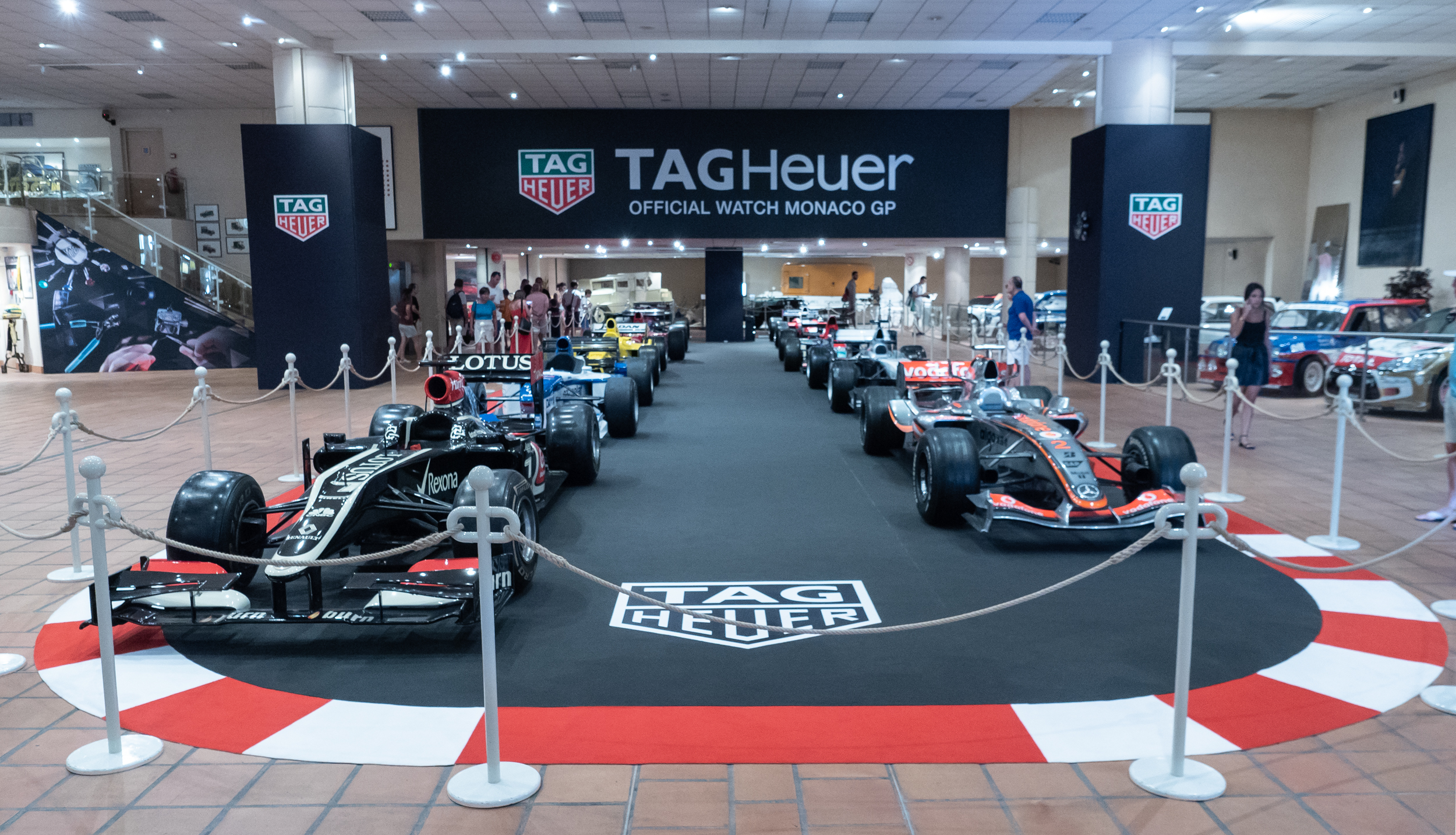
The Cars Collection of H.S.H. the Prince of Monaco
The collection houses several Formula 1 cars from throghout the history of the race.
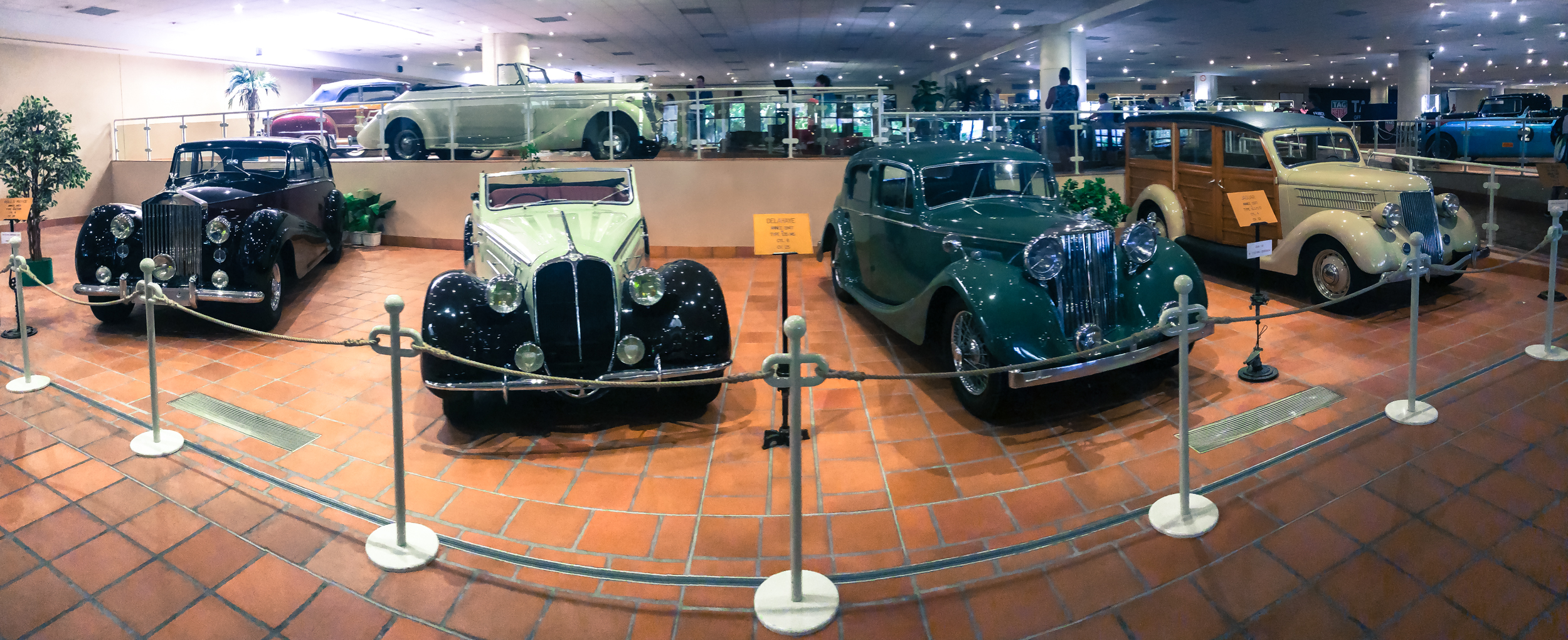
The Cars Collection of H.S.H. the Prince of Monaco
The museum includes the Bugatti Type 35 that won the inaugural Monaco Grand Prix in 1929.
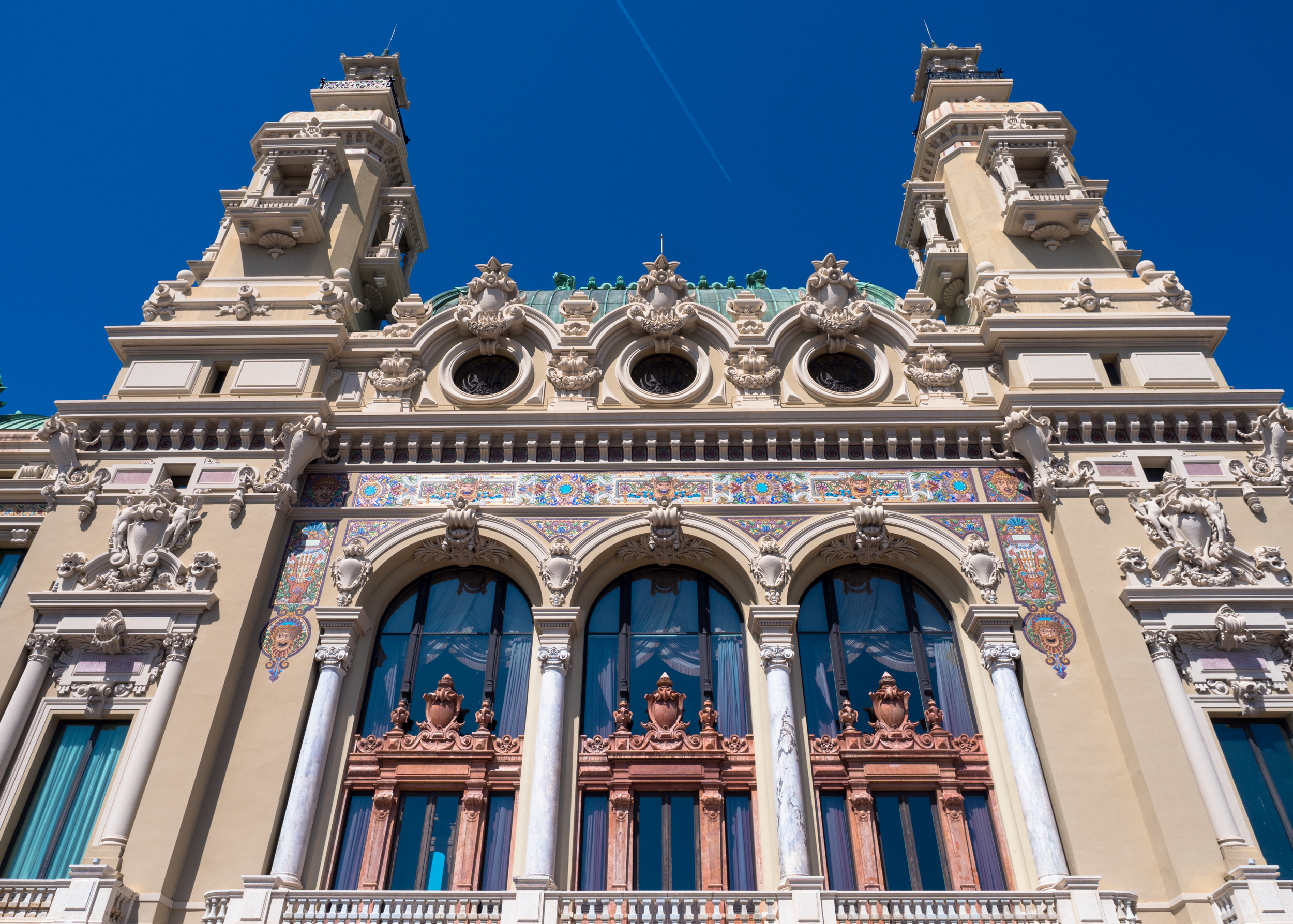
Casino de Monte Carlo
The most famous casino in Monte Carlo, owned largely by the ruling family, opened over 150 years ago.
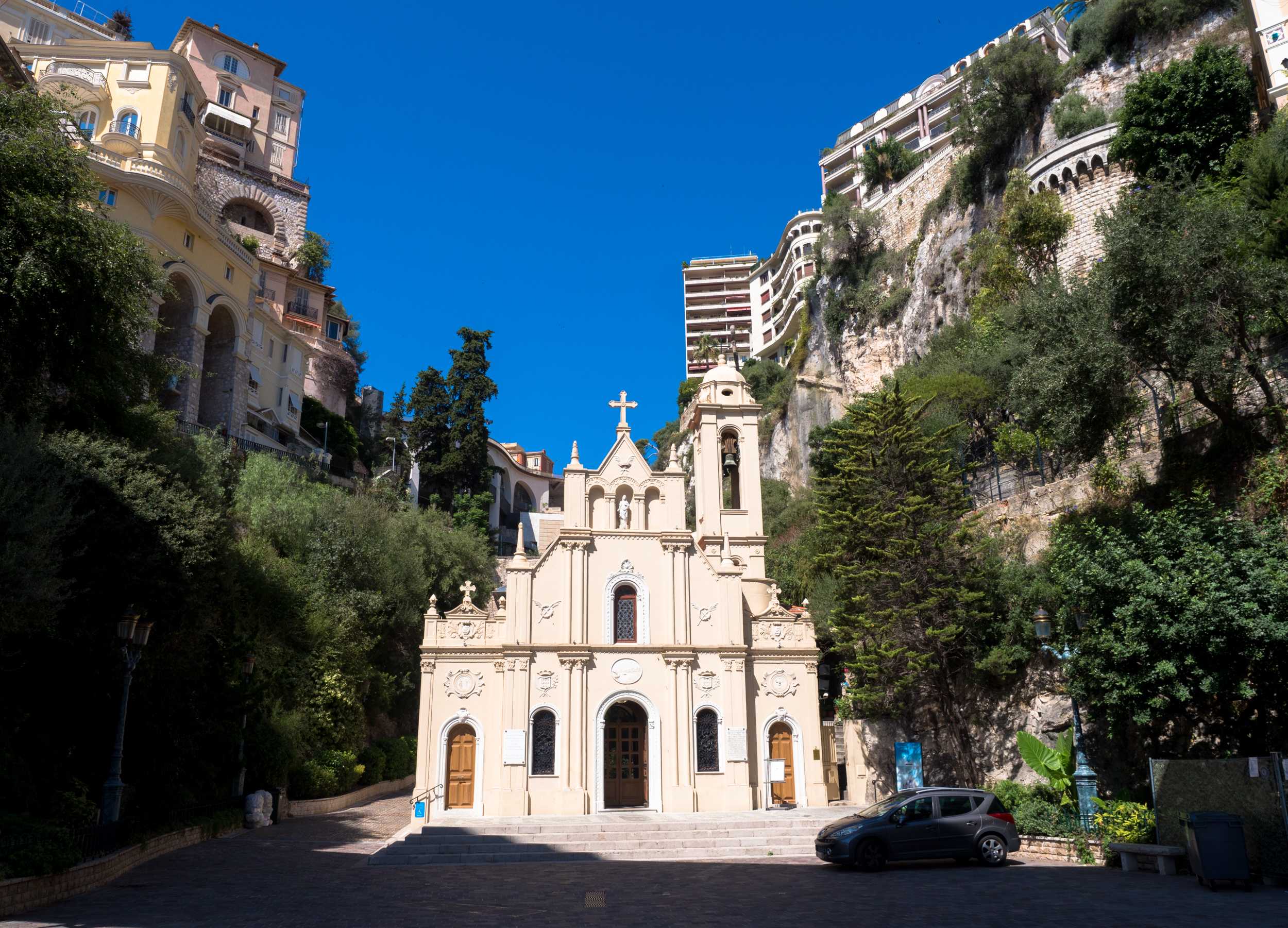
Sainte-Dévote Chapel
The name of the chapel is used to identify the first corner of the Monaco Grand Prix track.
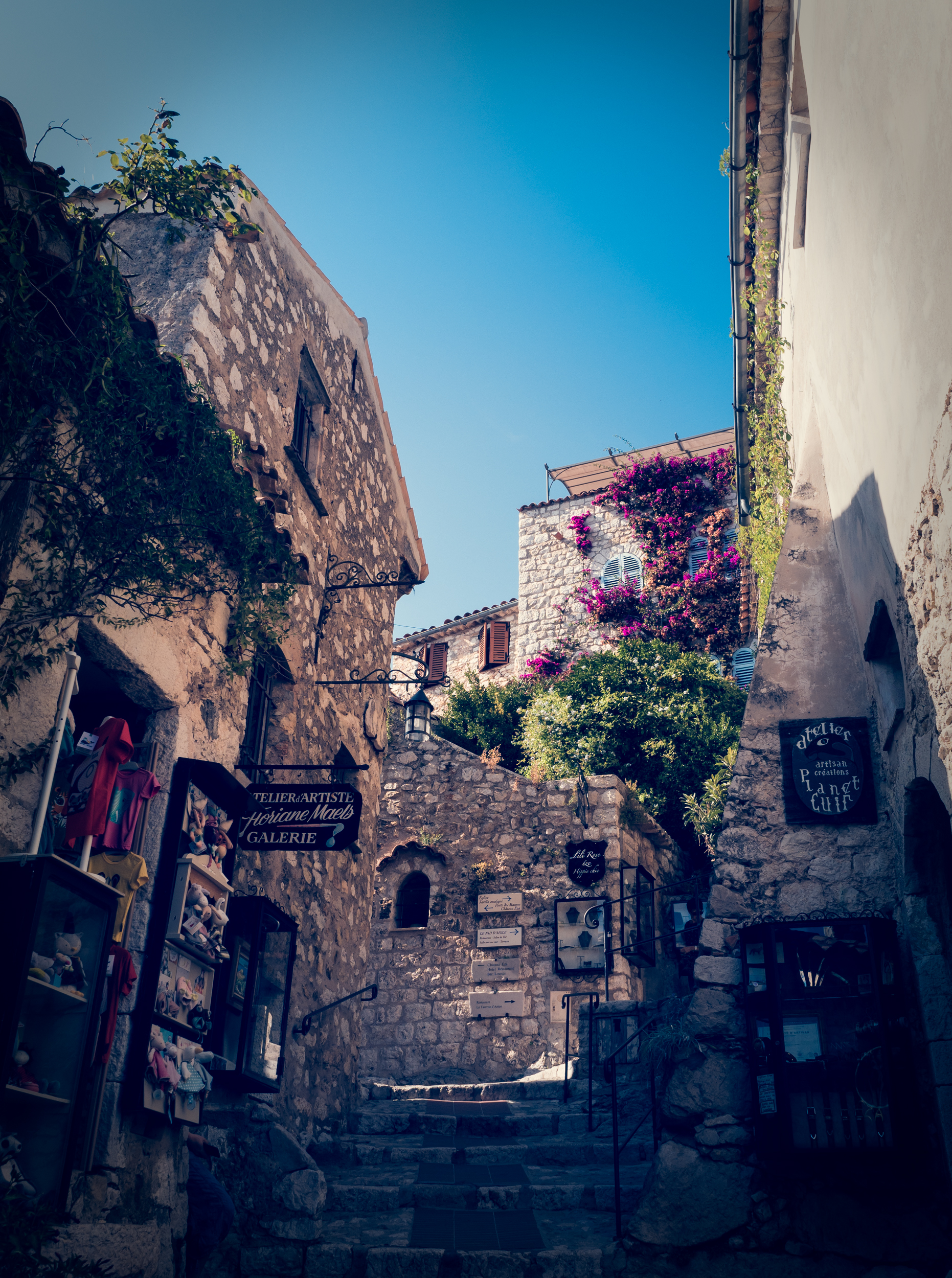
Eze's medieval town
While the location is beautiful and the city sports a beautiful botanical garden, the rest of the village feels very touristy.

View from the Top
Eze is famous for the view of the sea from its hill top. Walt Disney spent a significant amount of time here, and Nietzsche appearantly walked up the hill path daily from his residence on the coast.

Northerly View from Eze
With the coastal road and its bridge over the canyon.
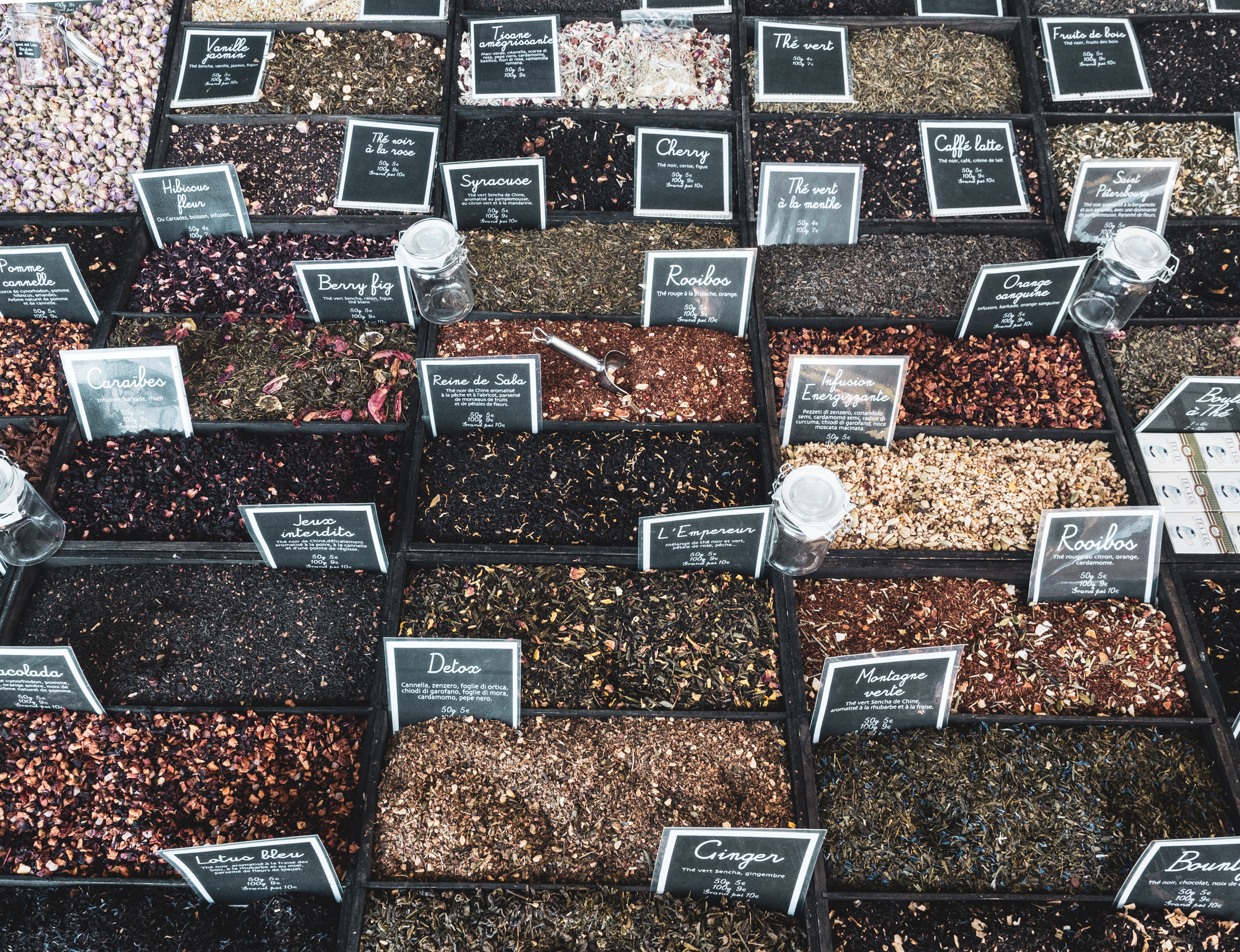
Local Spices
A spice shop in Eze with local spices from the Côte d'Azur.

Le Flore
The real reason for the trip.
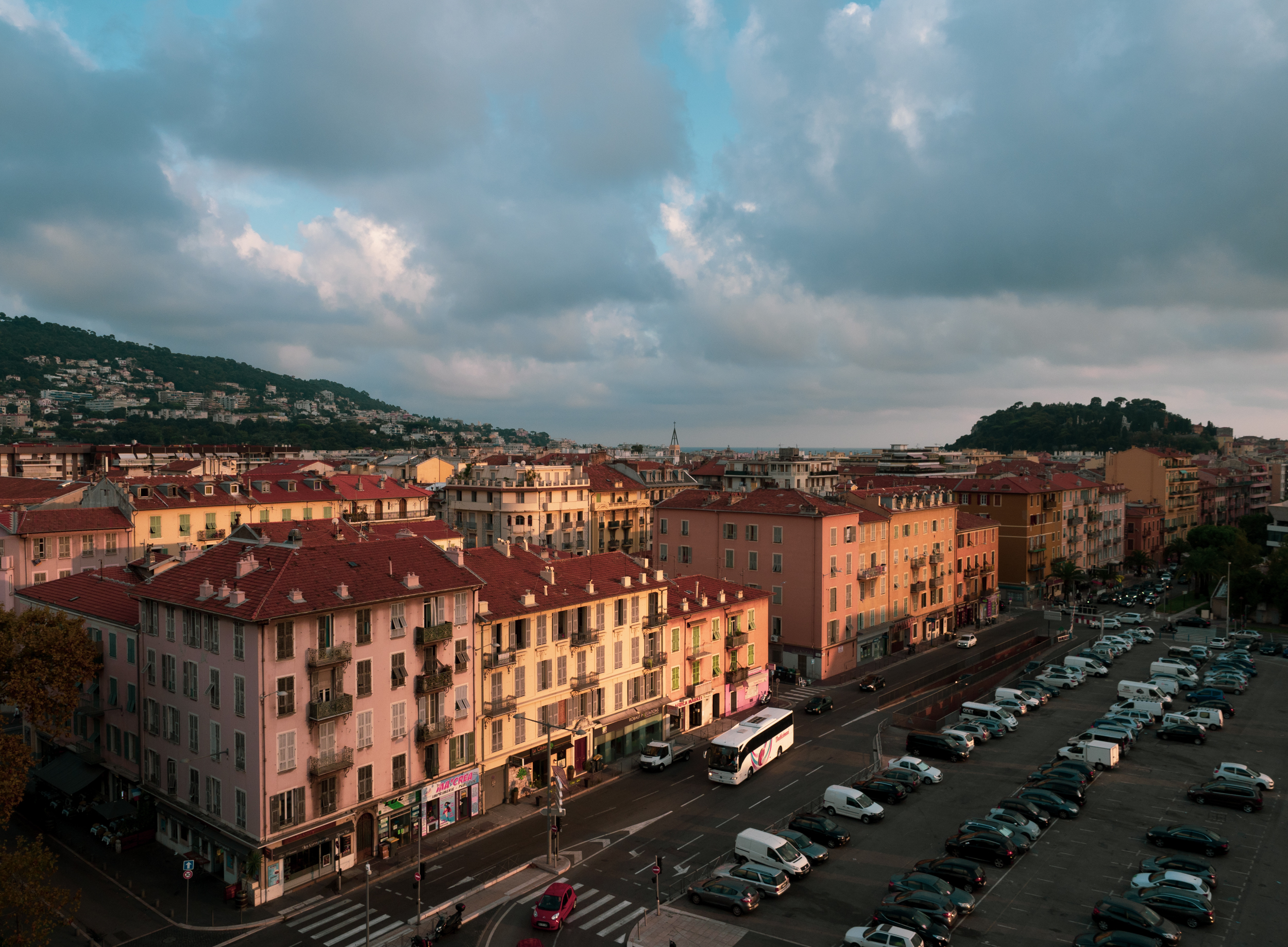
Nice
The view from the terrace of the NH hotel, looking along the Boulevard Risso.

The Square Head Building
A habitable sculpture, is 30 metres high, has 7 floors, and accommodates 40 administrative staff members of the administrative office of Bibliothèque Louis Nucéra.

Modern and Contemporary Art Museum
A view from the Traverse Garibaldi road looking upwards.
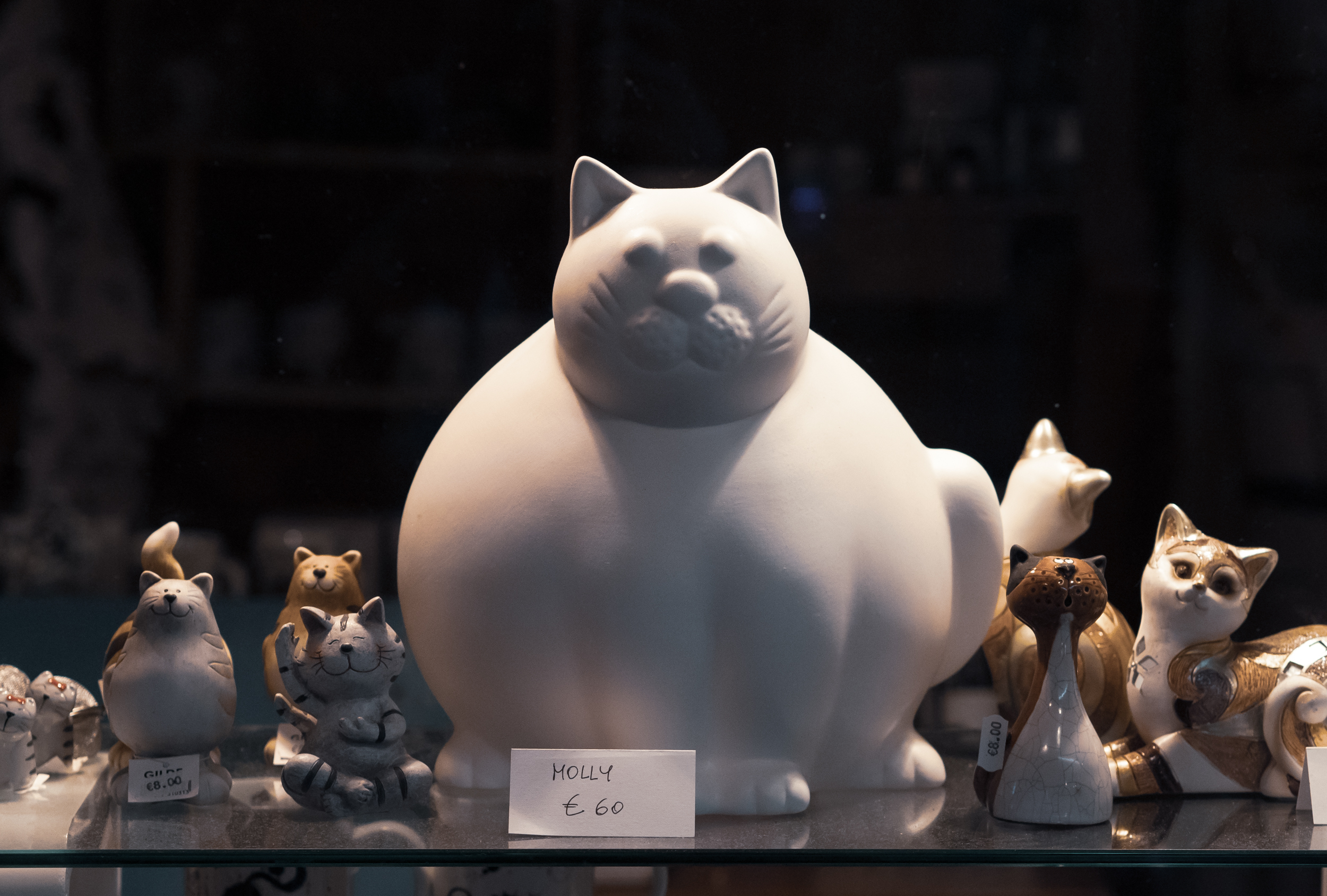
Cat Shop
Ran into this window display in Nice.
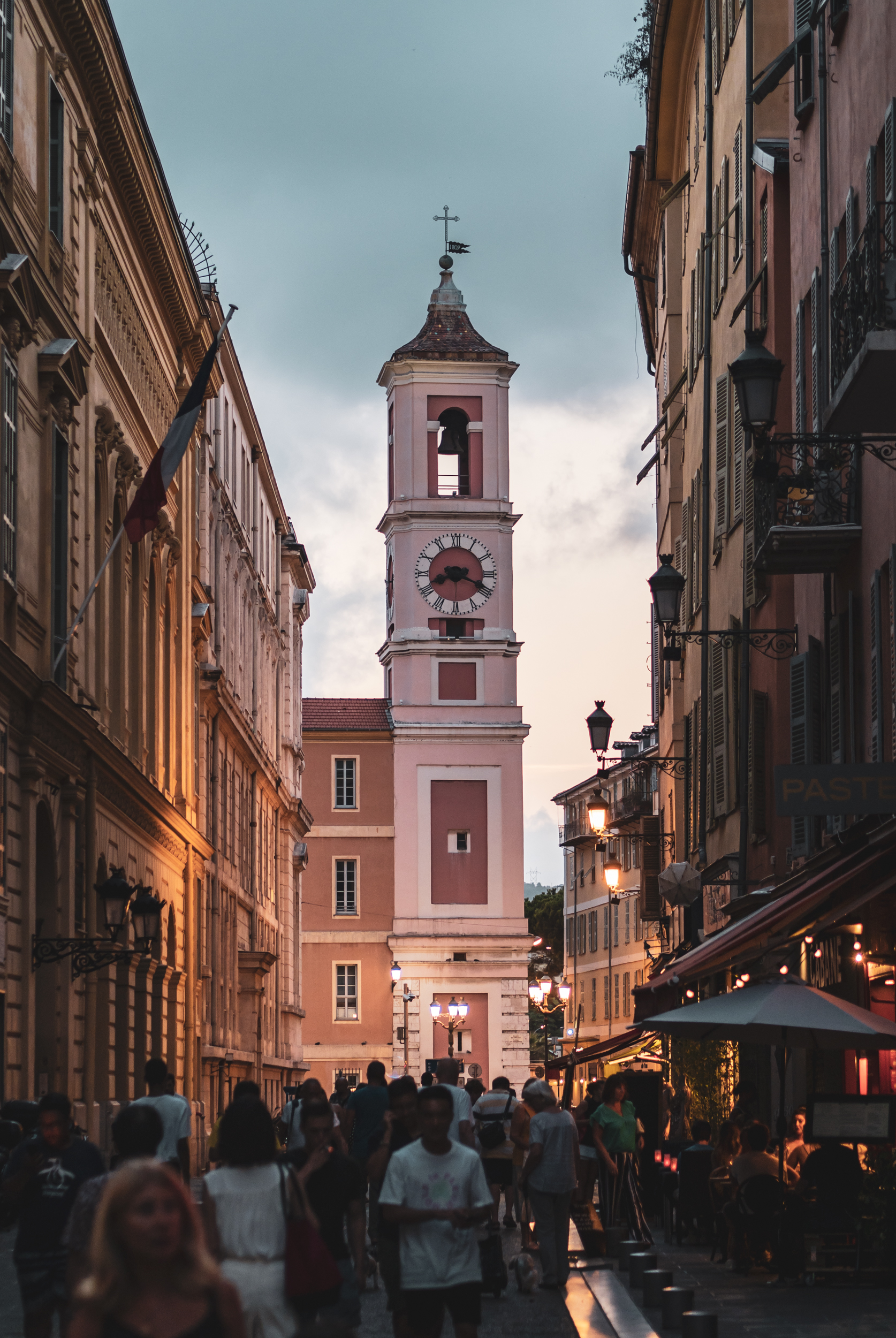
Tour de l'Horloge
Looking down one of the roads leading to the tower opposite the Palace of Justice.

Beachfront
The view towards the east with Nice's beautiful beachfront.

Selfie Time
Should have taken a few more in hindsight!
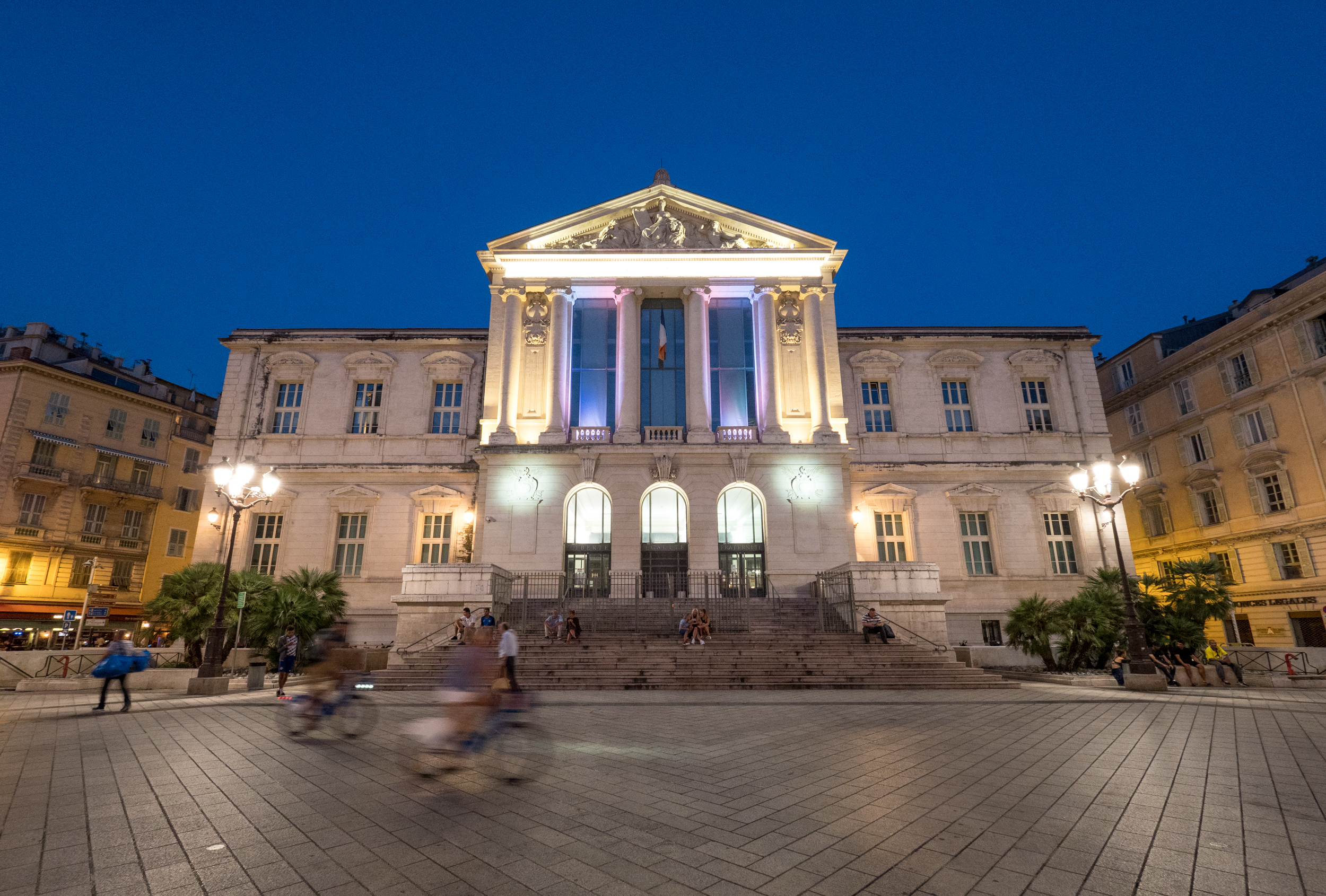
Palace of Justice
The aforementioned courthouse with its neoclassical architecture.
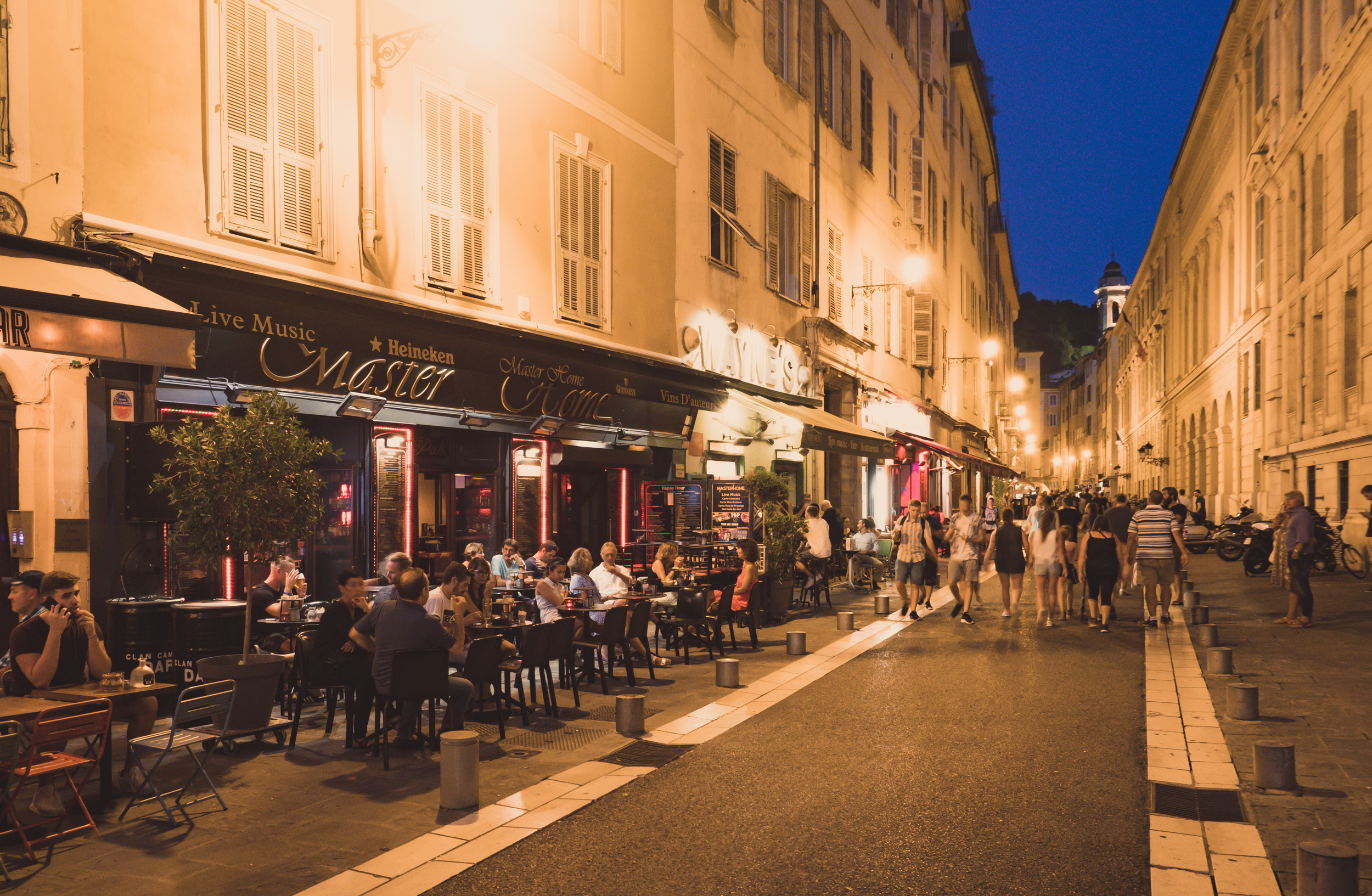
Nice Nightlife
The evening atmosphere in Nice was very lively, with lots of busy restaurants and streetlife without seeming too crowded or touristic.
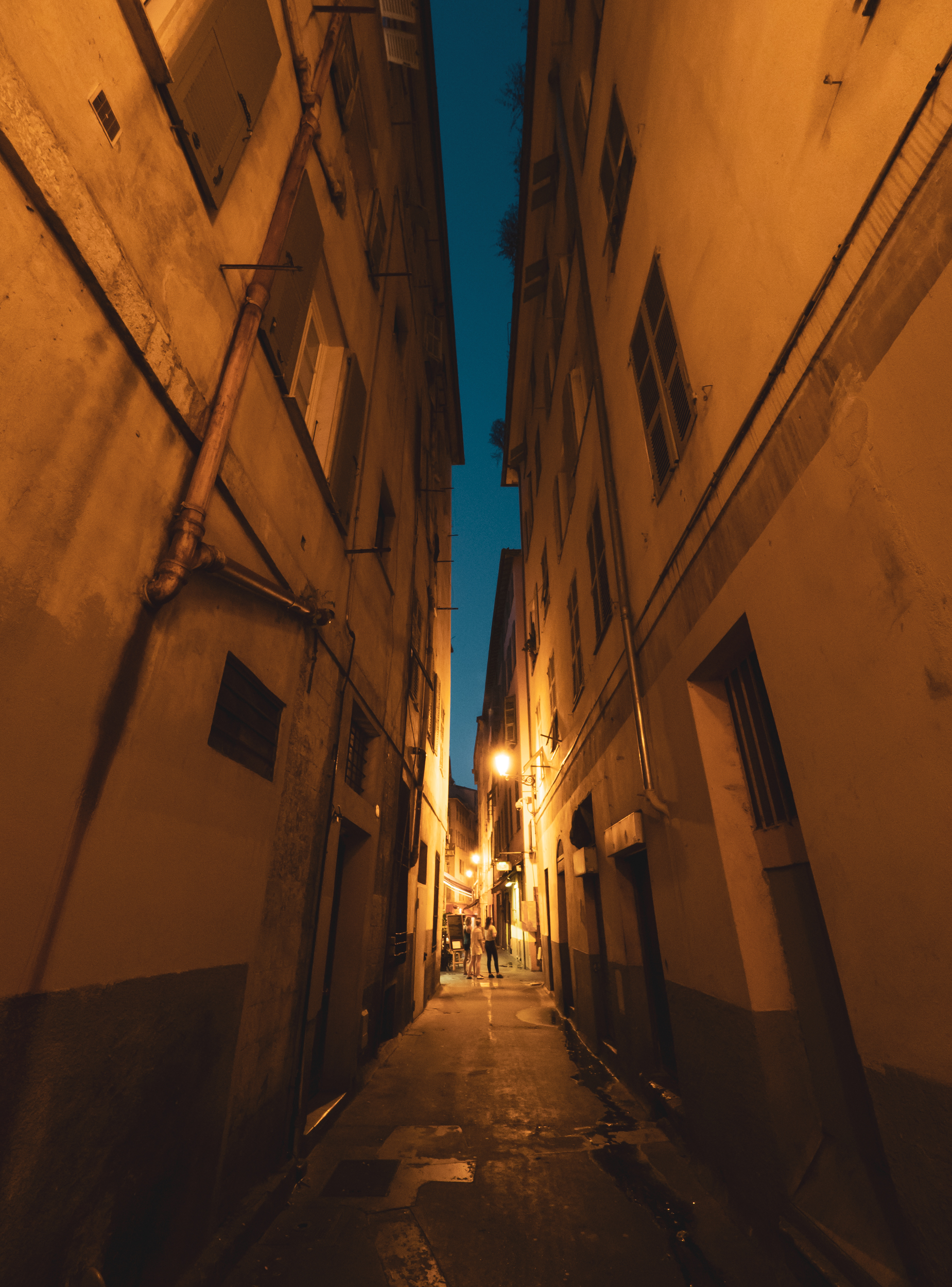
Hold your breath
One of the many narrow alleys in Nice.

A Cigarette on the Balcony
In pleasant late August temperatures.
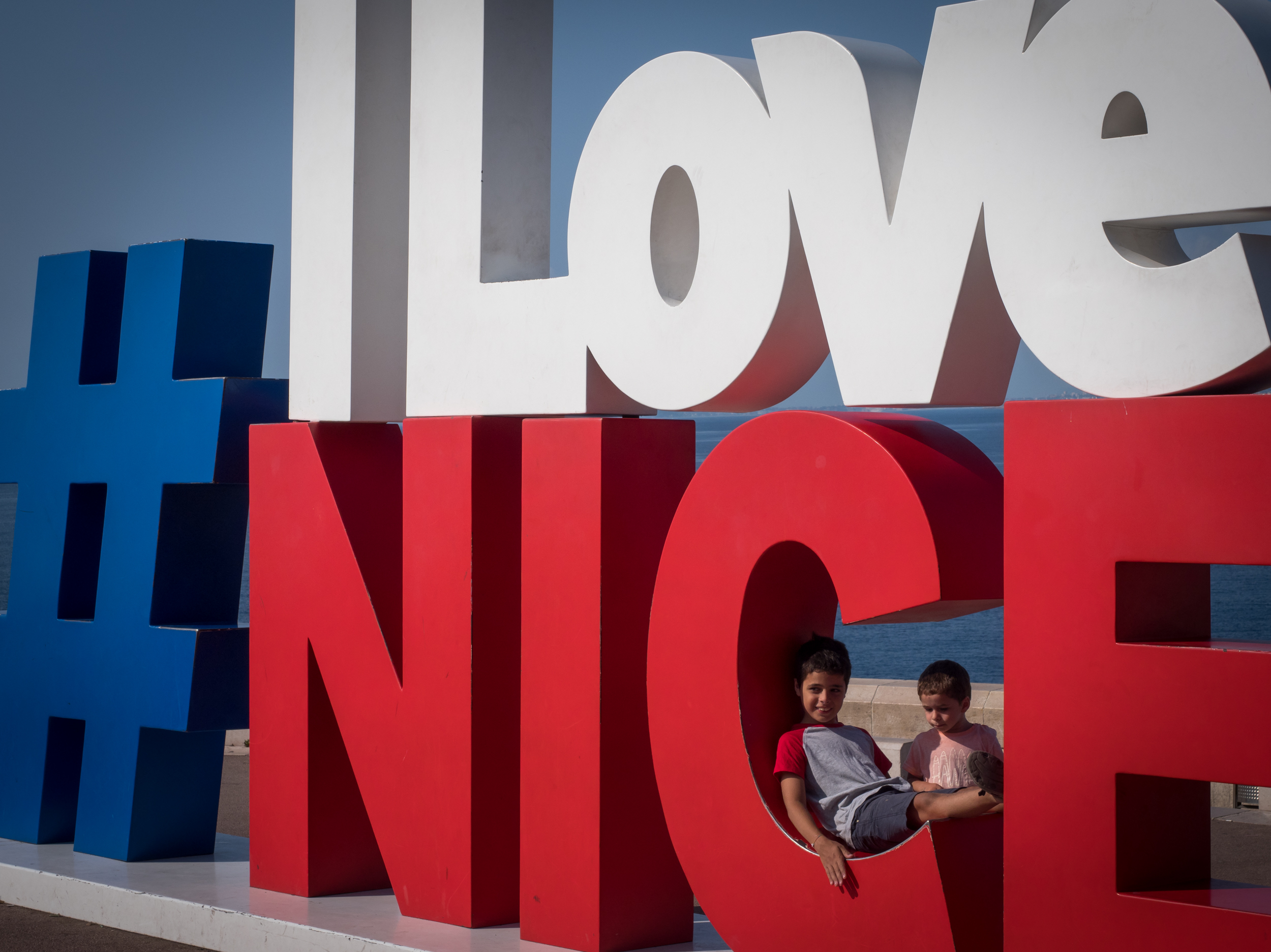
Indeed
I was positively surprised by the city, 1 day definitely wasn't enough.
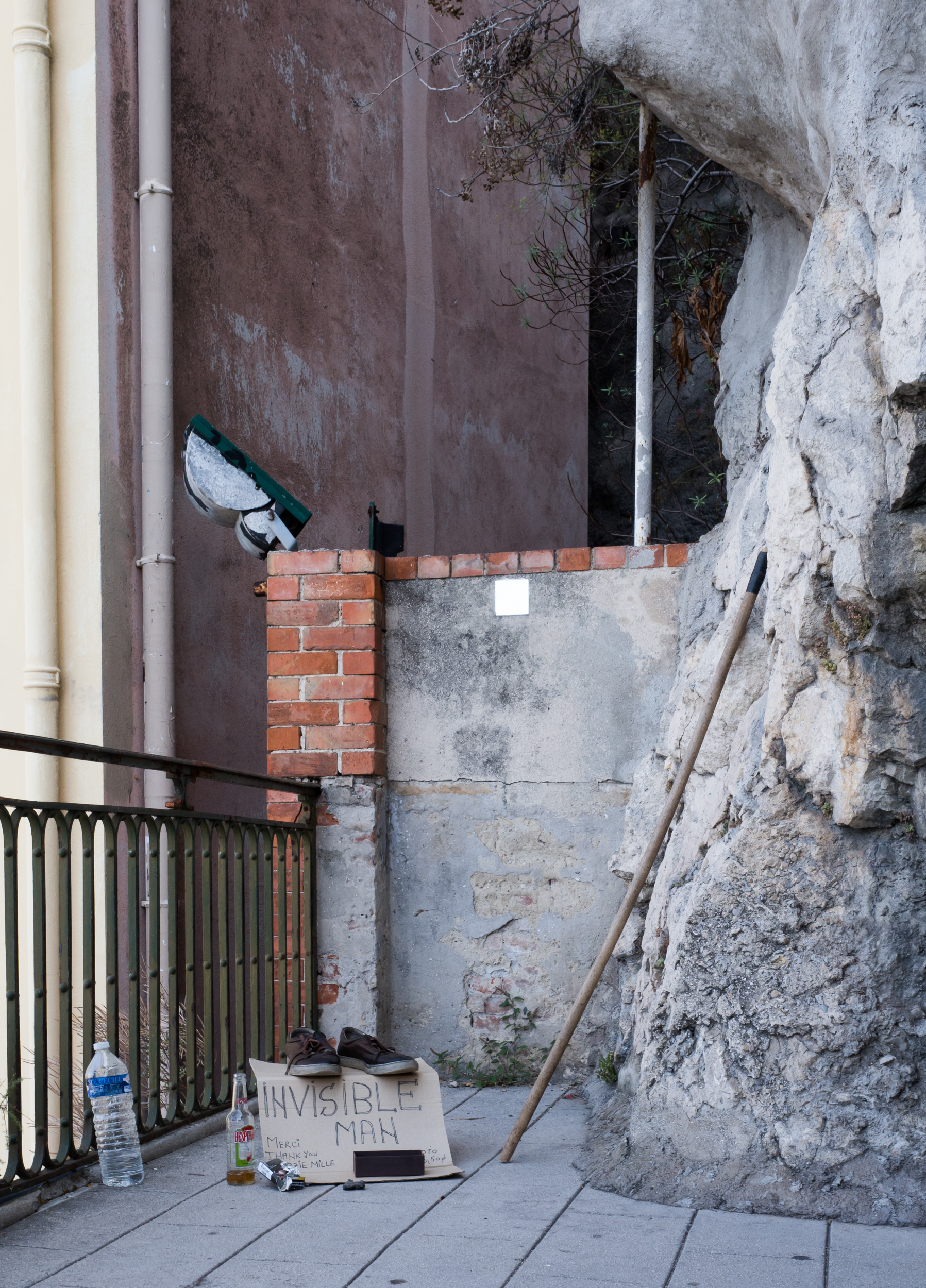
Invisibe Man
We even got a handshake!
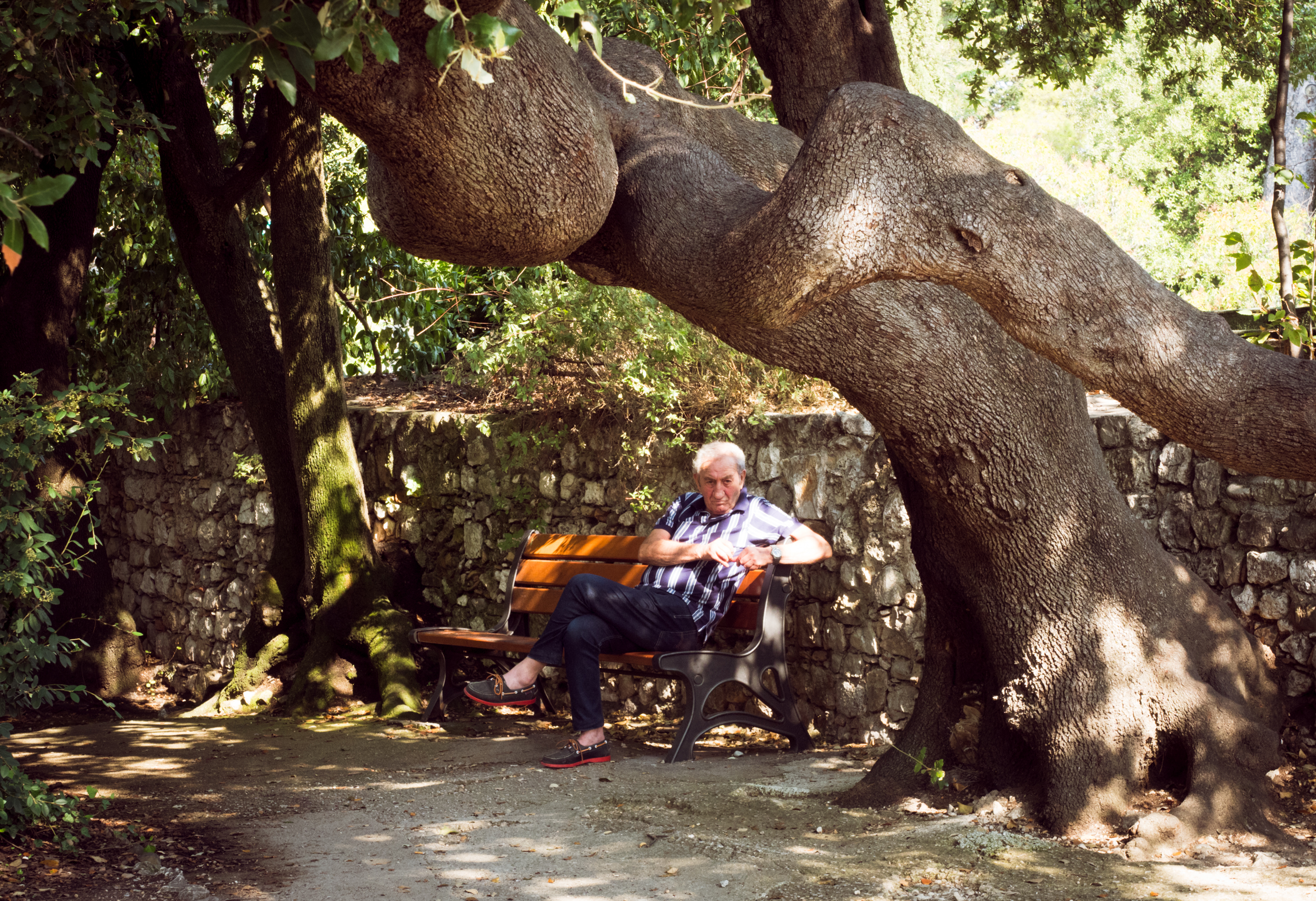
A morning in Hill Park
The castle used to stand on the hill from the 11th to the 18th century, but today just a few ruins remain.
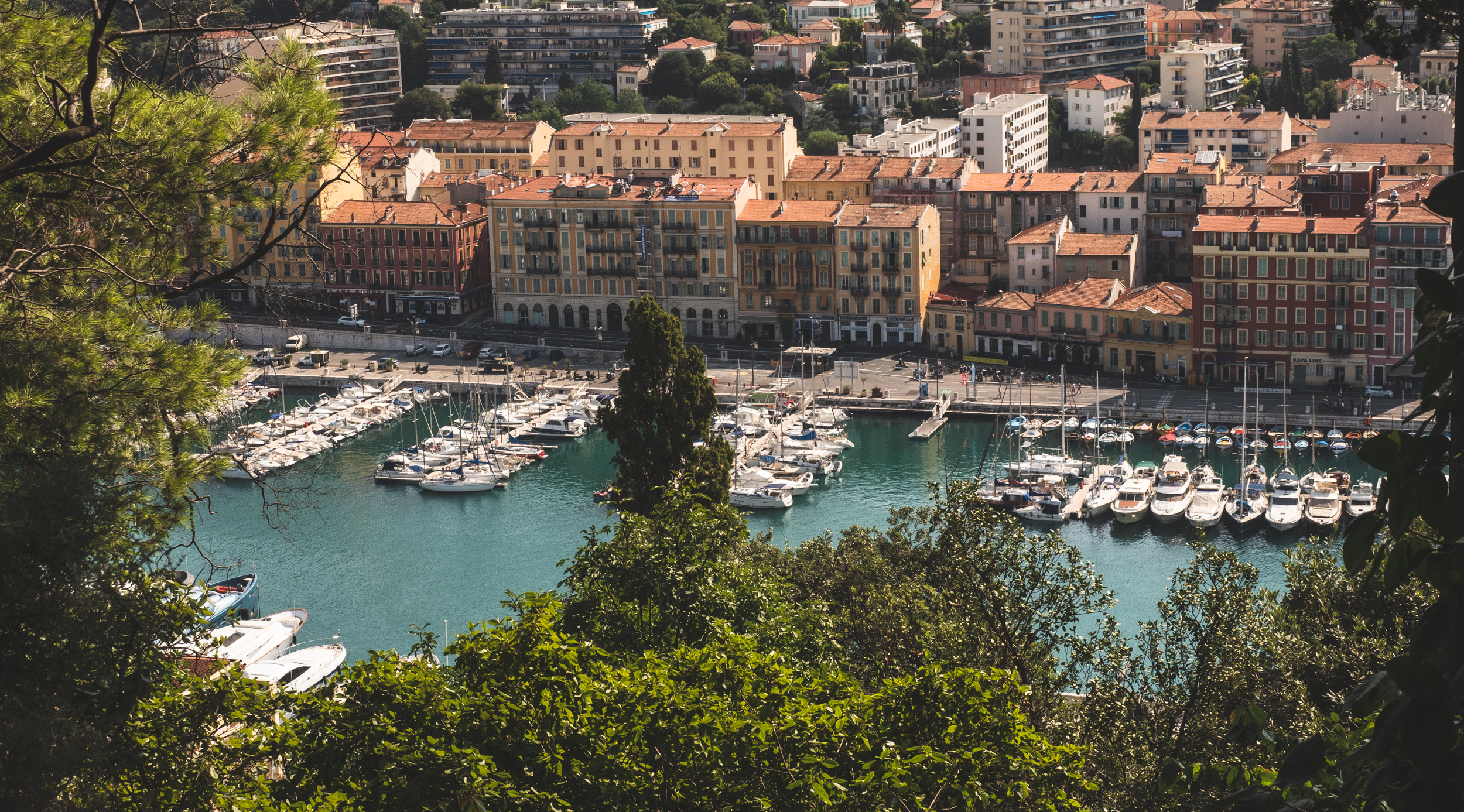
Port of Nice
The port of Nice from the Castle Hill.
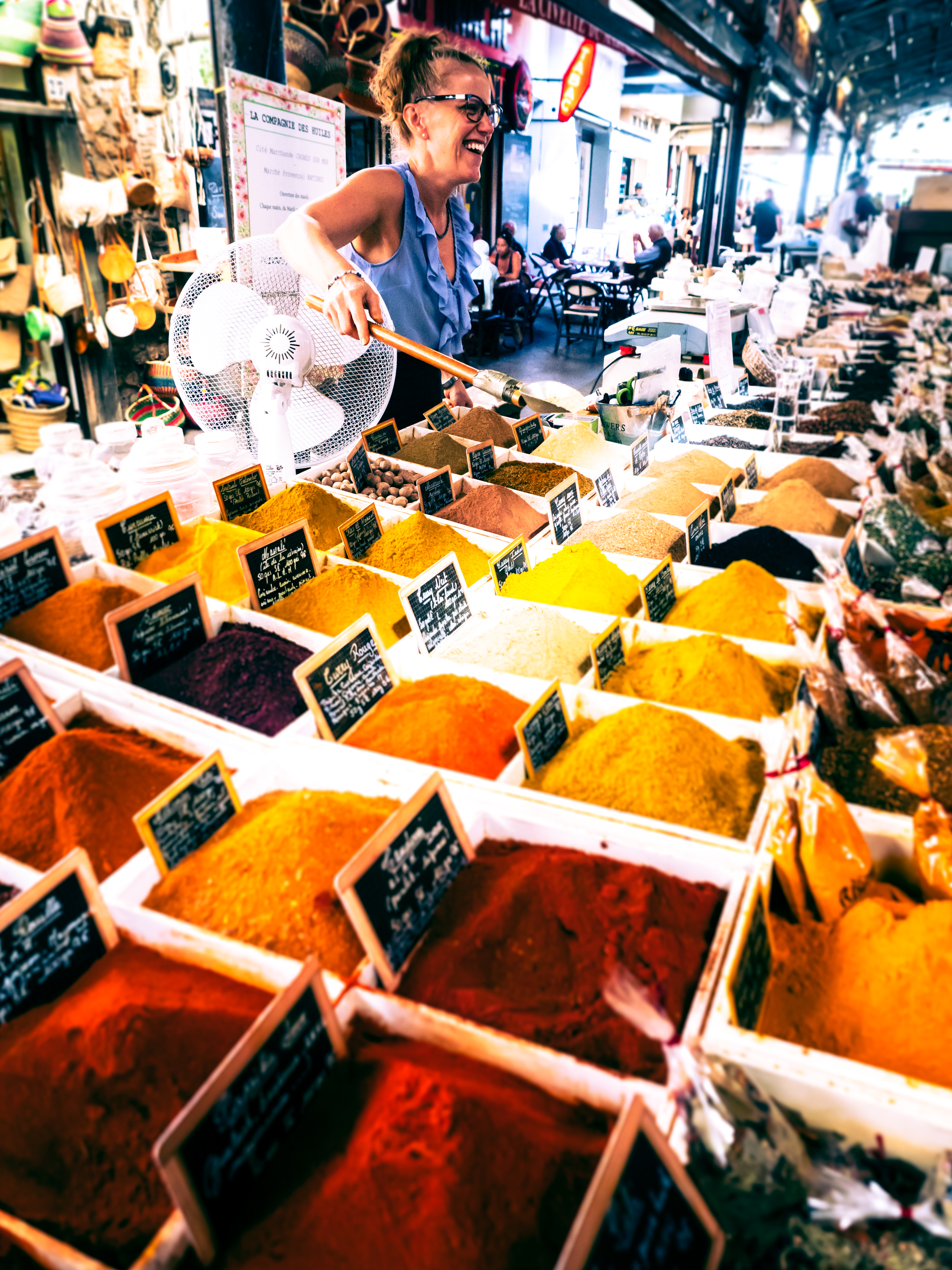
Antibes Market
Onwards to the west brought us to Antibes, with its markets.
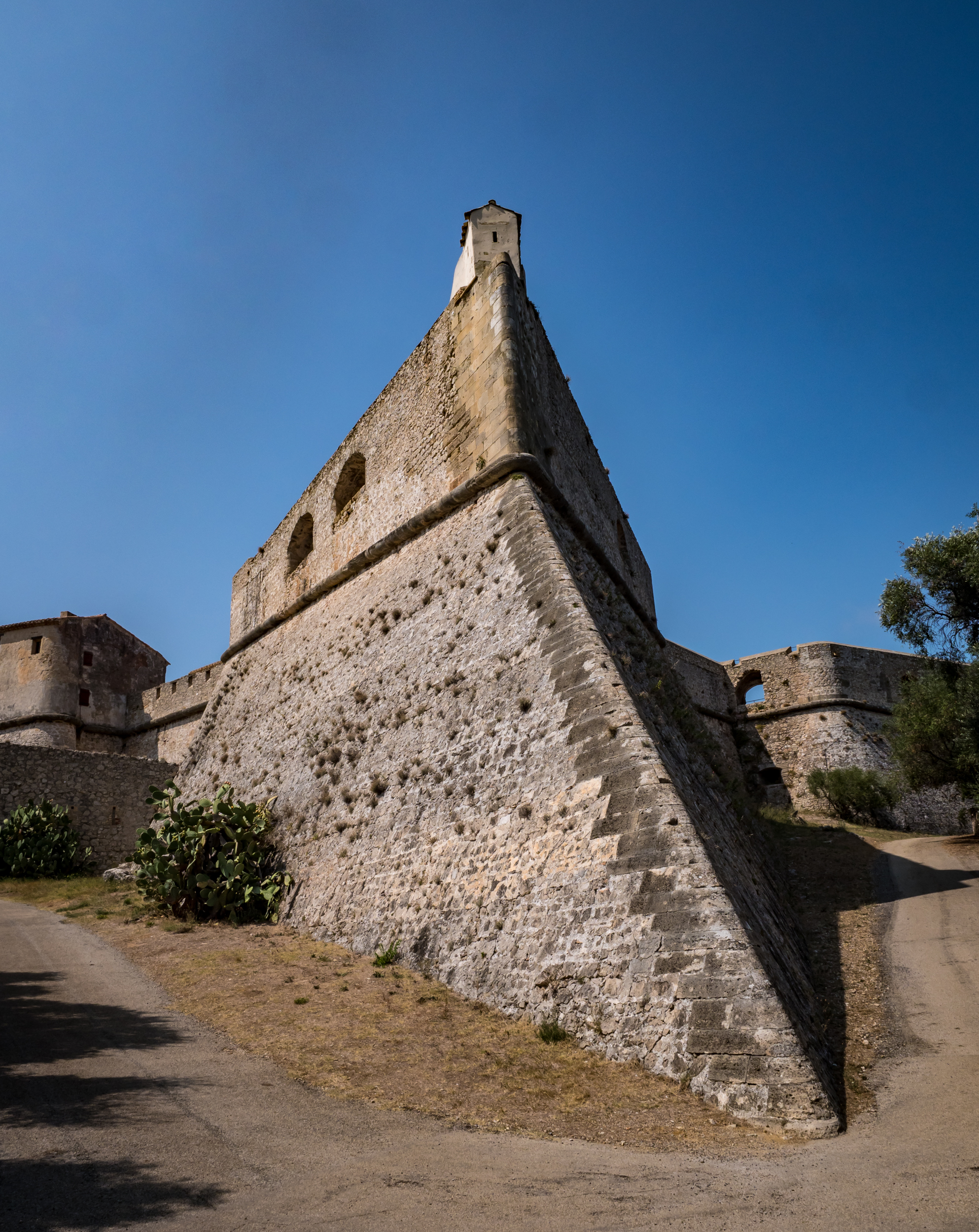
Fort Carre Antibes
With its unique star shape (check it on Google Maps)
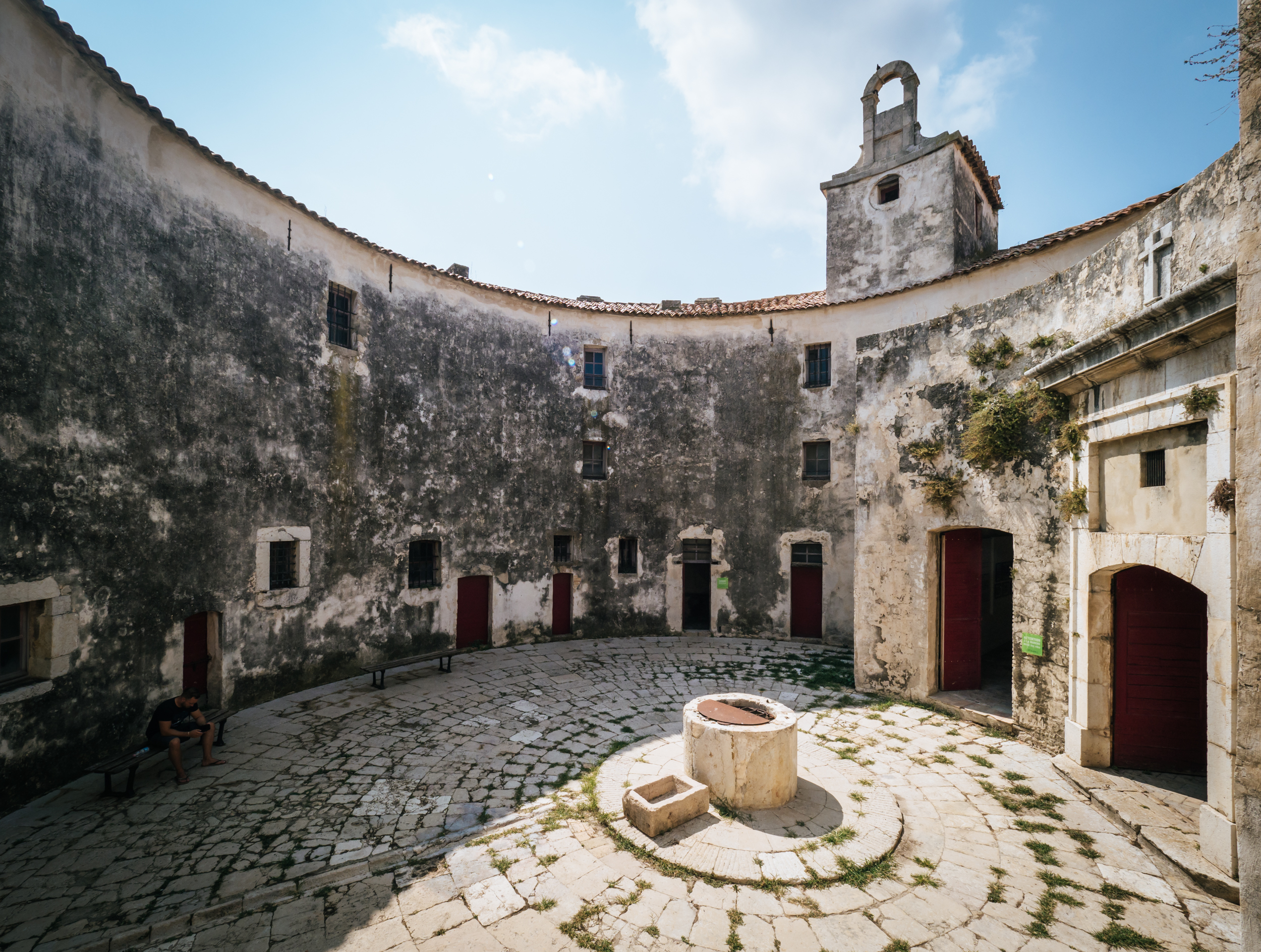
Fort Carre Antibes
While star shaped in the outside, the interior features a round open atrium.
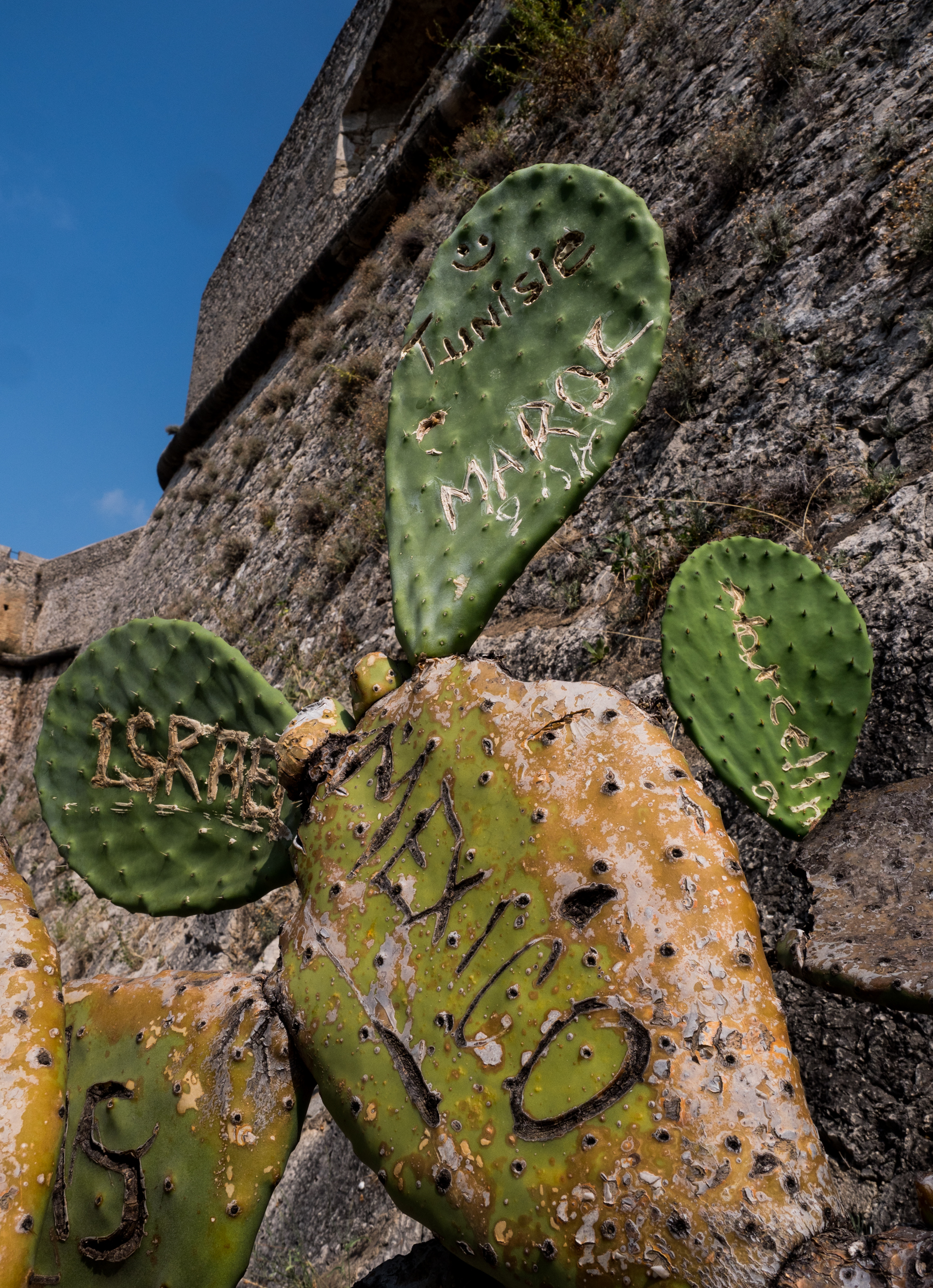
Fort Flora
The Antibes fort sports several large cacti, which tourists used to inscribe their various messages for future visitors.
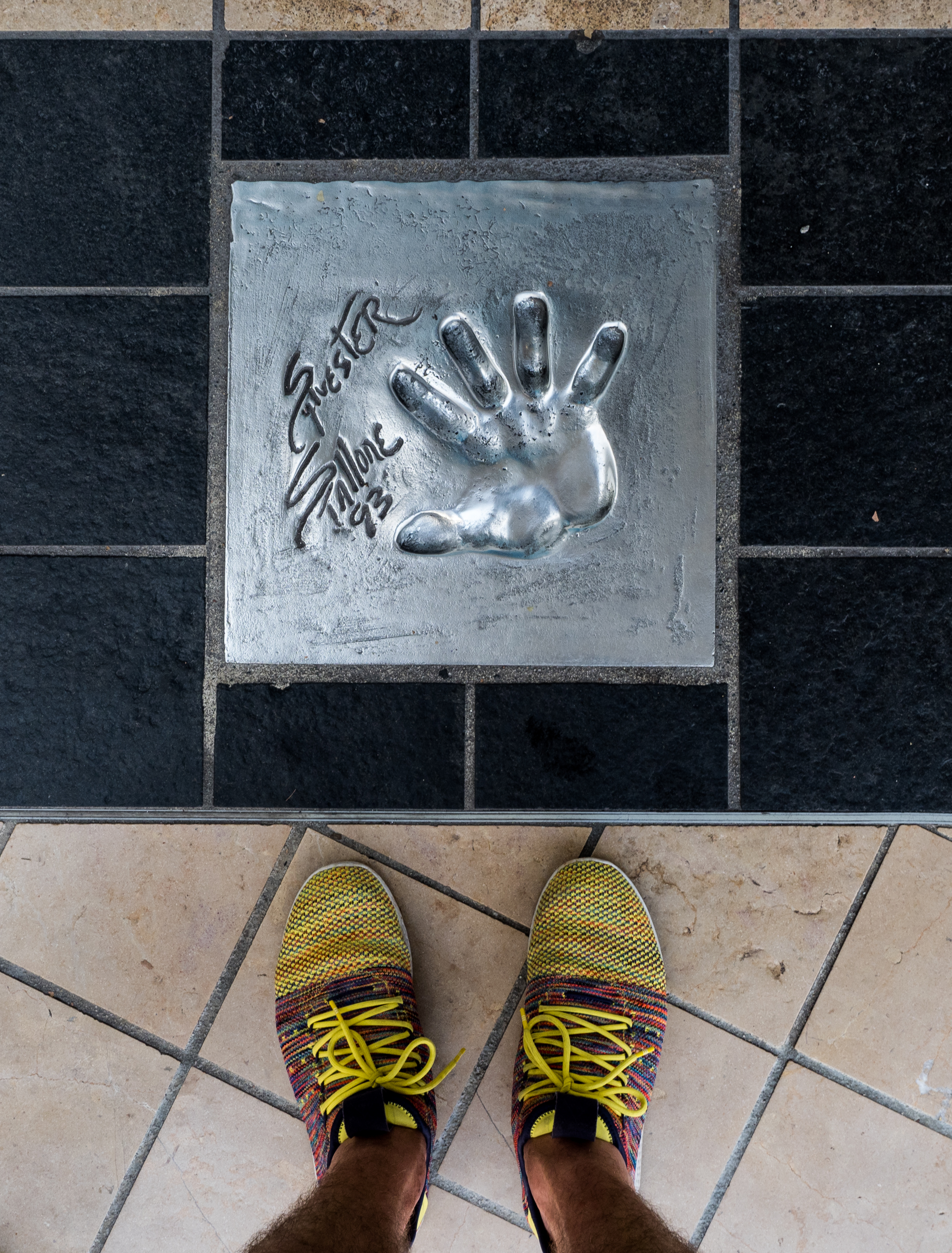
Cannes Hand Prints
The hand prints in Cannes in front of Palais des Festivals on Esplanade Pompidou, where famous film actors and directors leave their mark for posterity.

Cannes Old Town
Walking up the old parts of Cannes towards the Église Notre-Dame d'Espérance.
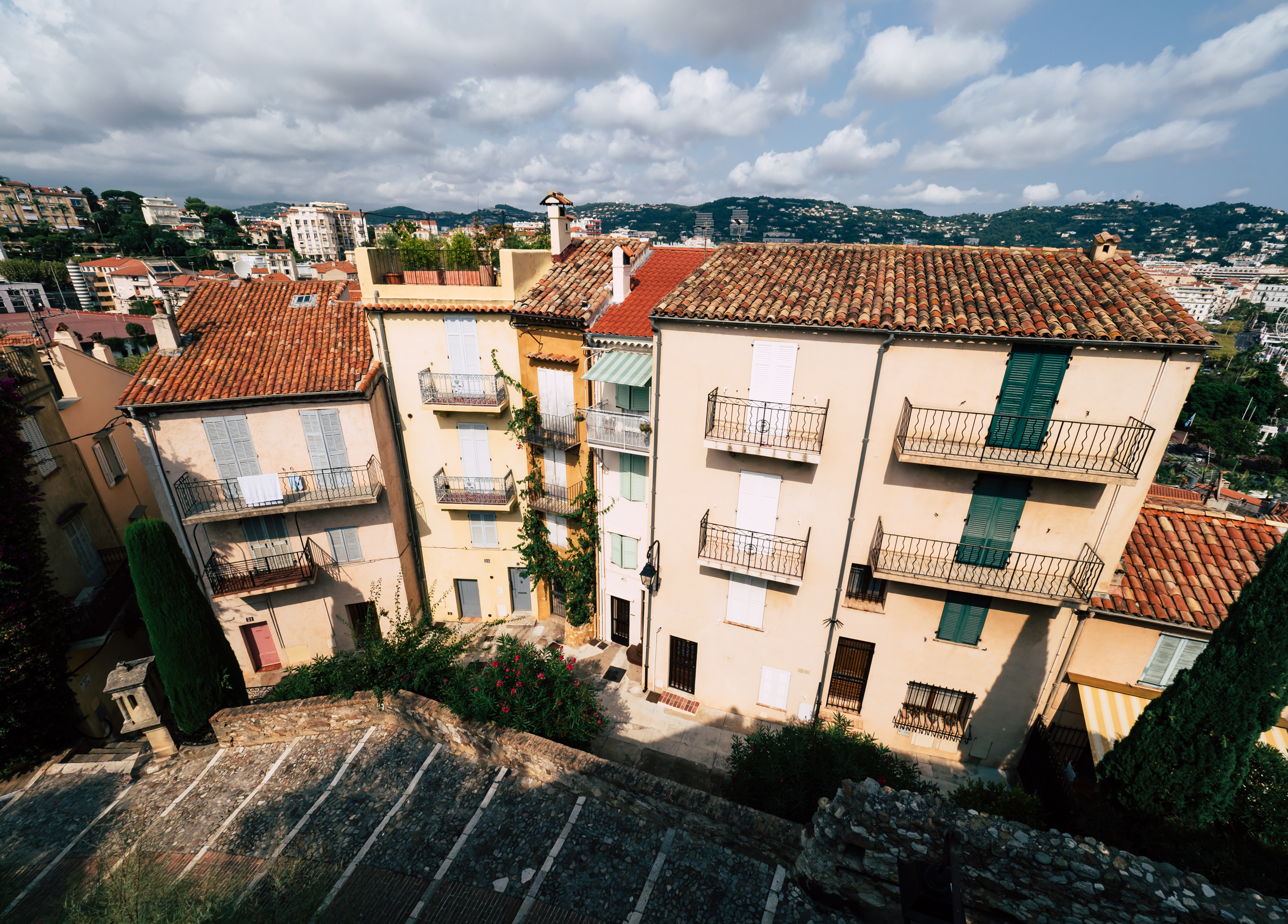
Slim Houses
The view from the top towards some of the horizontally challenged houses.
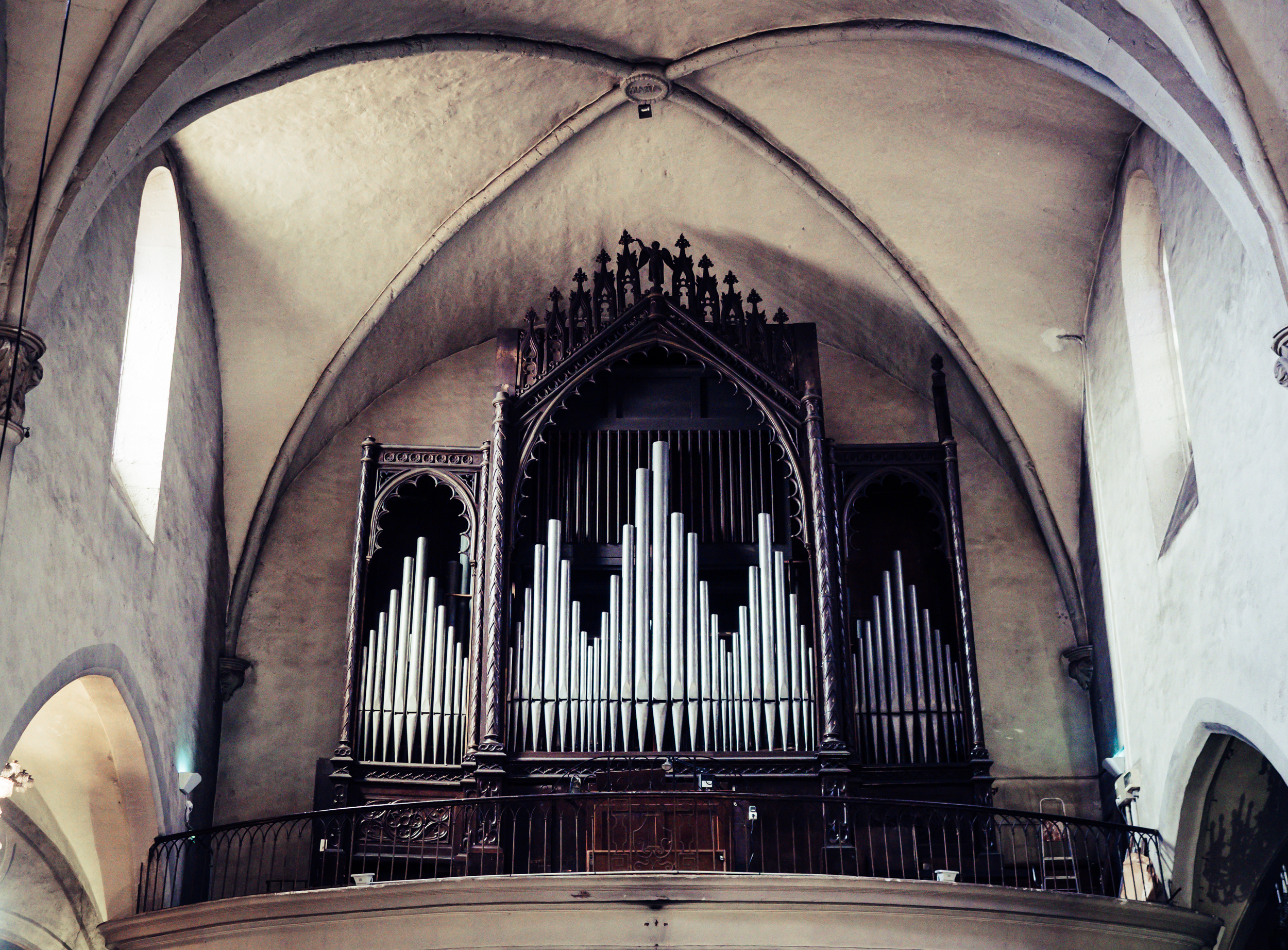
Organ
The pipes of the organs in the Église Notre-Dame d'Espérance.
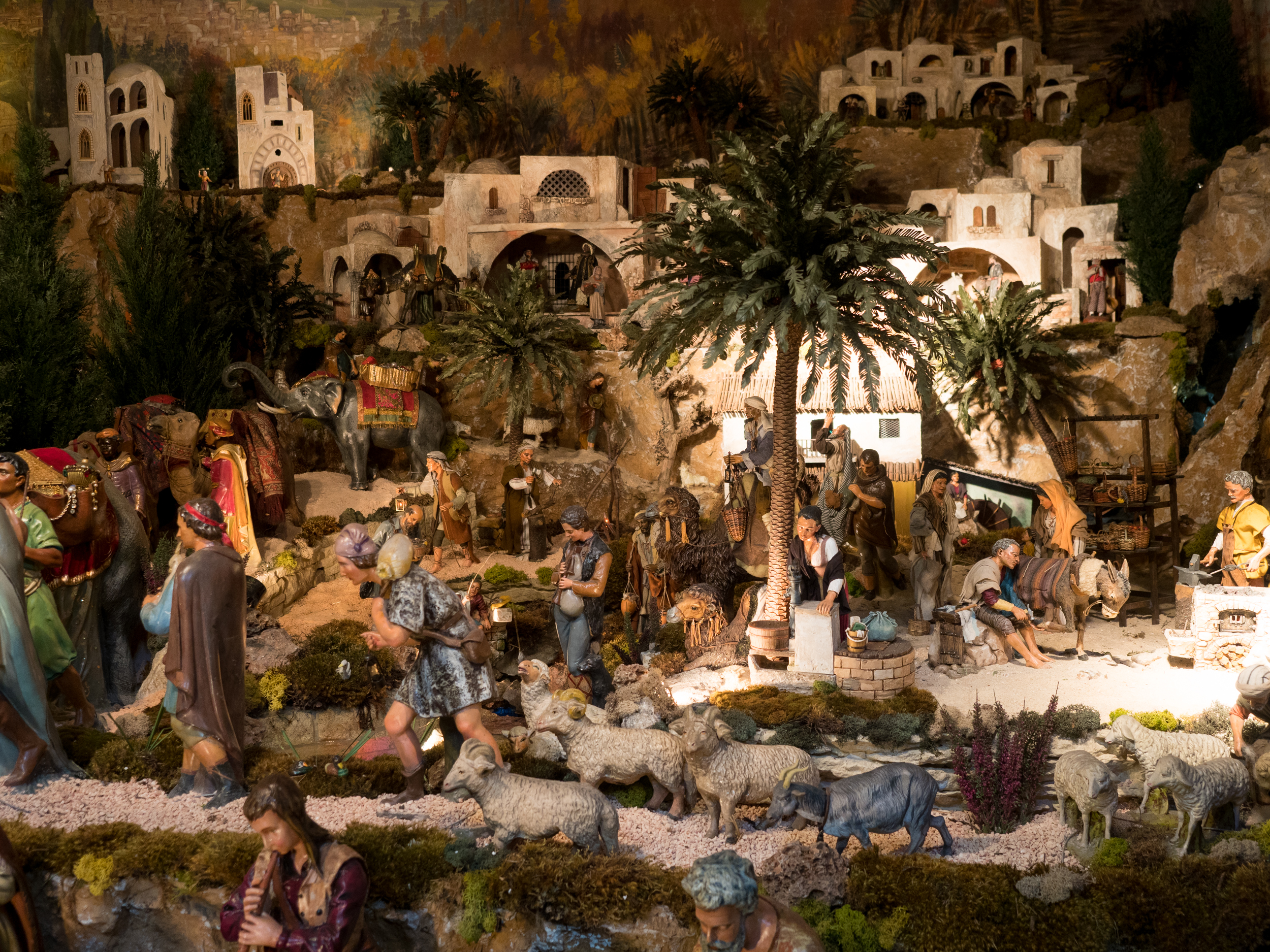
Scenes
The church features this display, including blinking lights and moving figures. Cheesy or not, I'll let you judge.

The Red Carpet
The famous red carpet of the Cannes film festival - everyone wants to bath in the glory.
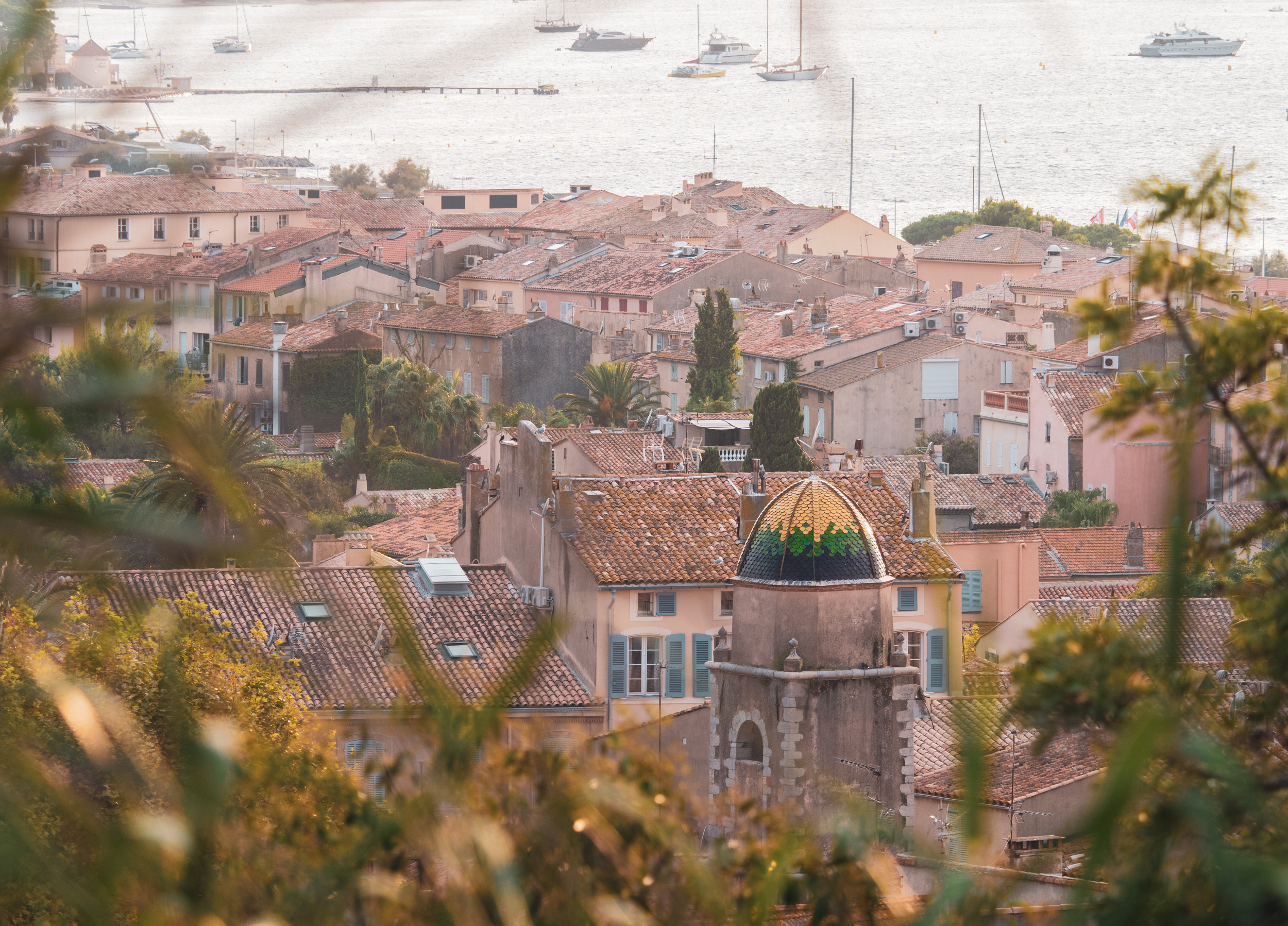
Rooftops
The view from the Citadel in our last destination - St Tropez - shows the colourful roof of the Chapelle de la Miséricorde.
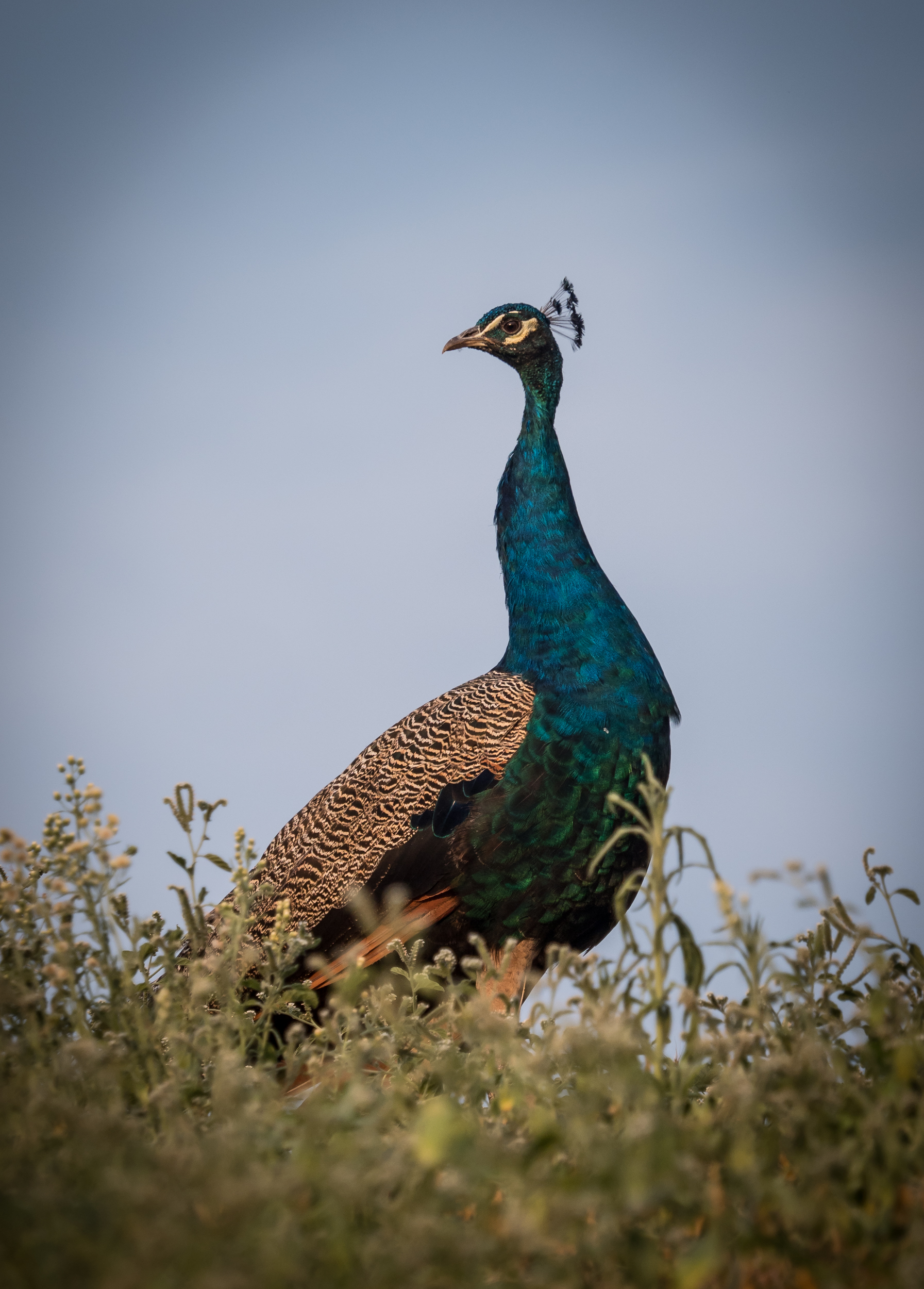
Citadel Occupants
The citadel has a few unexpected habitants, such as these peacocks.
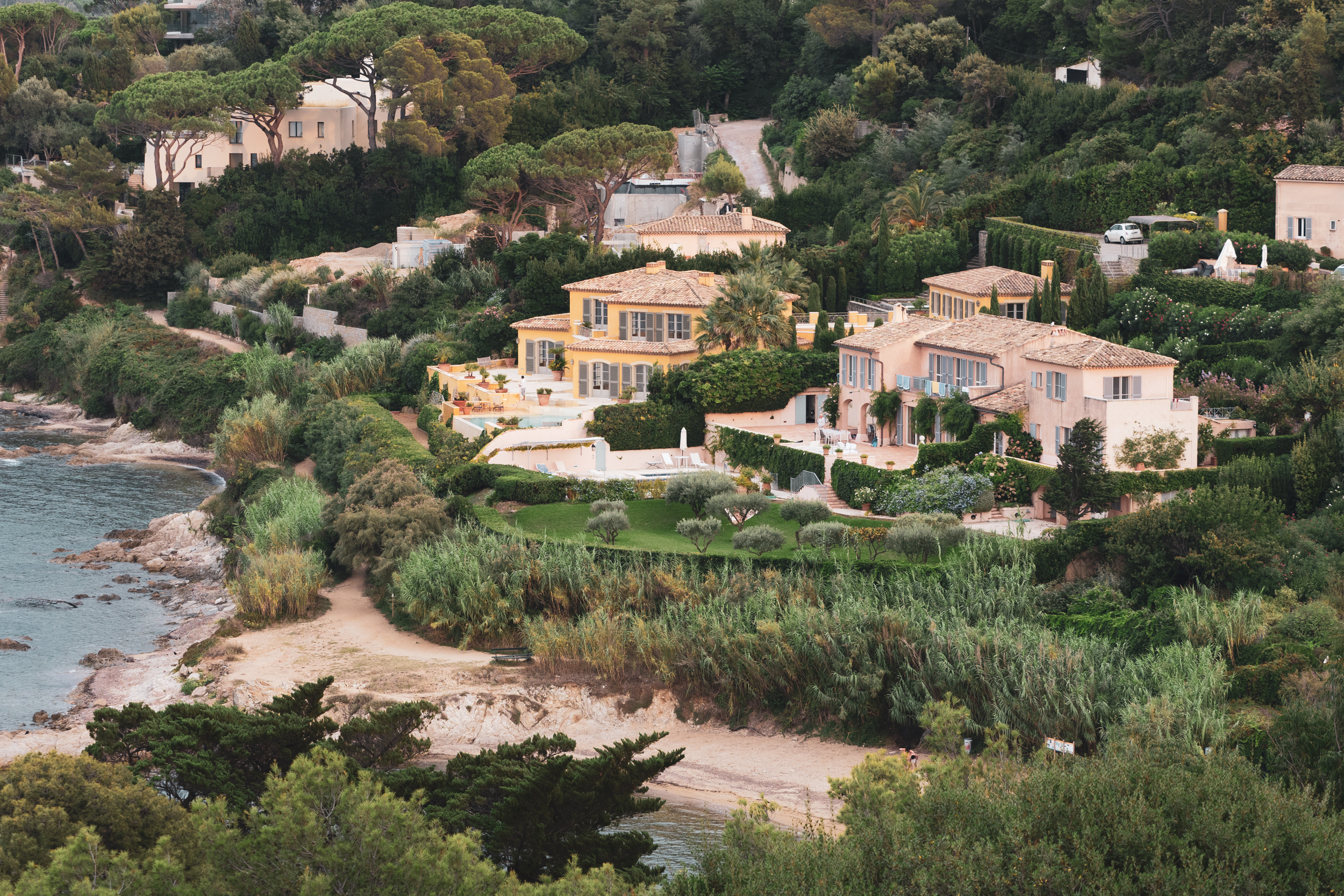
St Tropez Homes
Some of the large villas on the eastern side of the citadel.
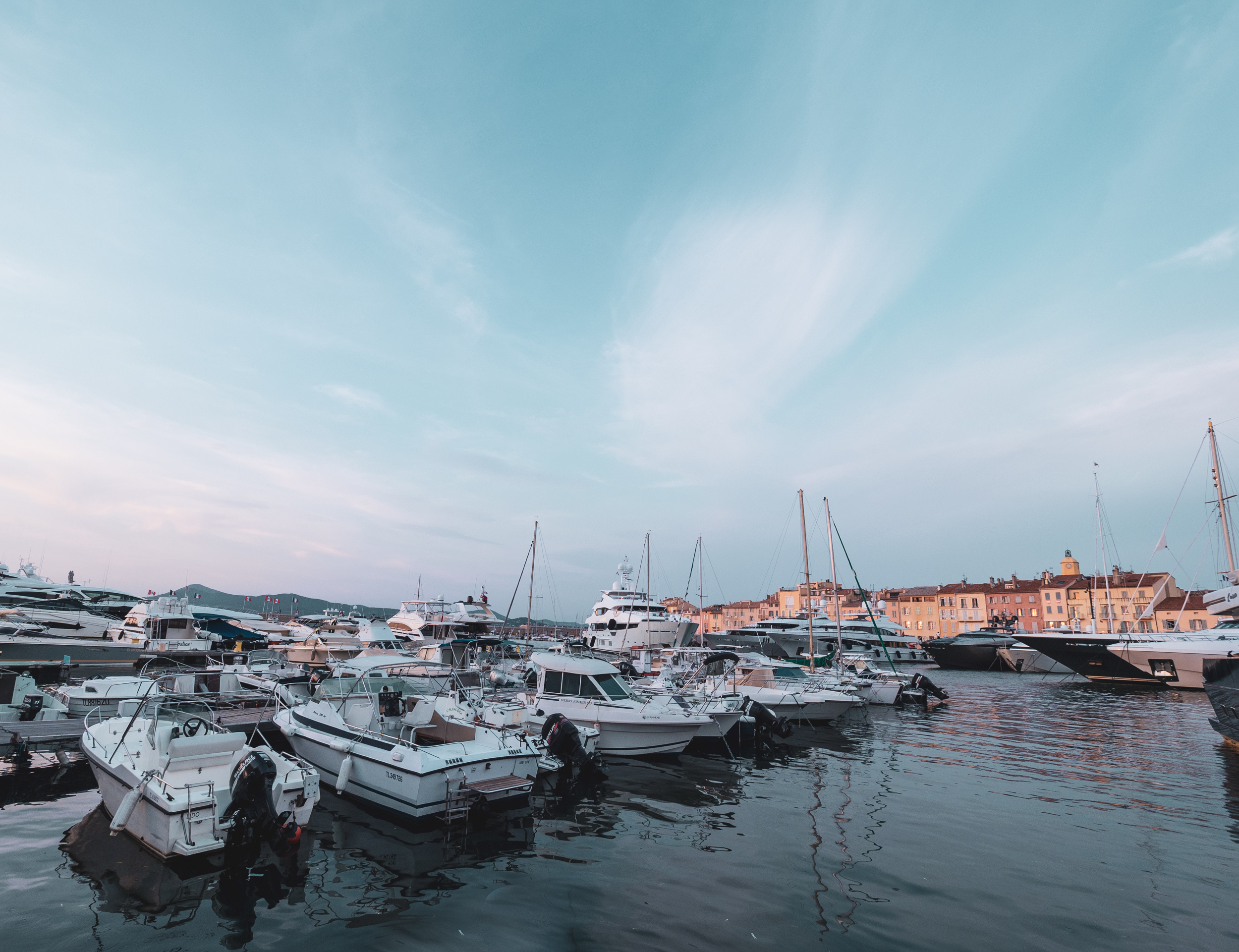
St Tropez Port
The port of St Tropez, with a few large yachts in the background.
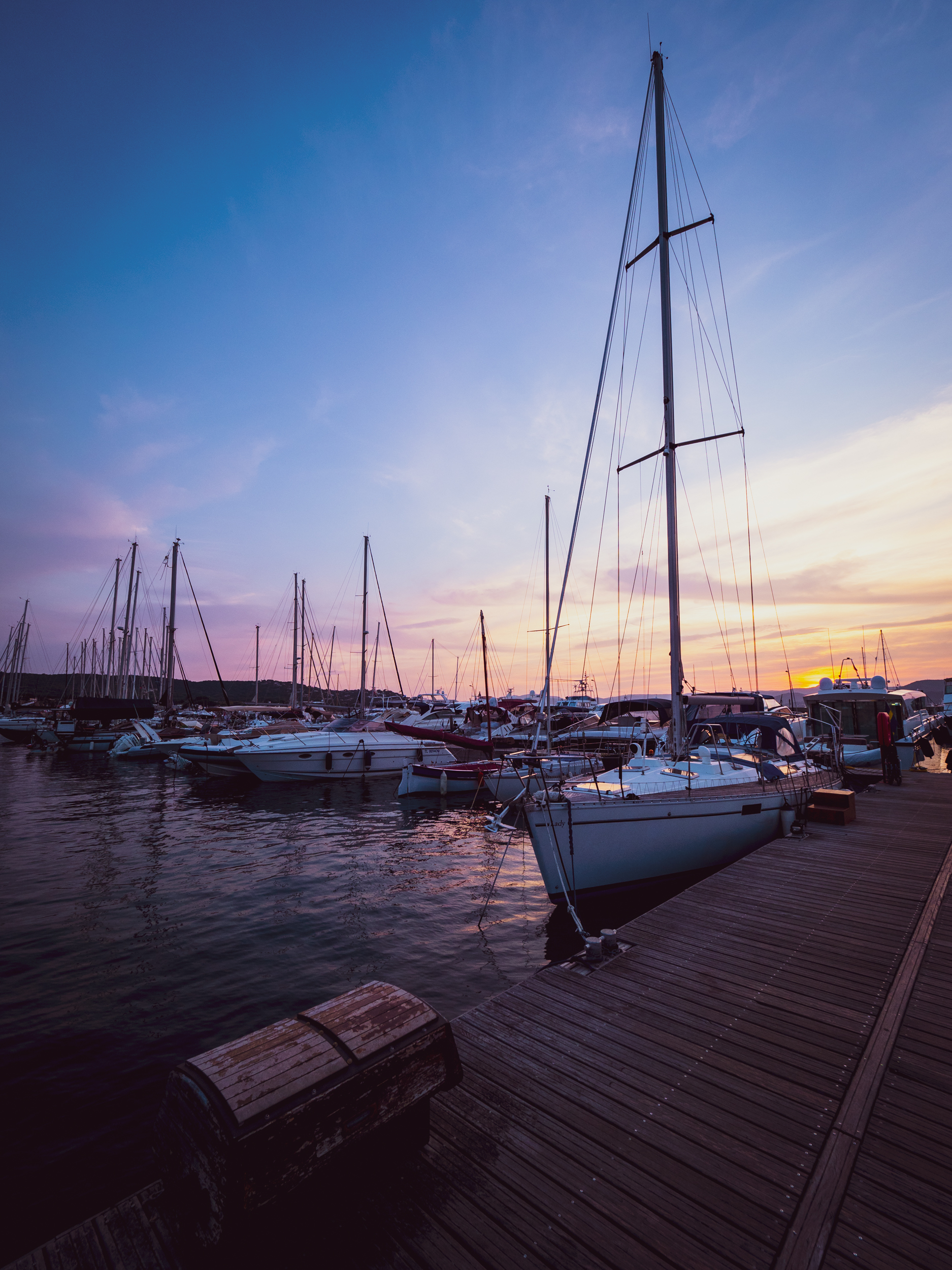
Sunset
Another view of the port, this time the northerly side with smaller sailing boats.

Sports in the Park
It seems a local sports club uses a sandy park in the city as their practice ground for this Bocce type sport - what's it called?

St Tropez Alleys
The alleys were not particularly busy anymore, the touristy season is coming to an end in late August.
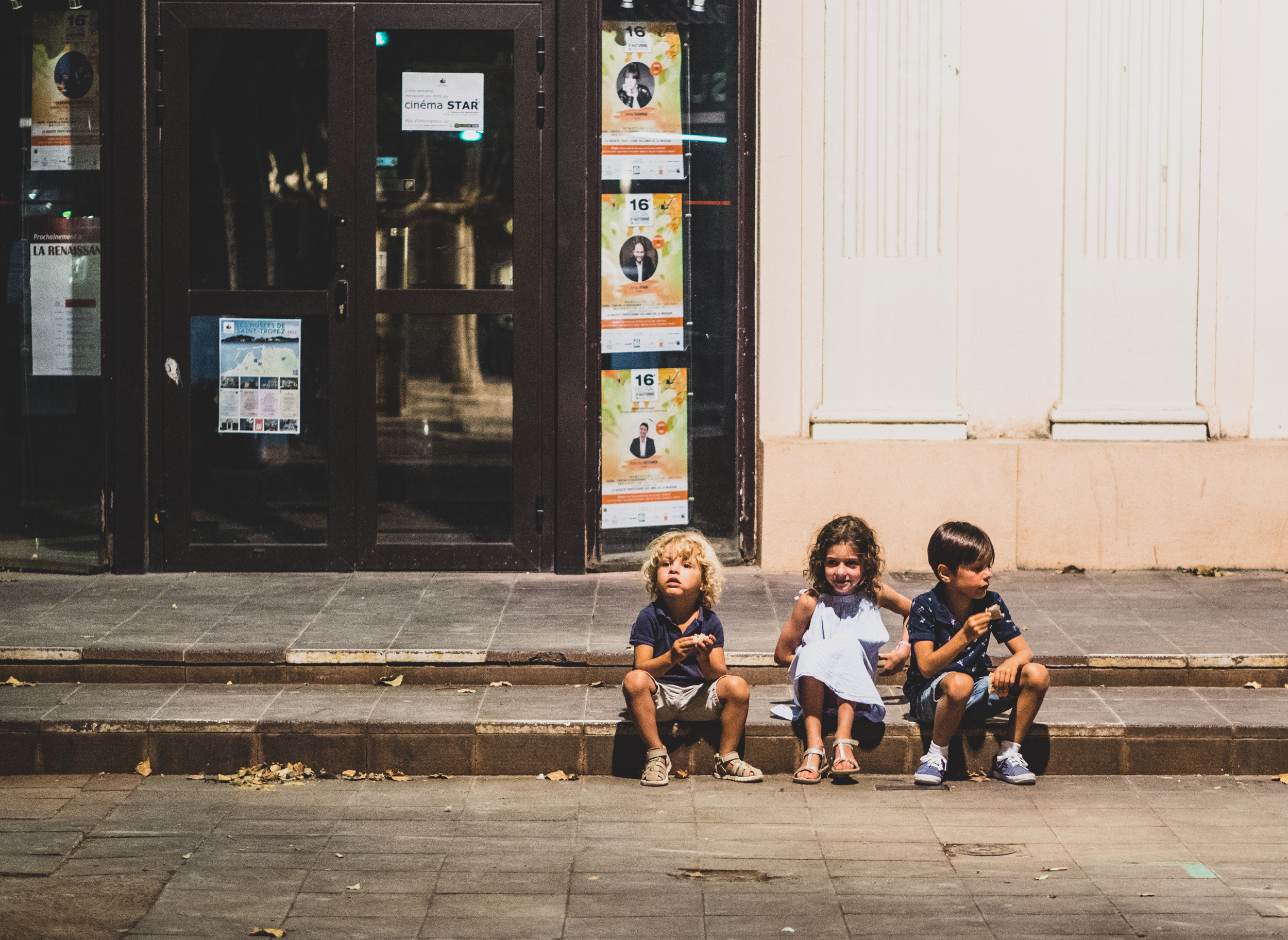
The Local Gang
Ruling the town.
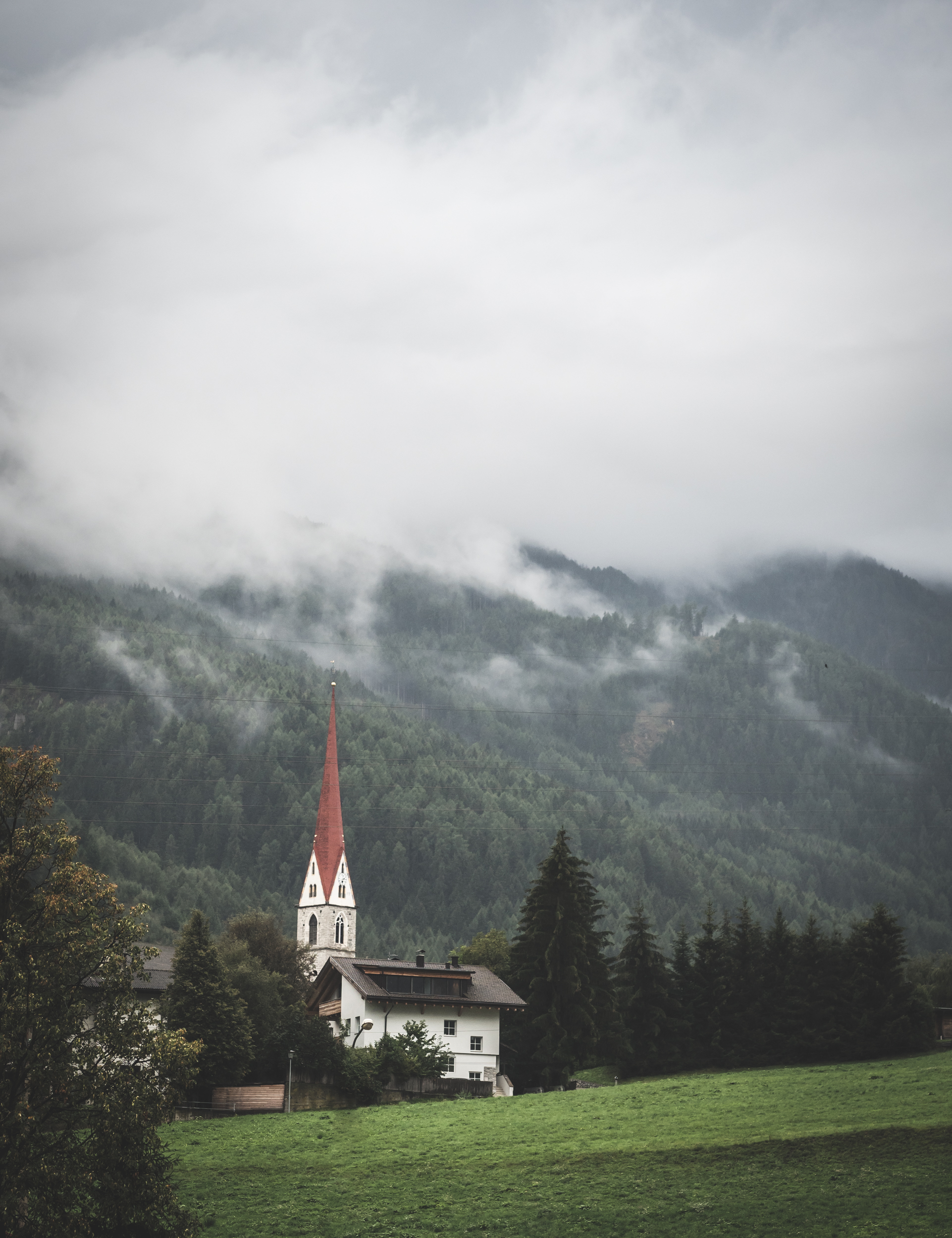
In the Clouds
A church near the Brennerpass over the Alps into Austria on our way back.

Roadtrip
Over 2000km later, we were not in the best state of mind anymore.



